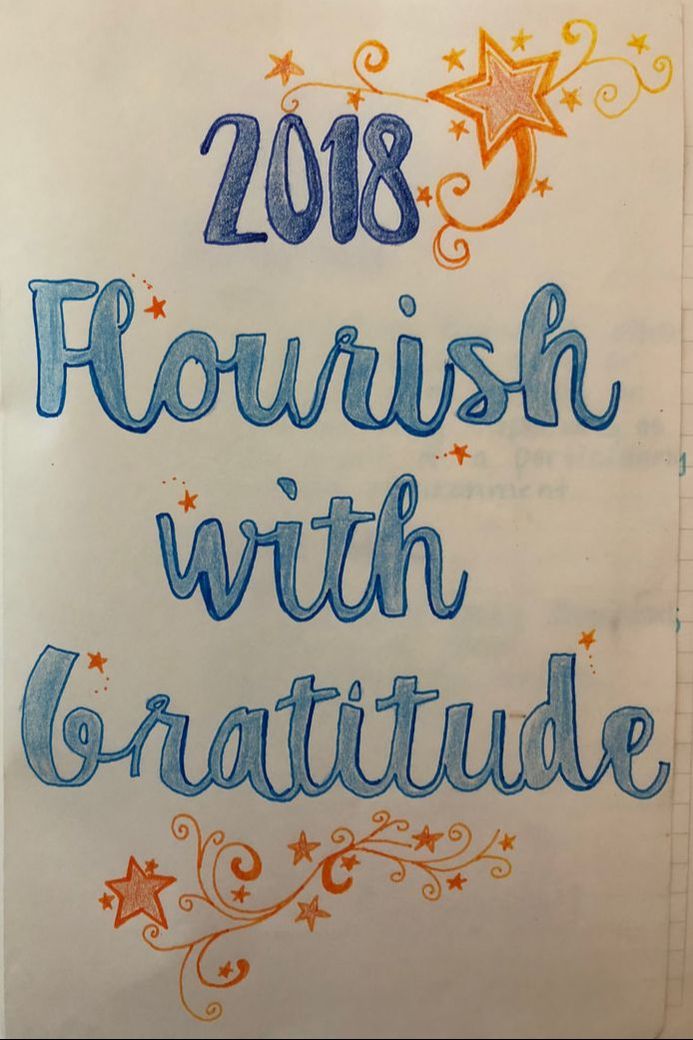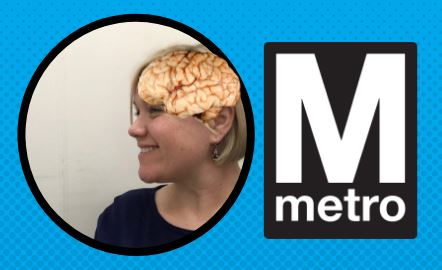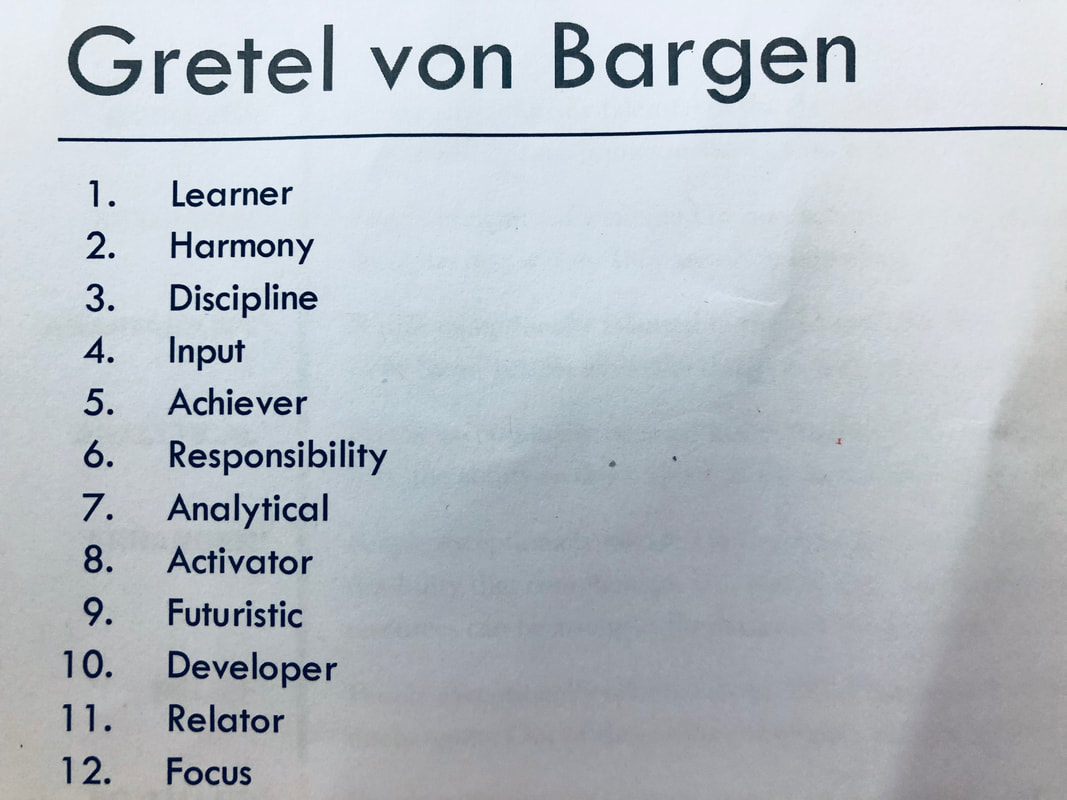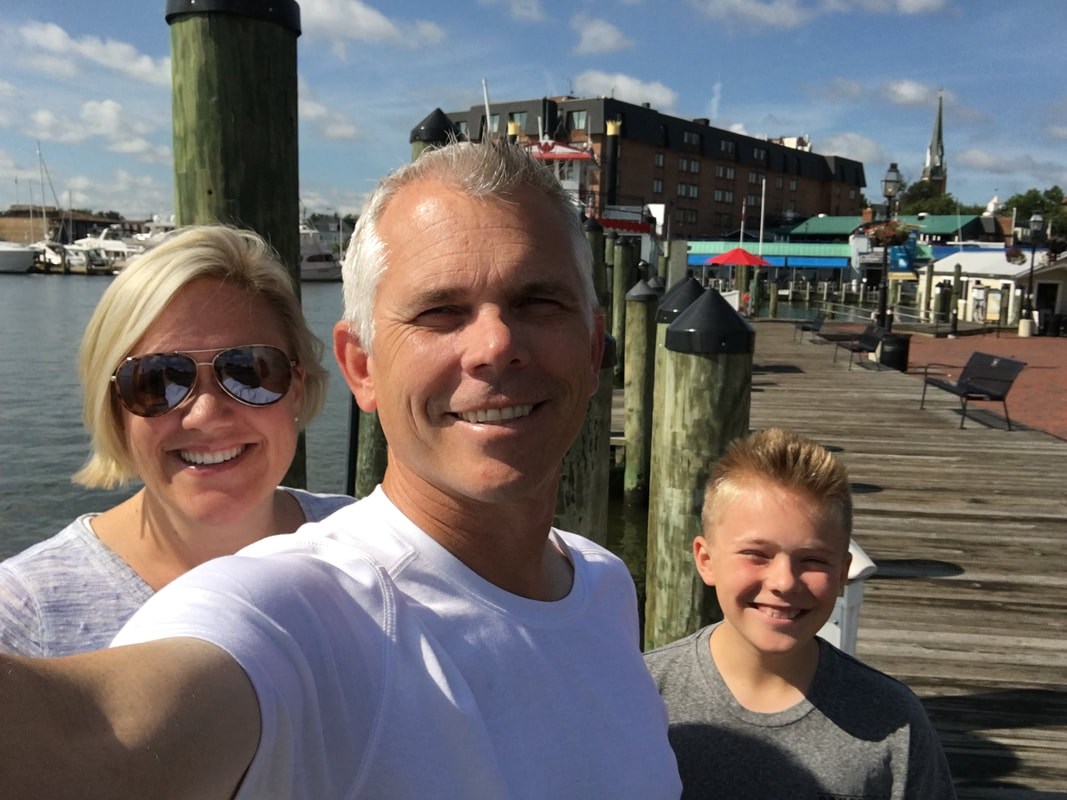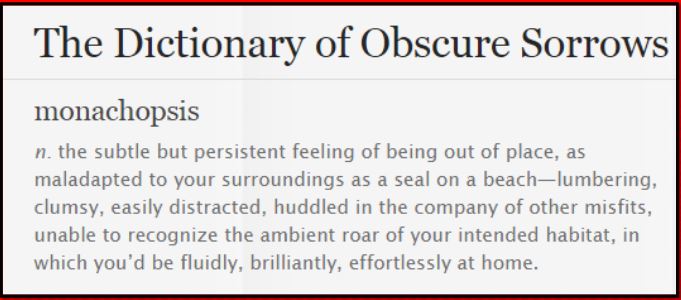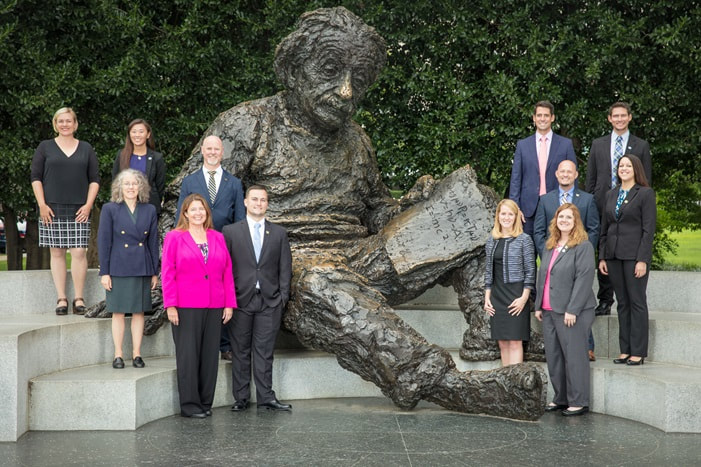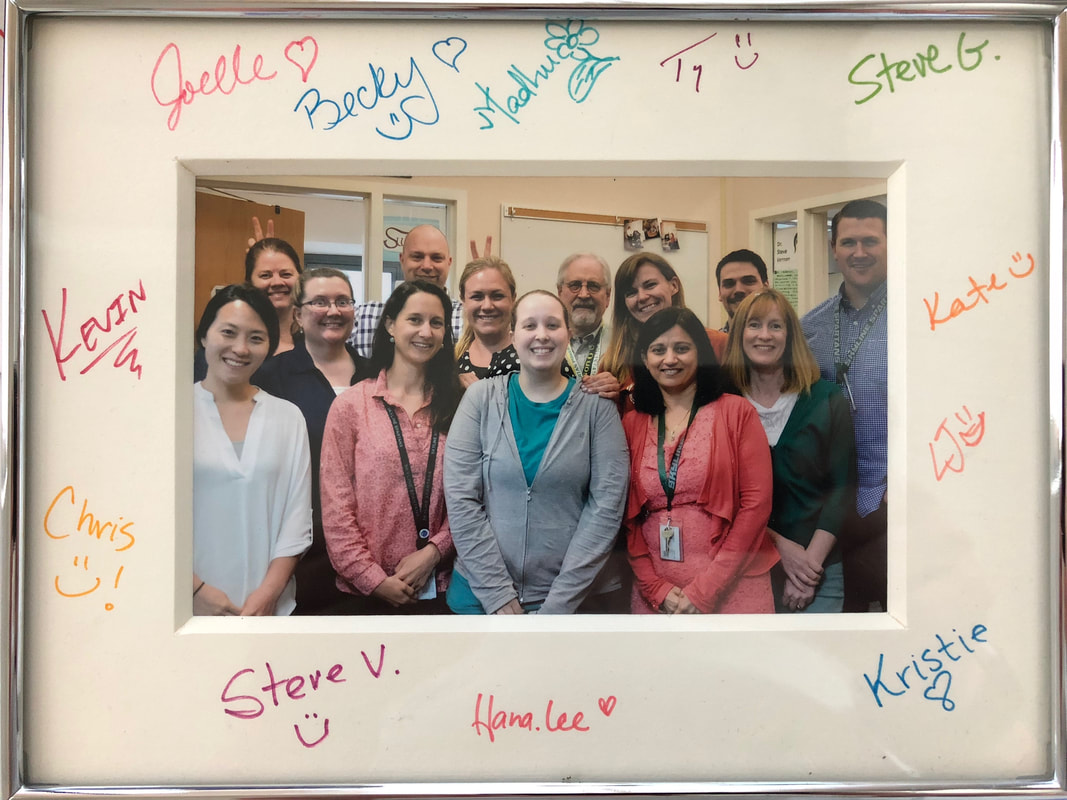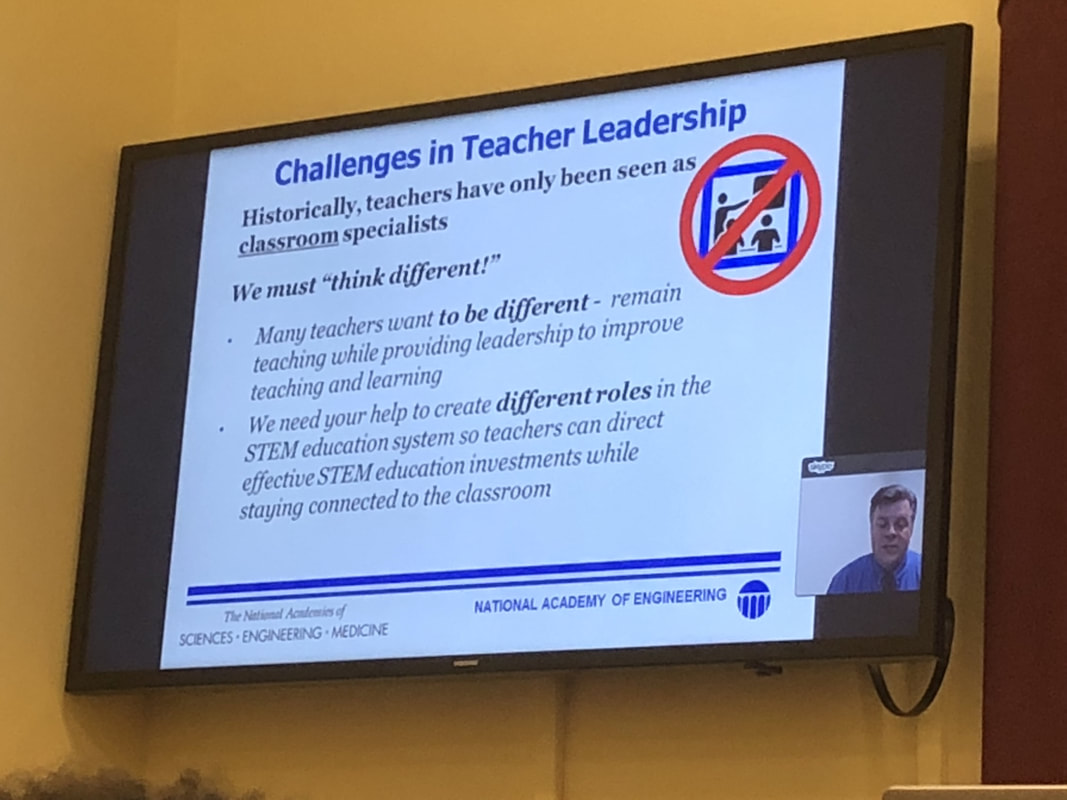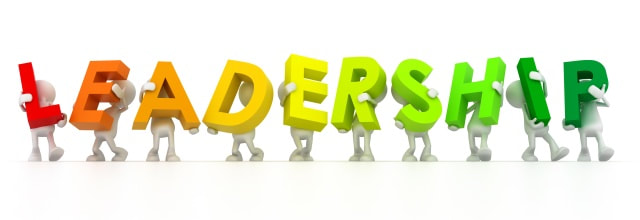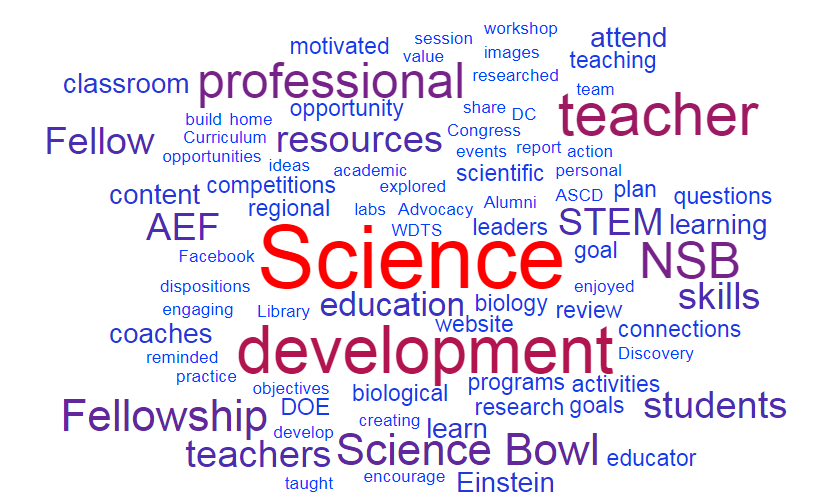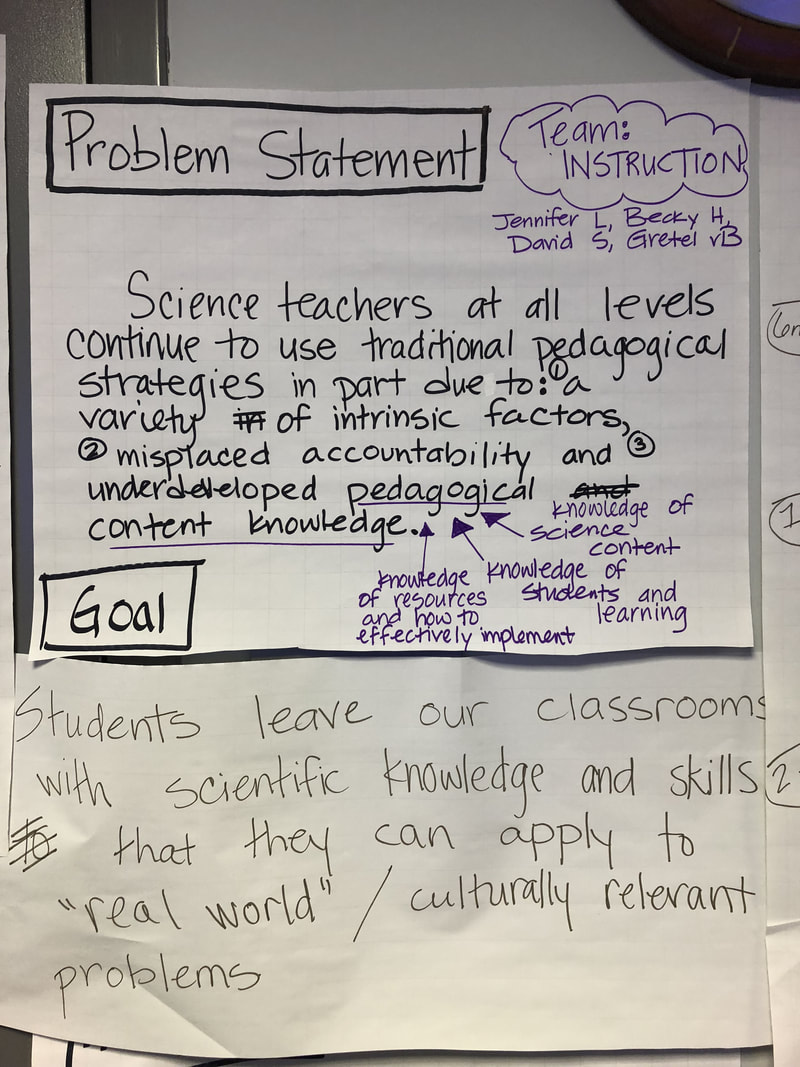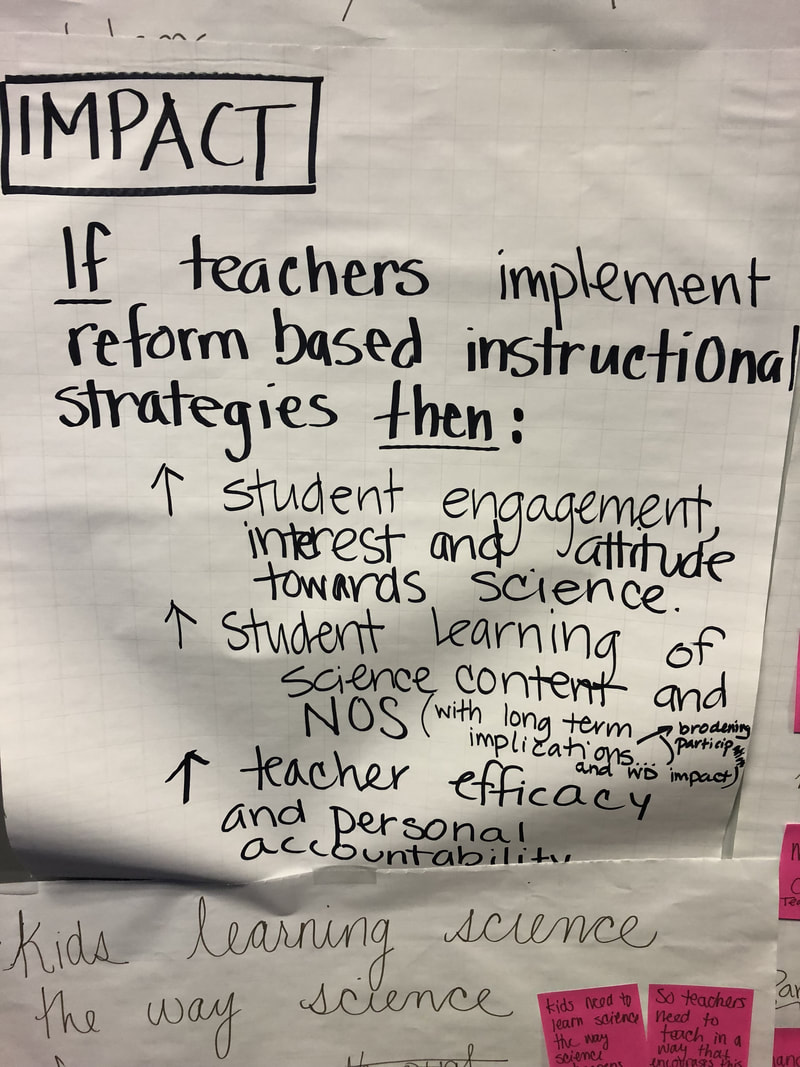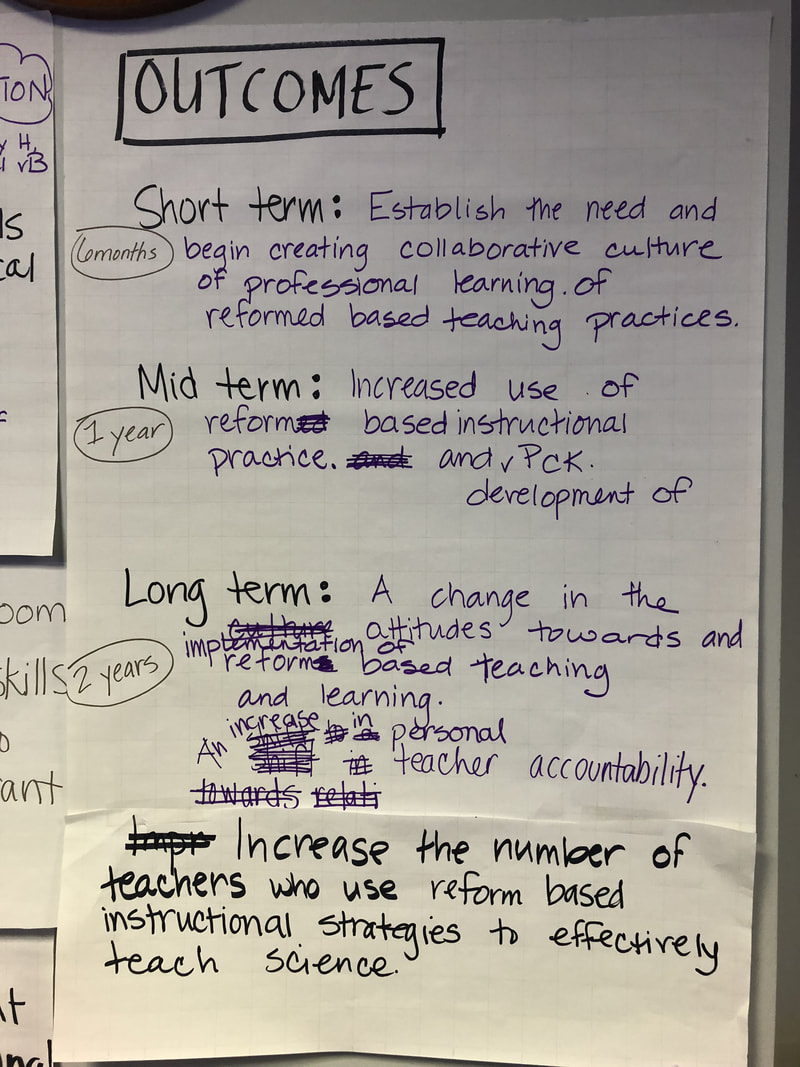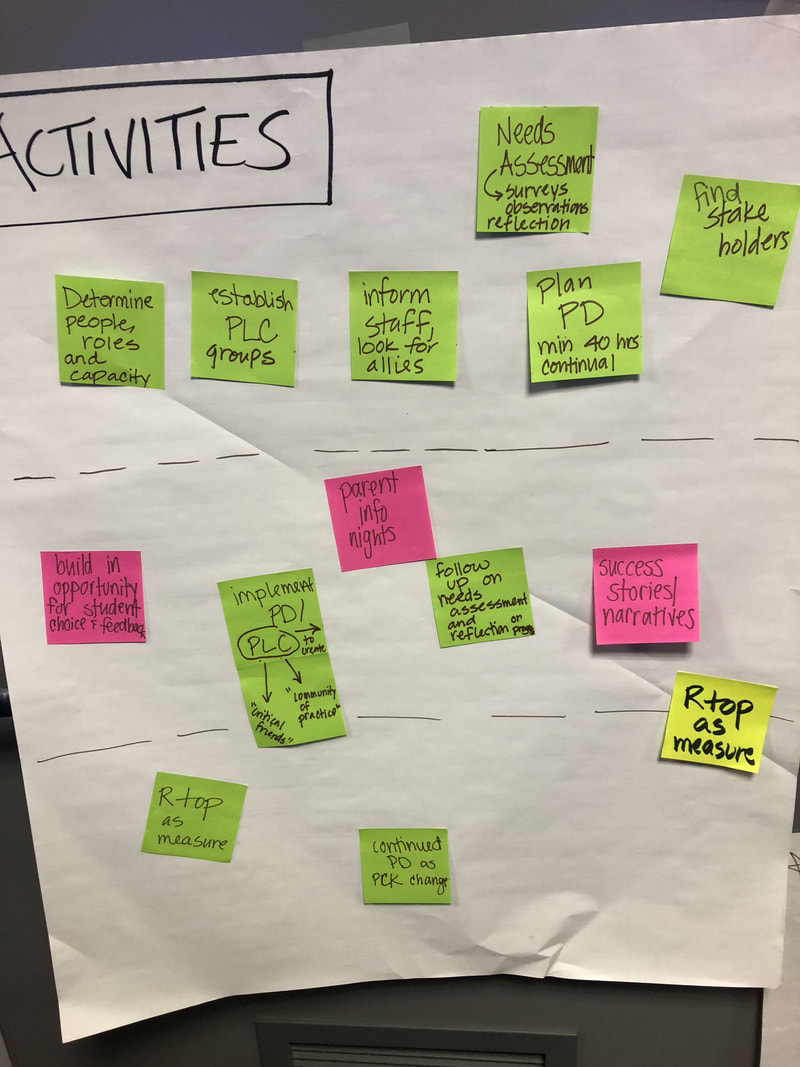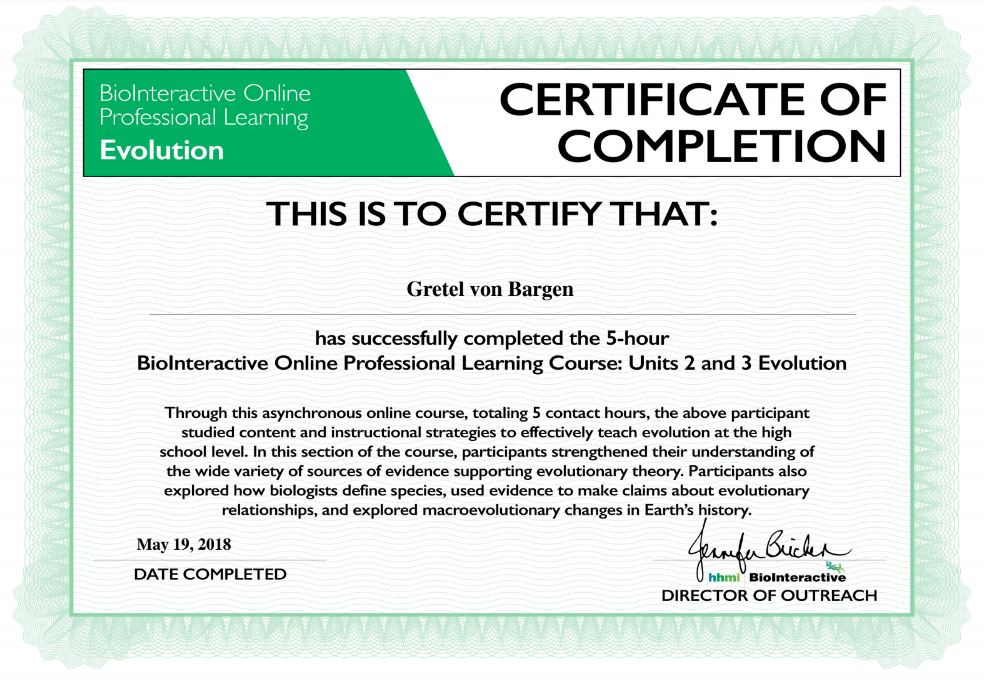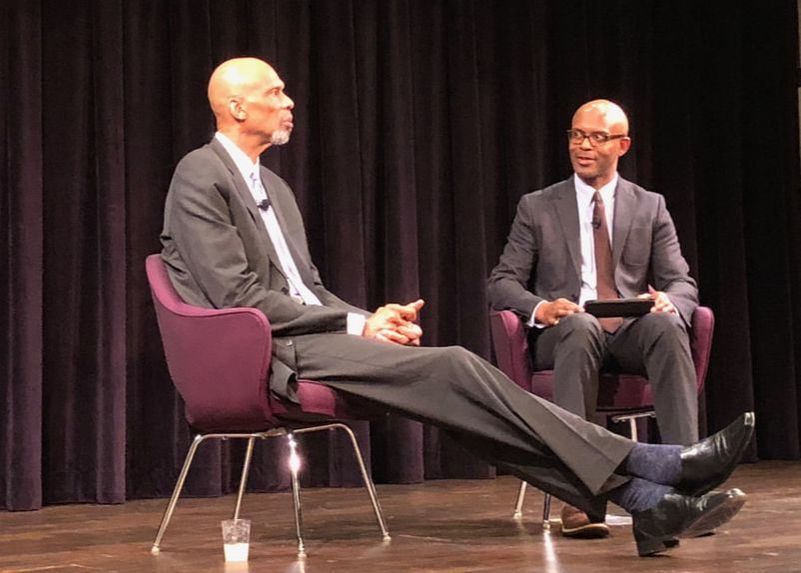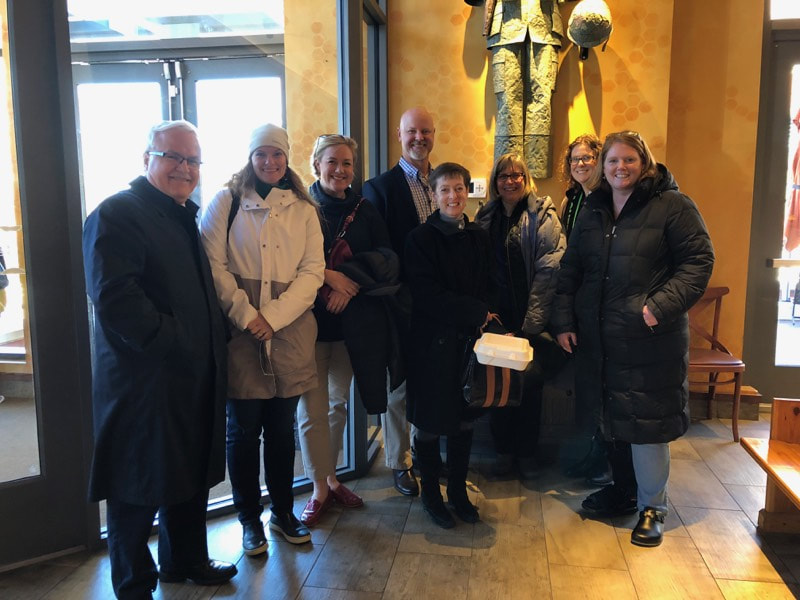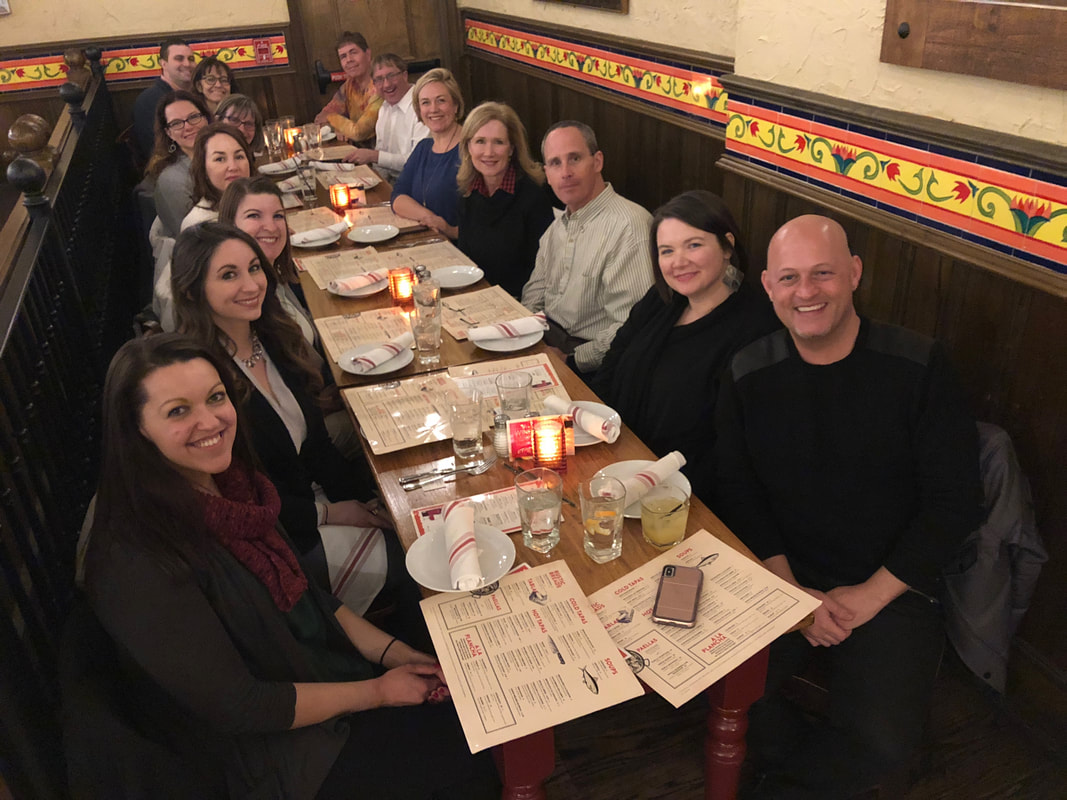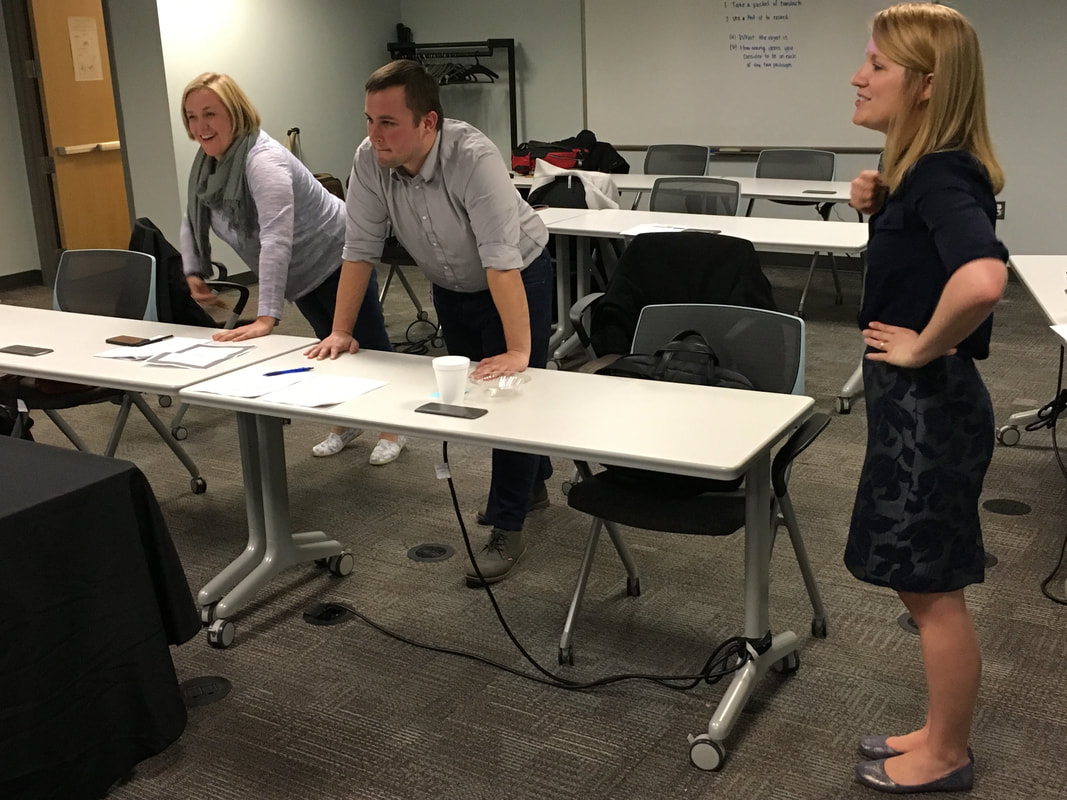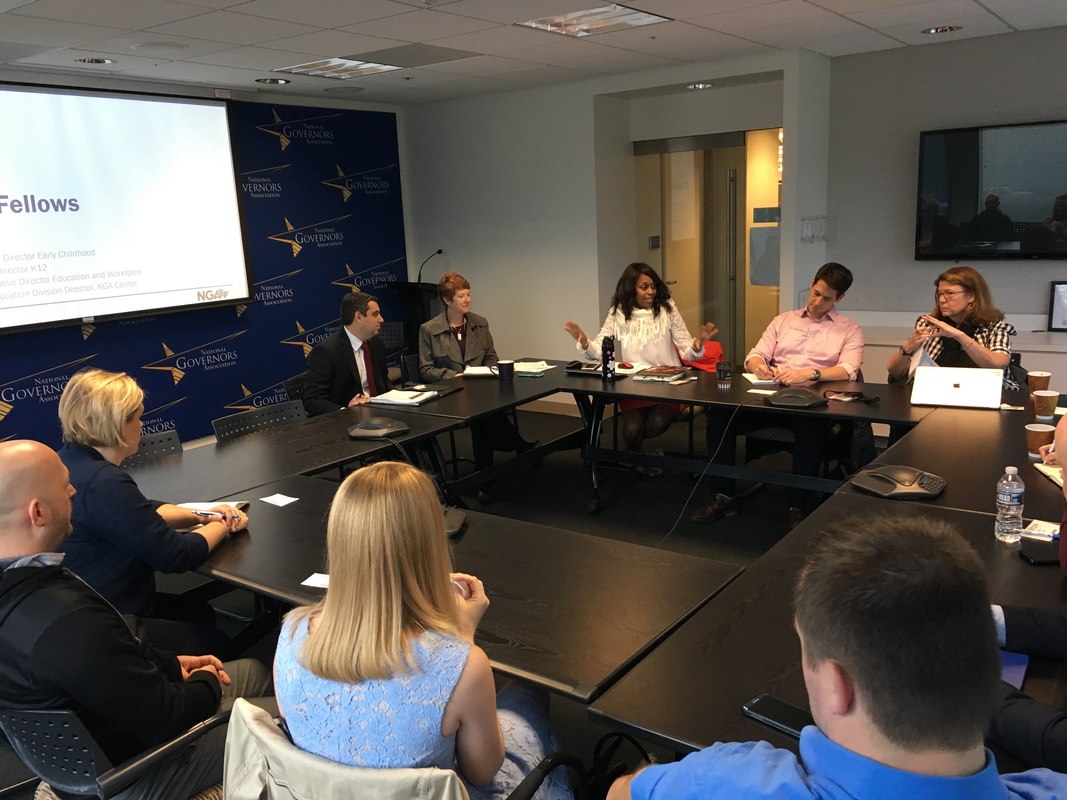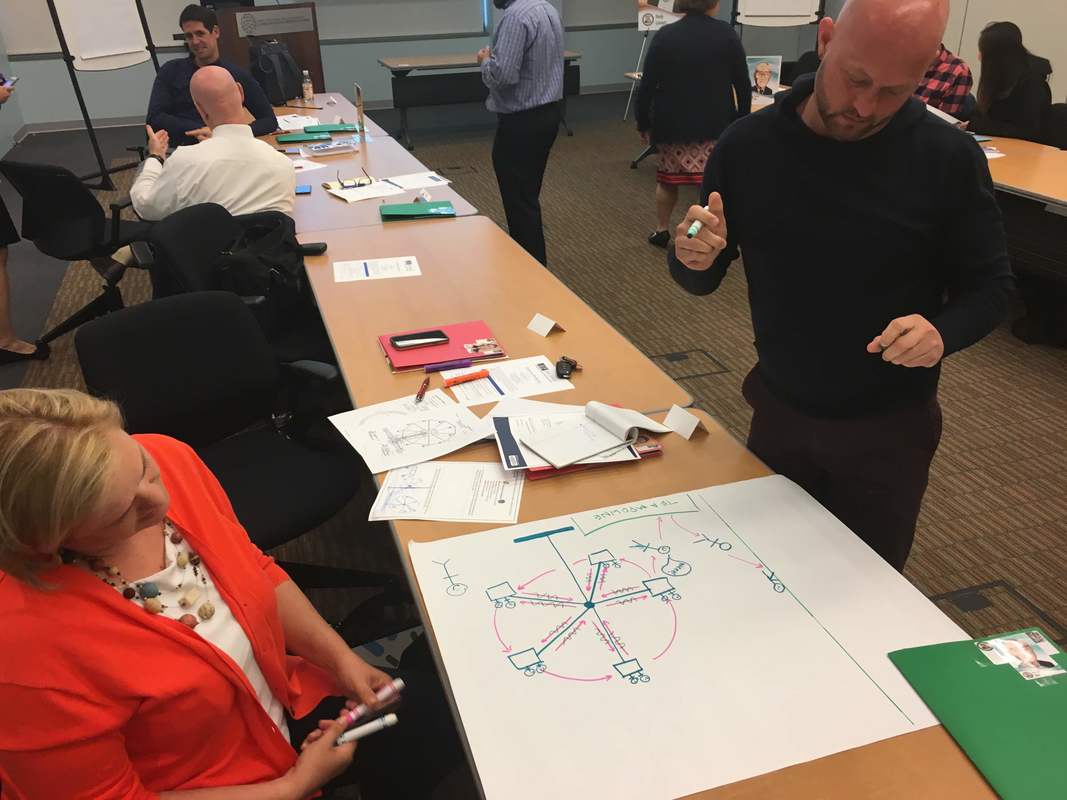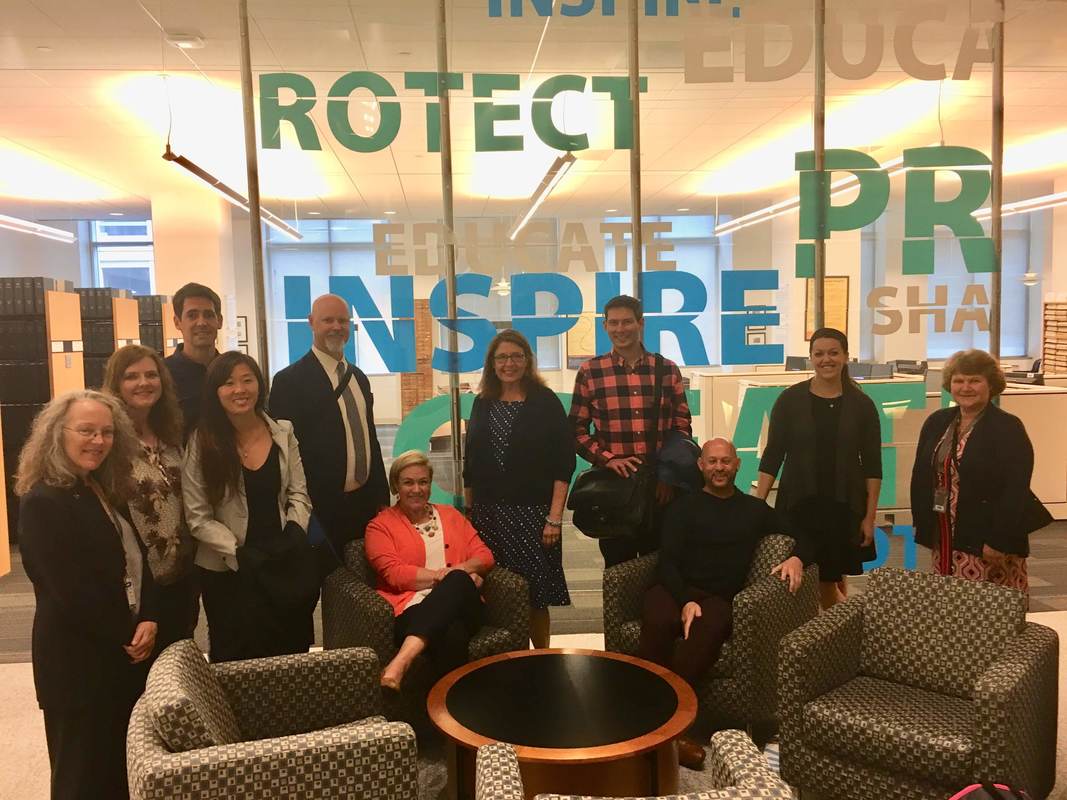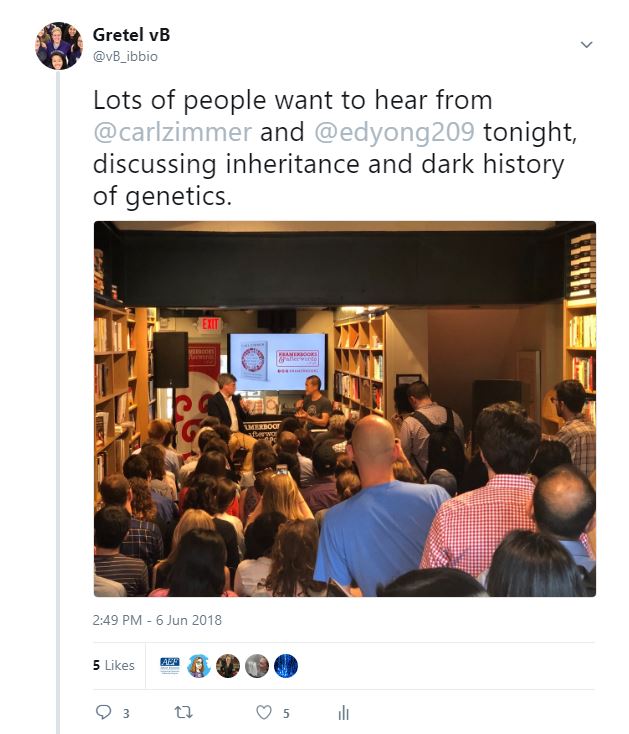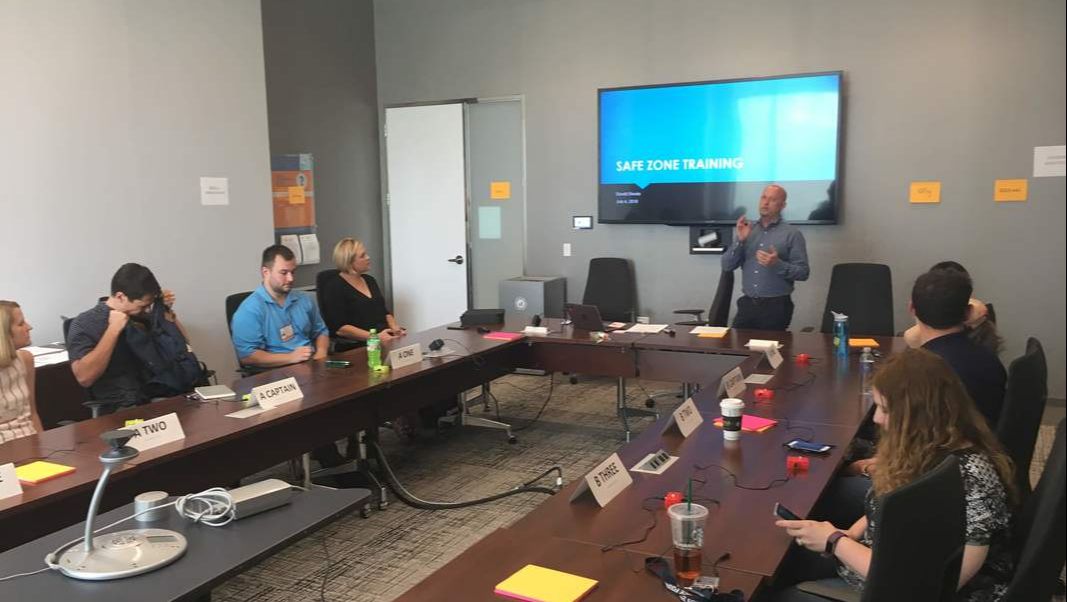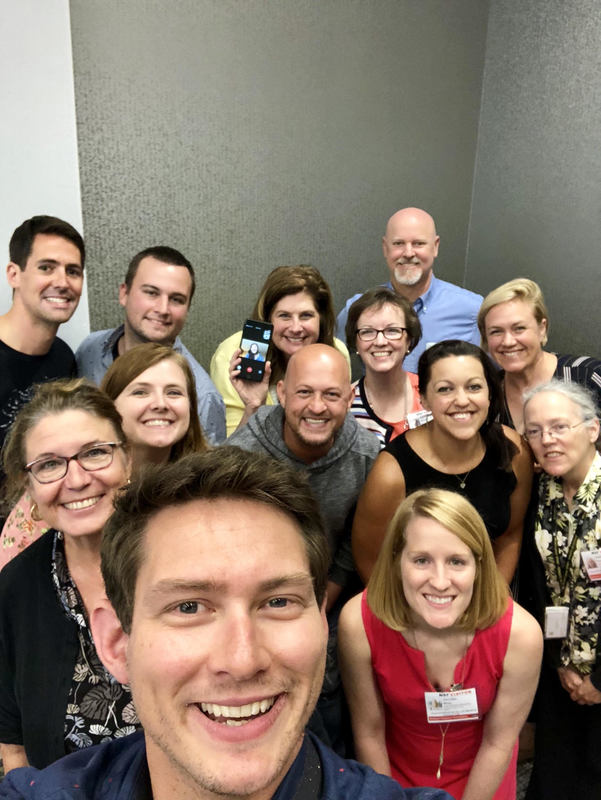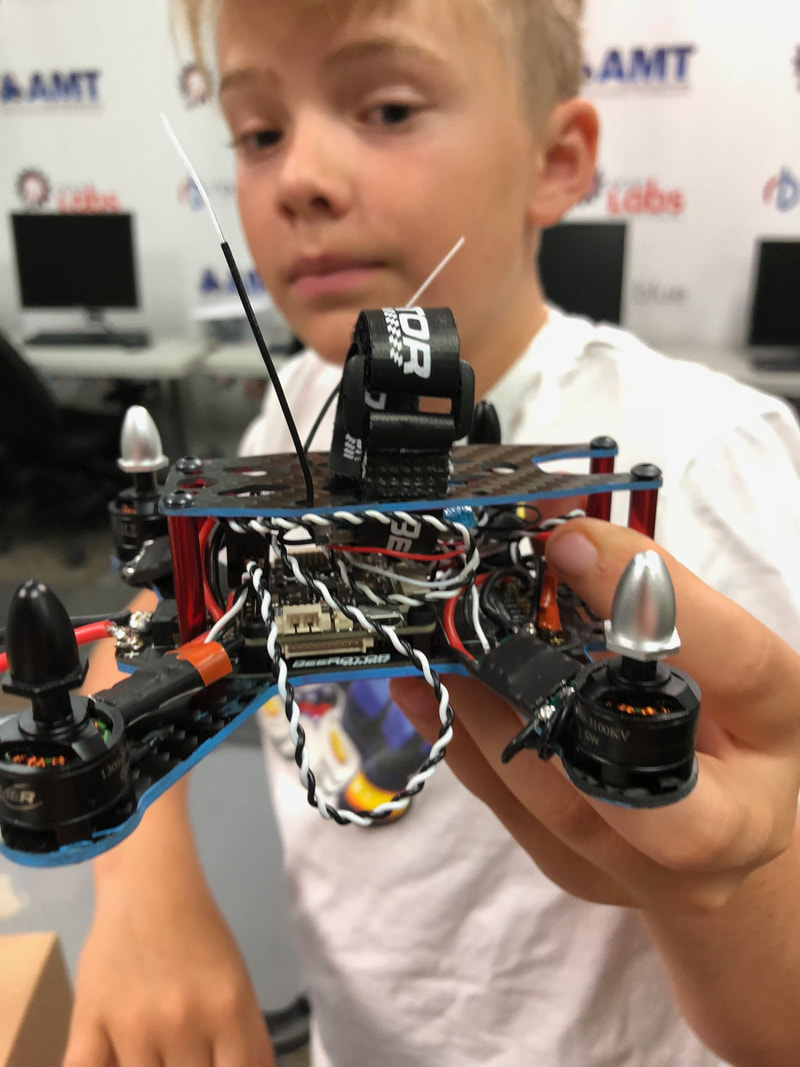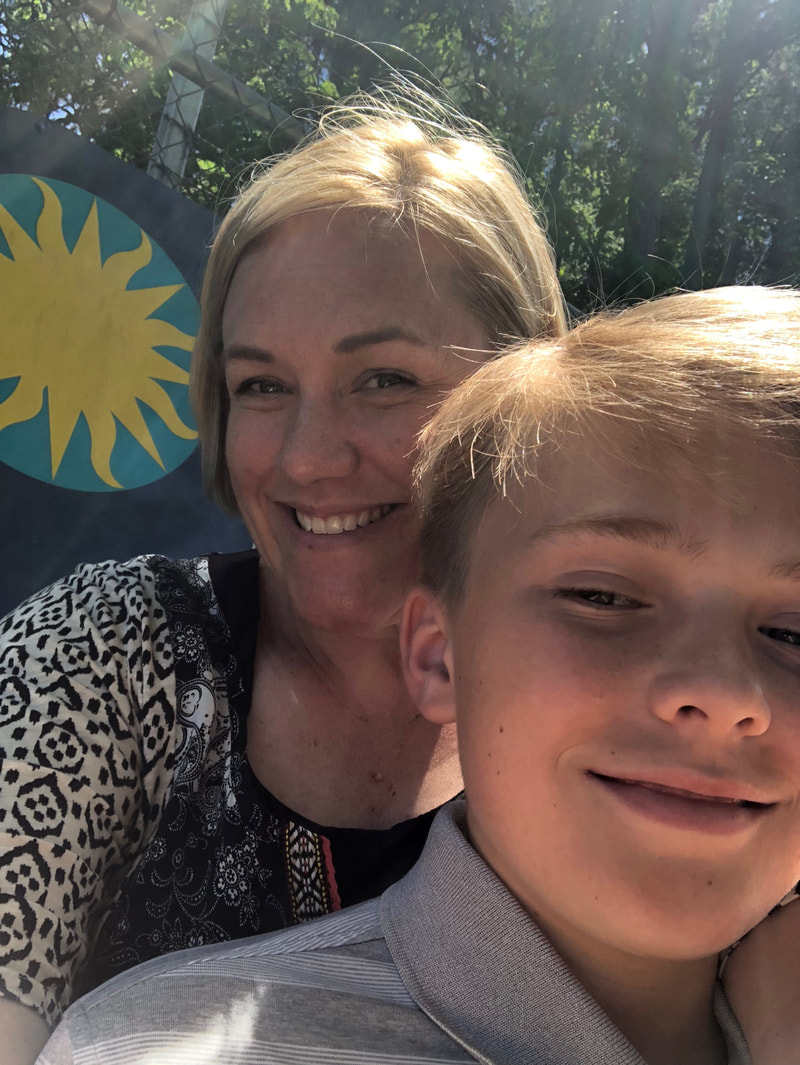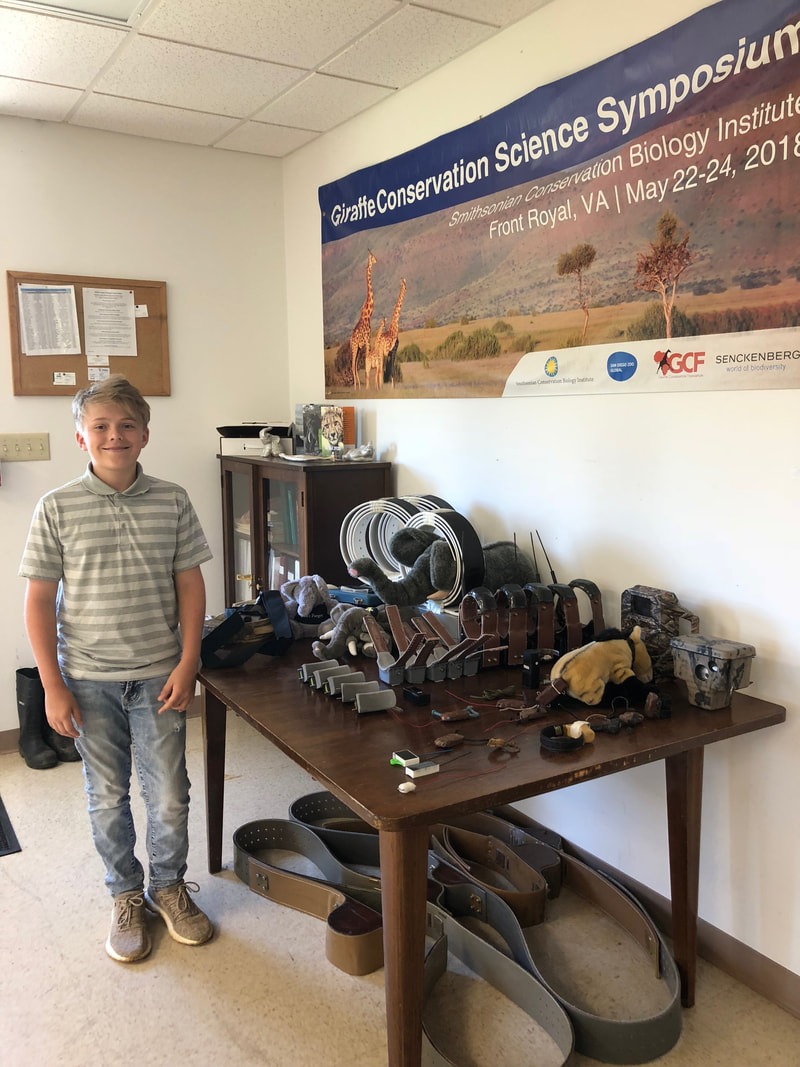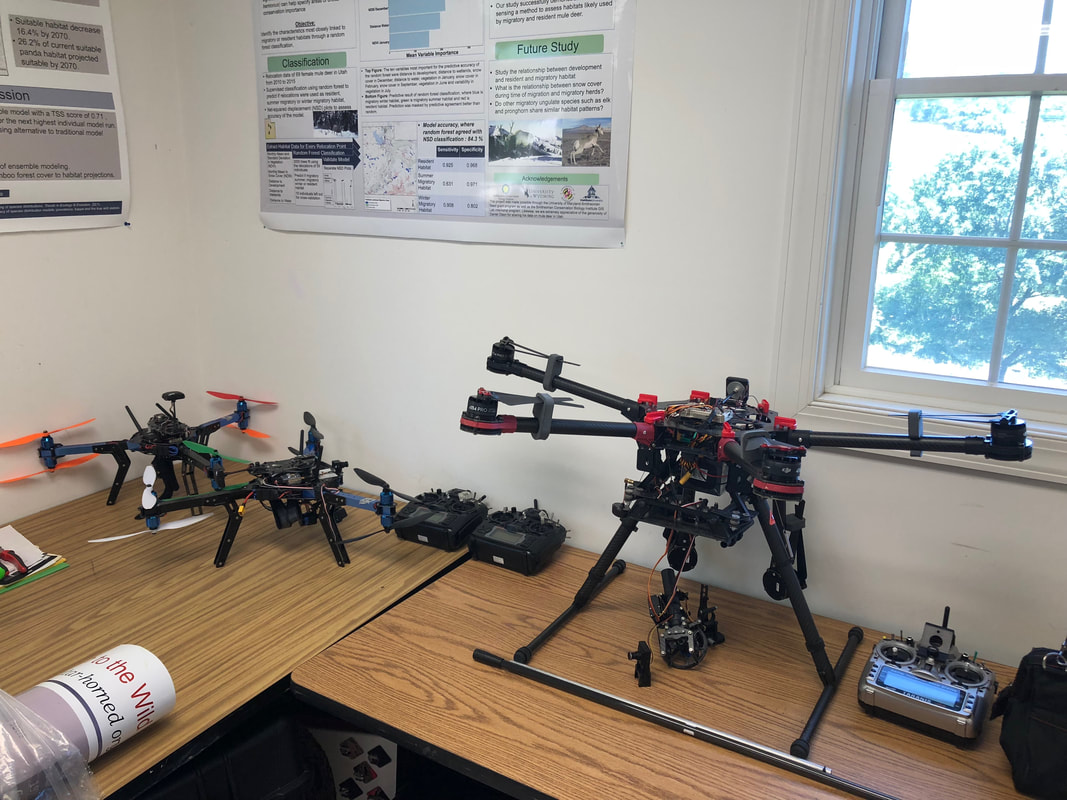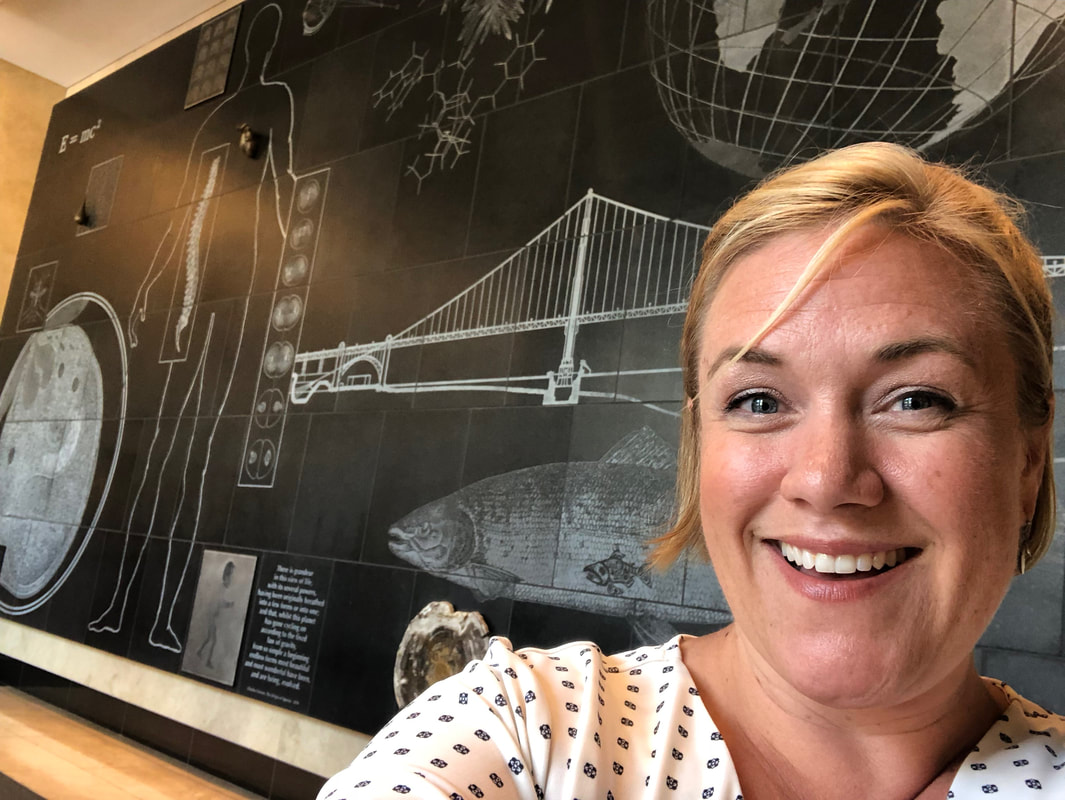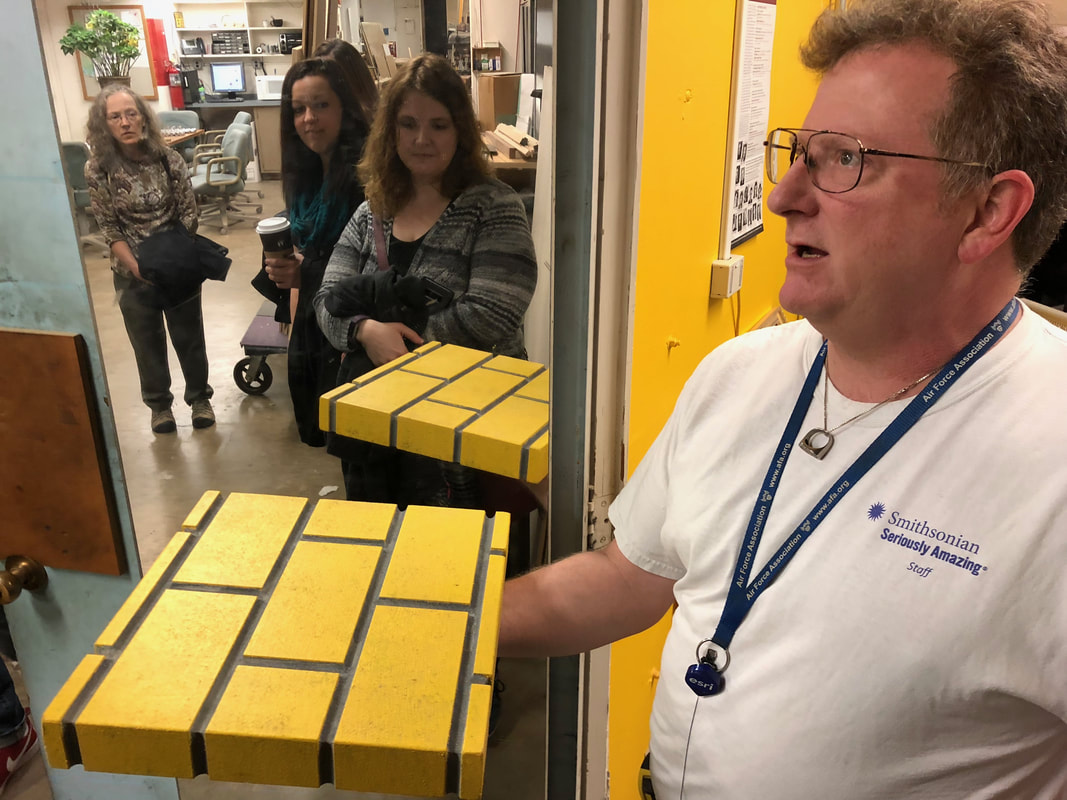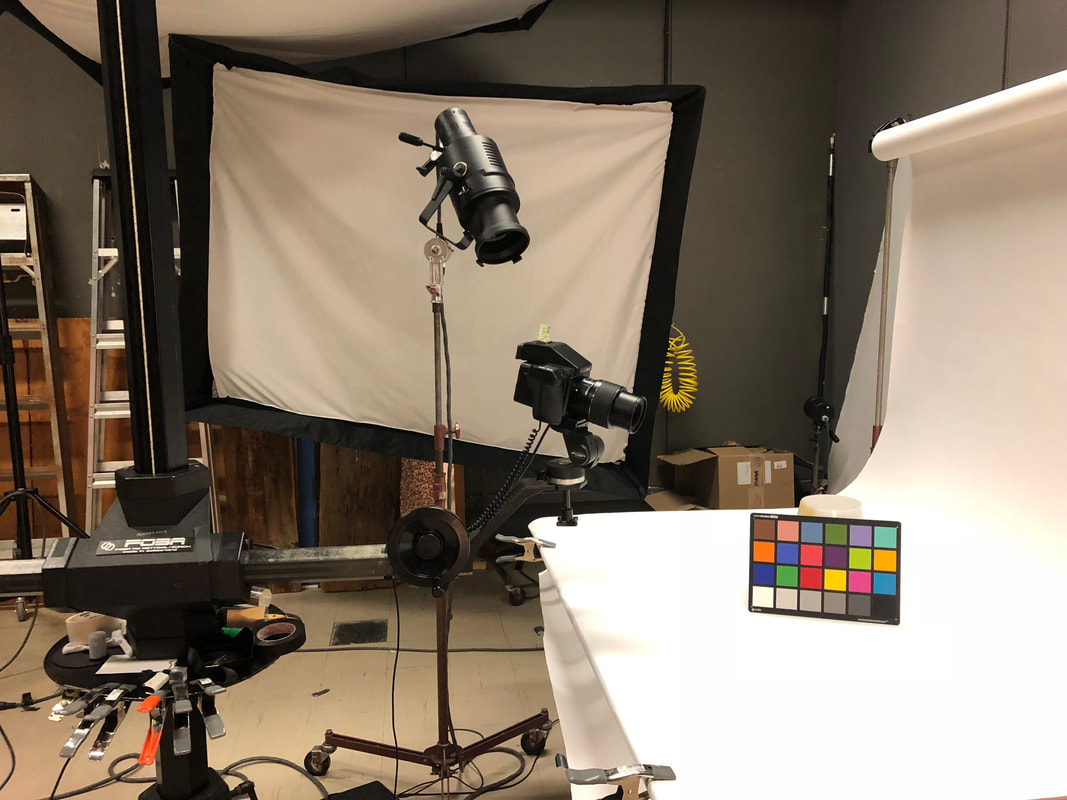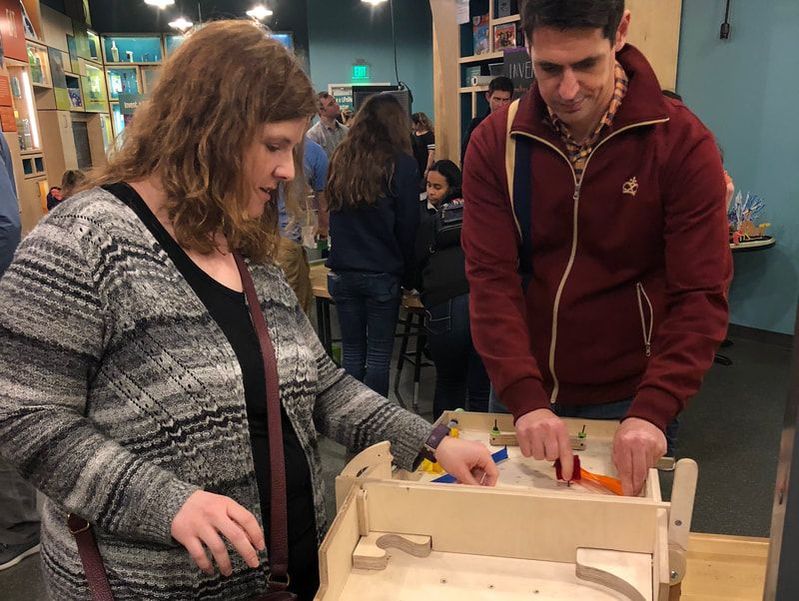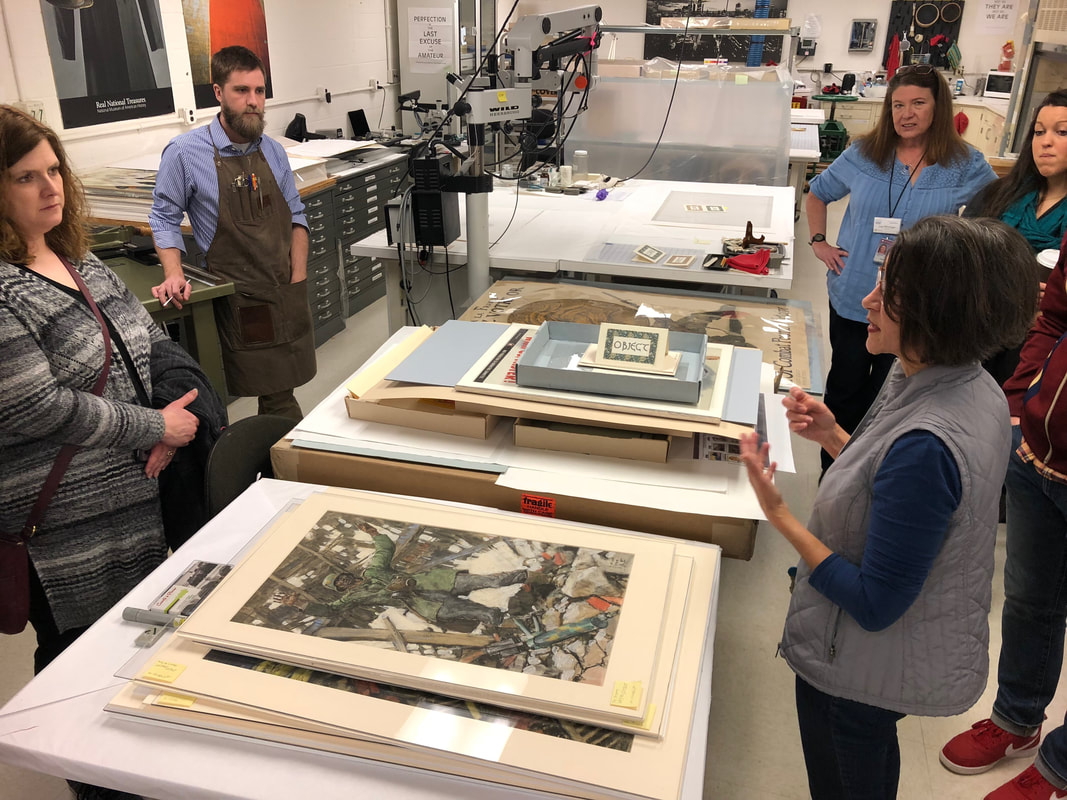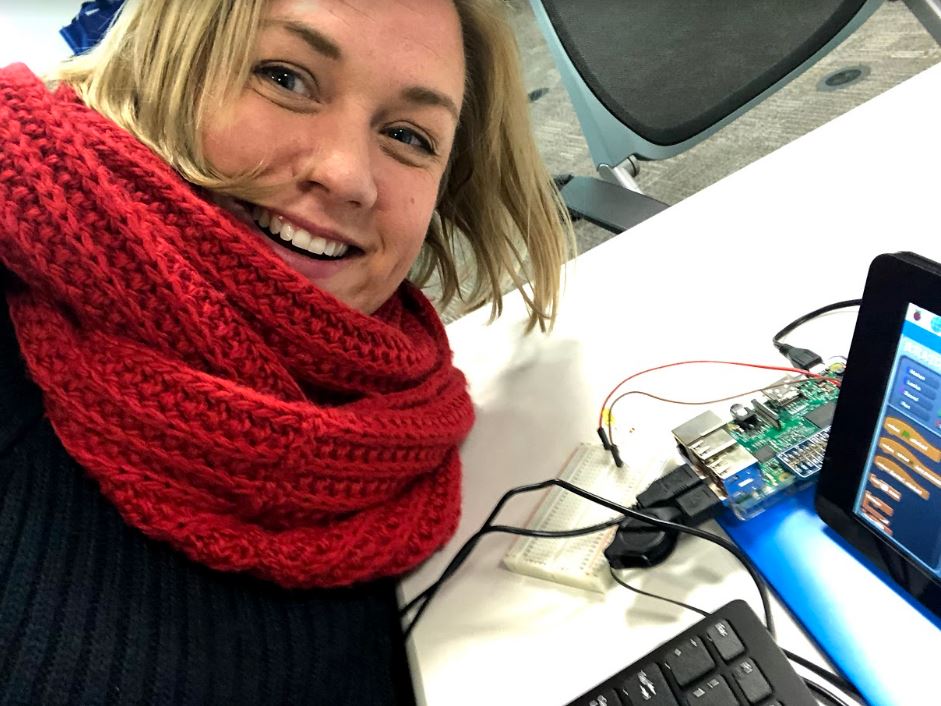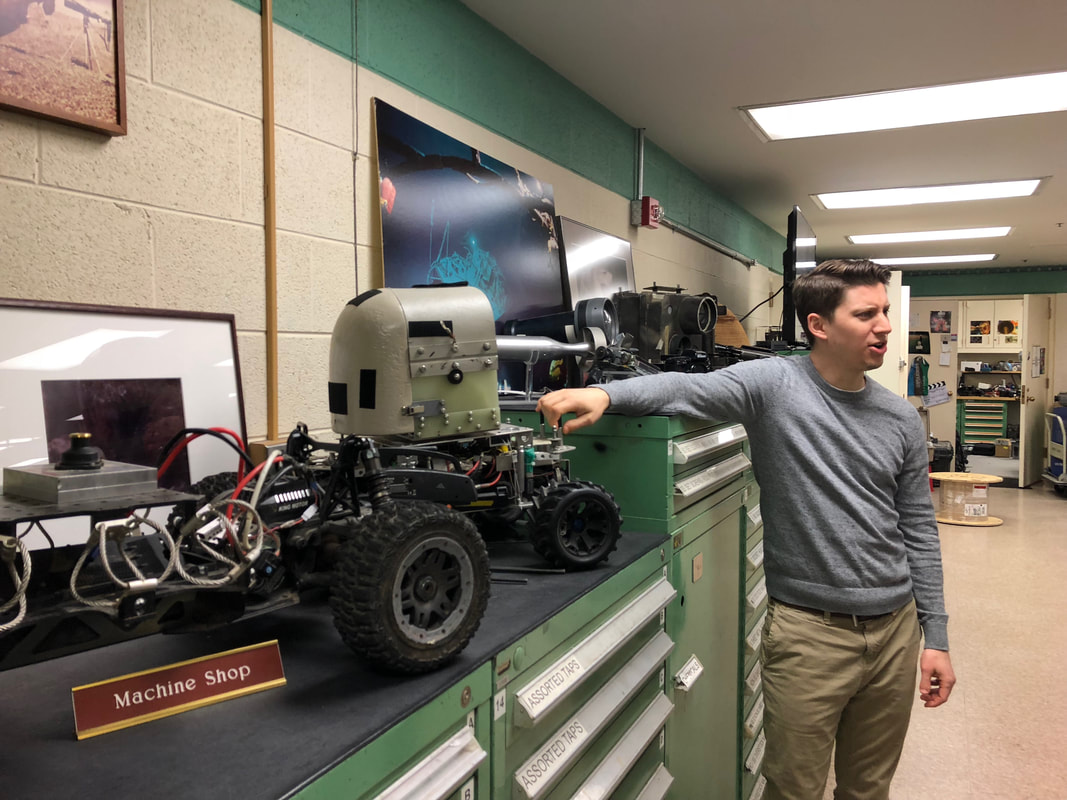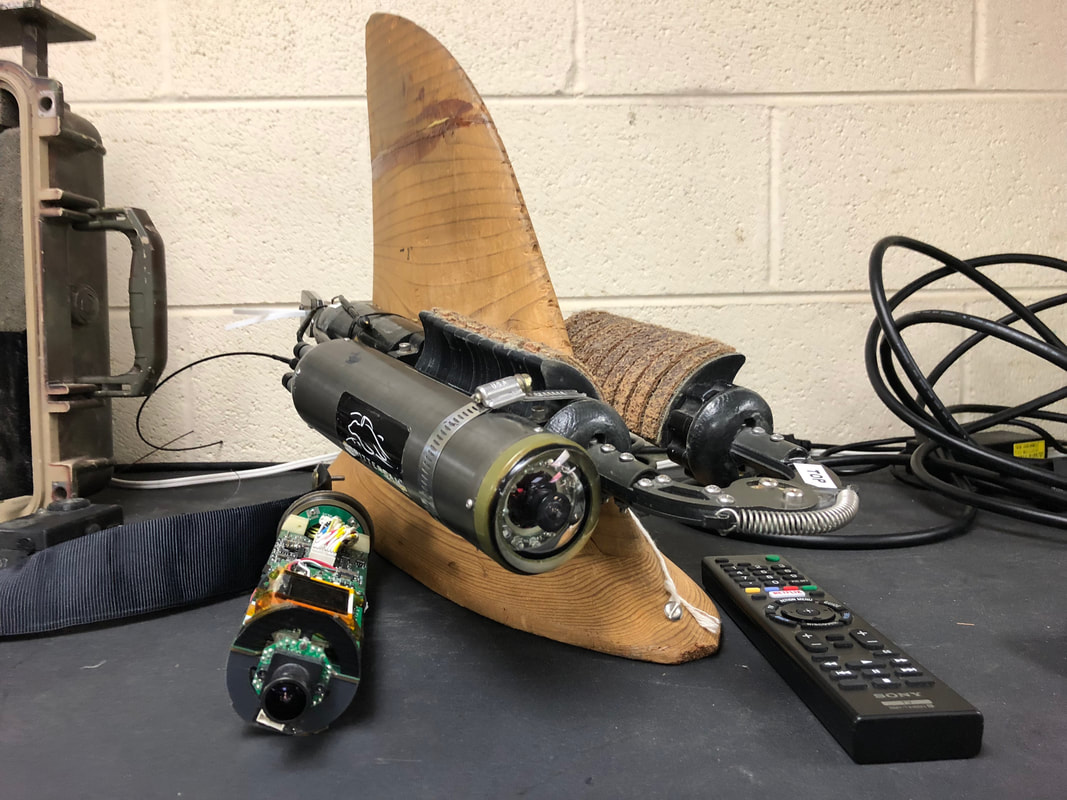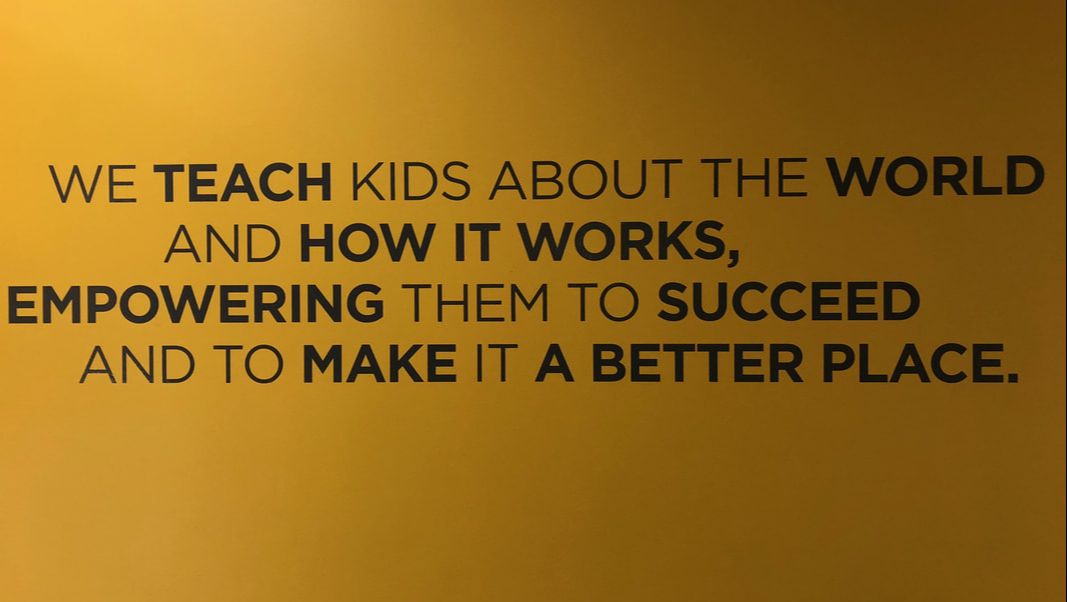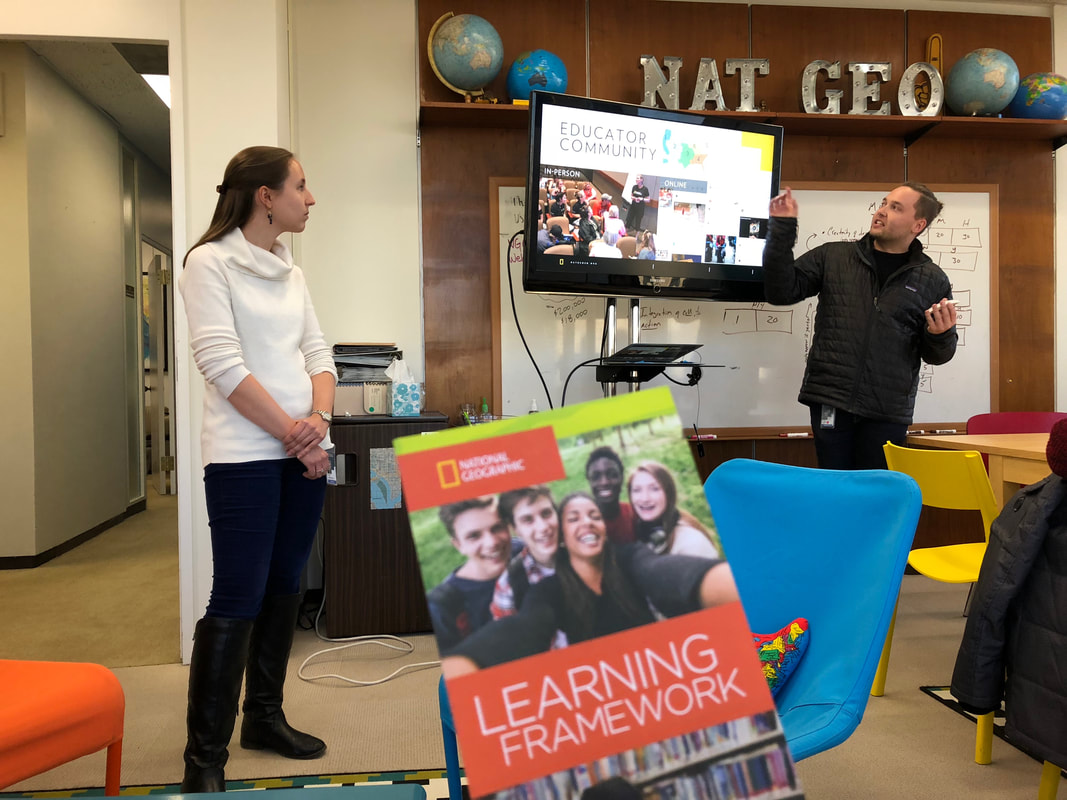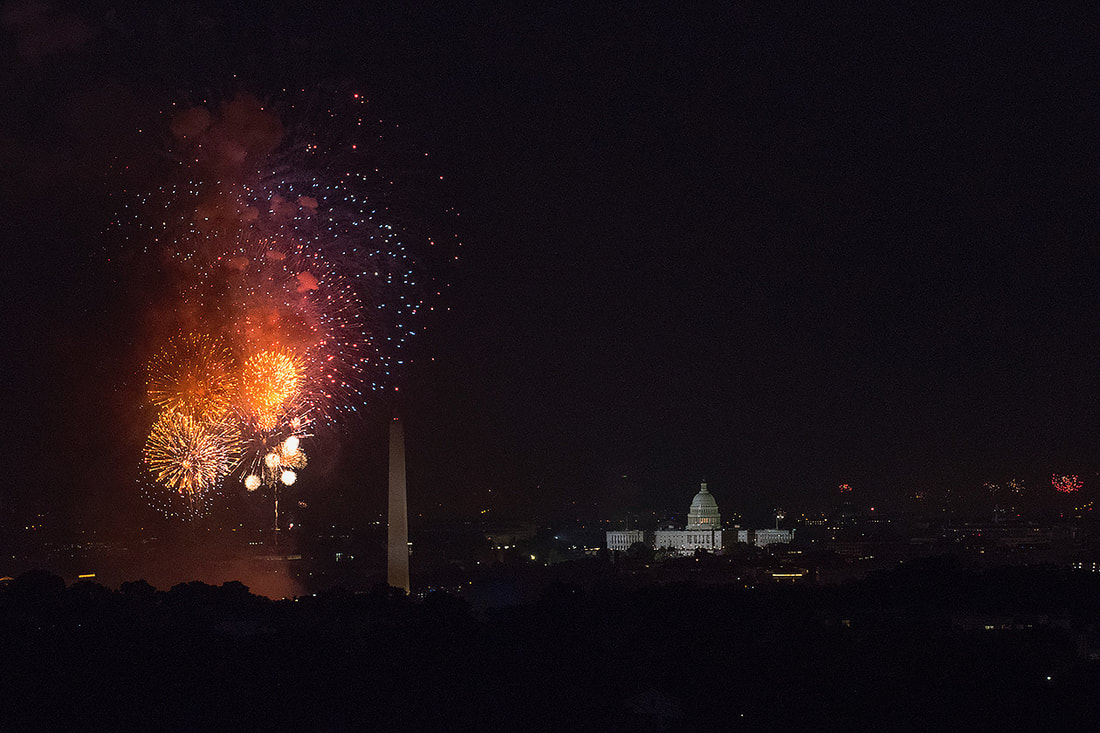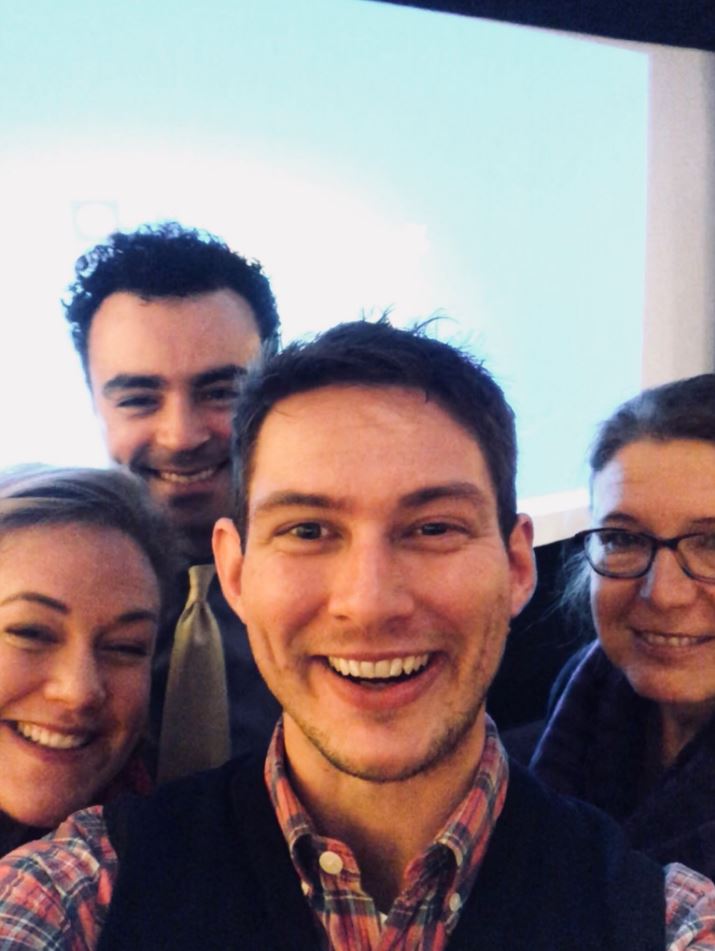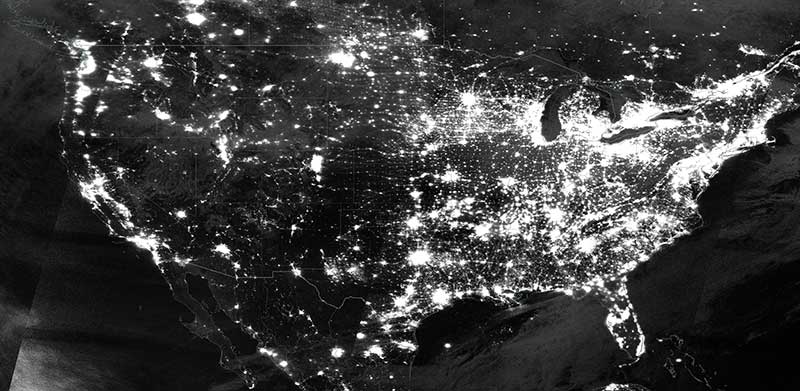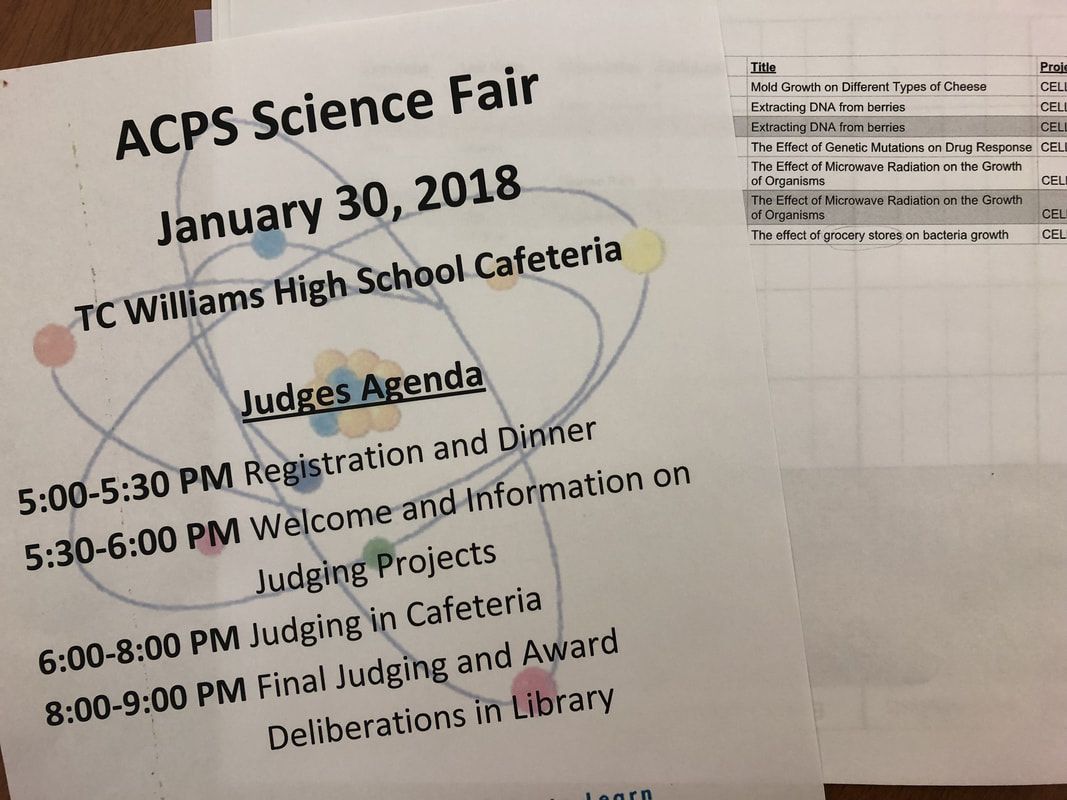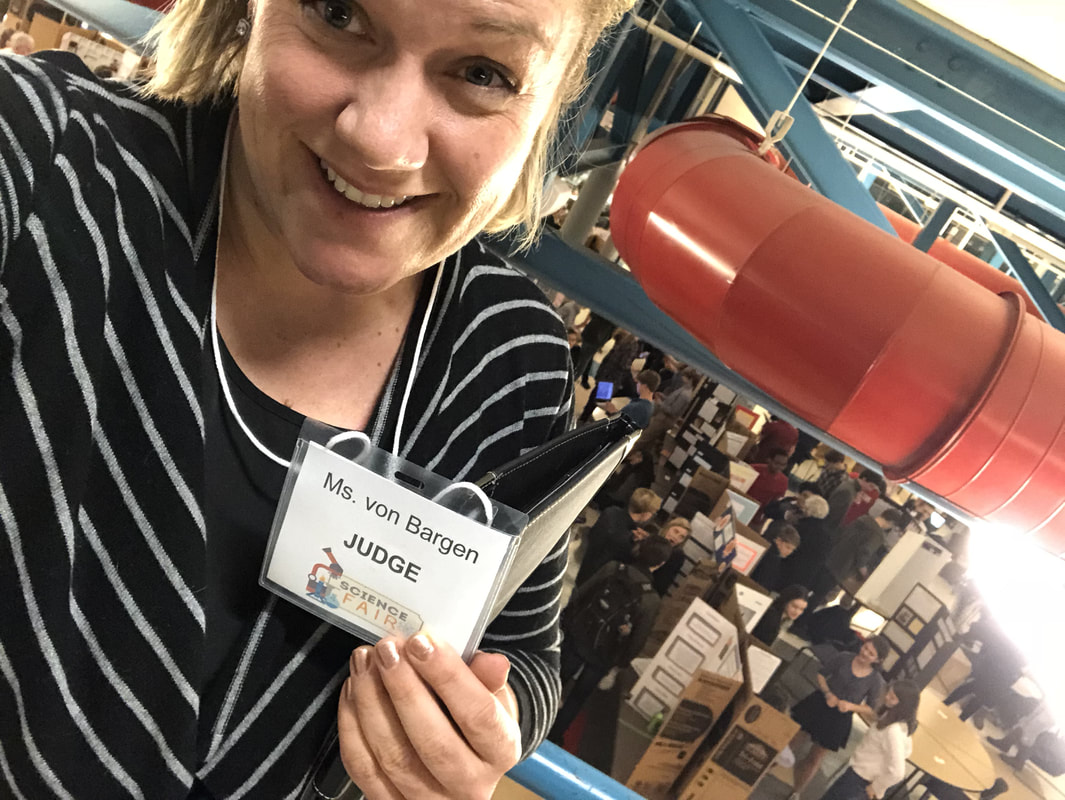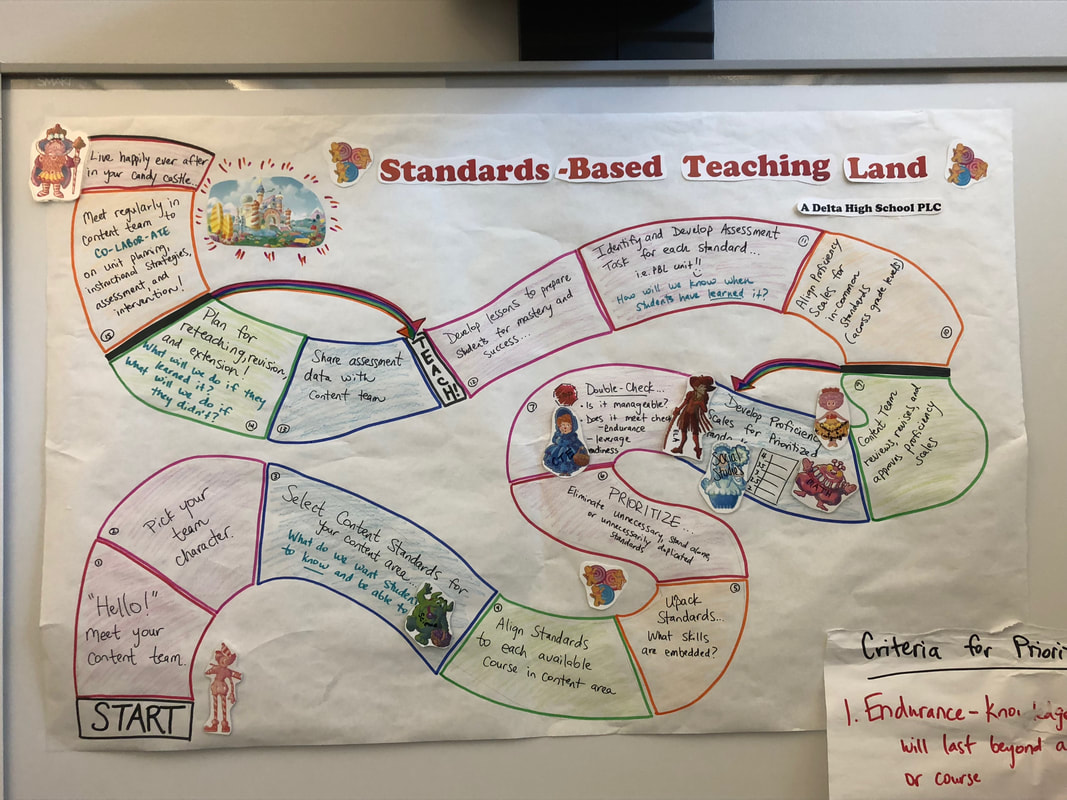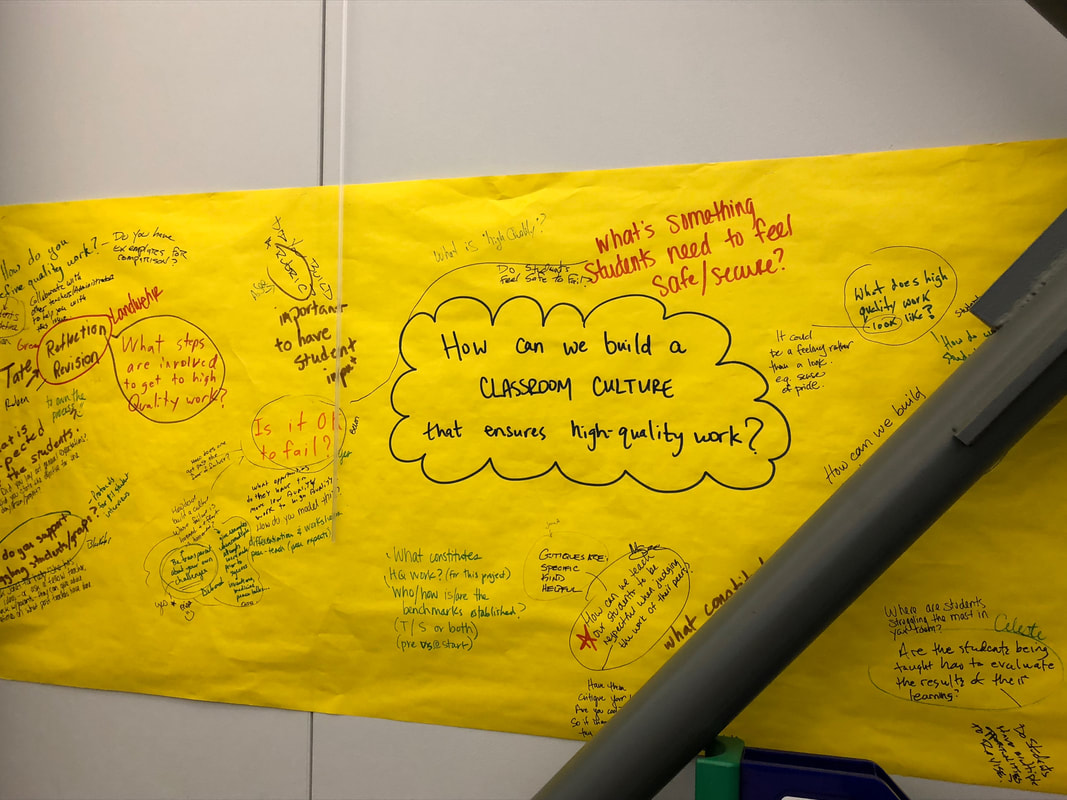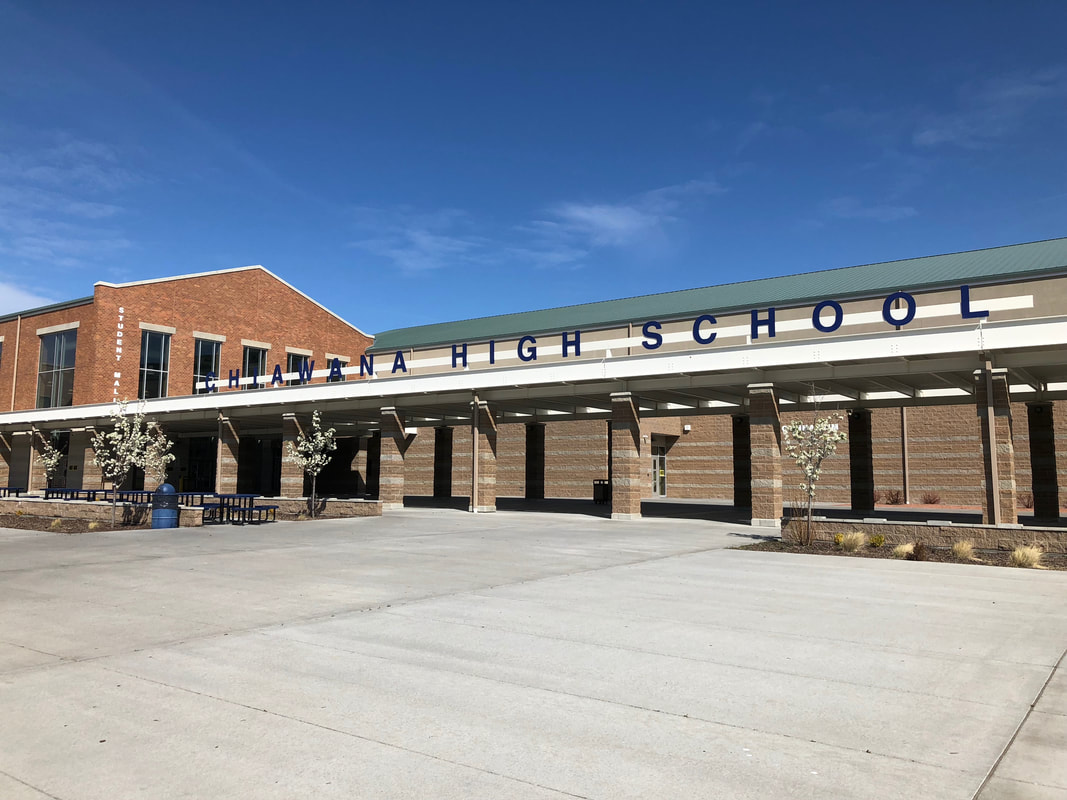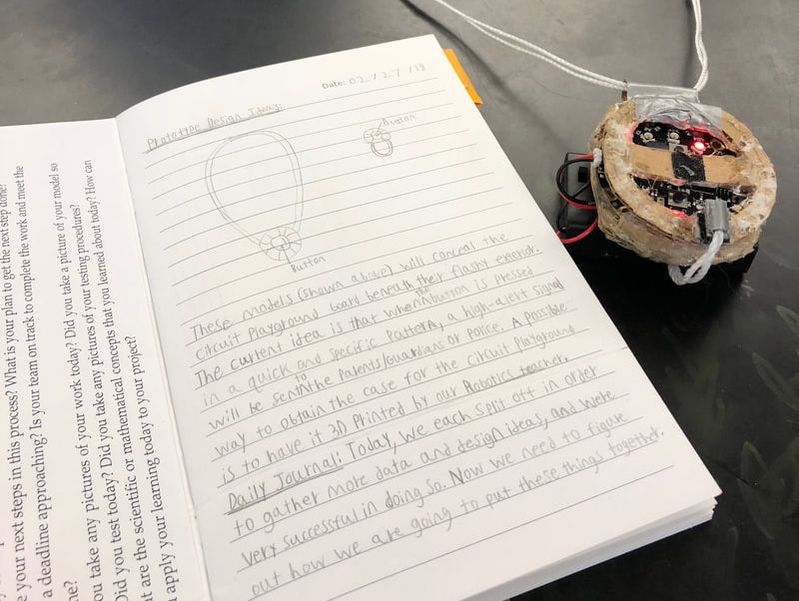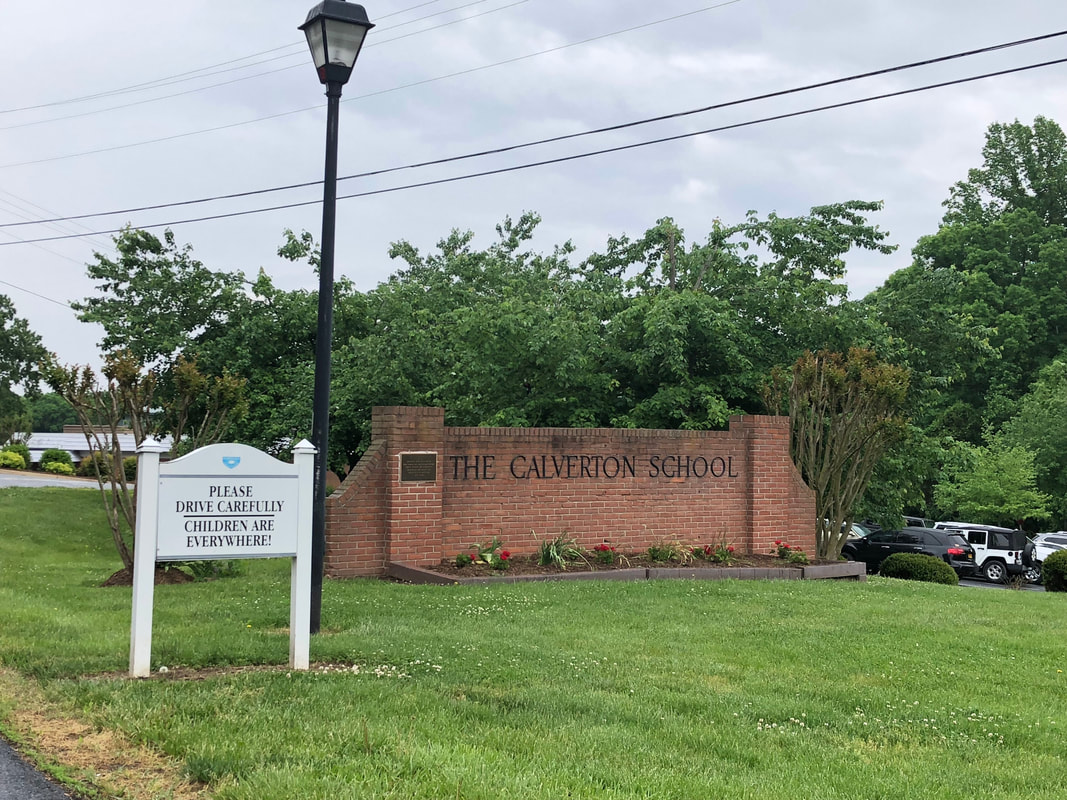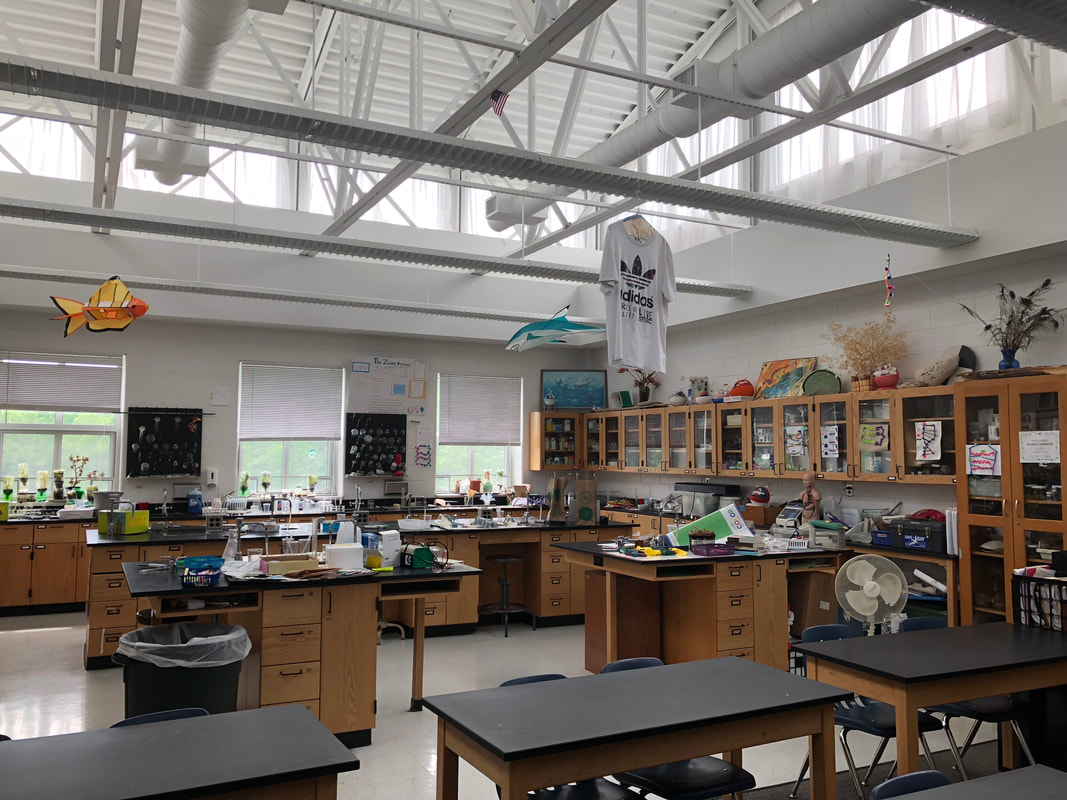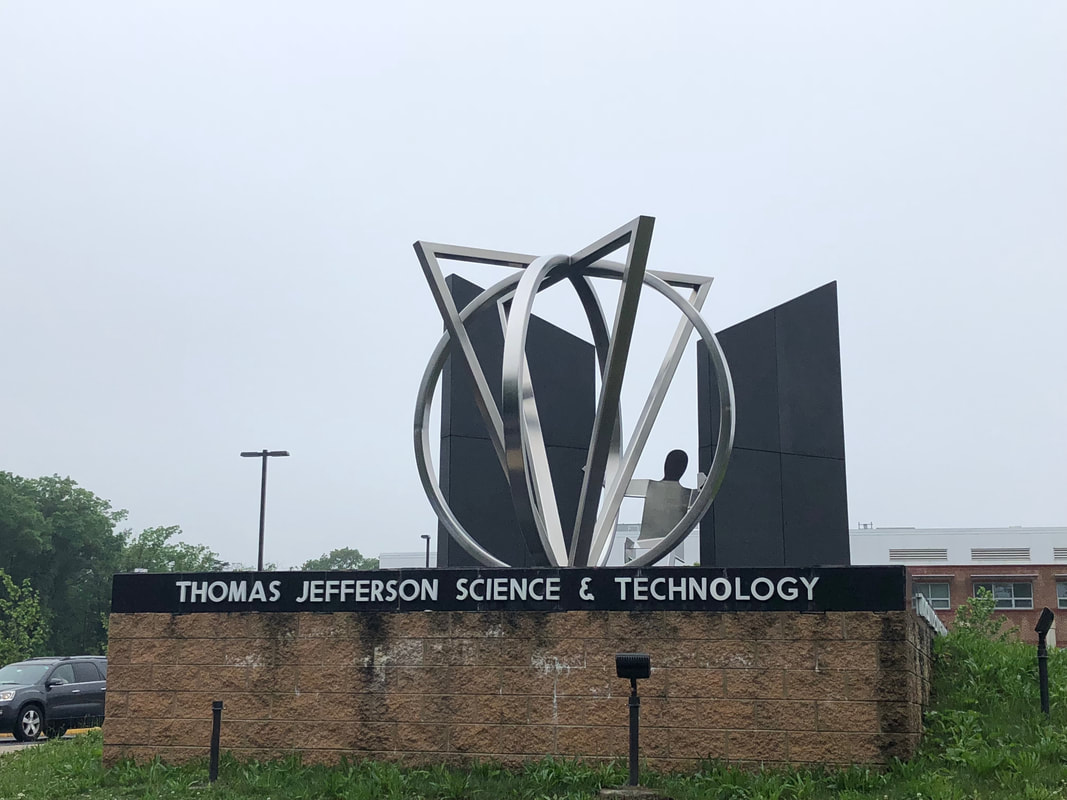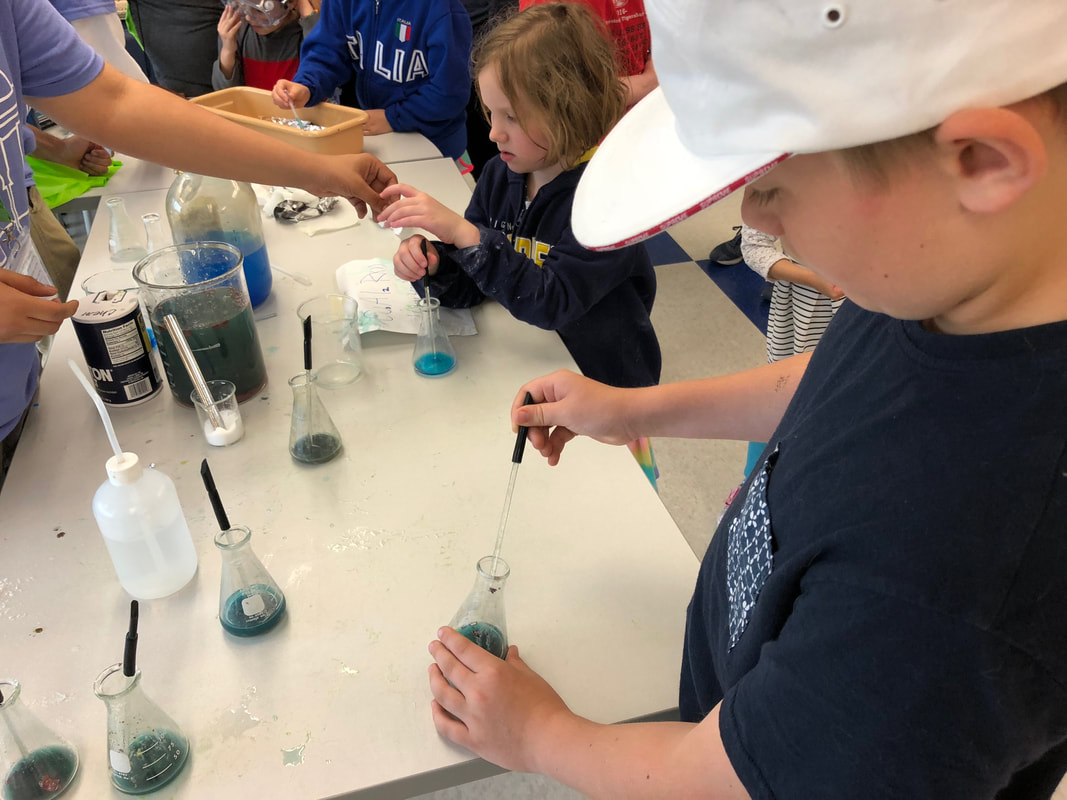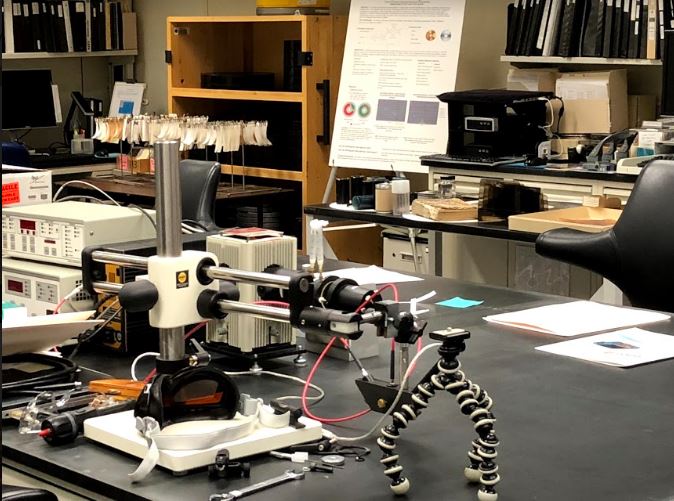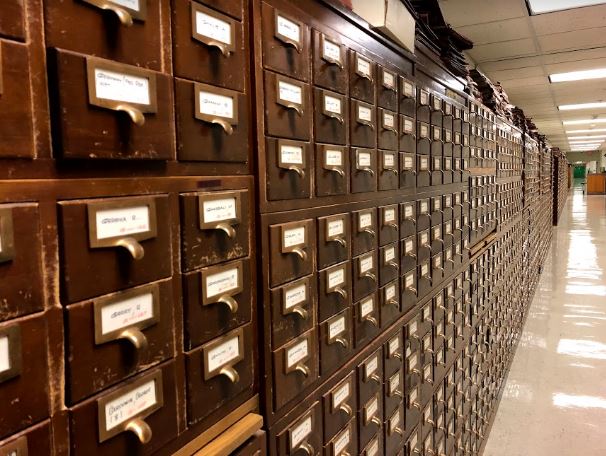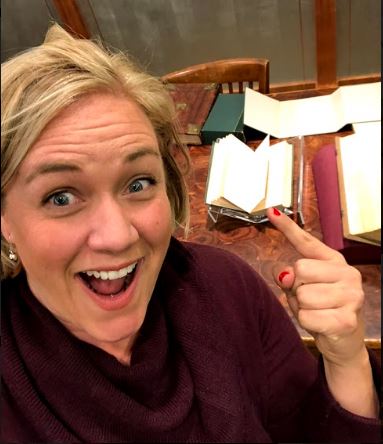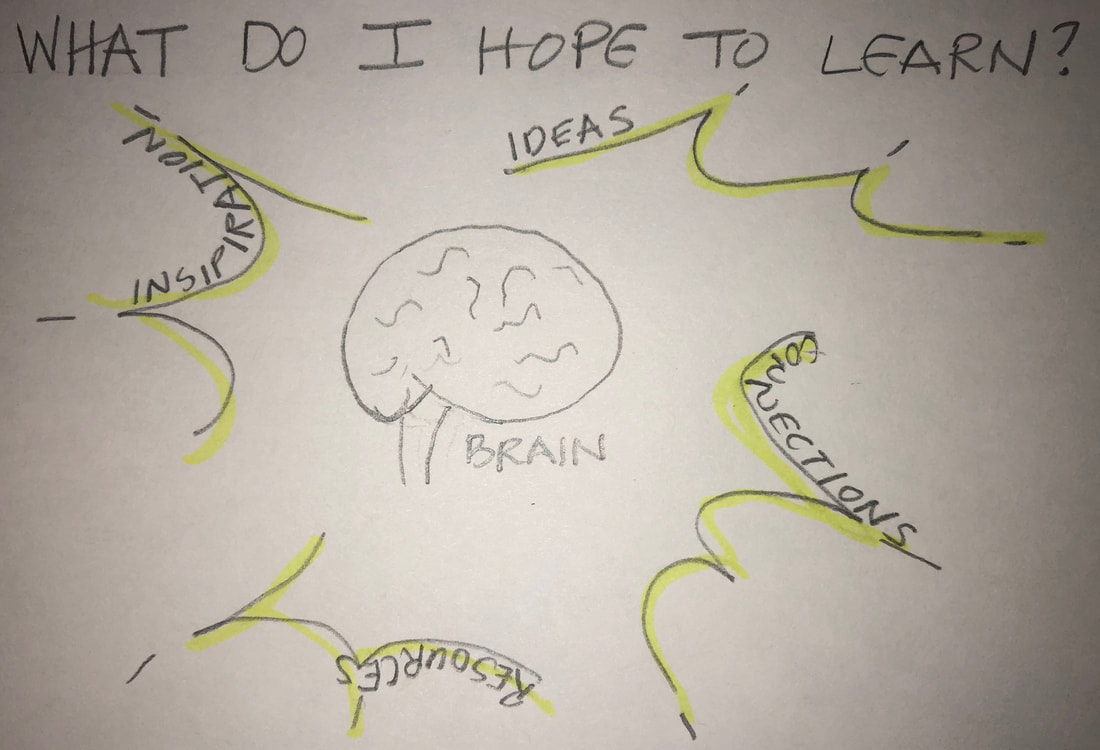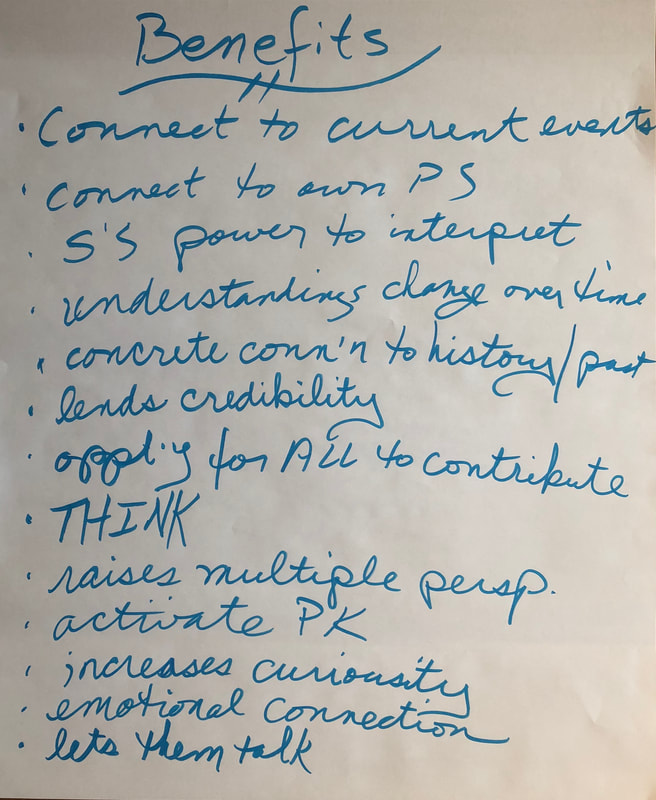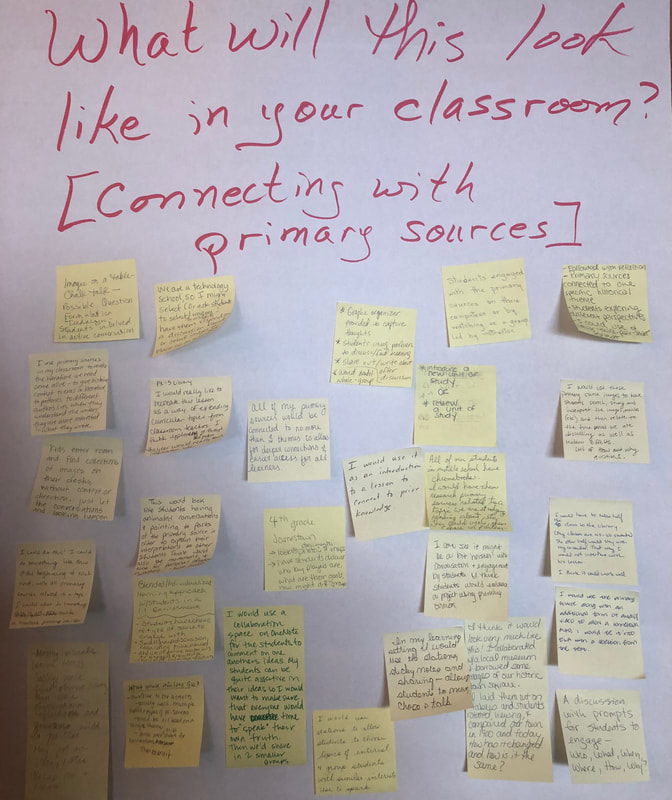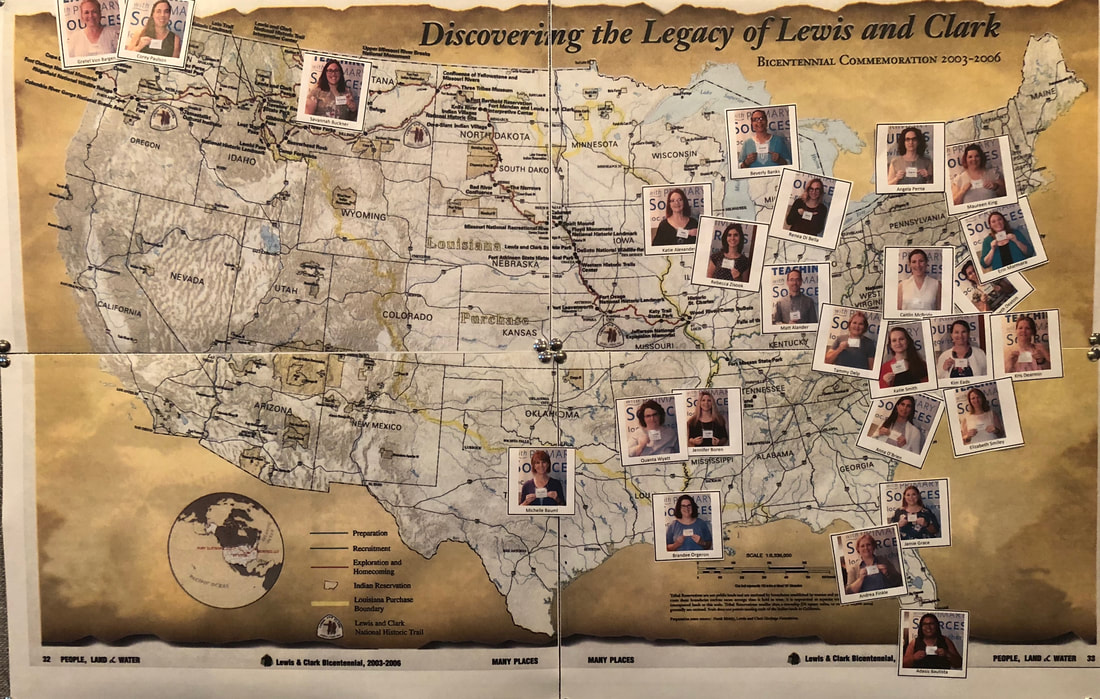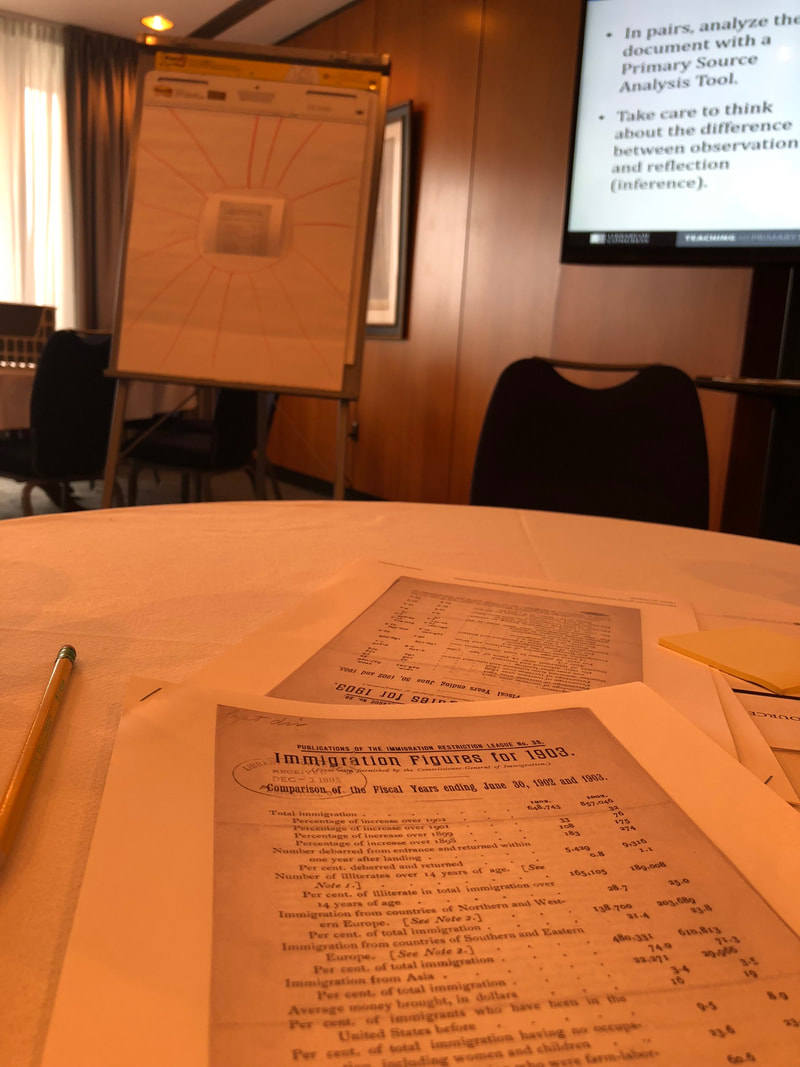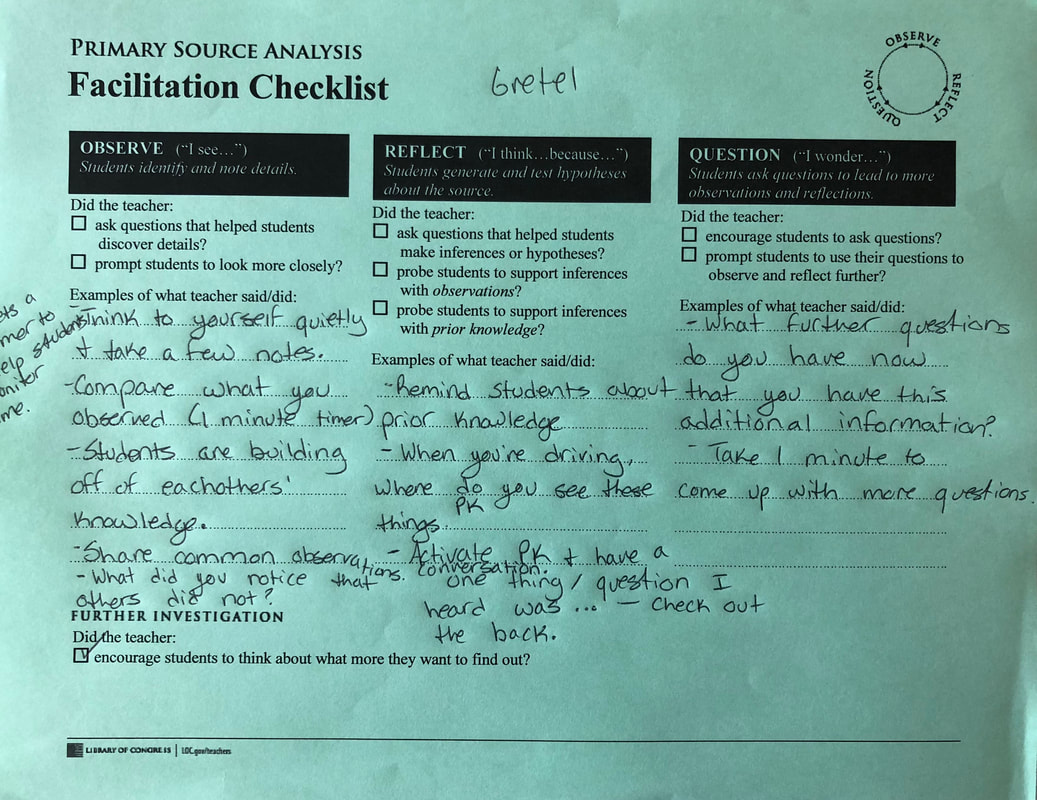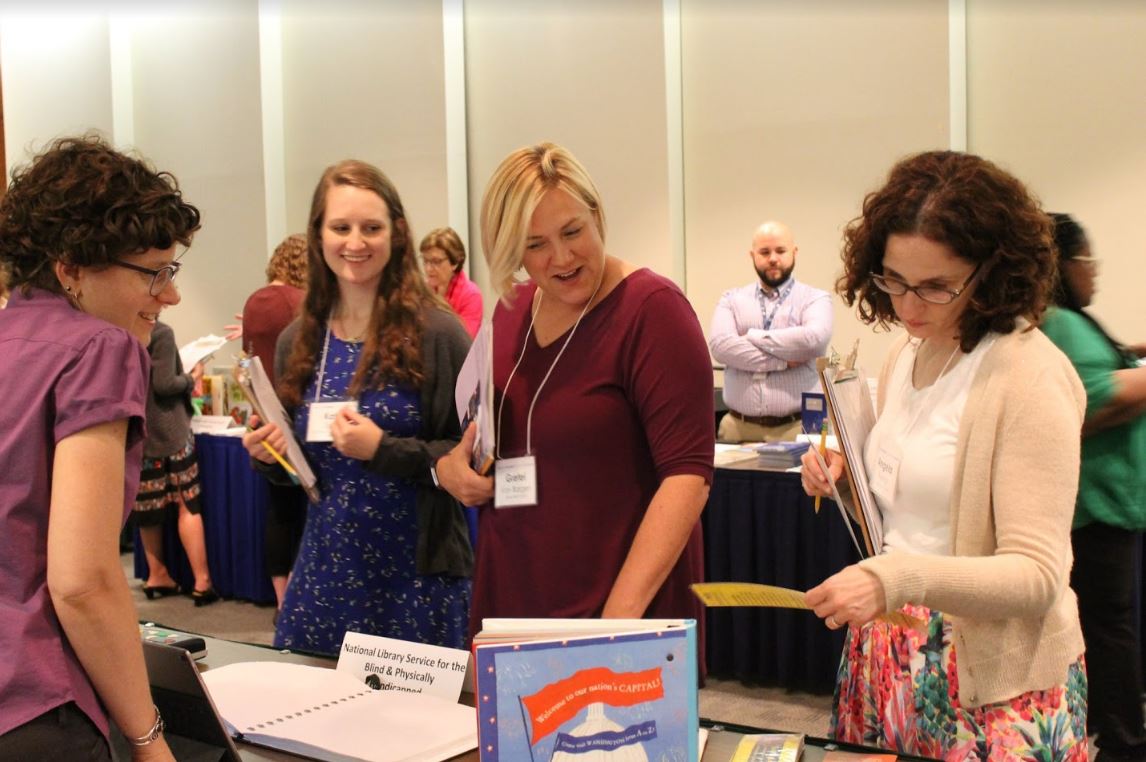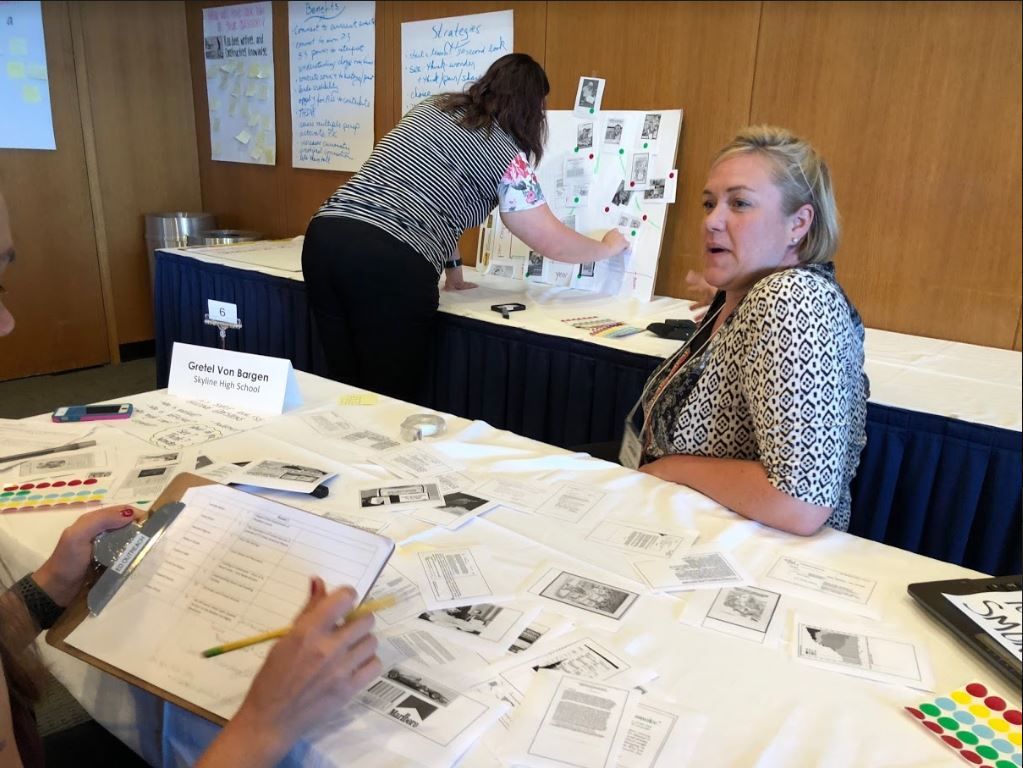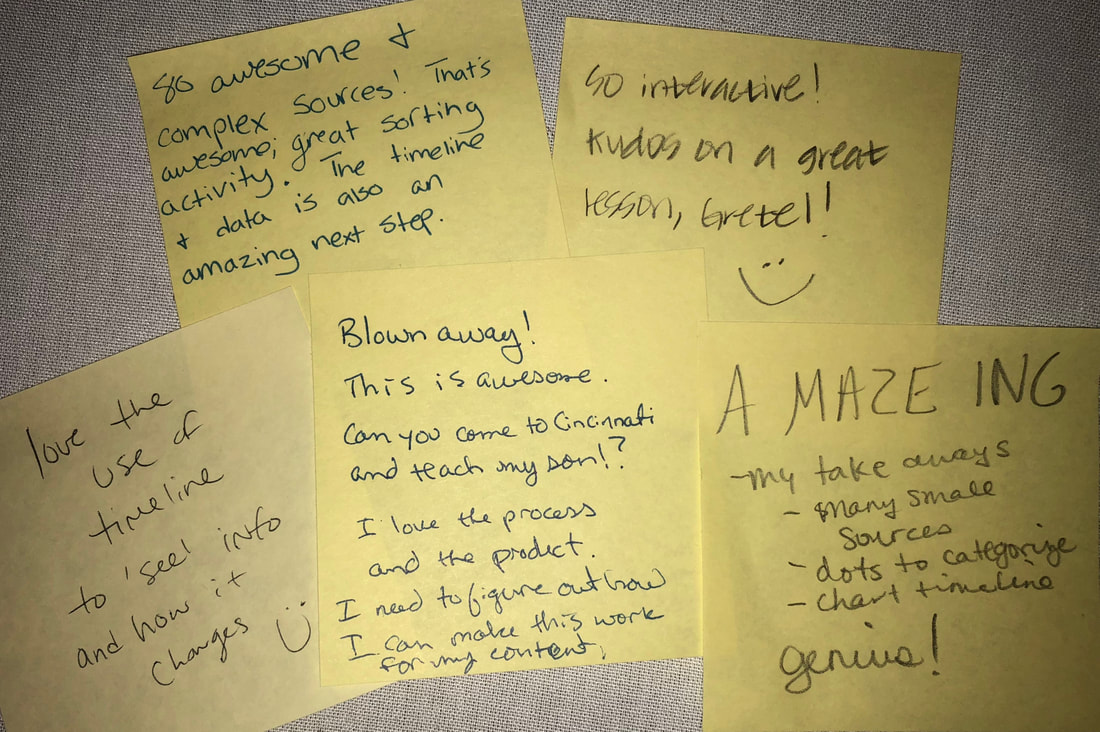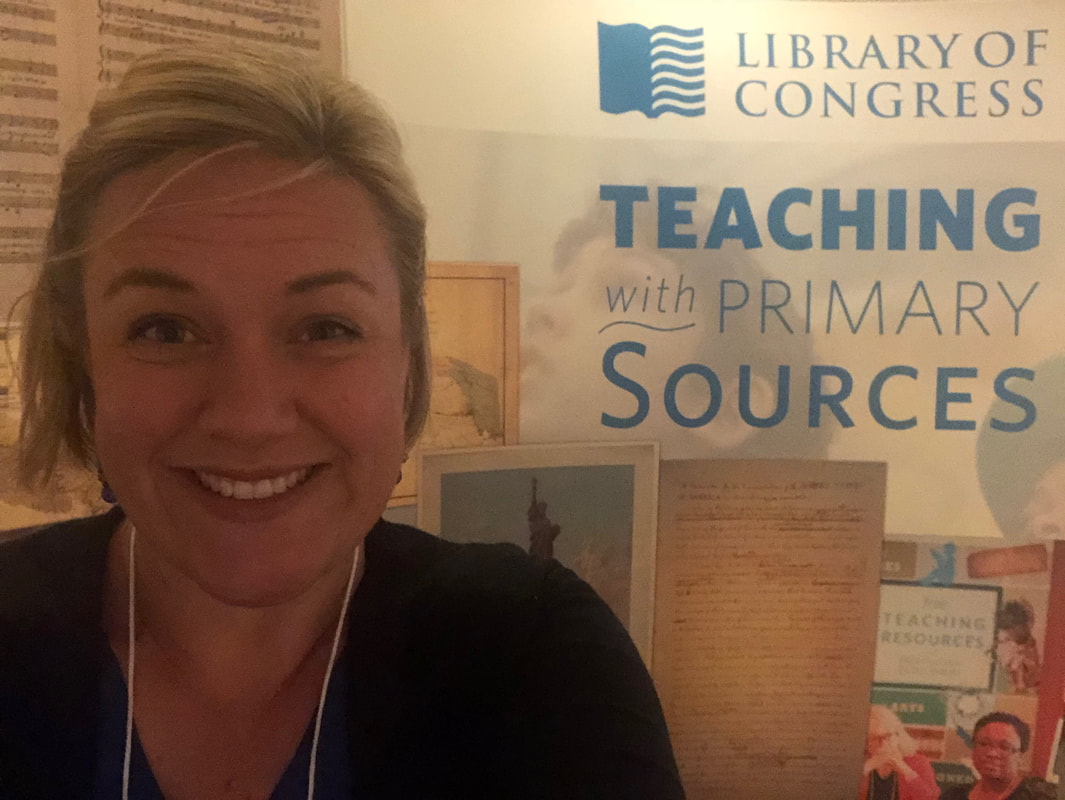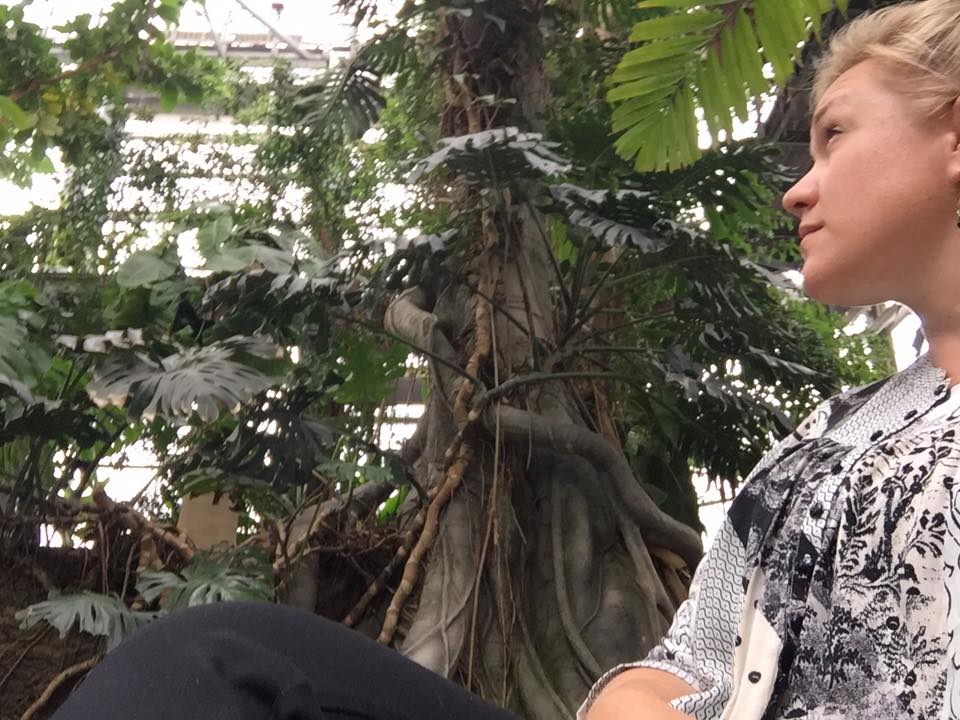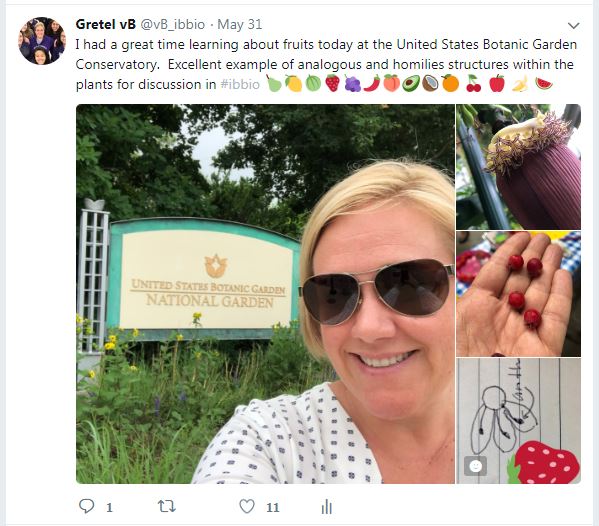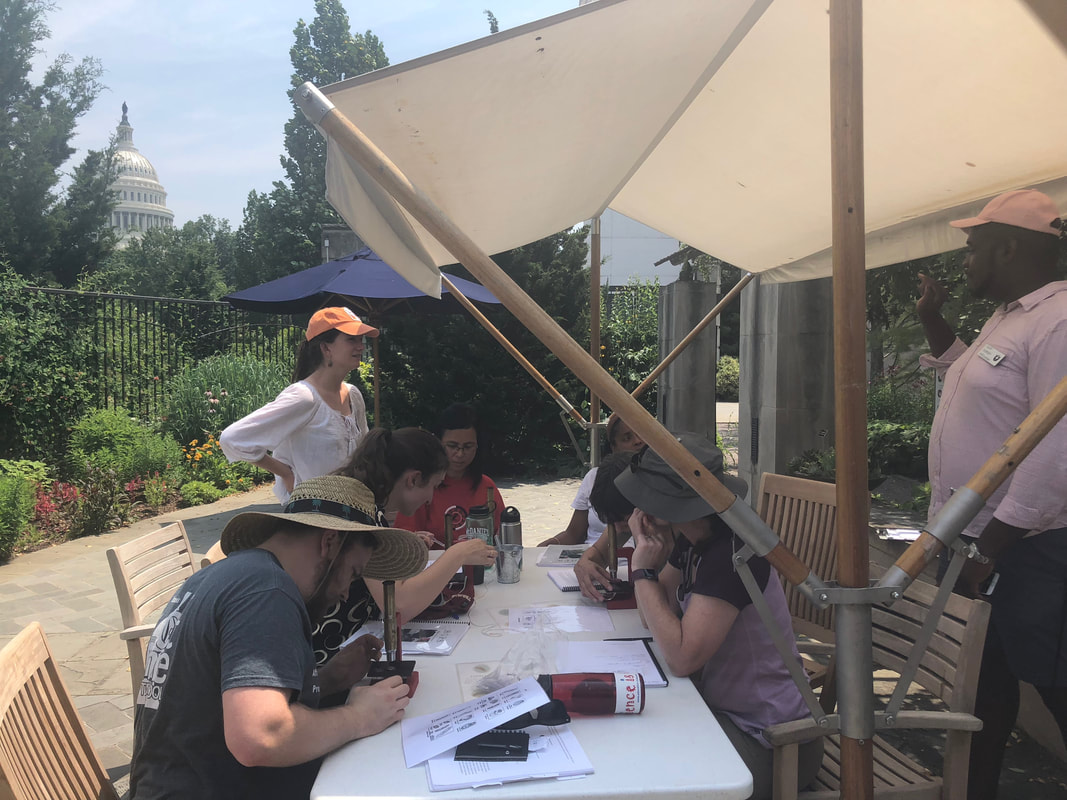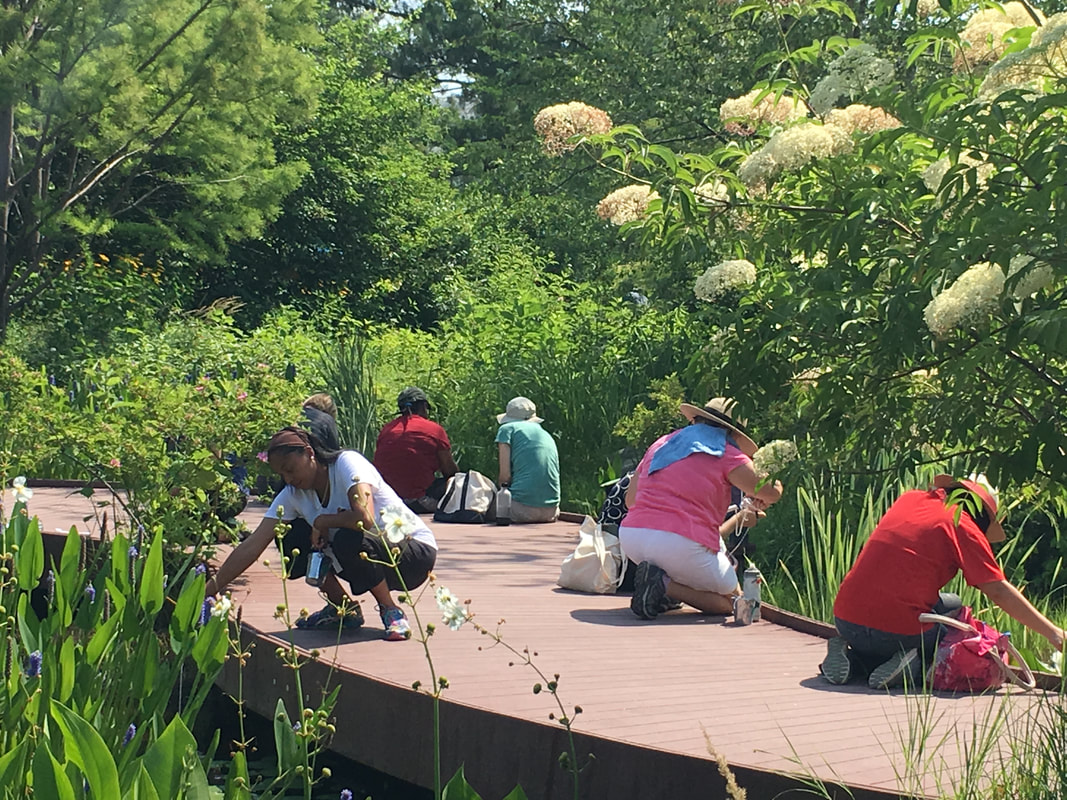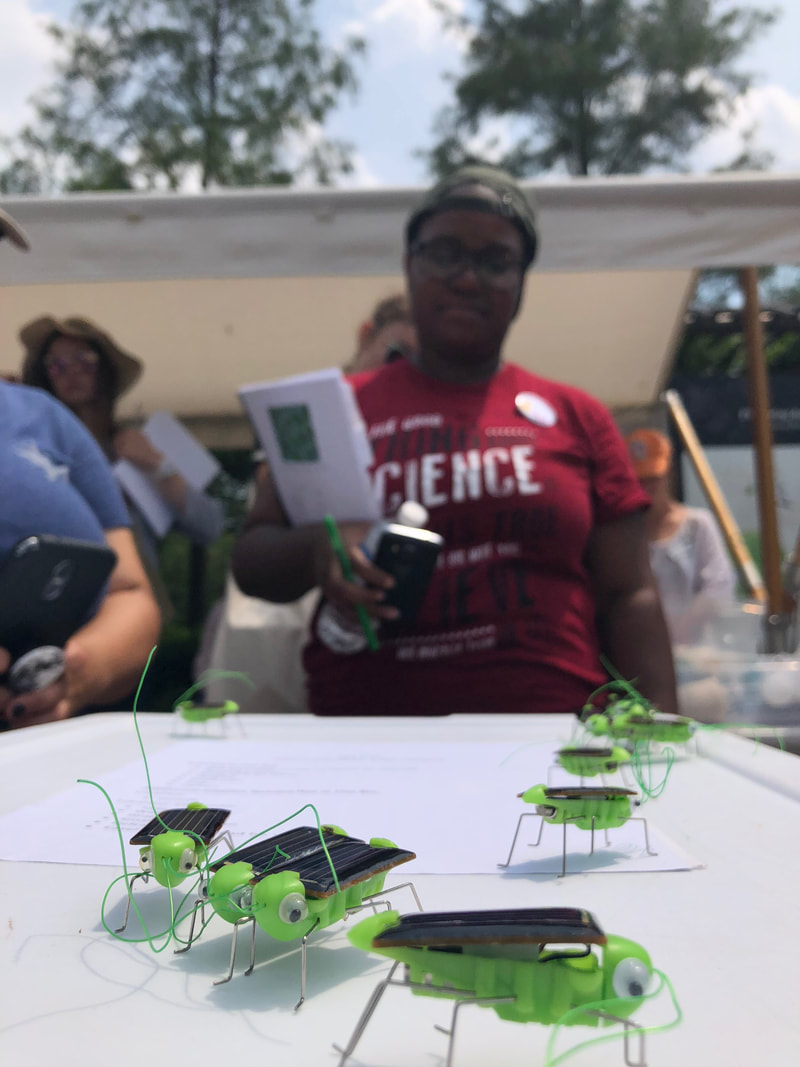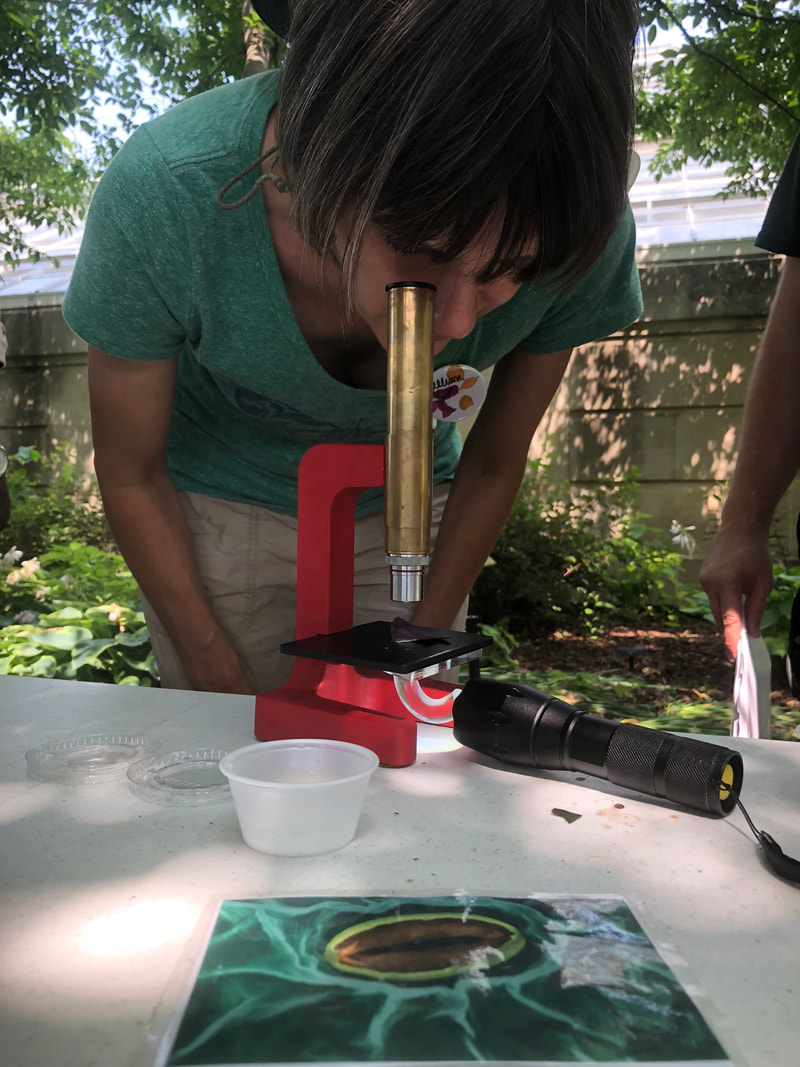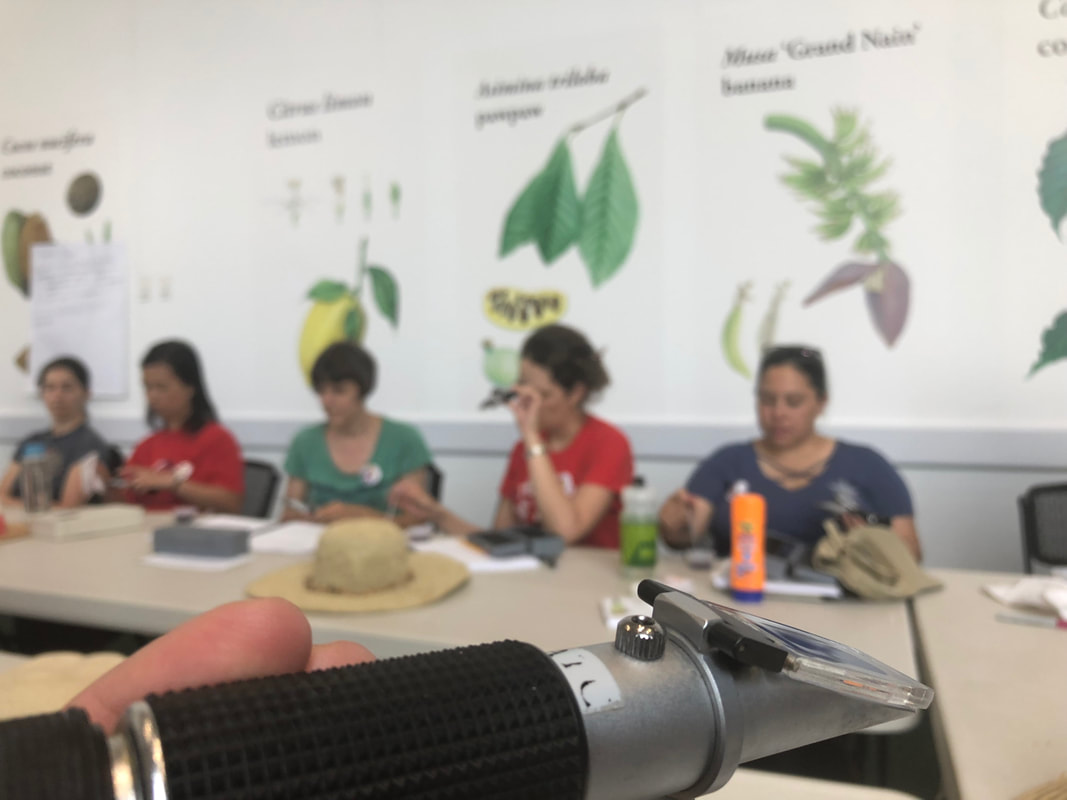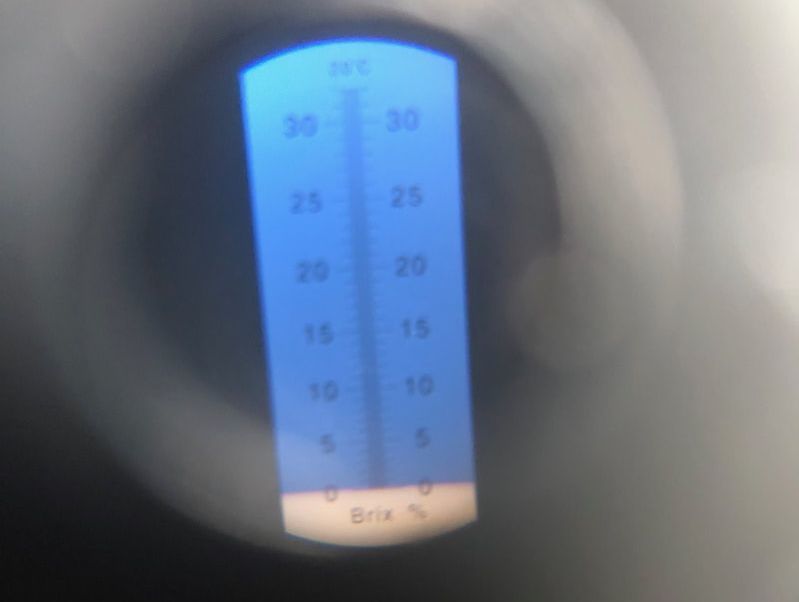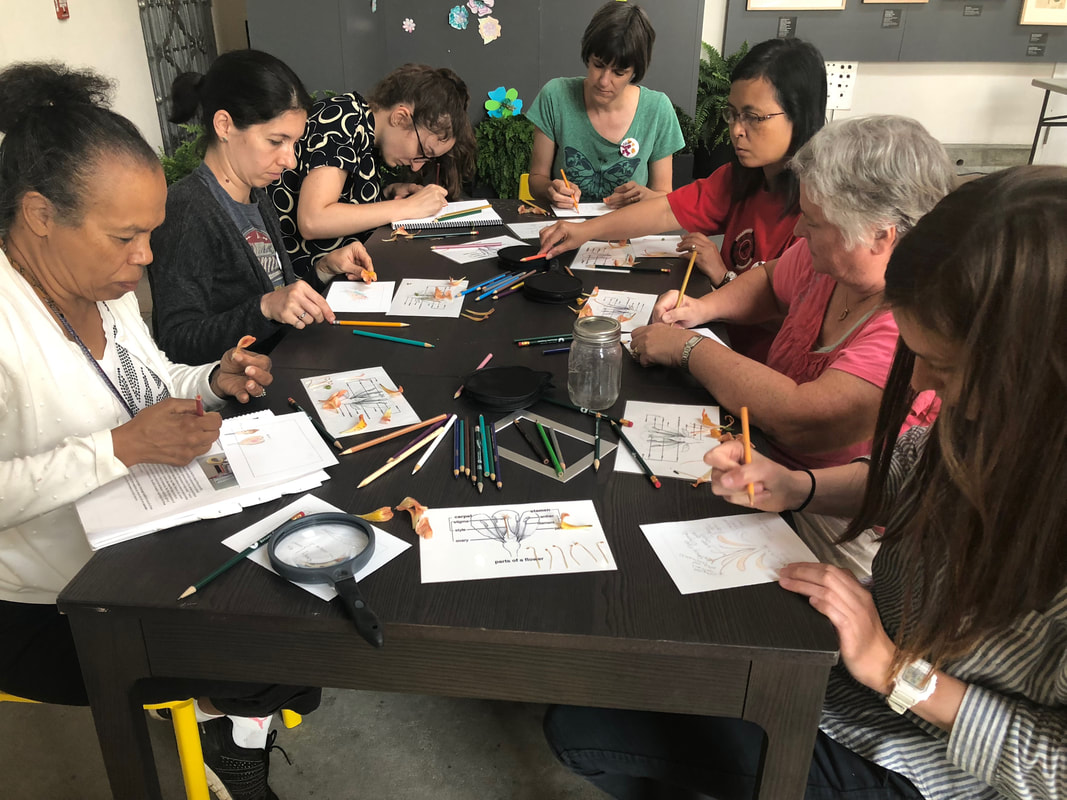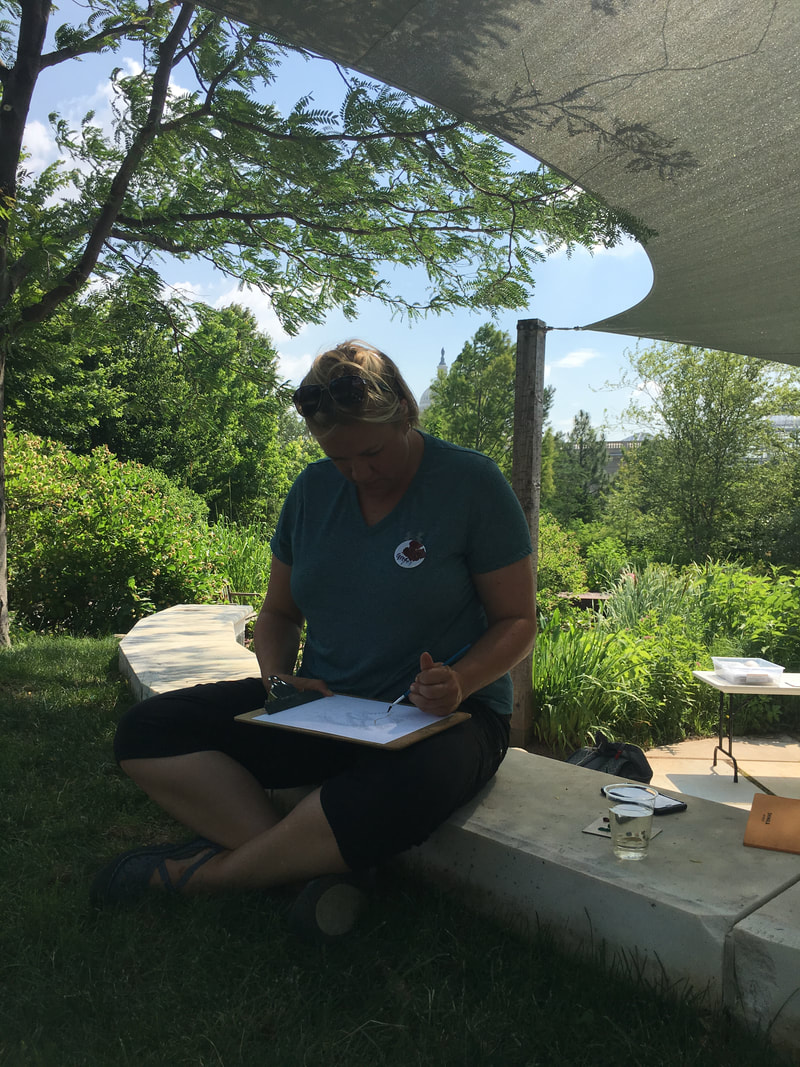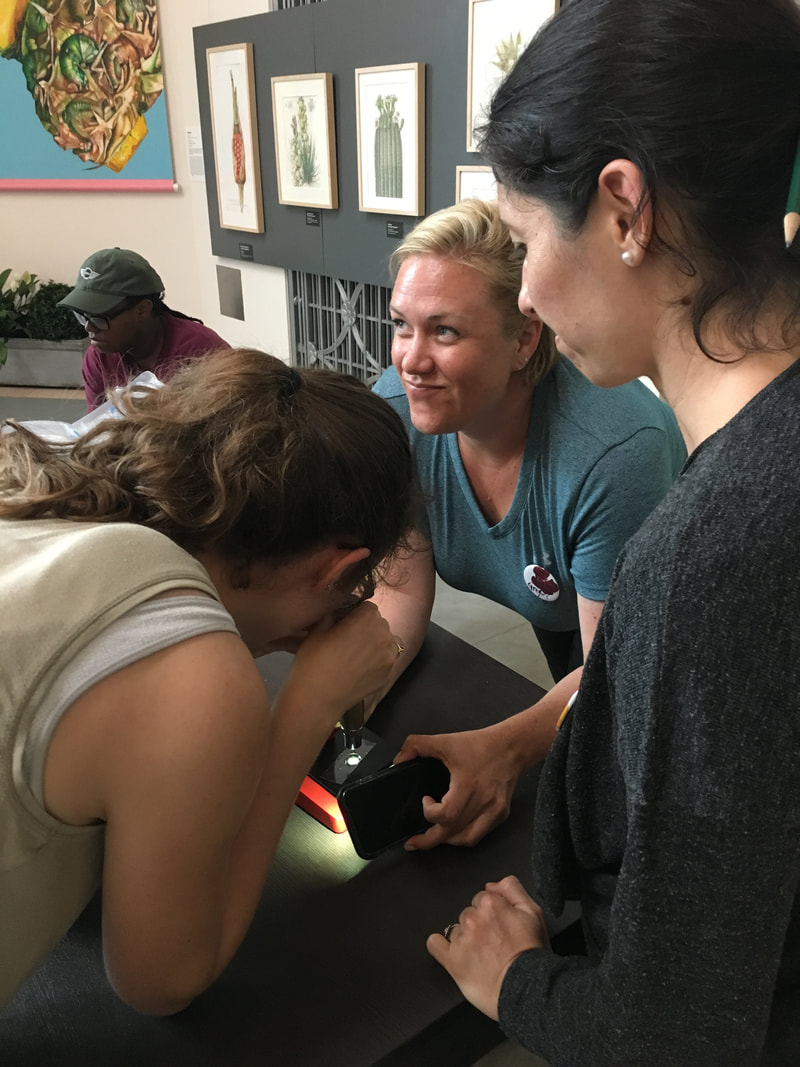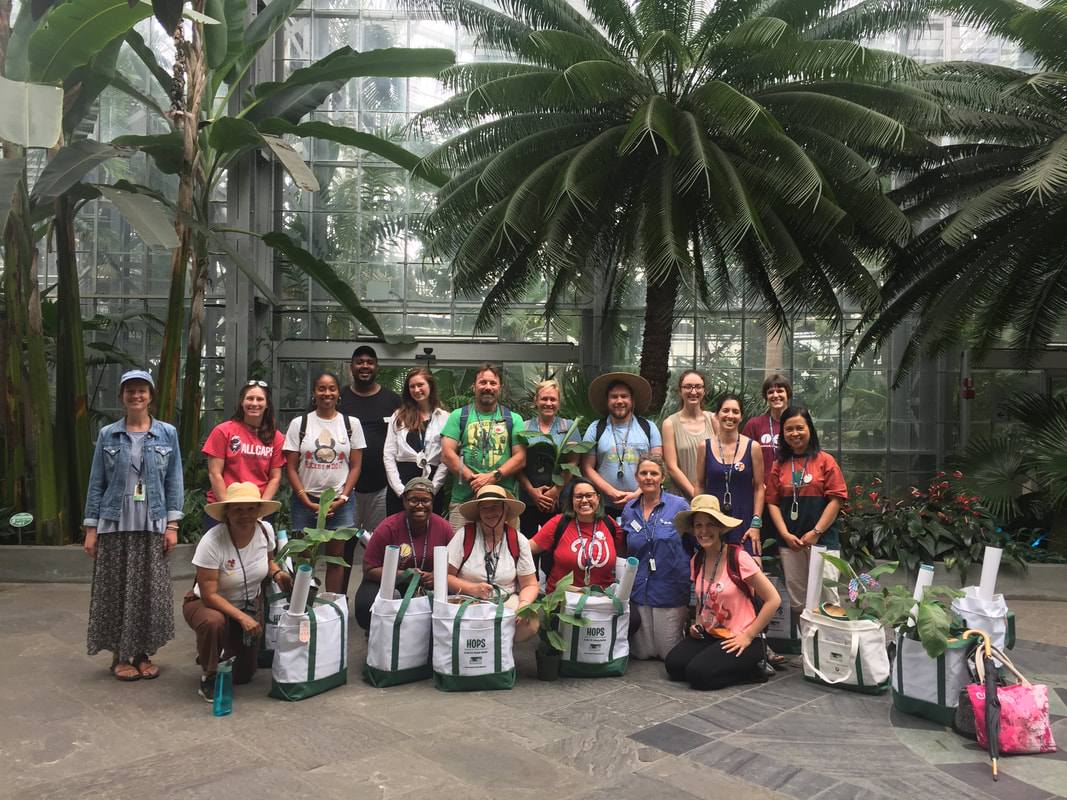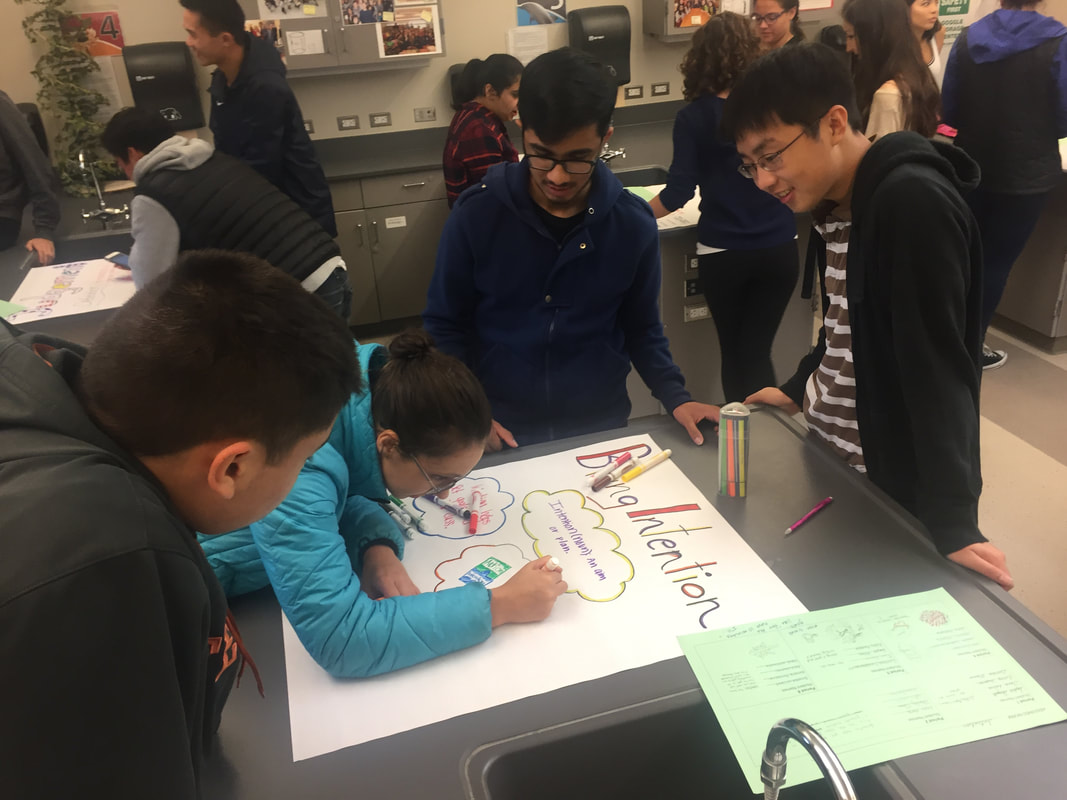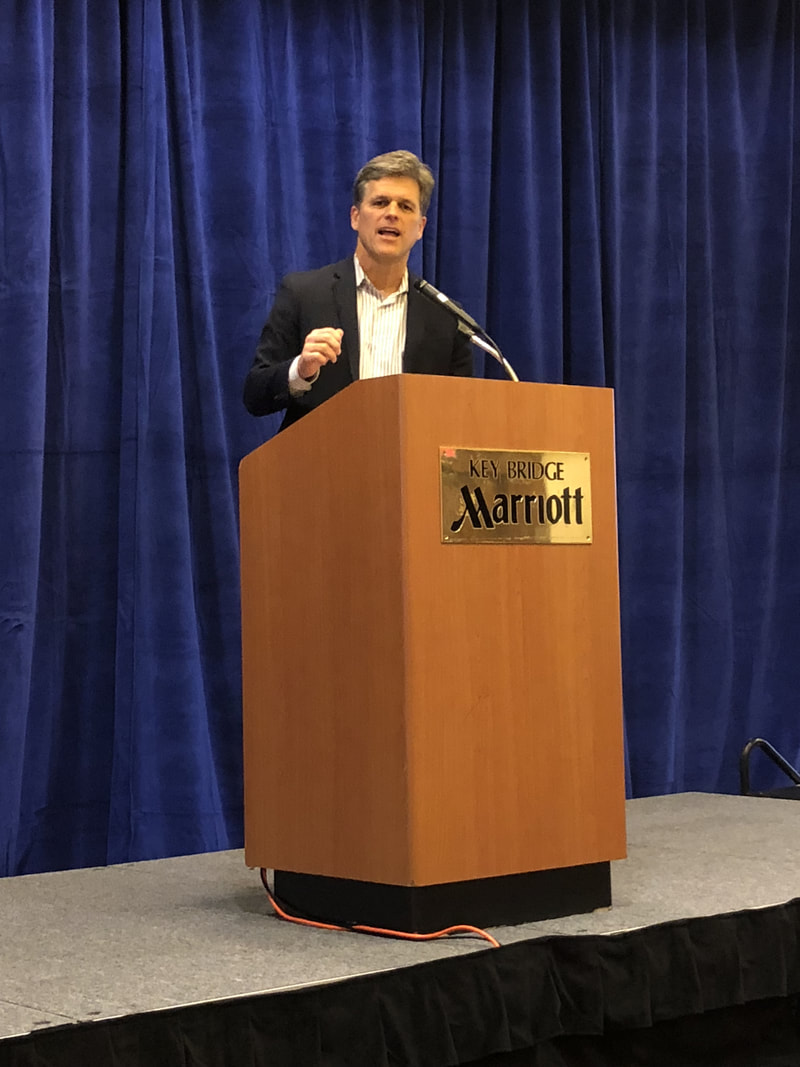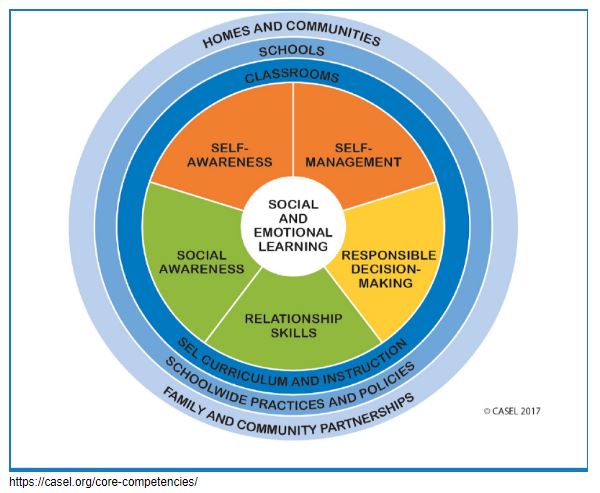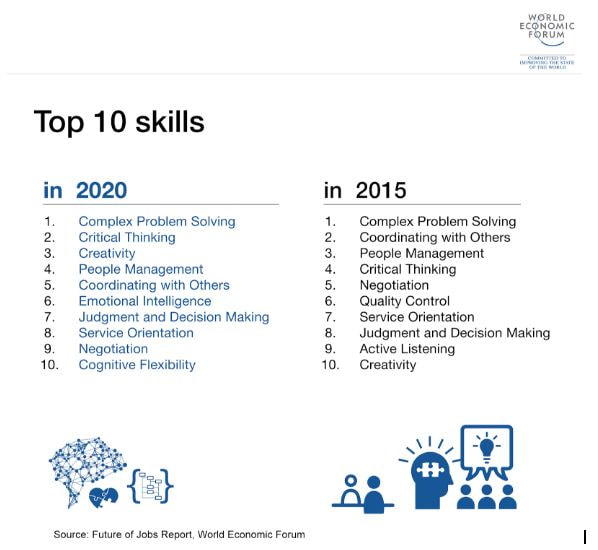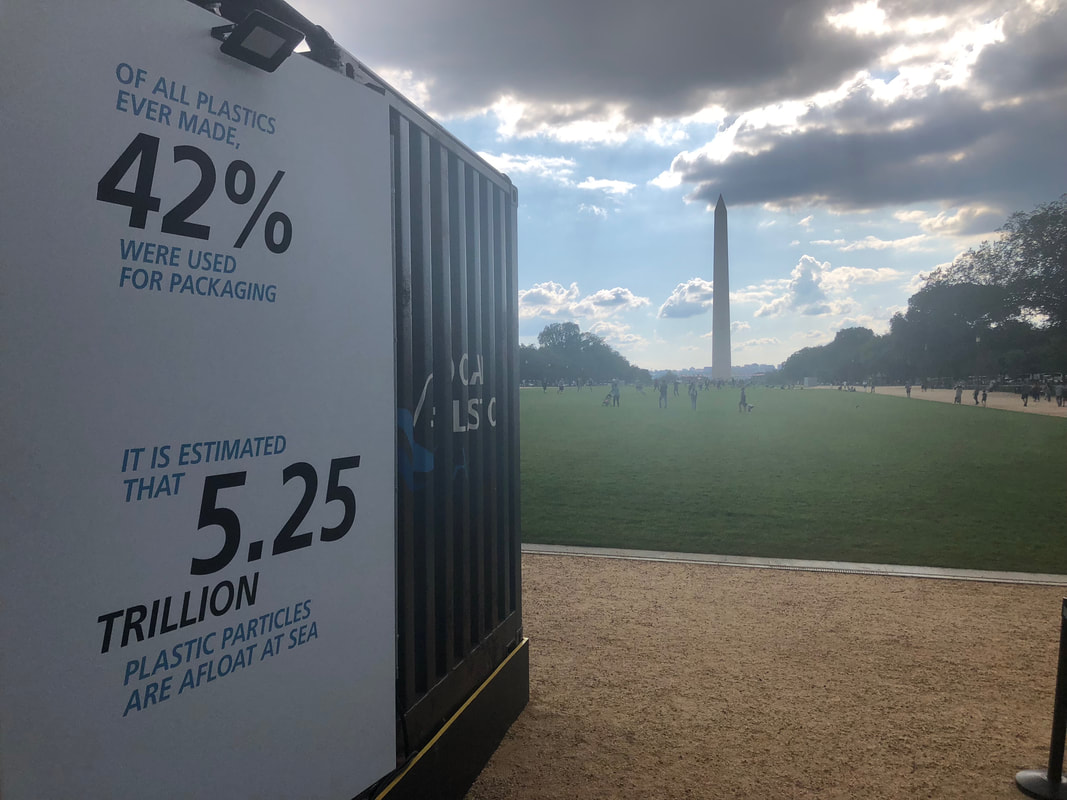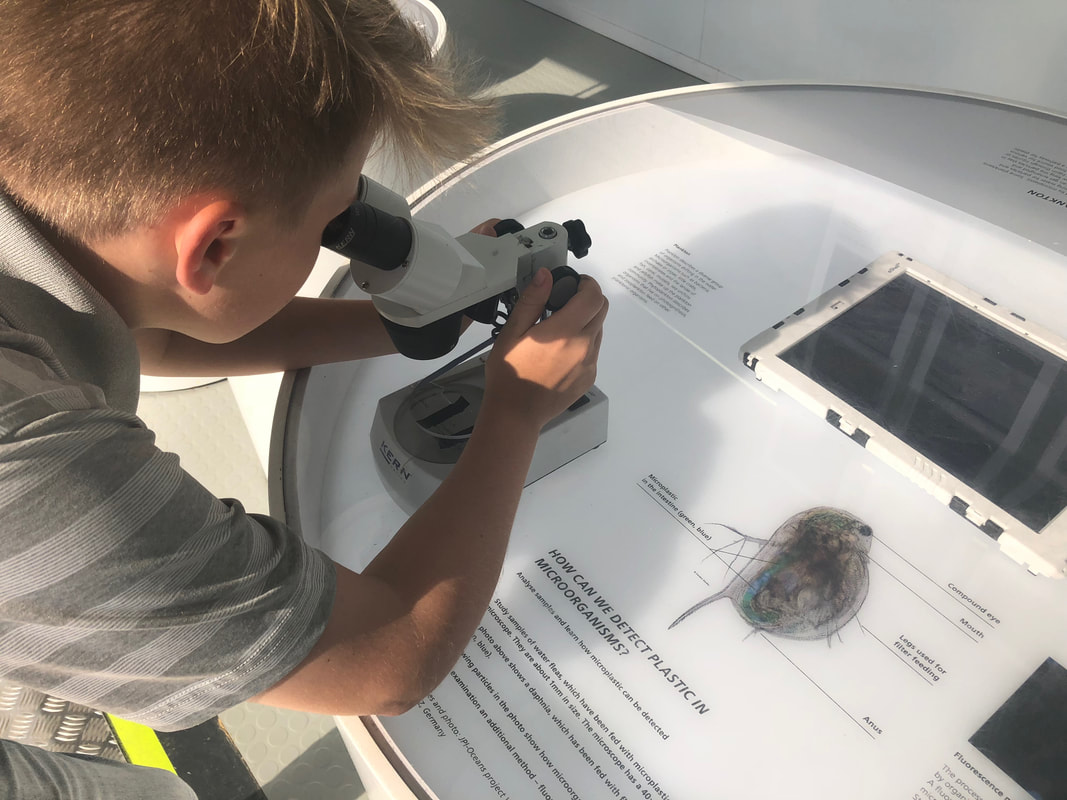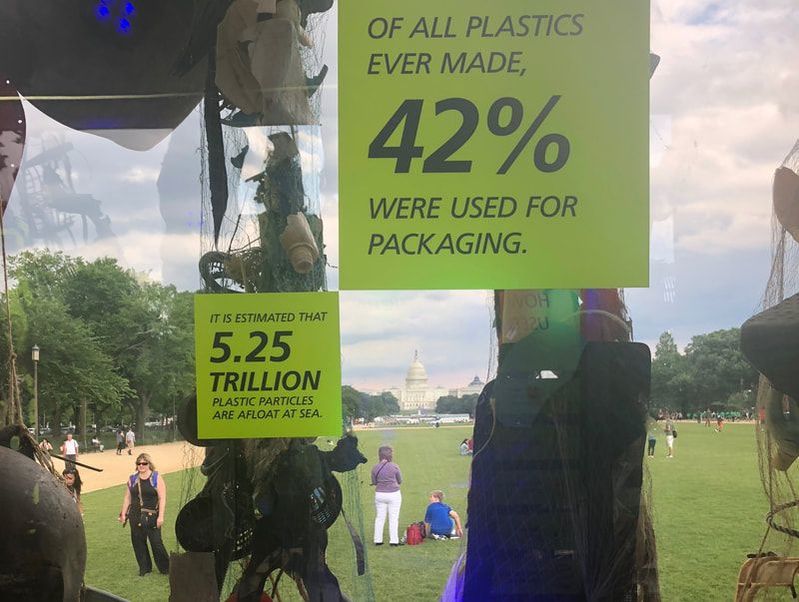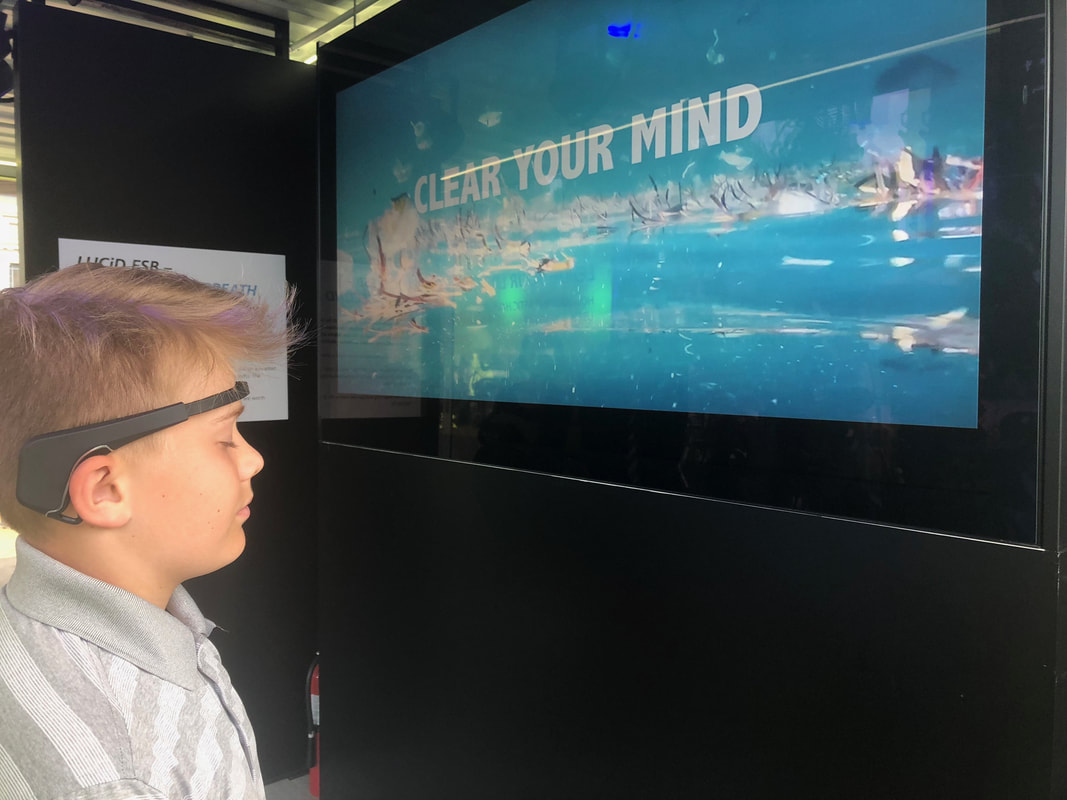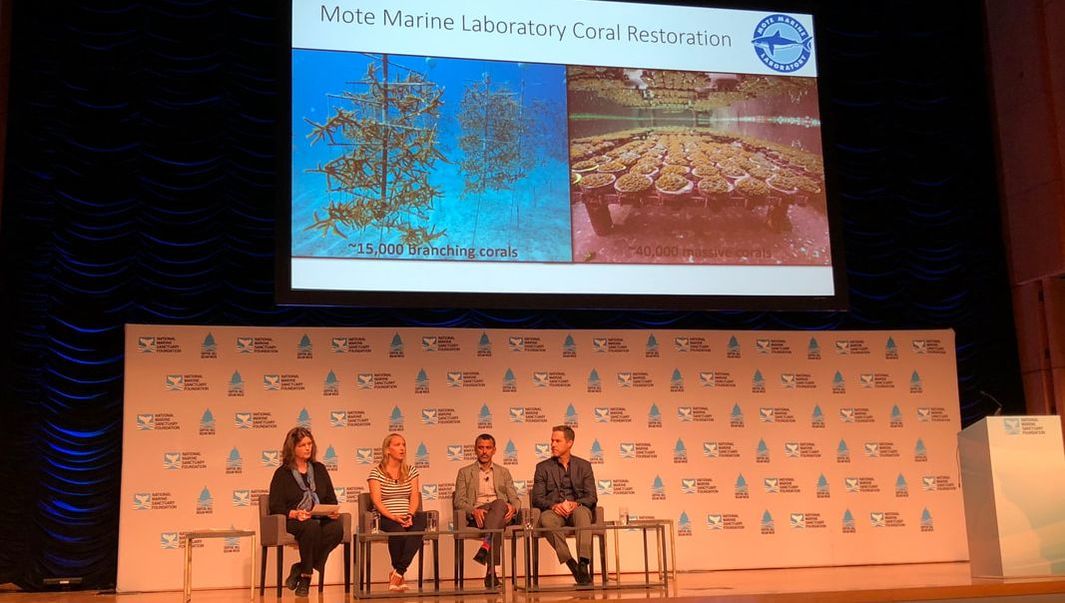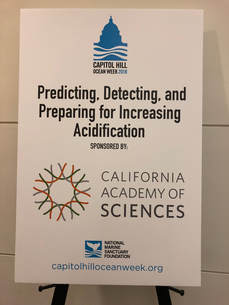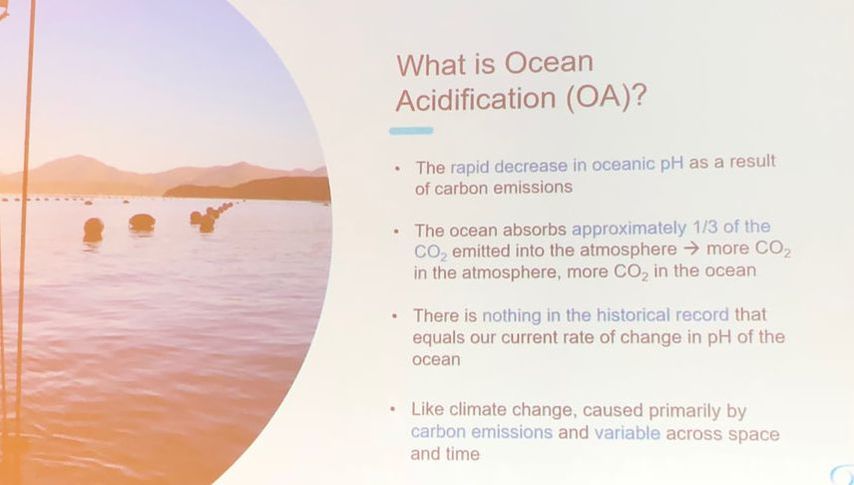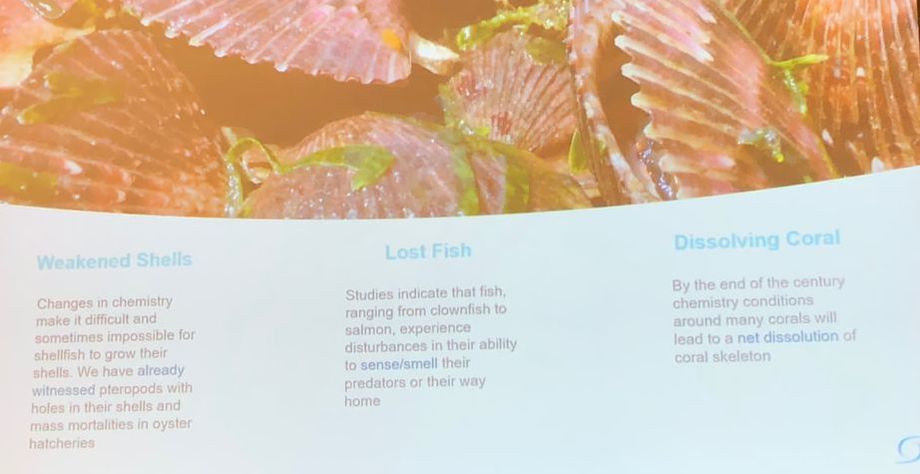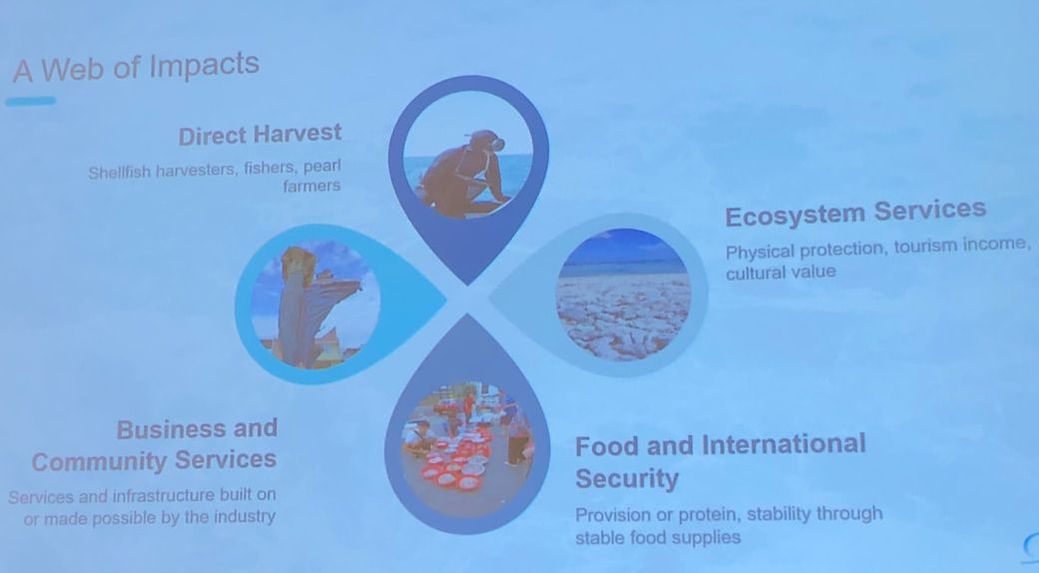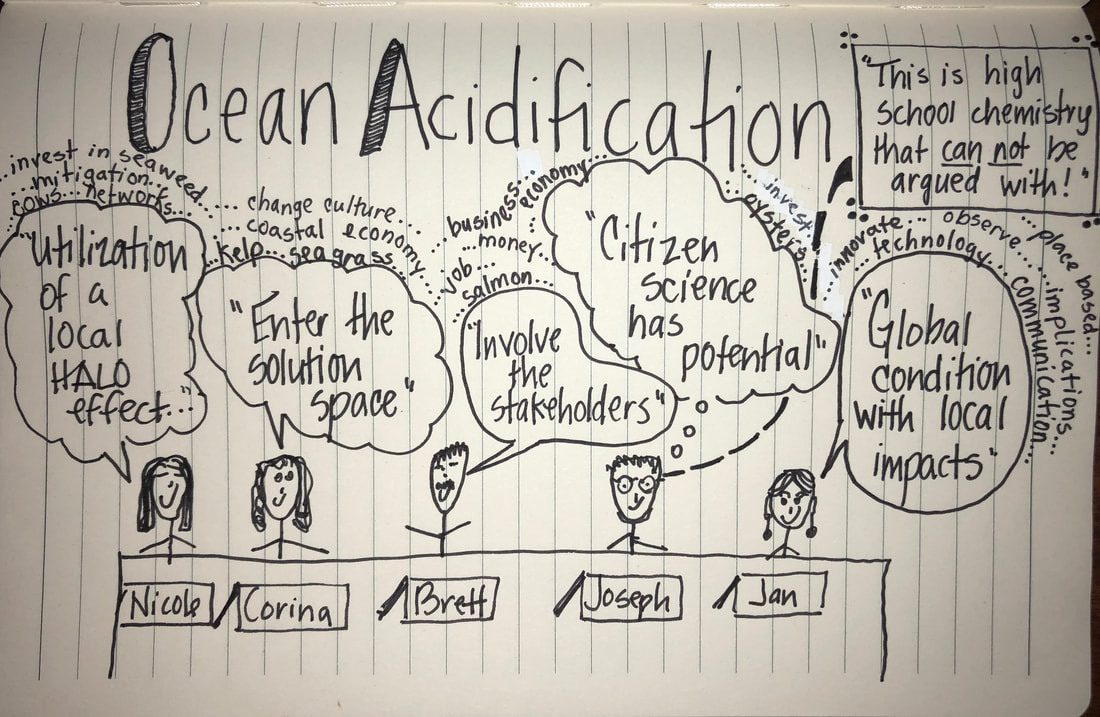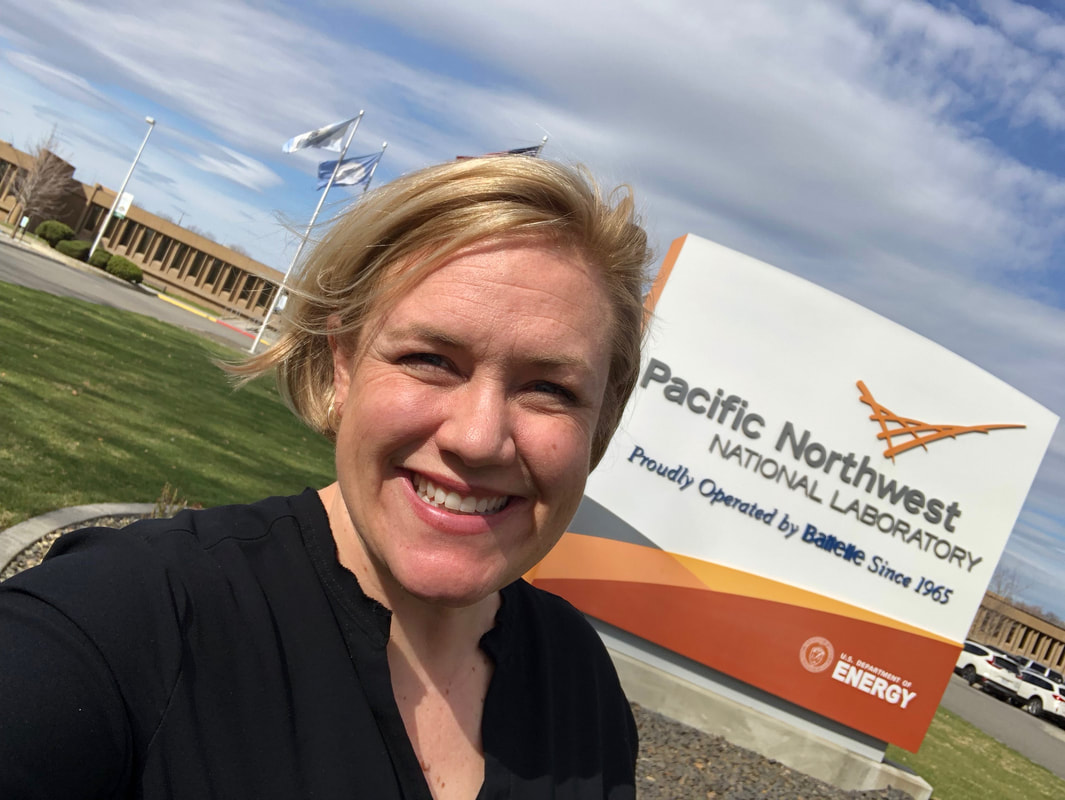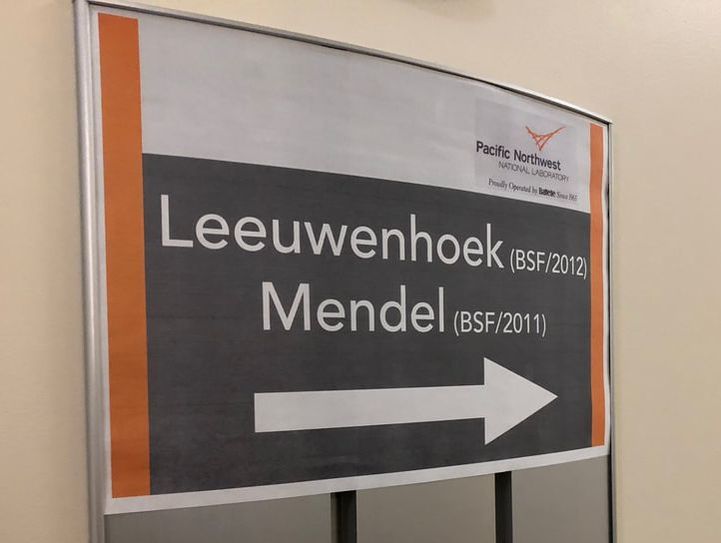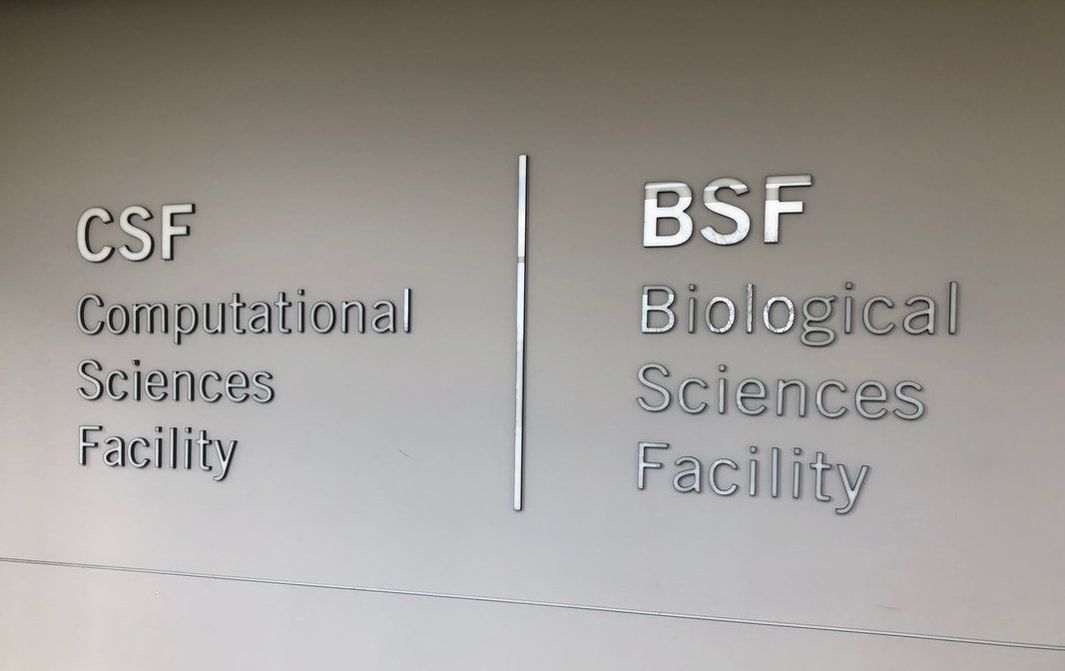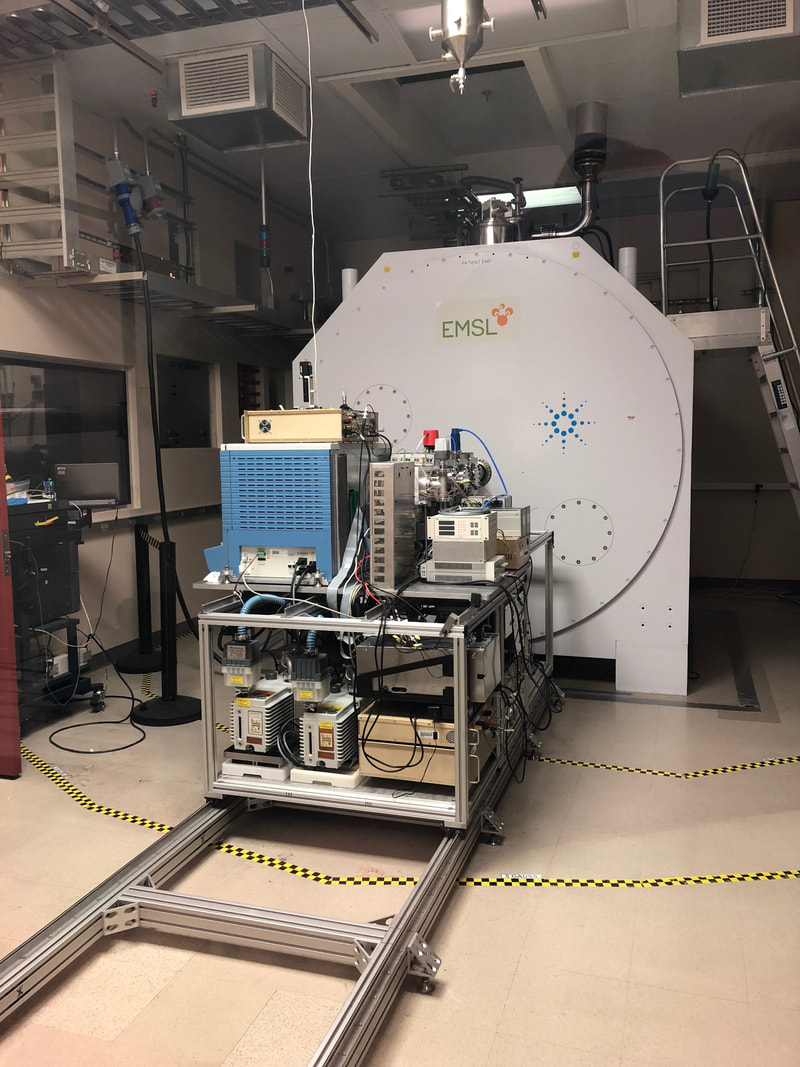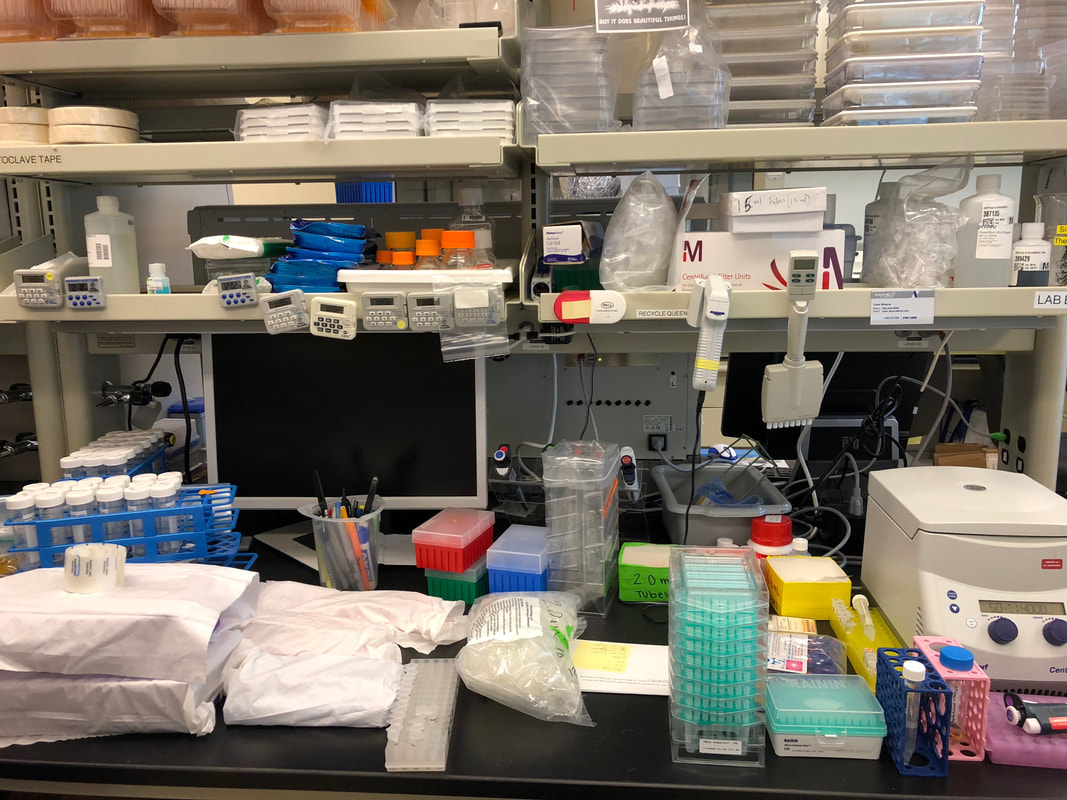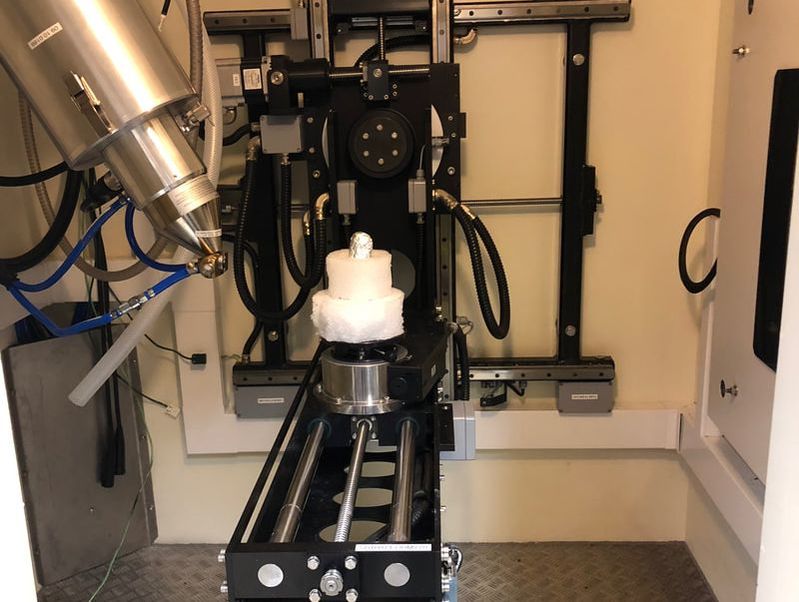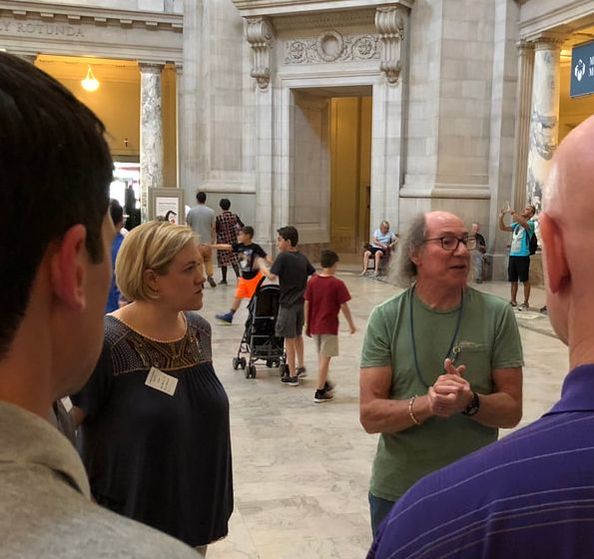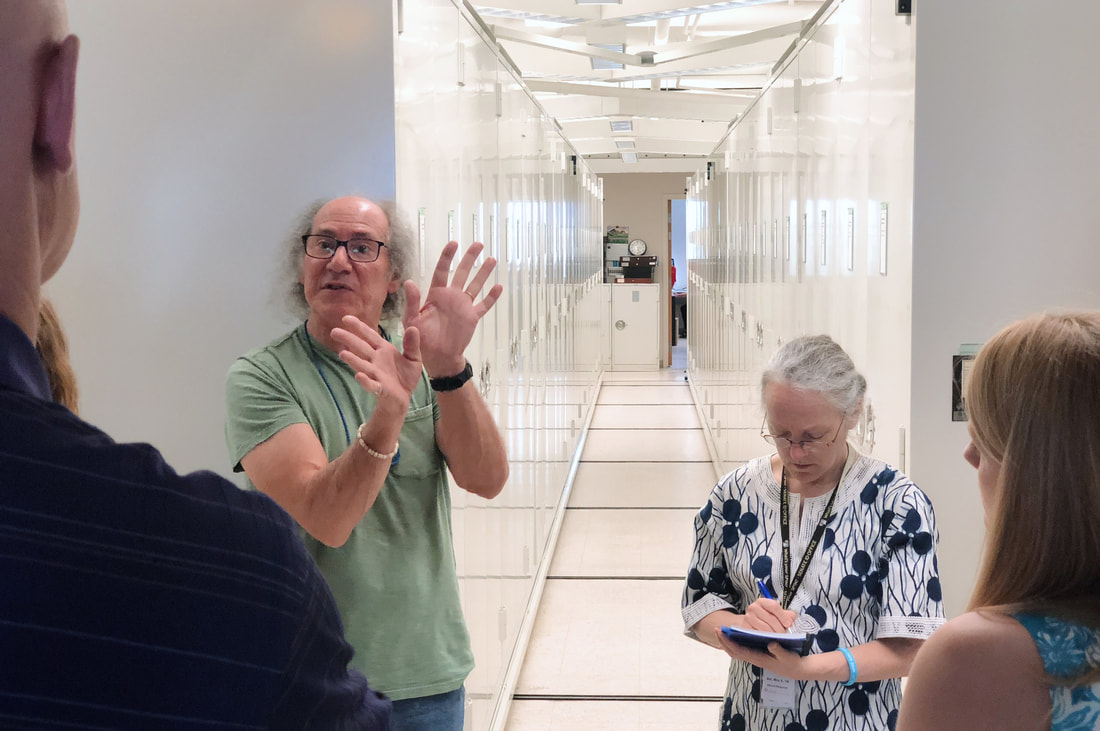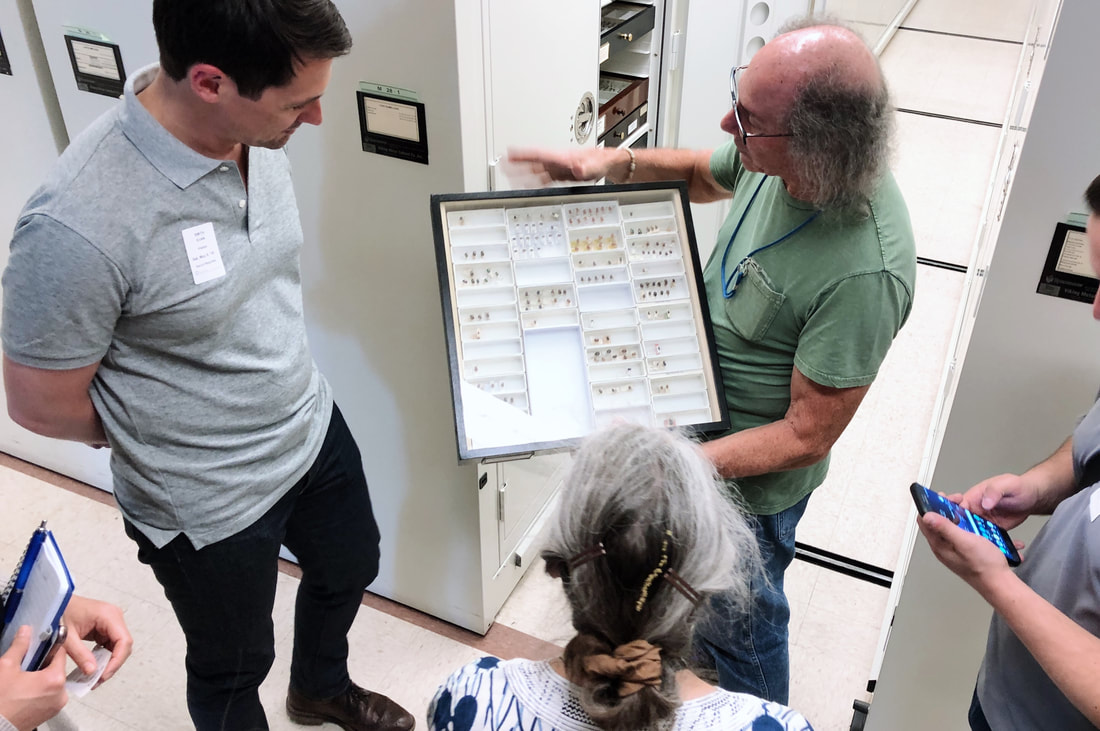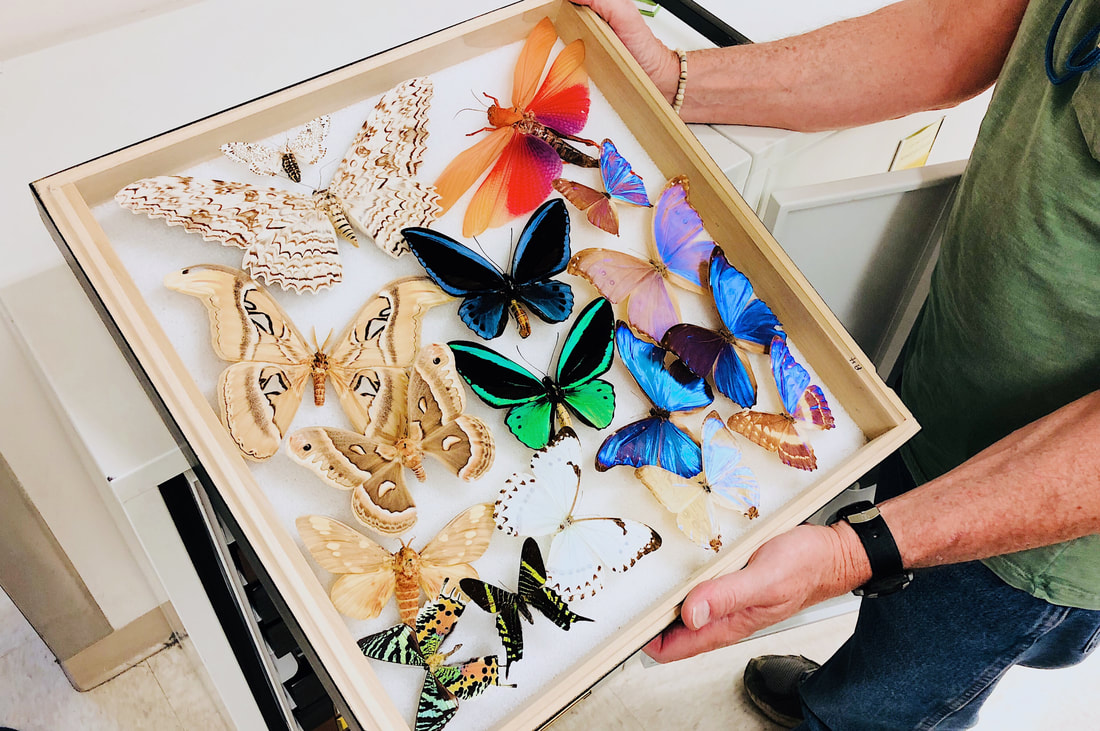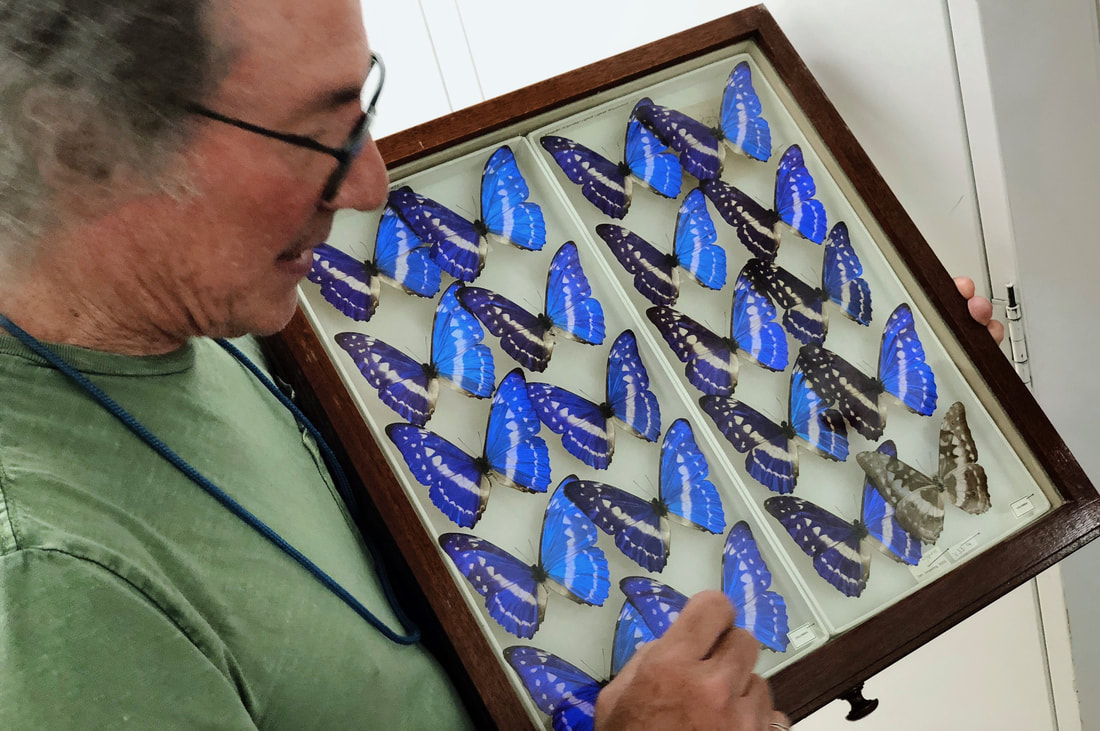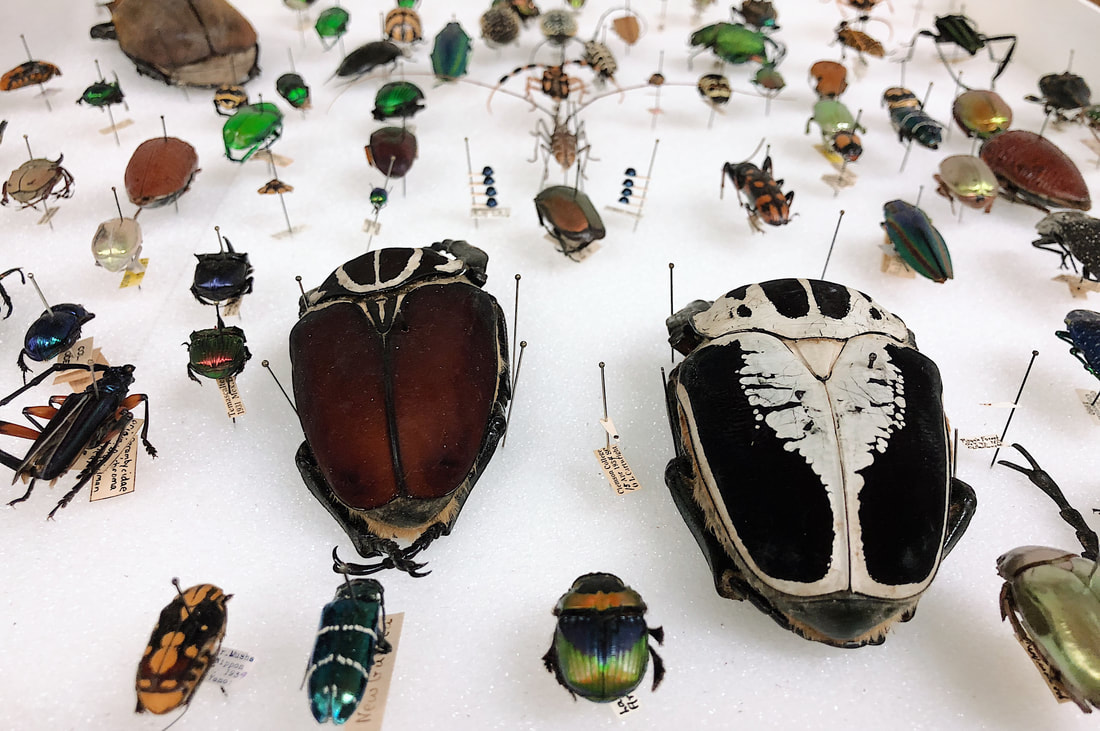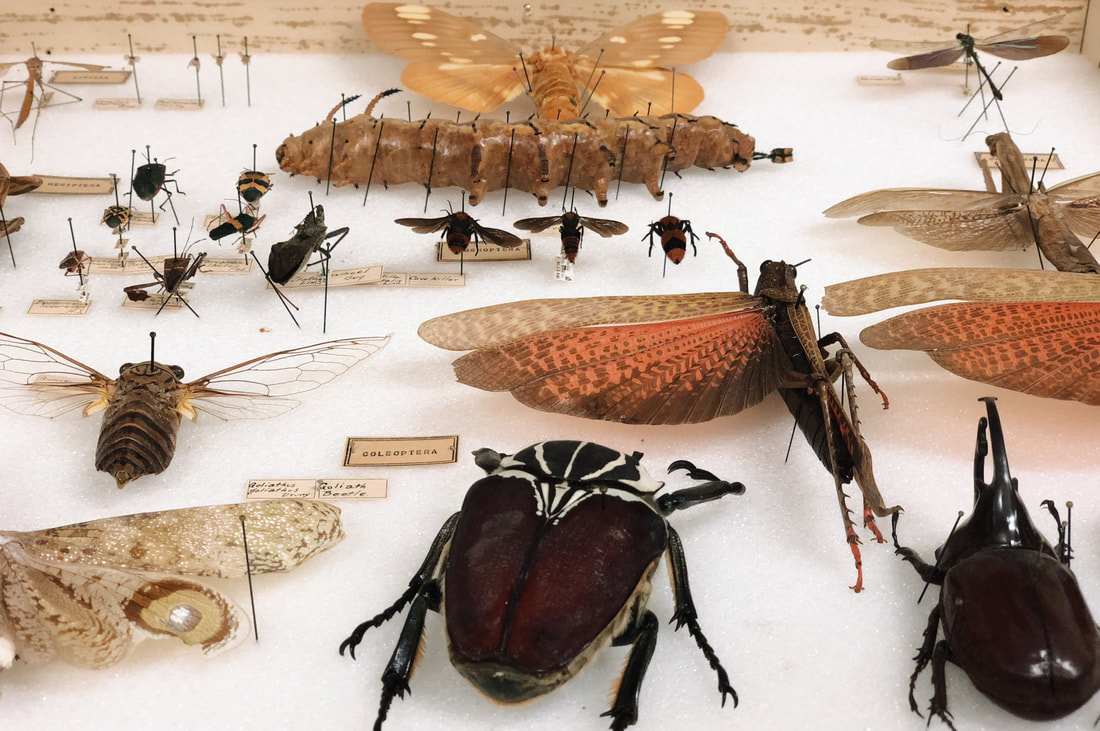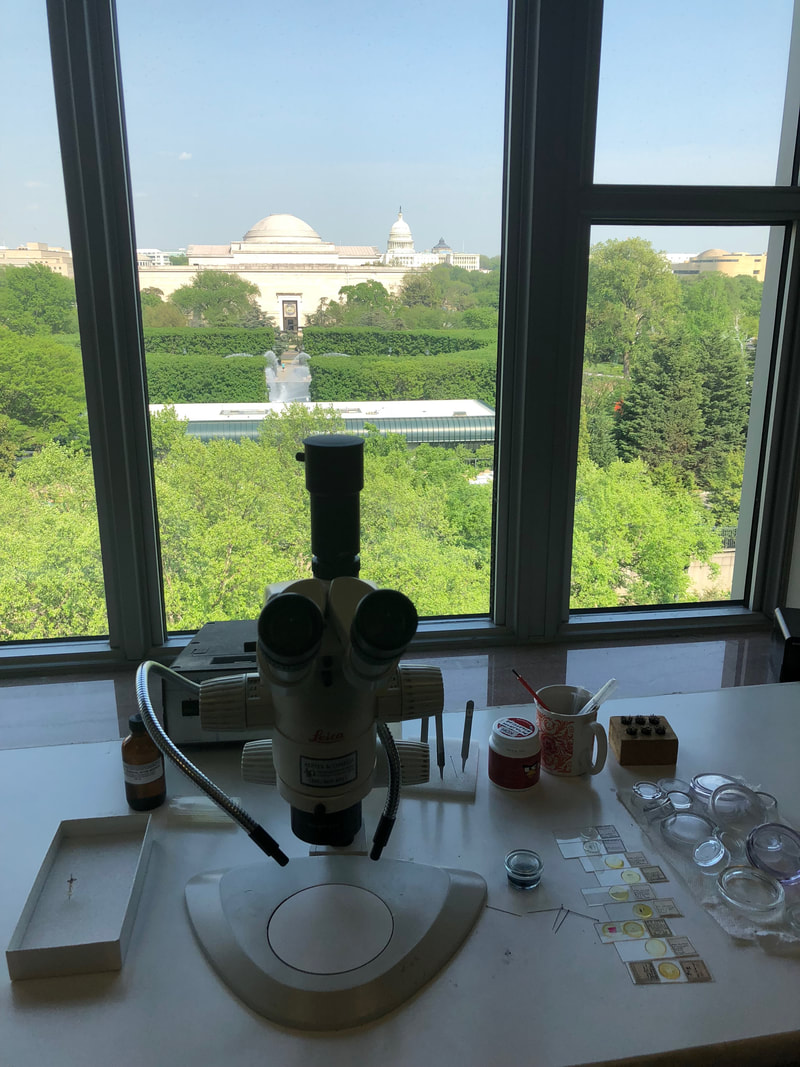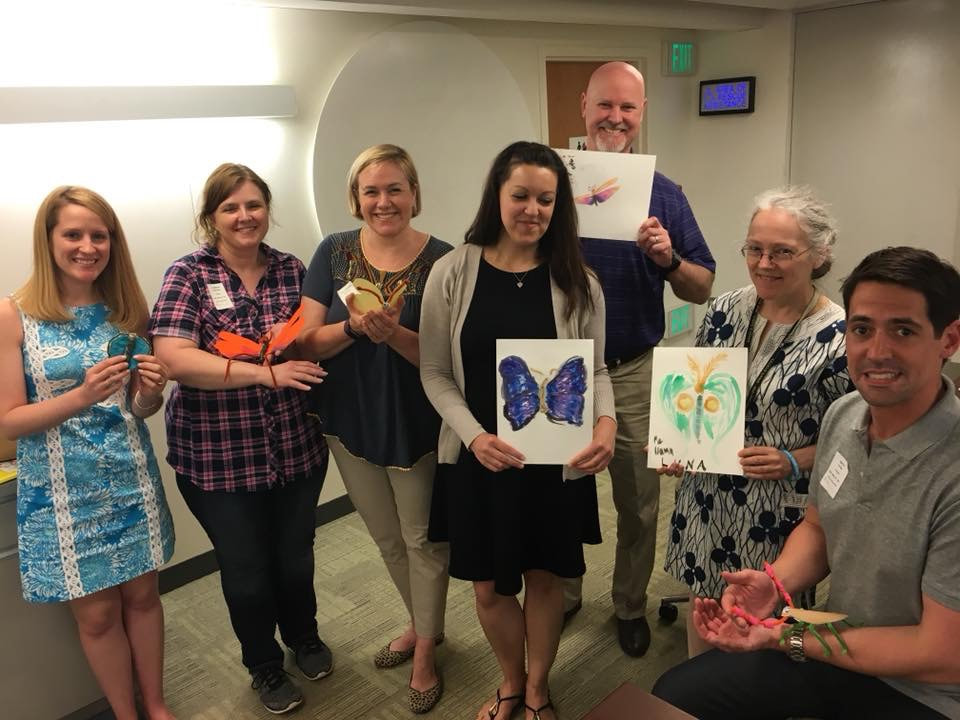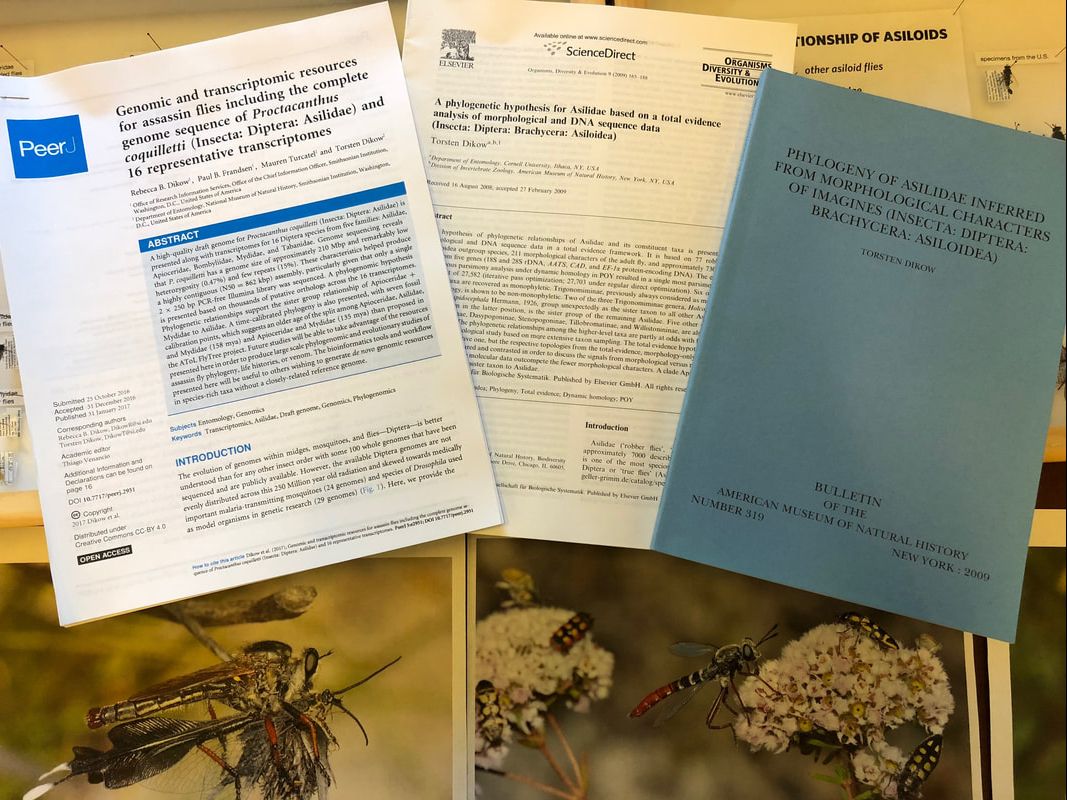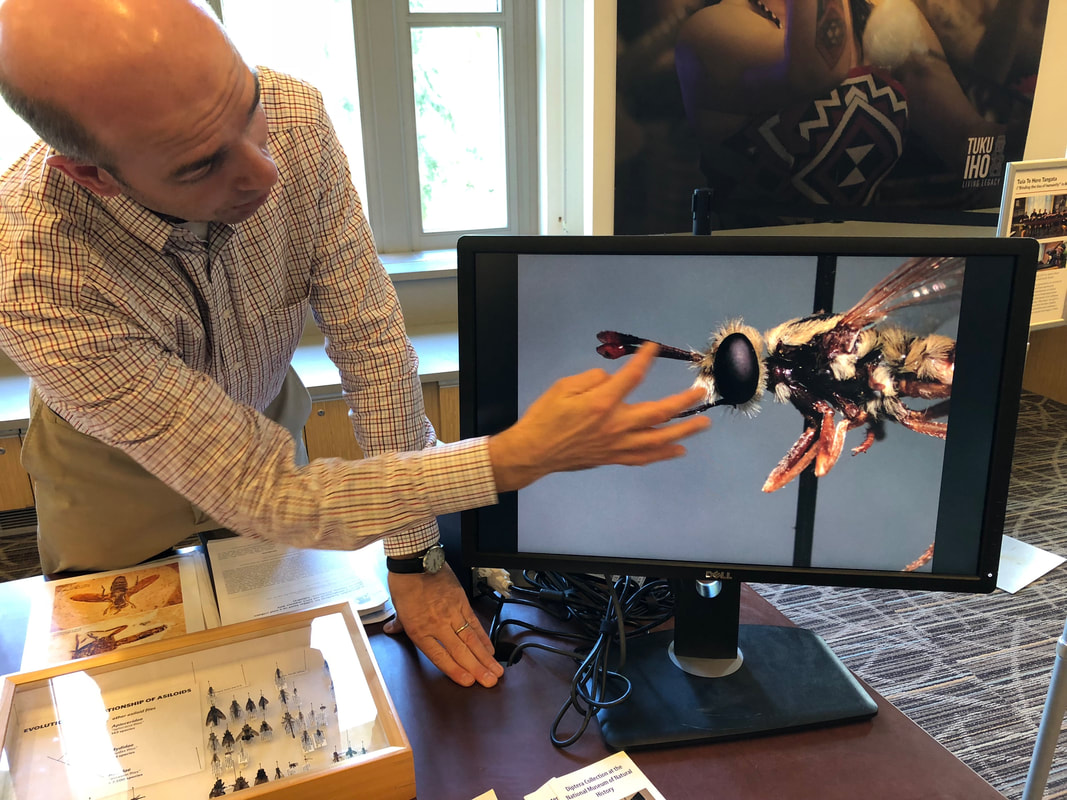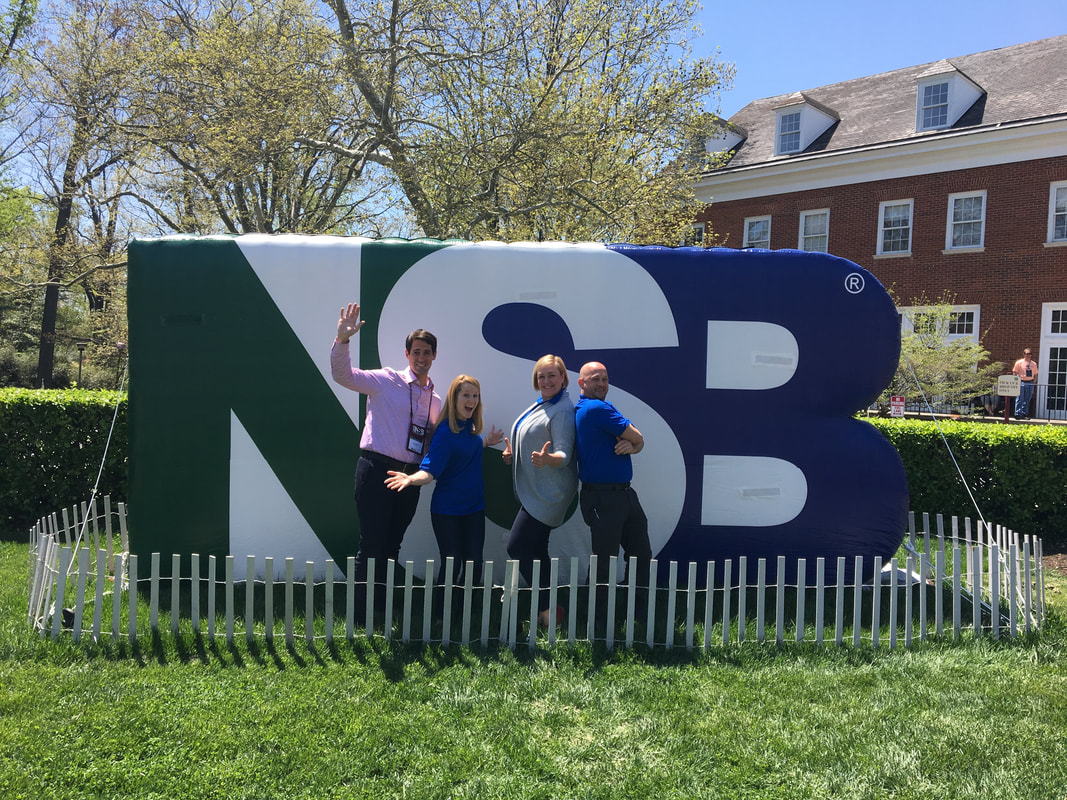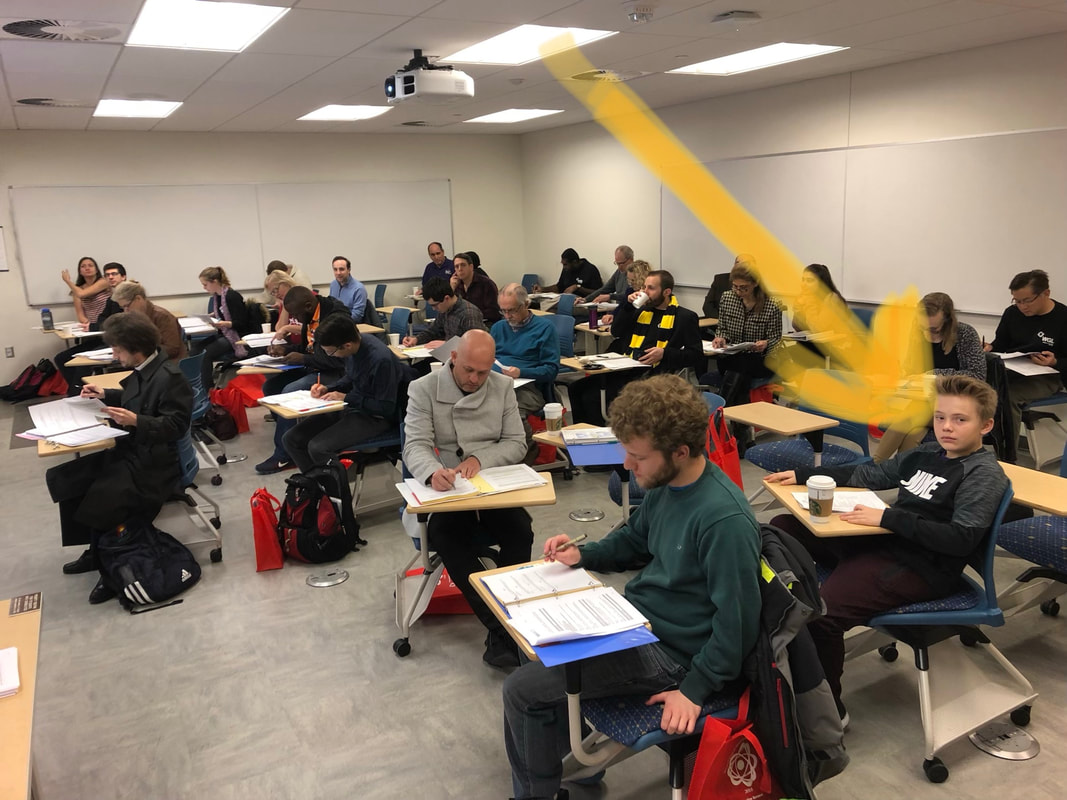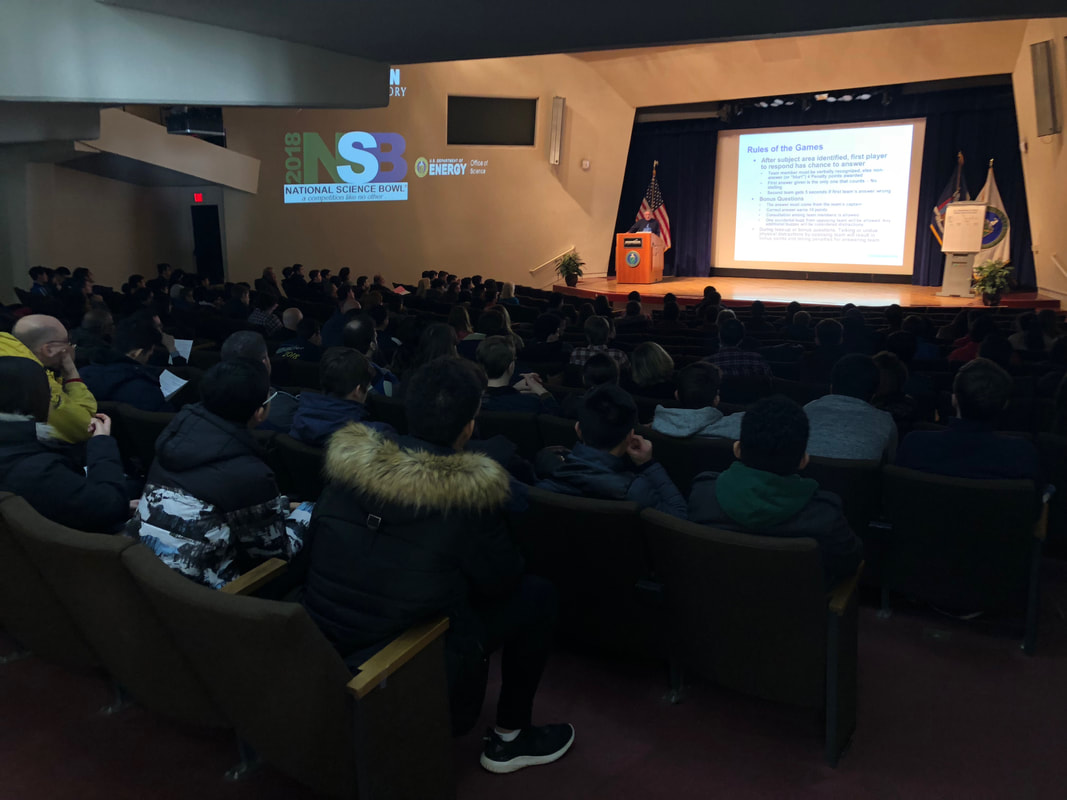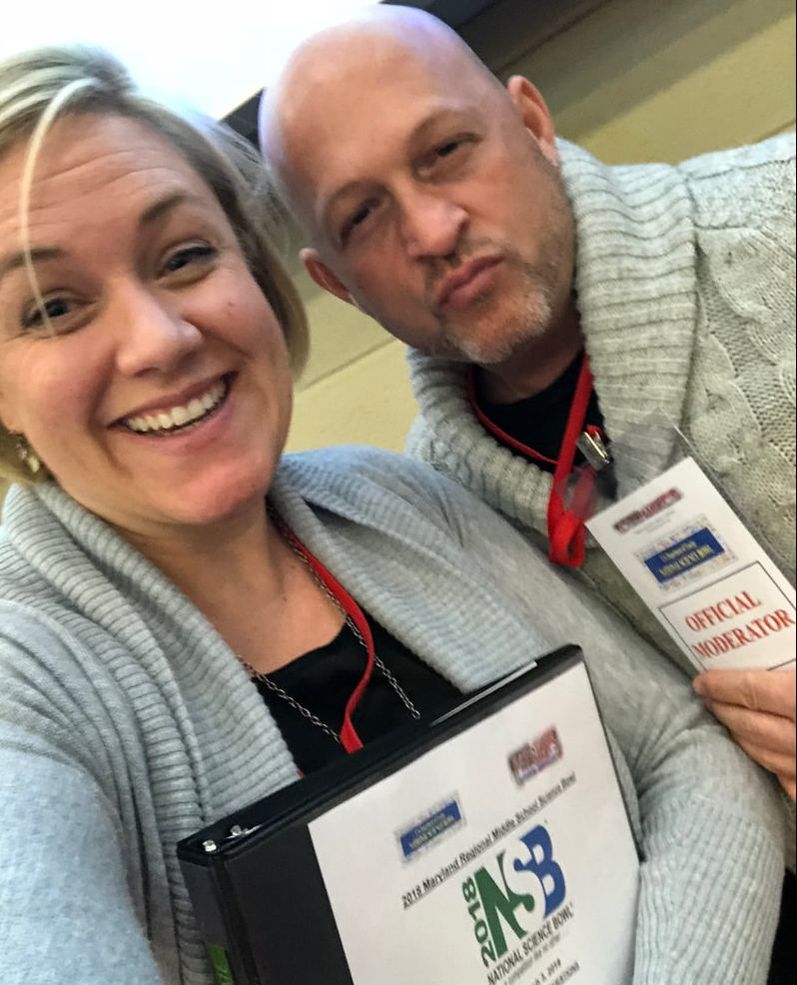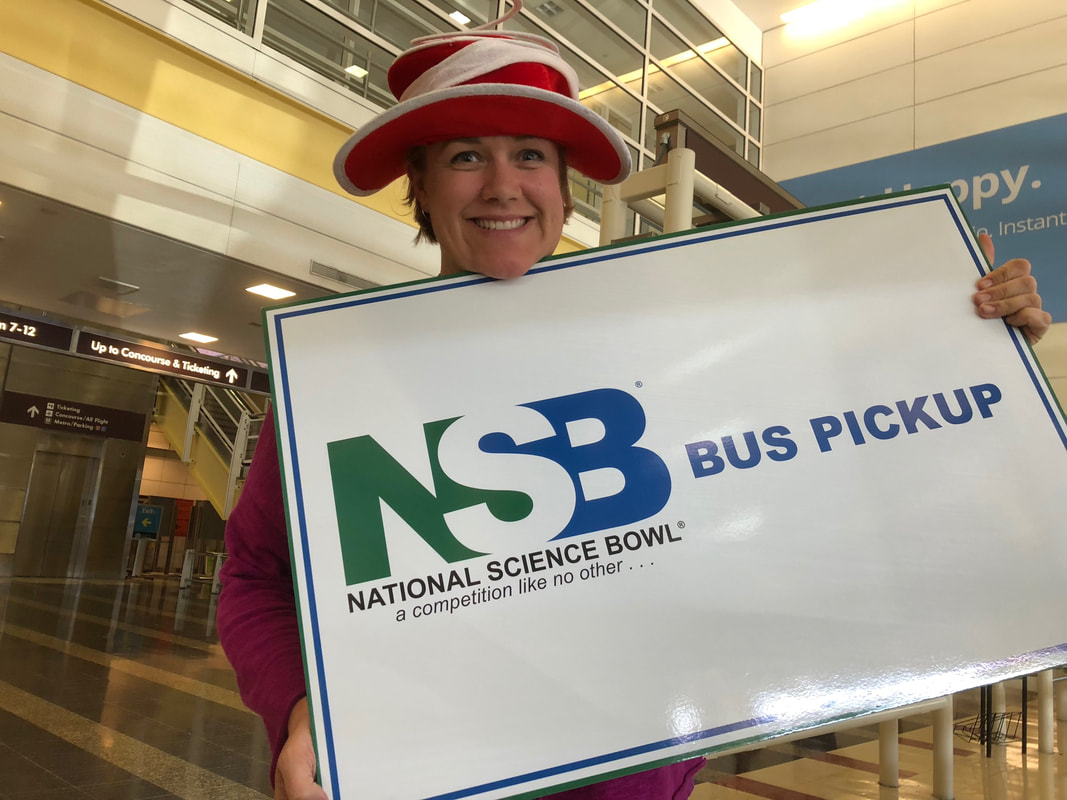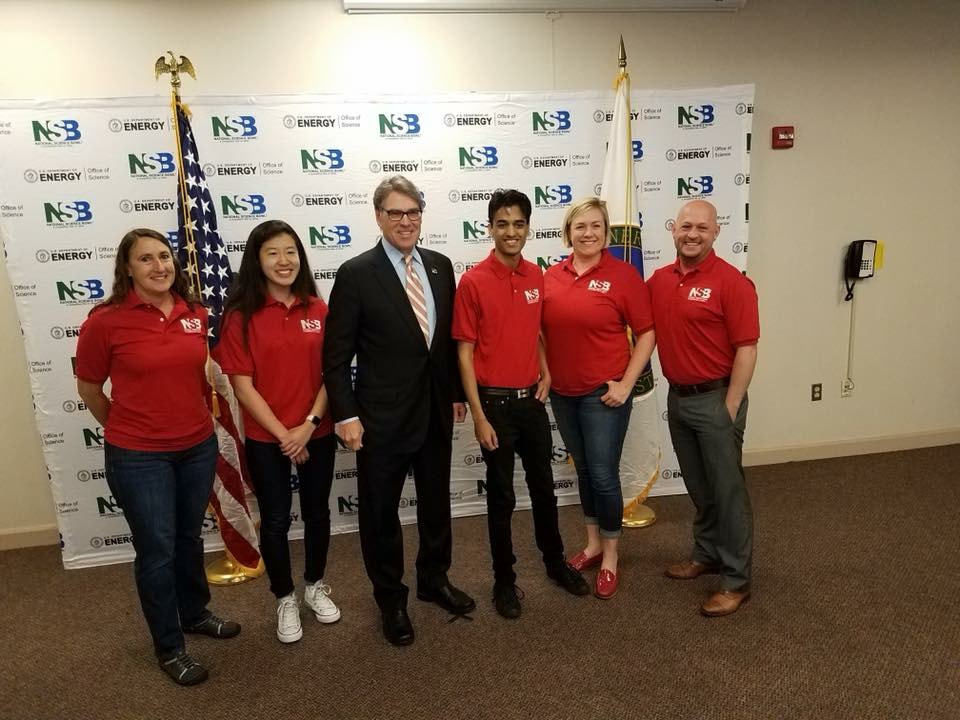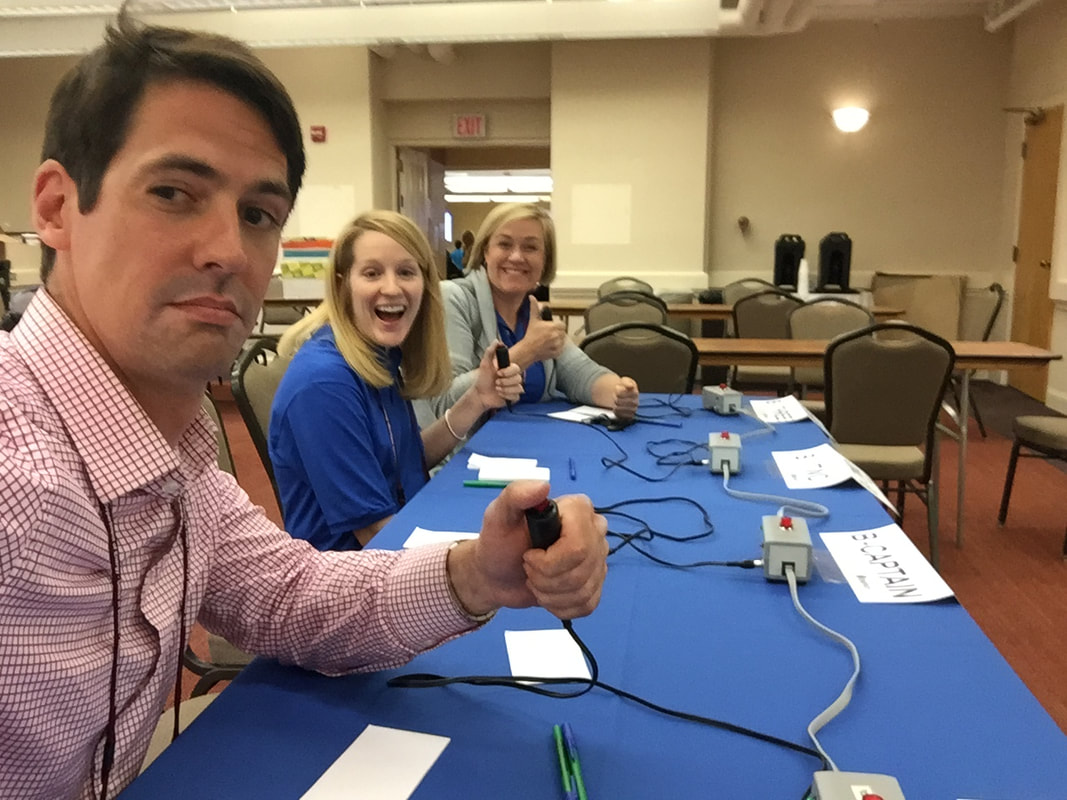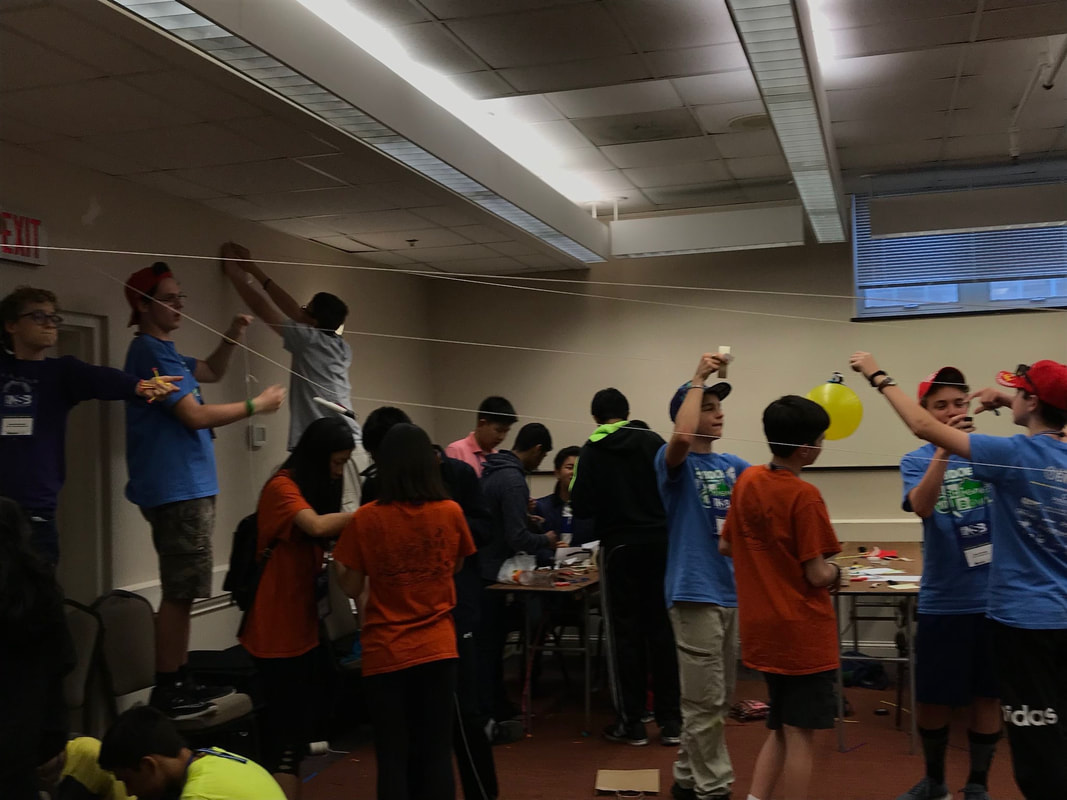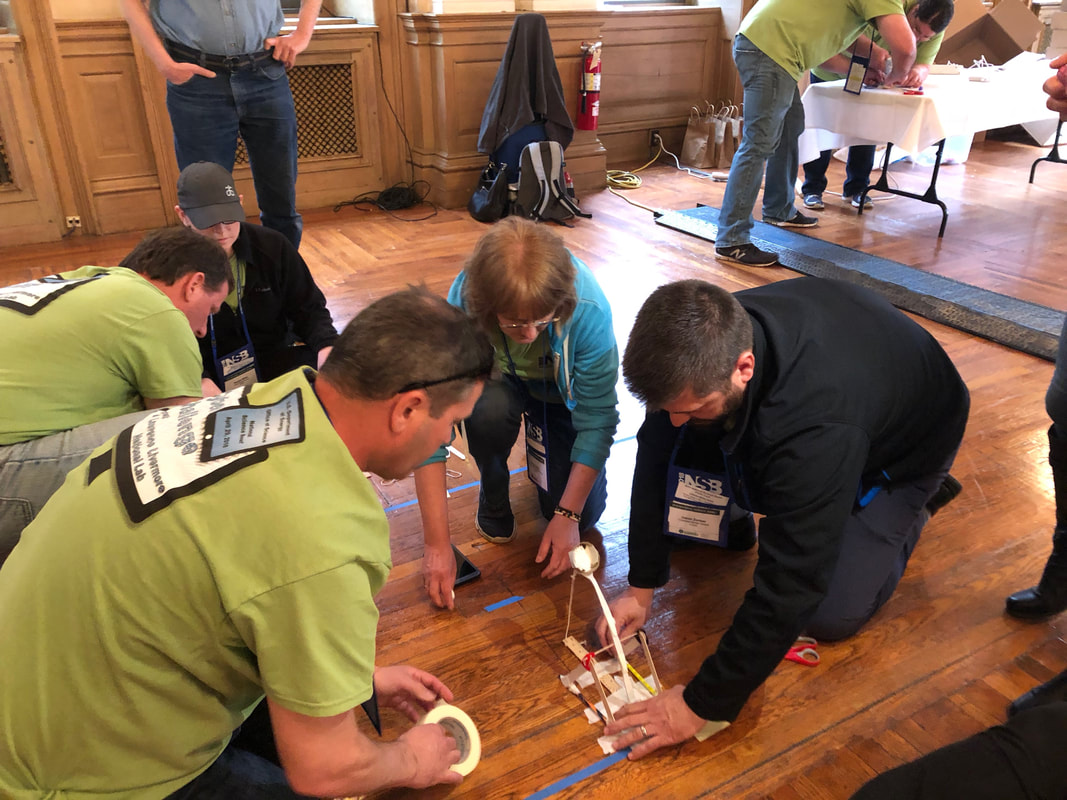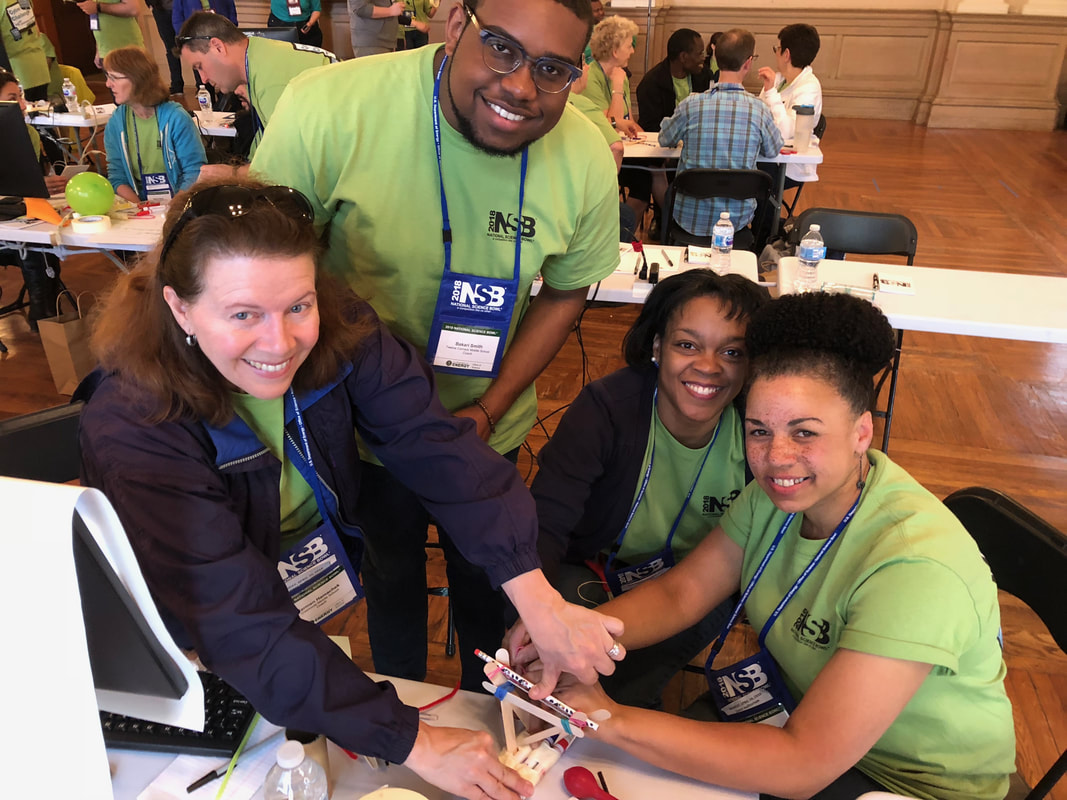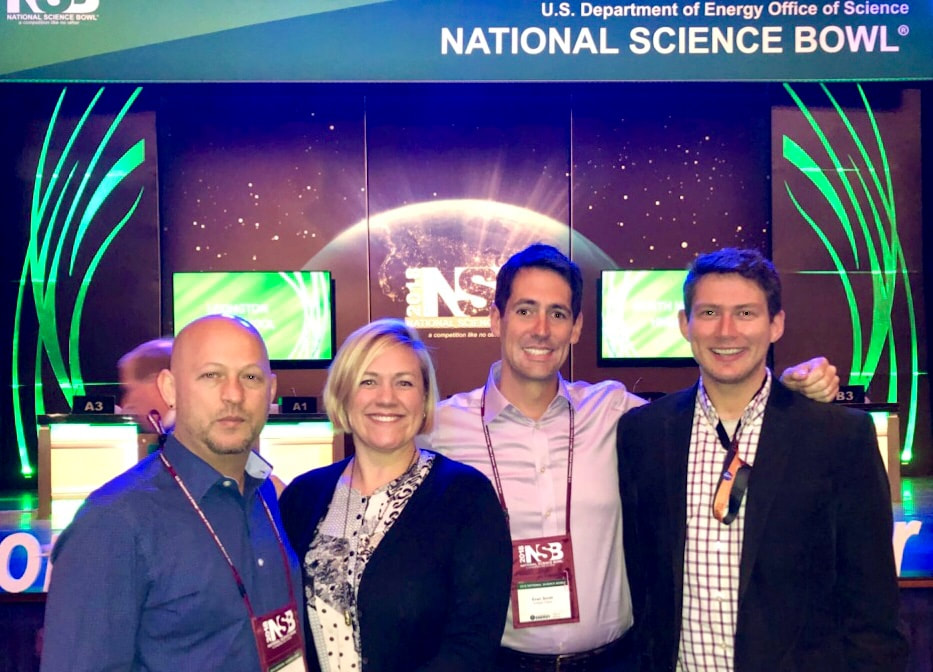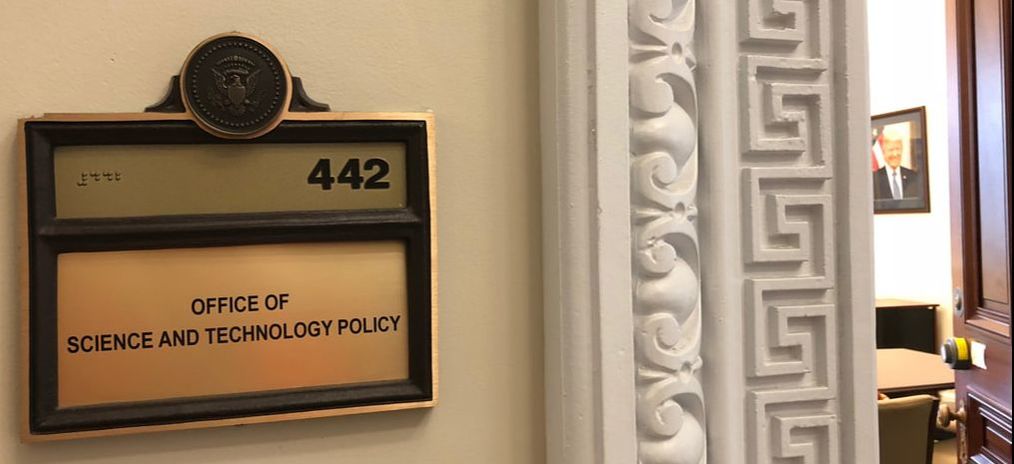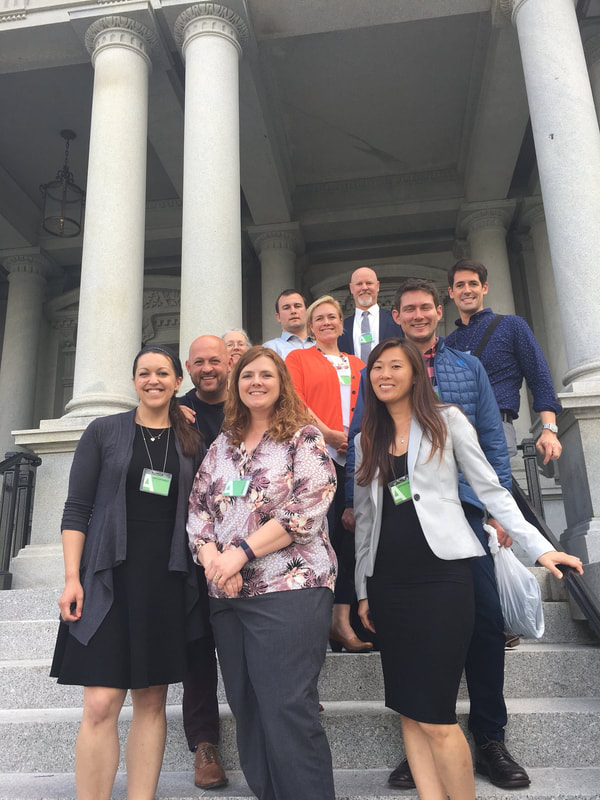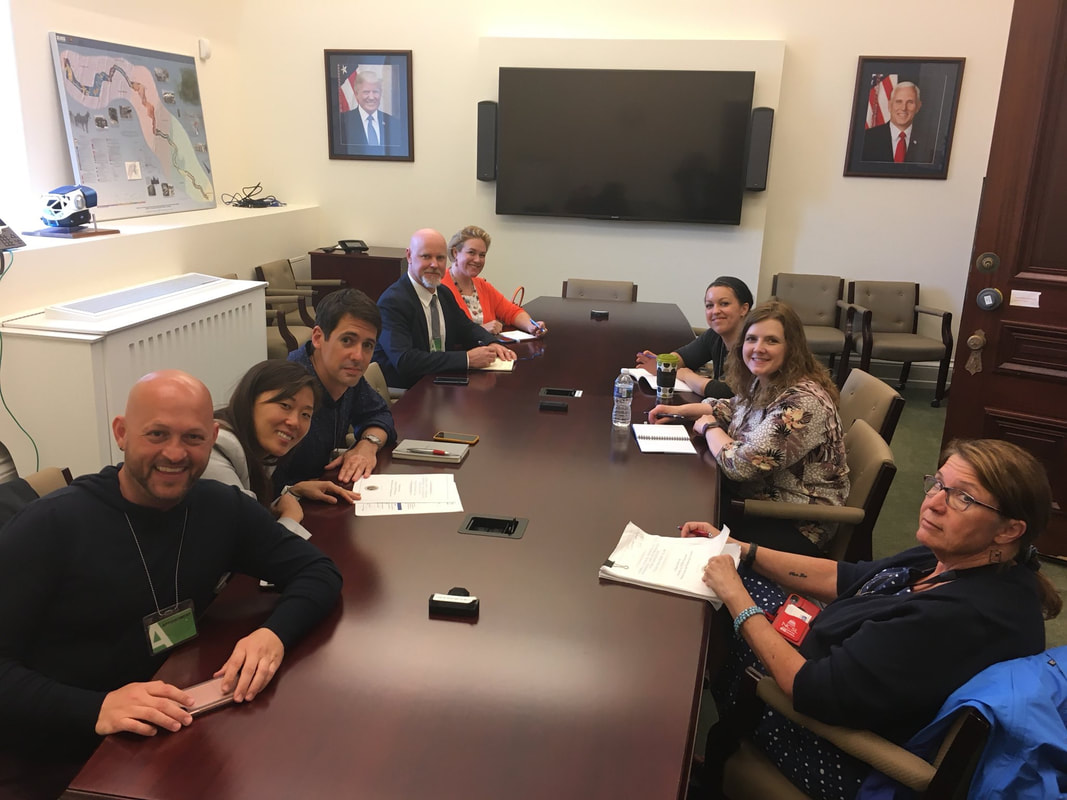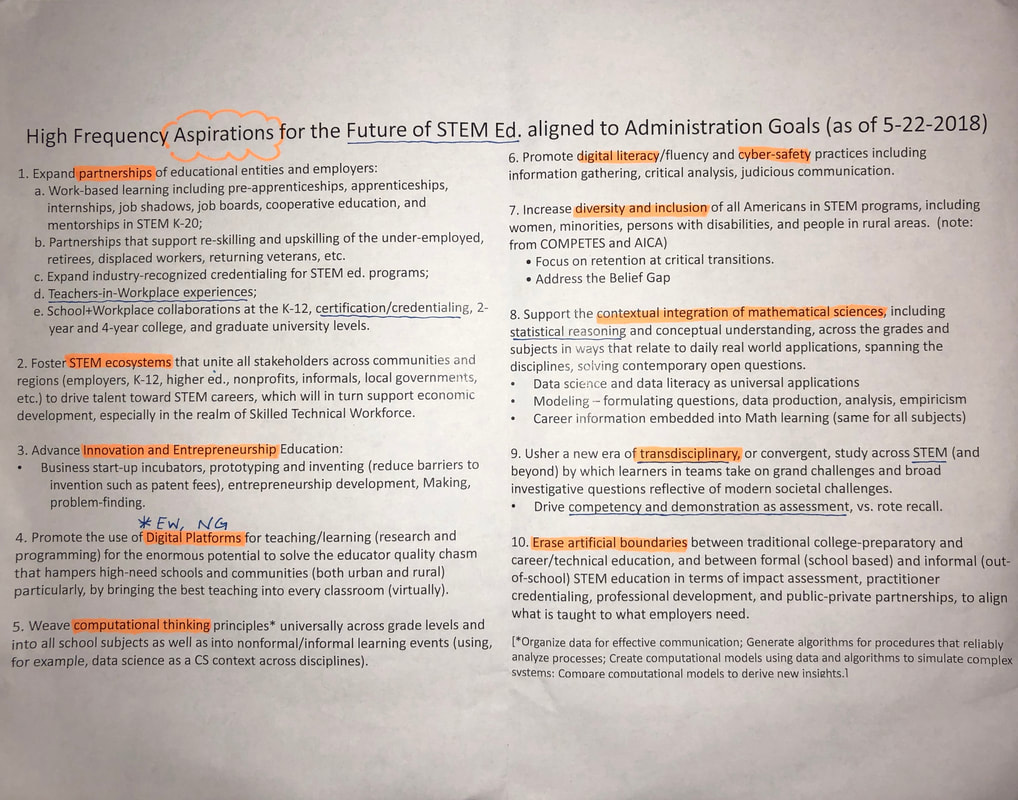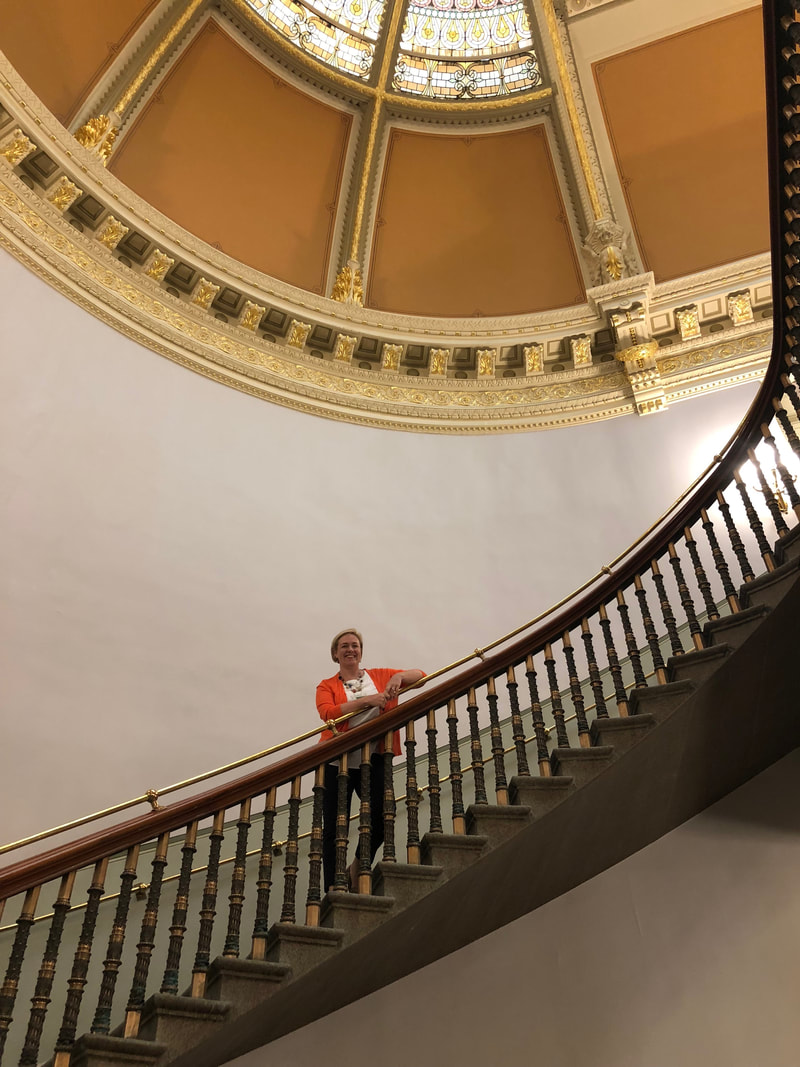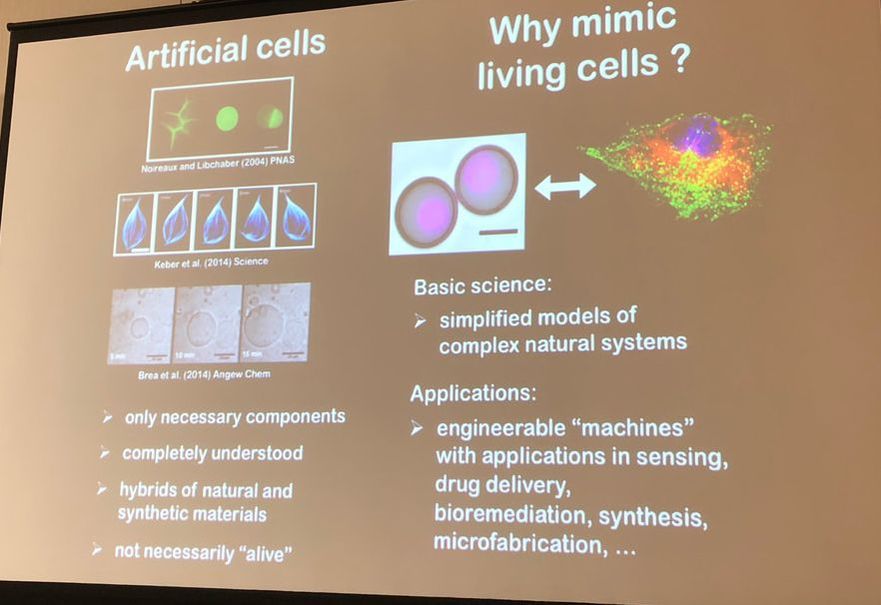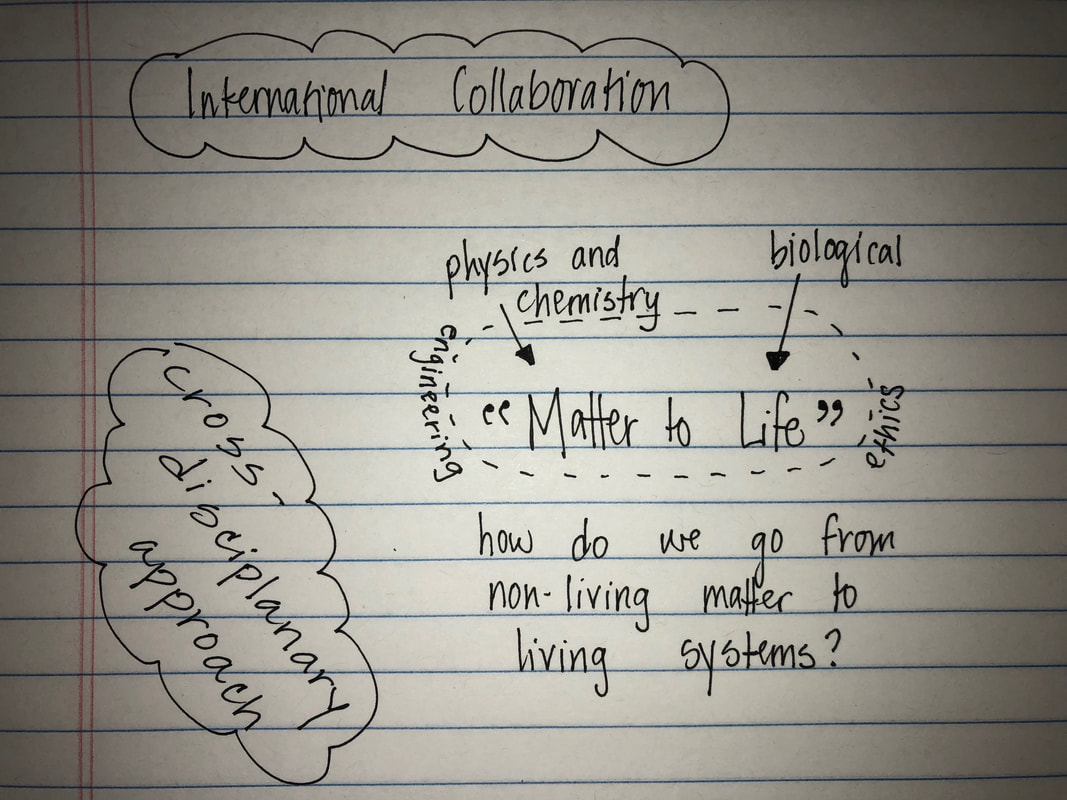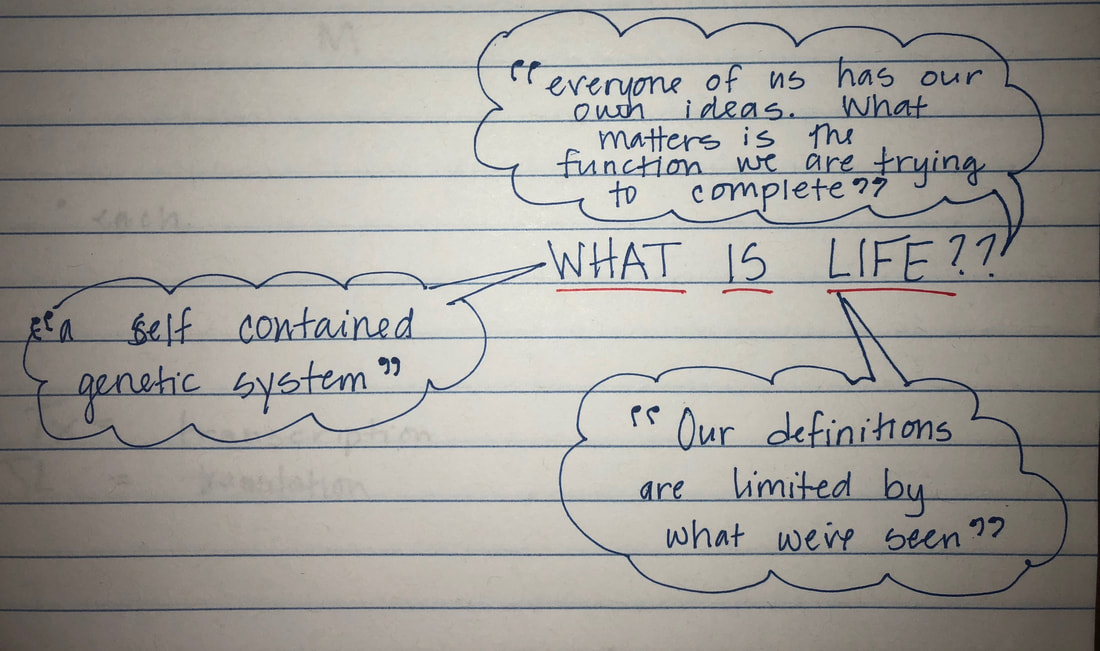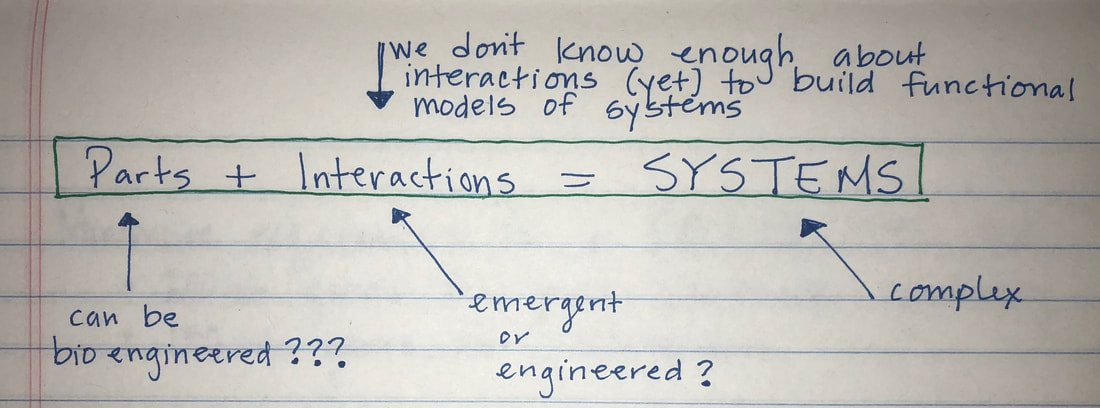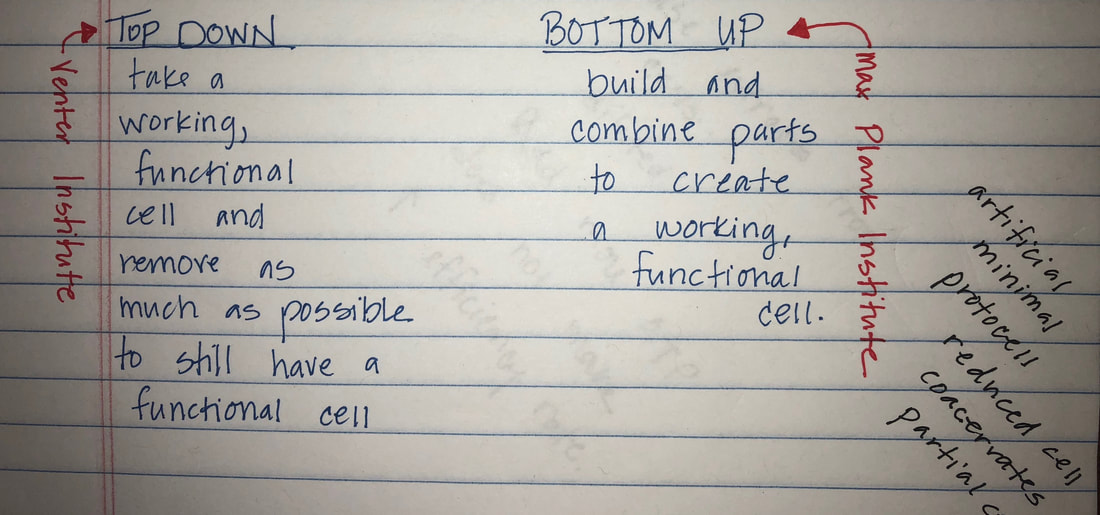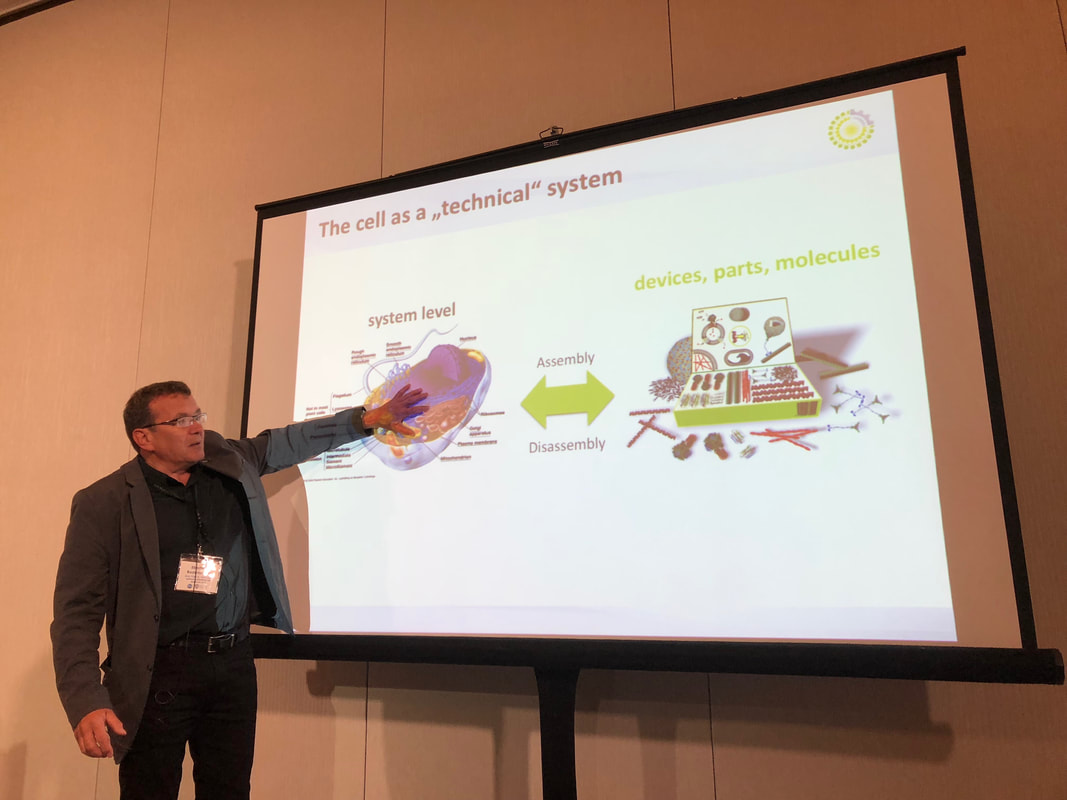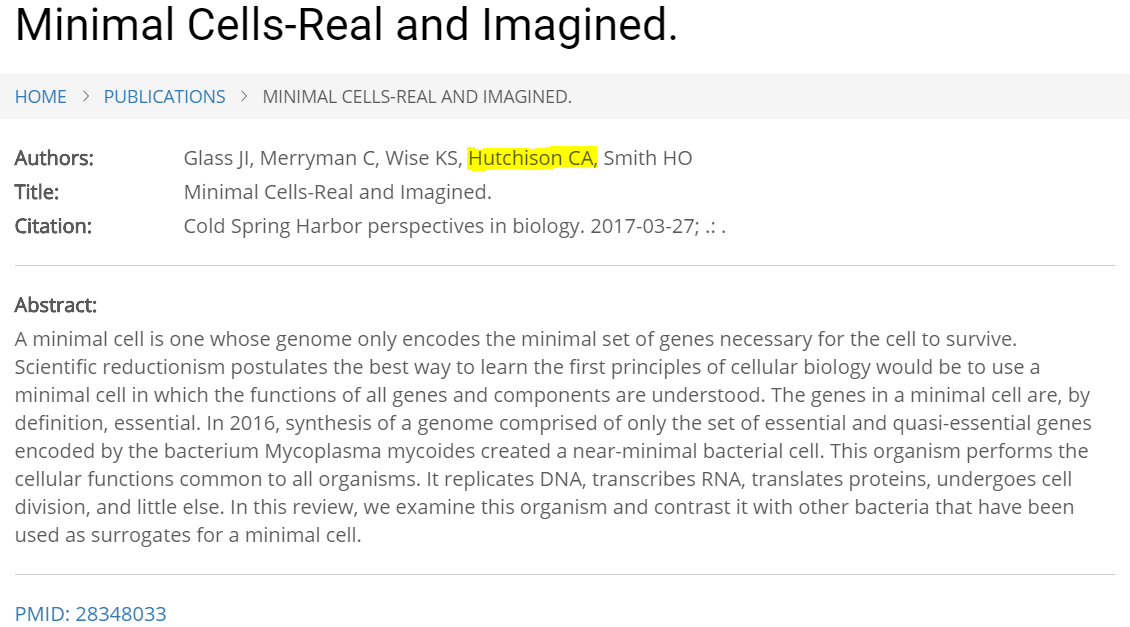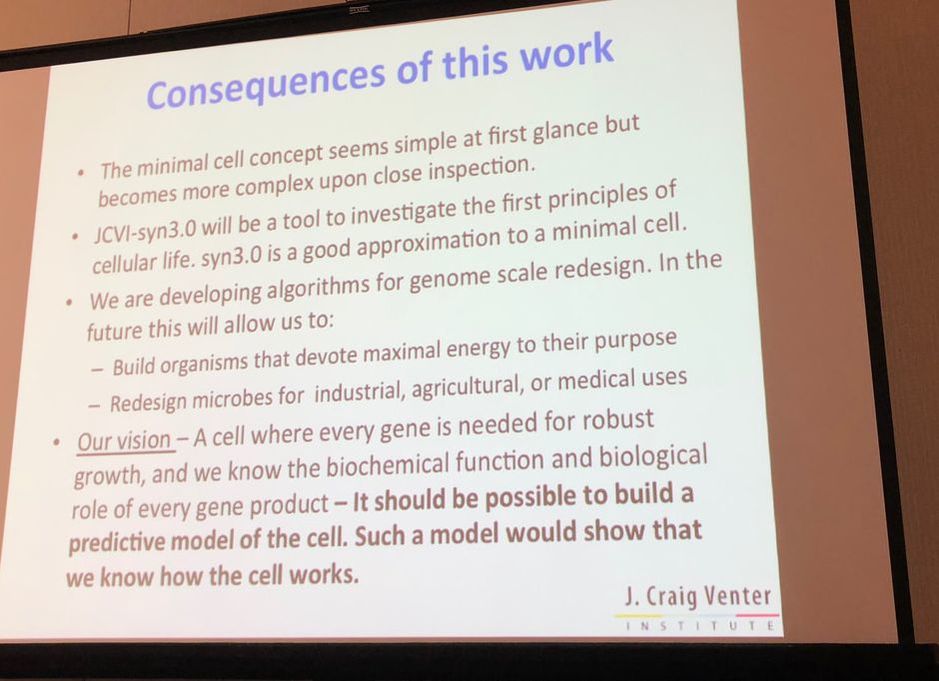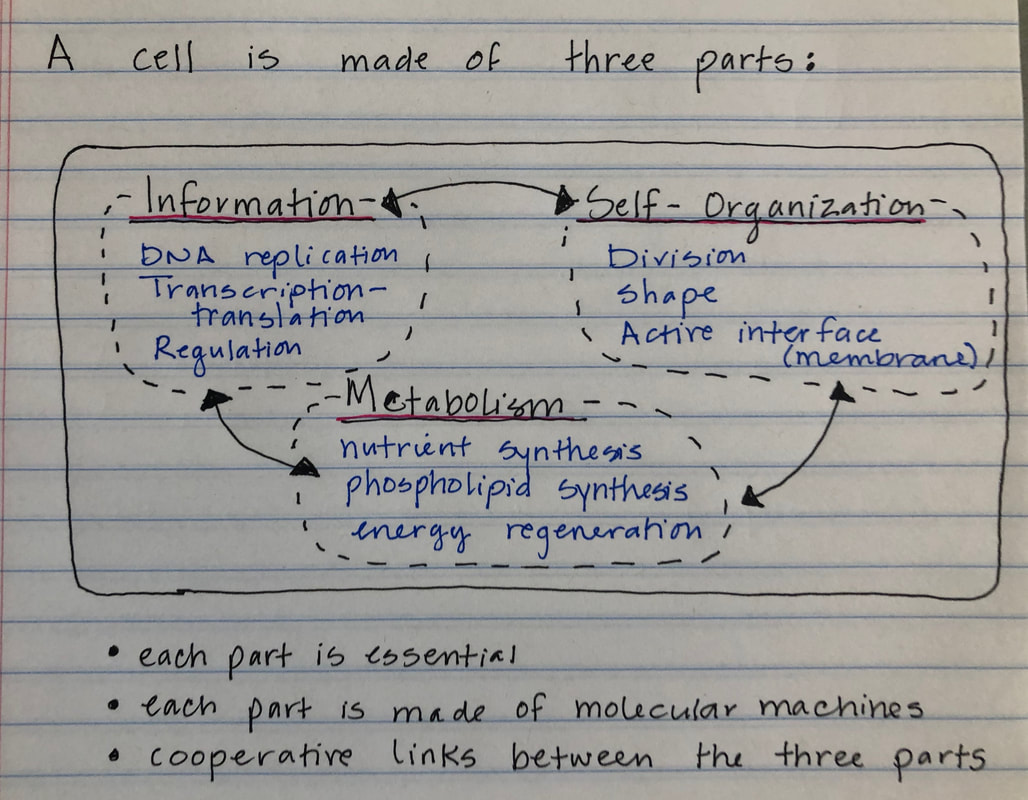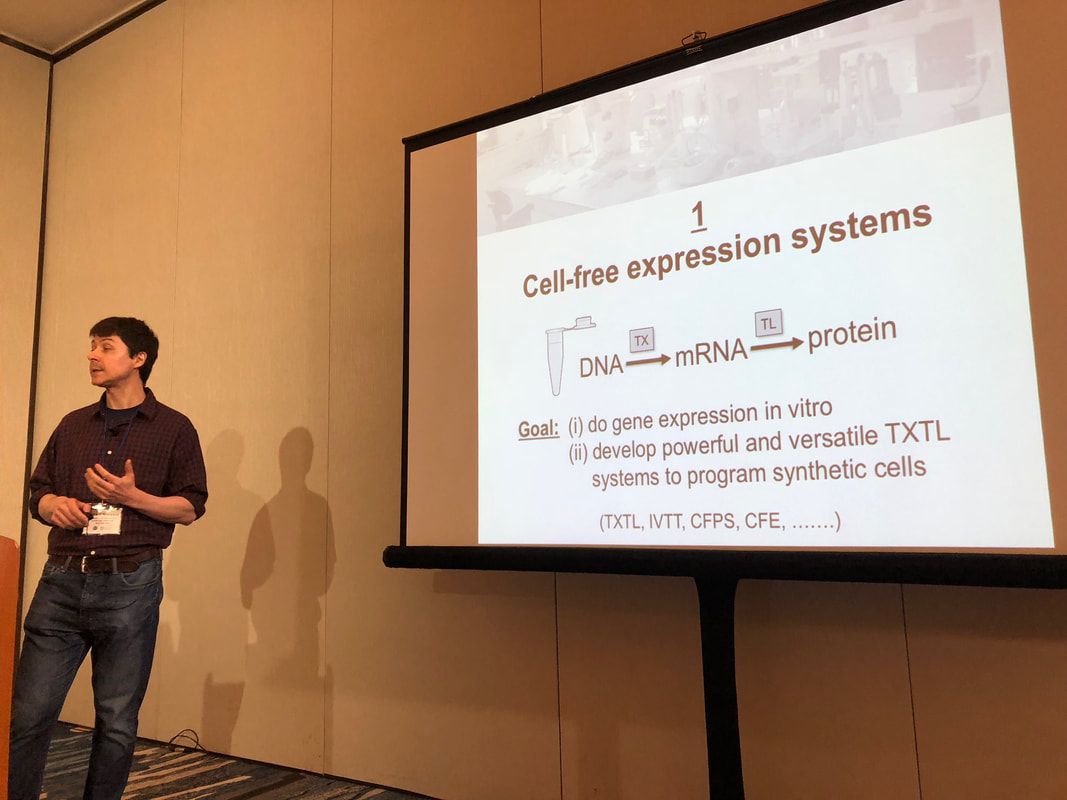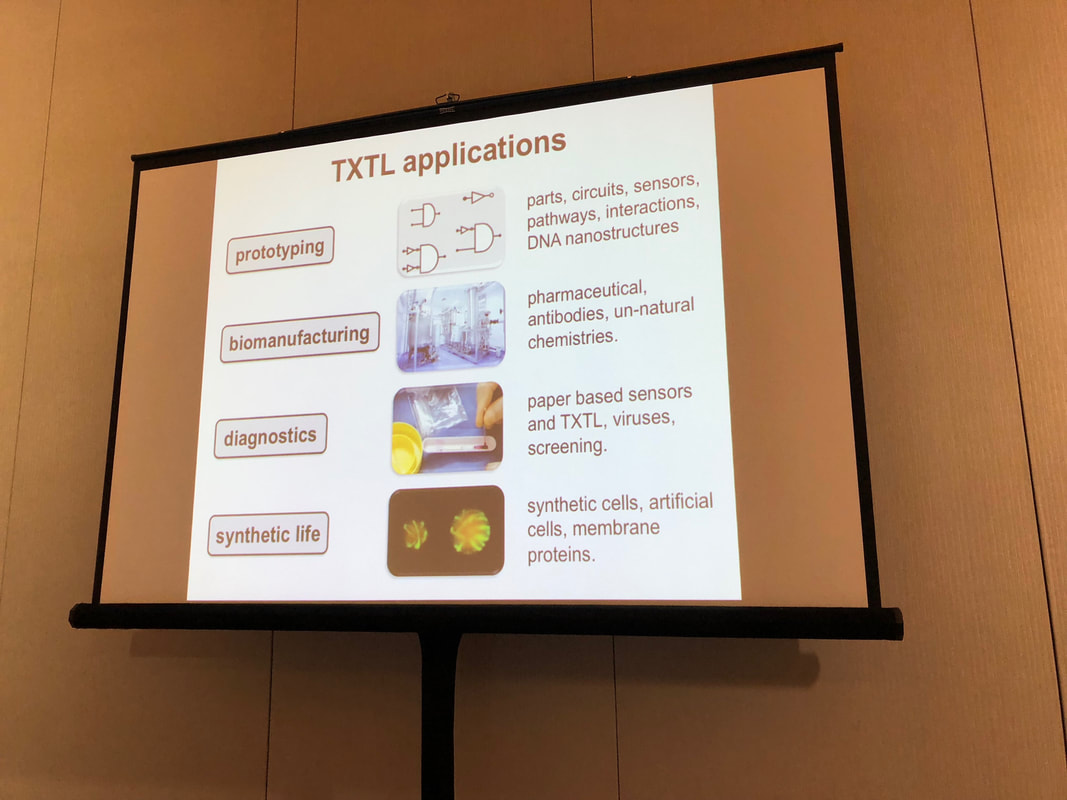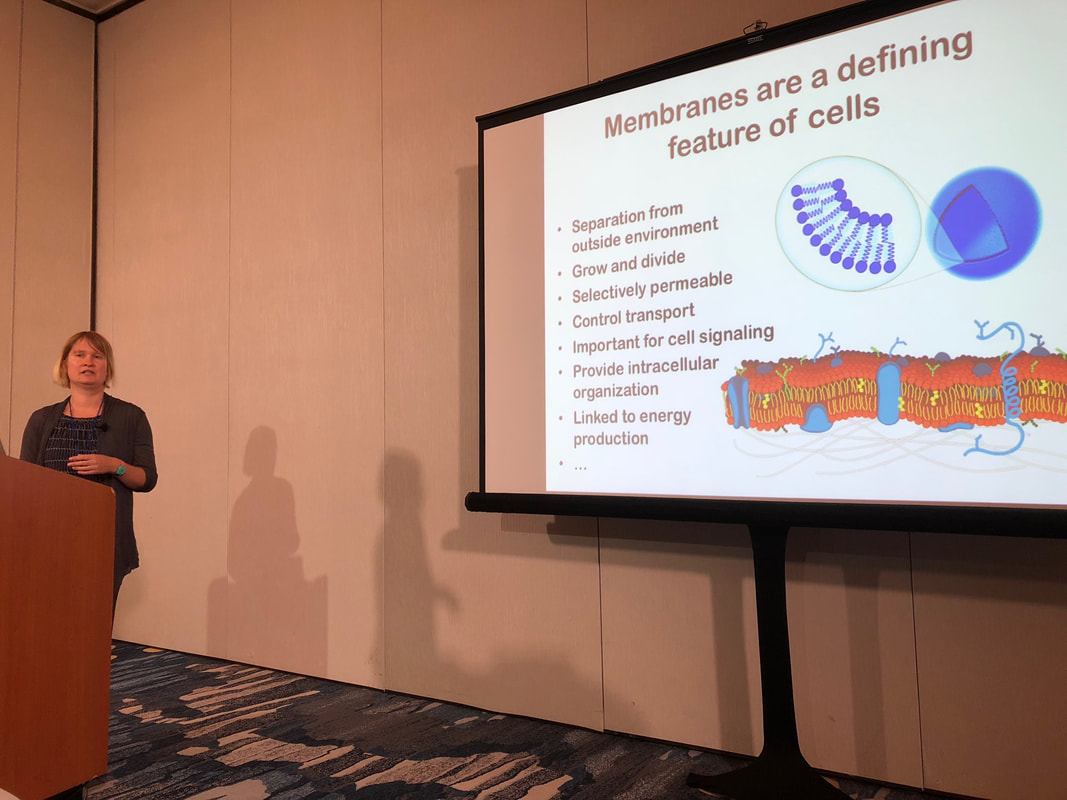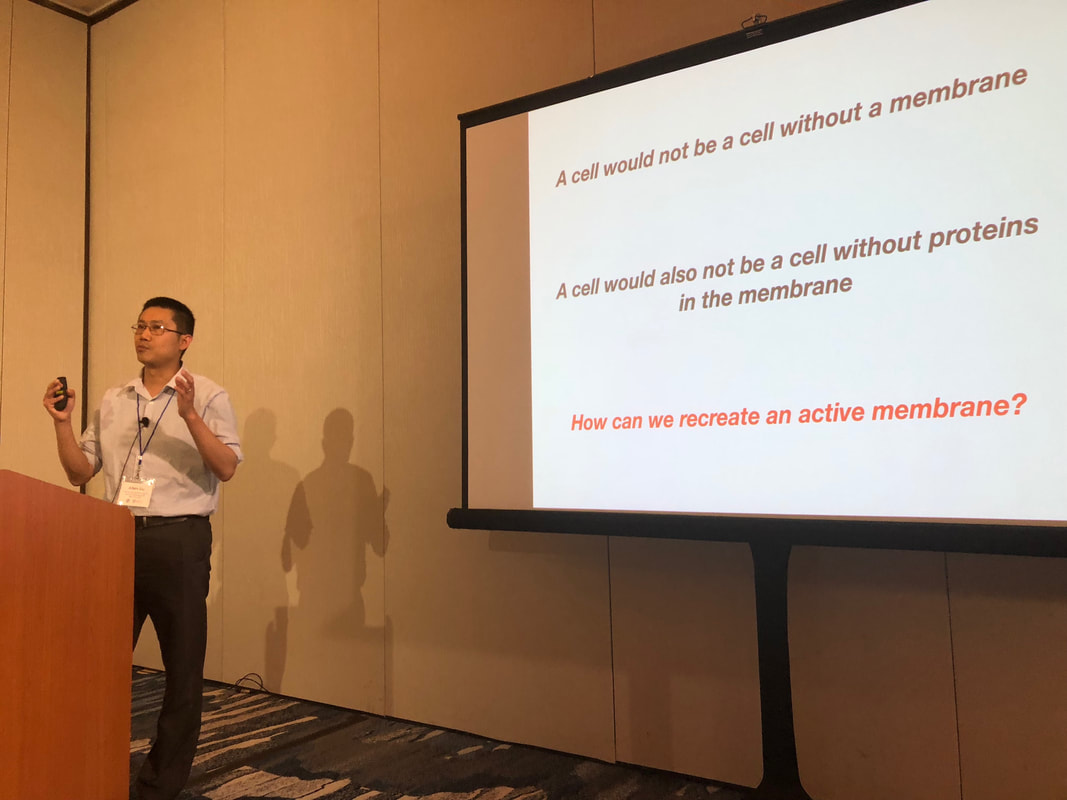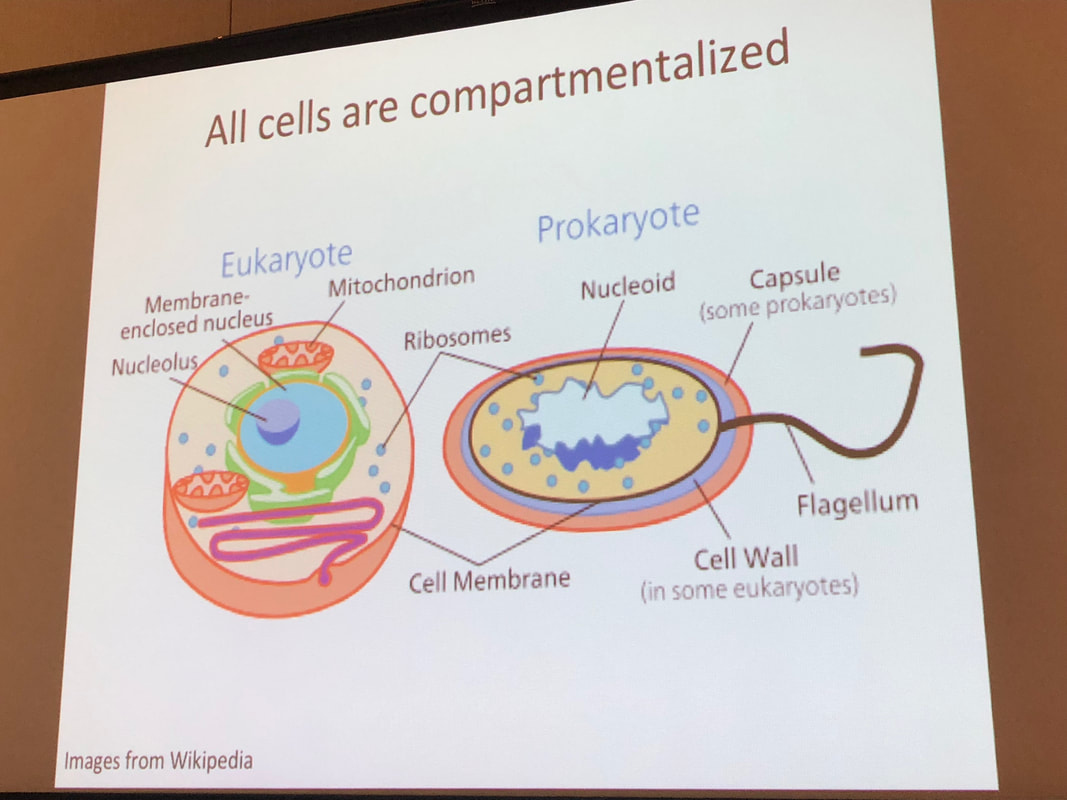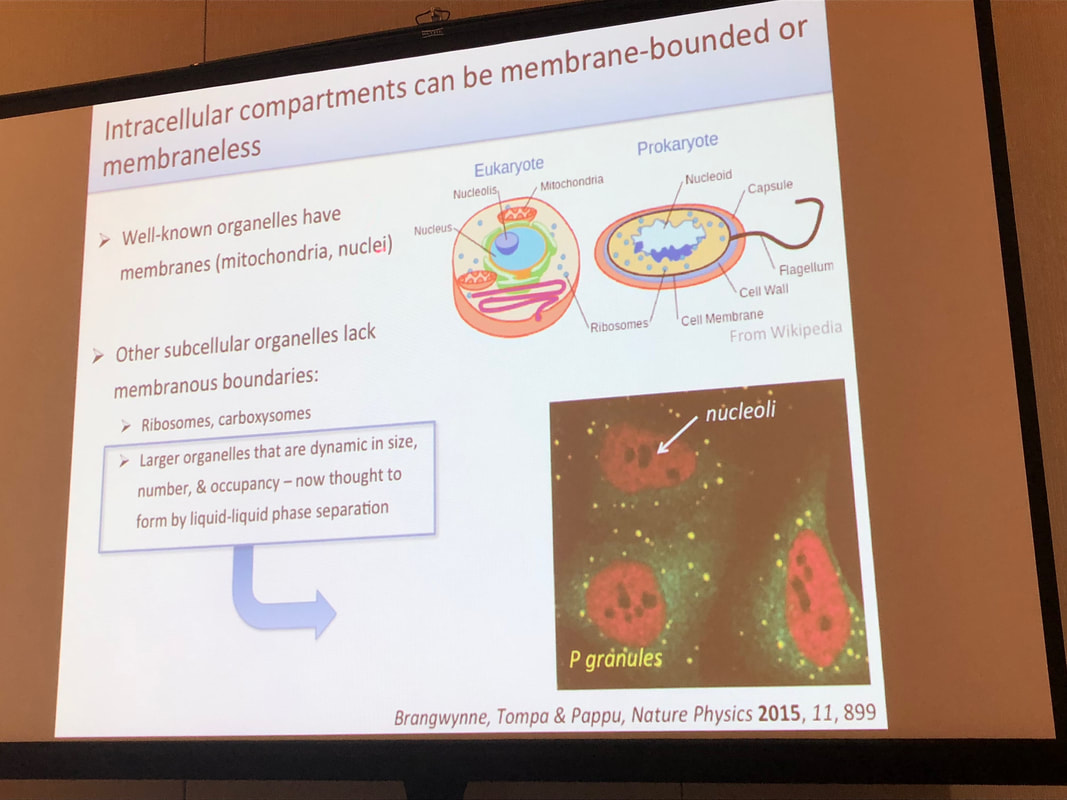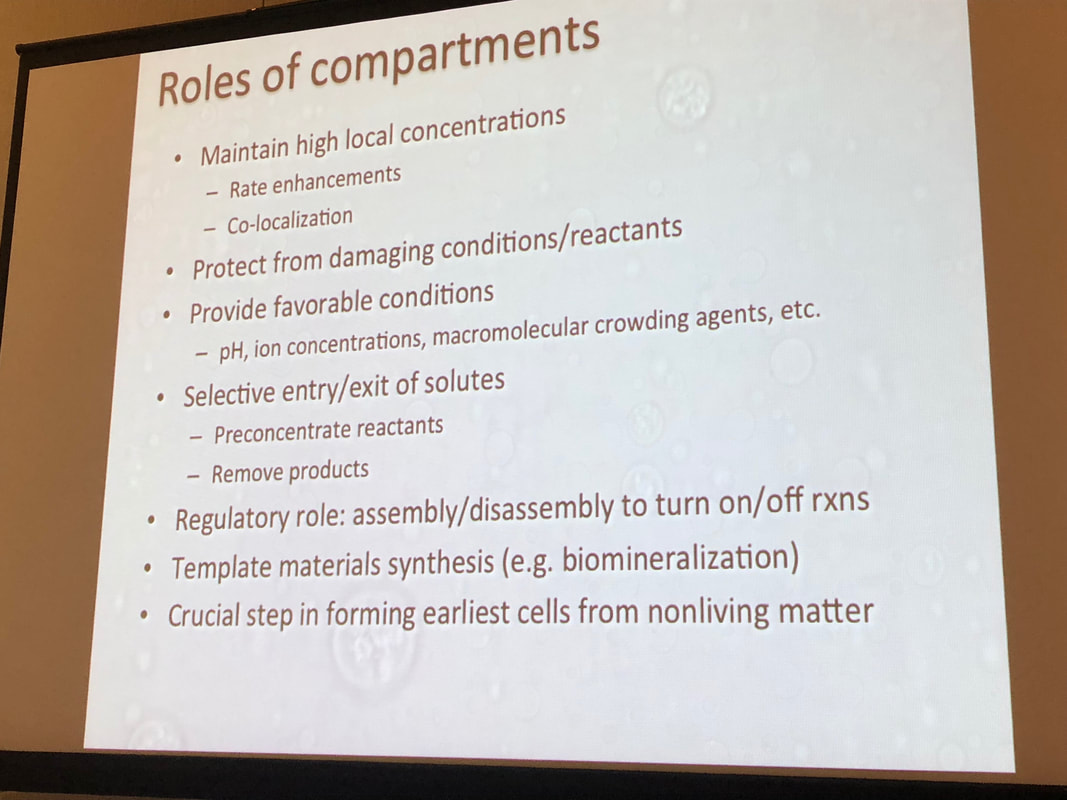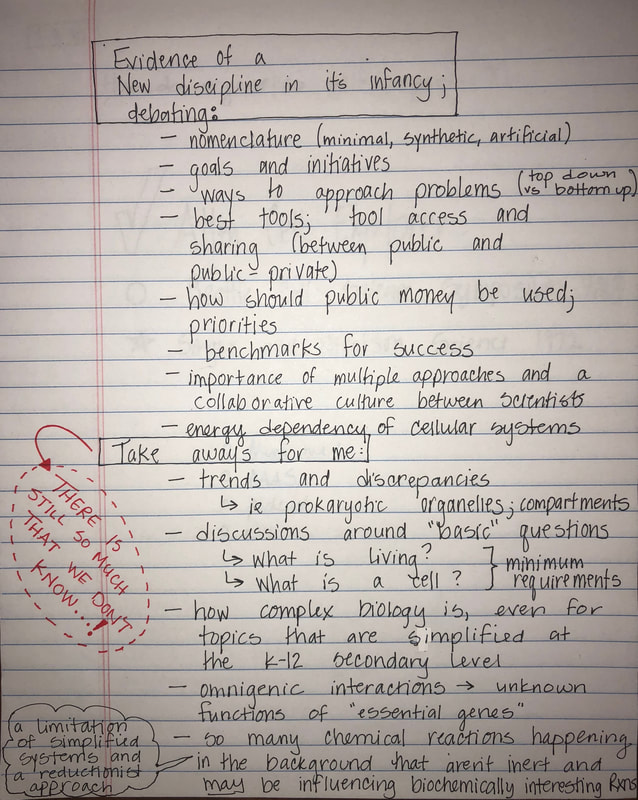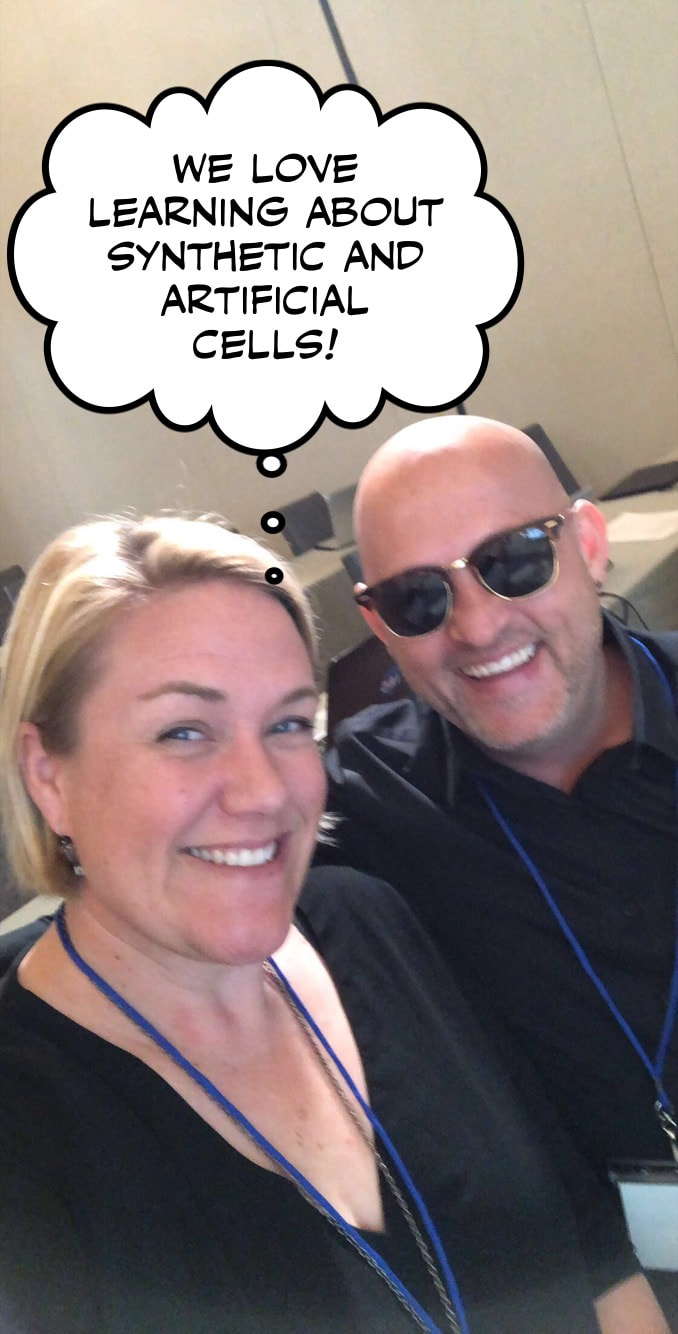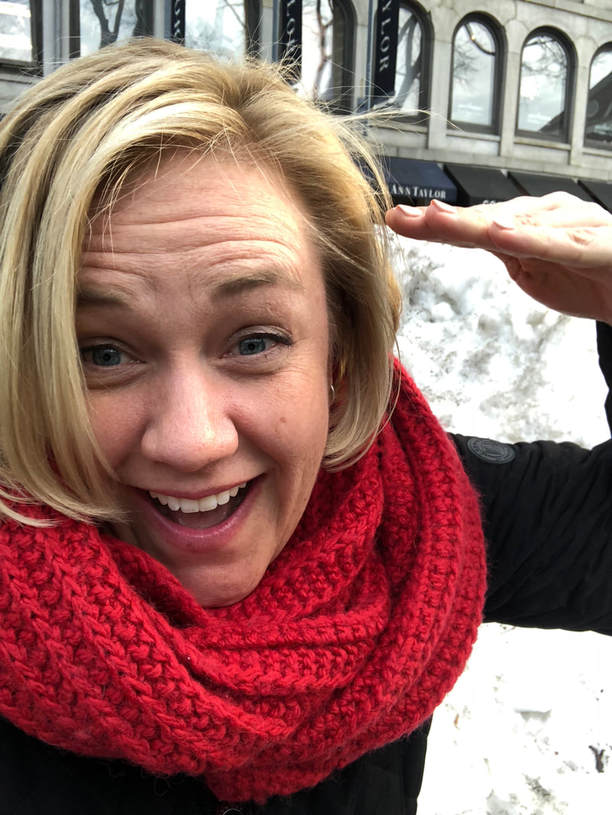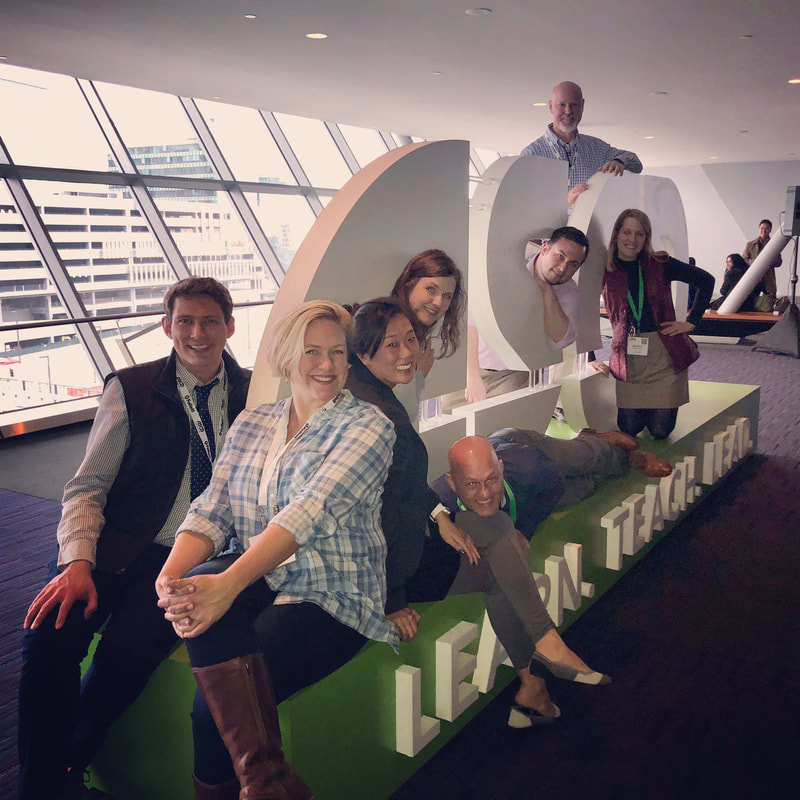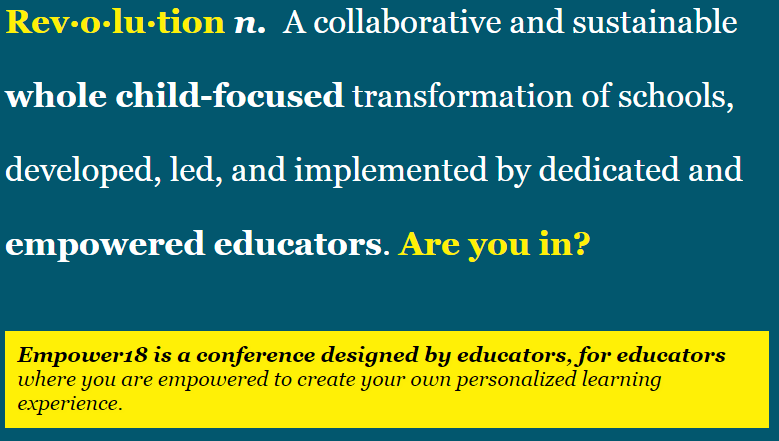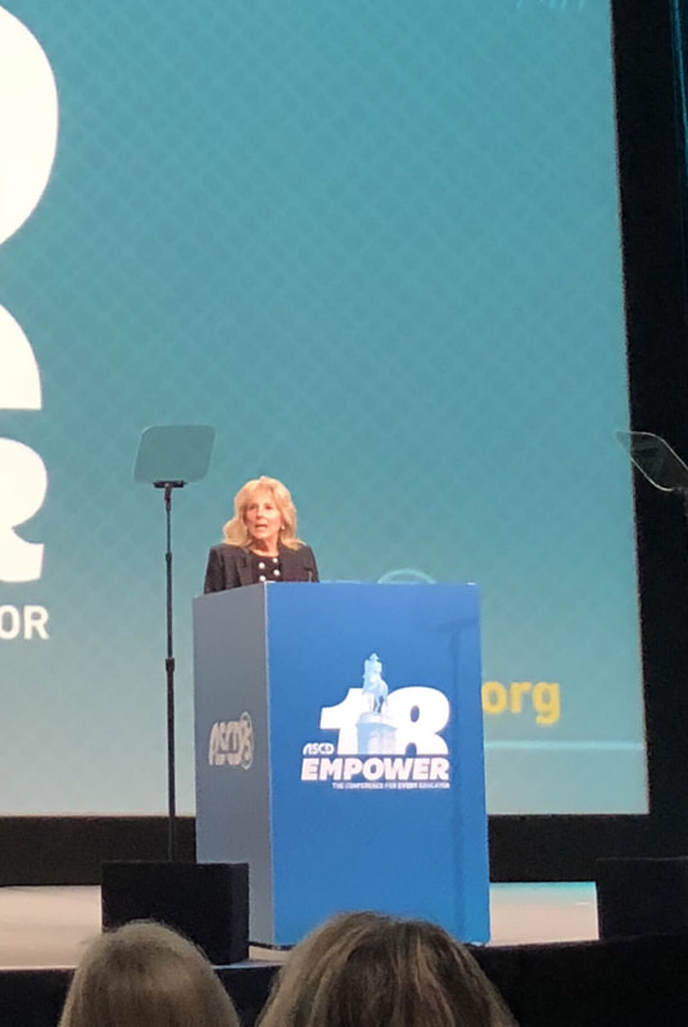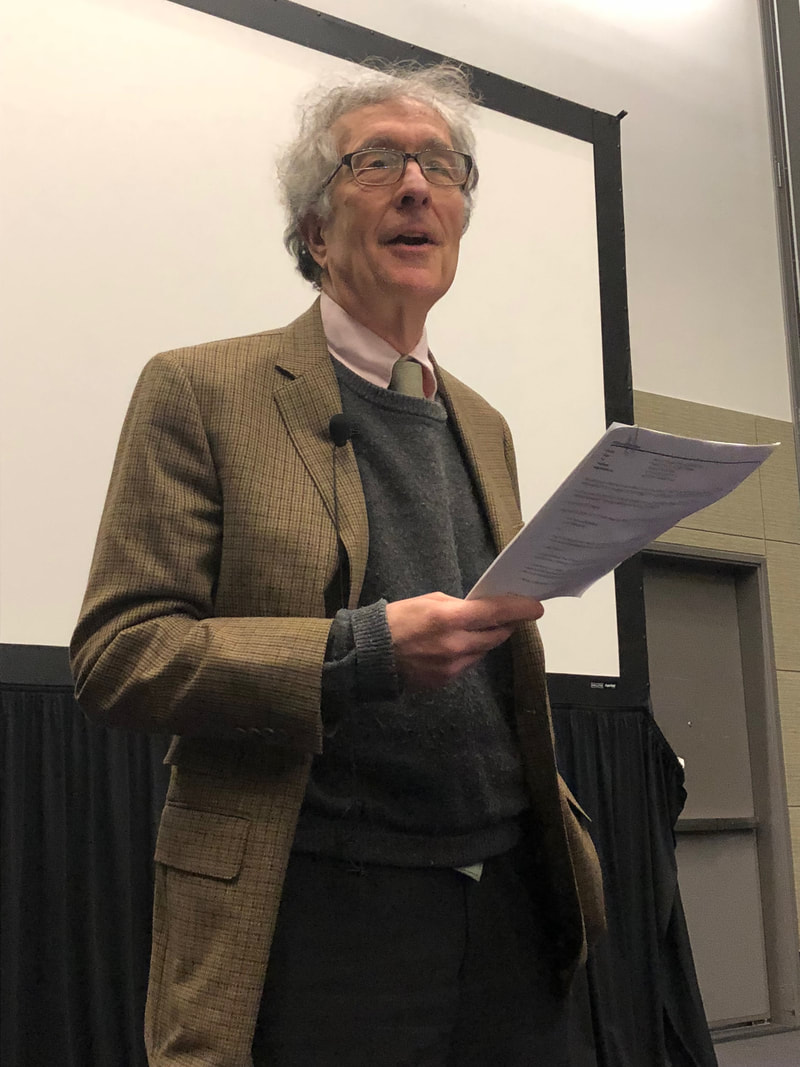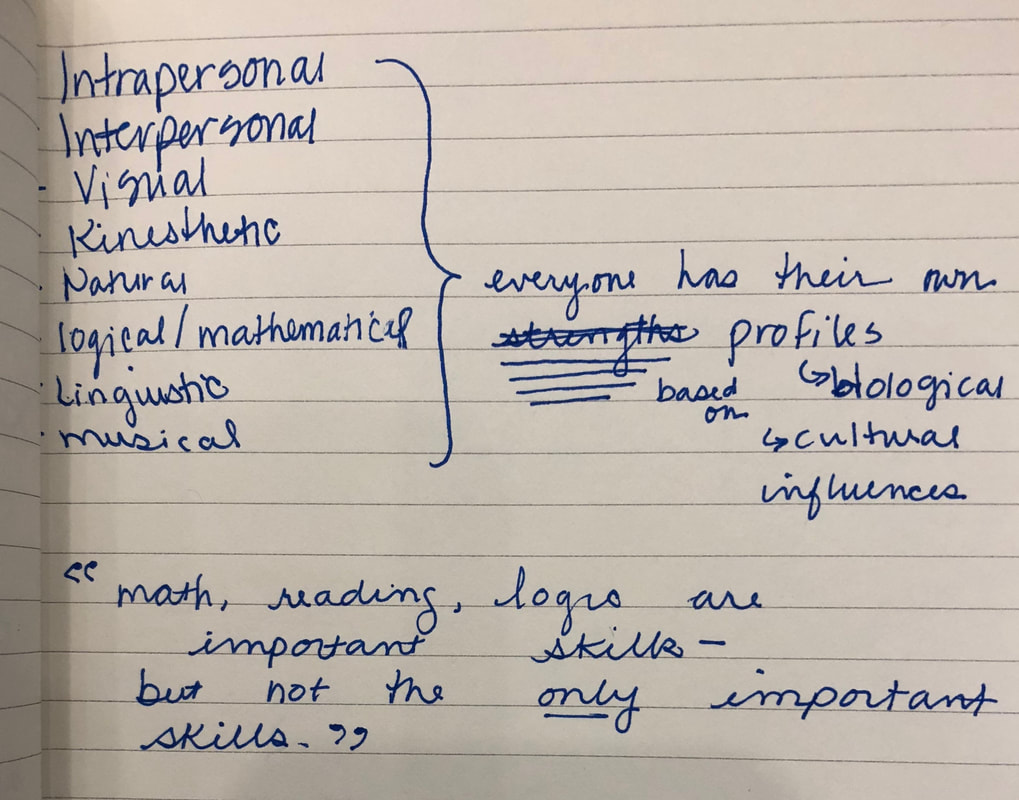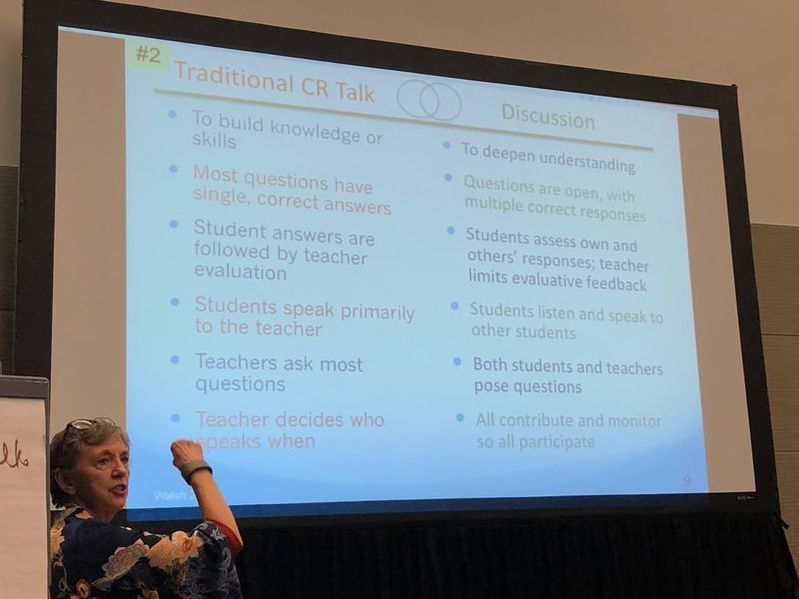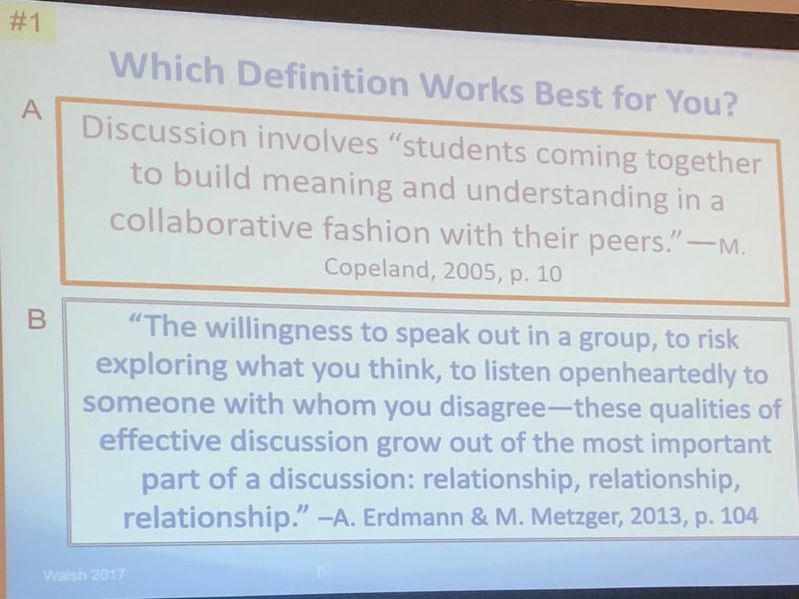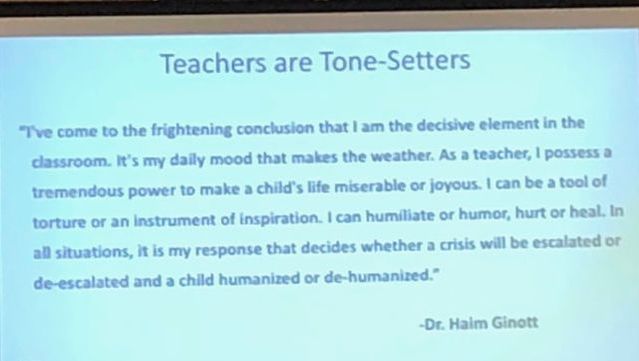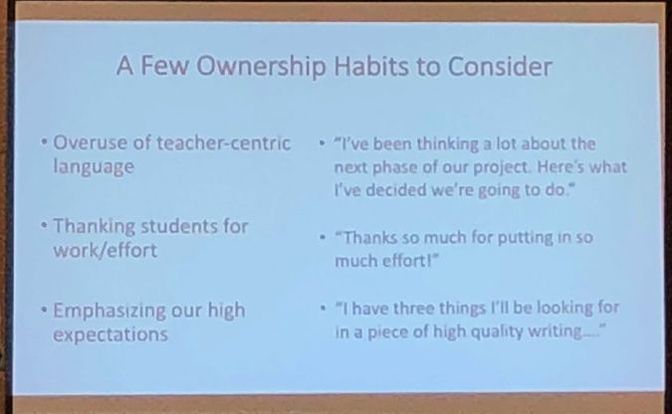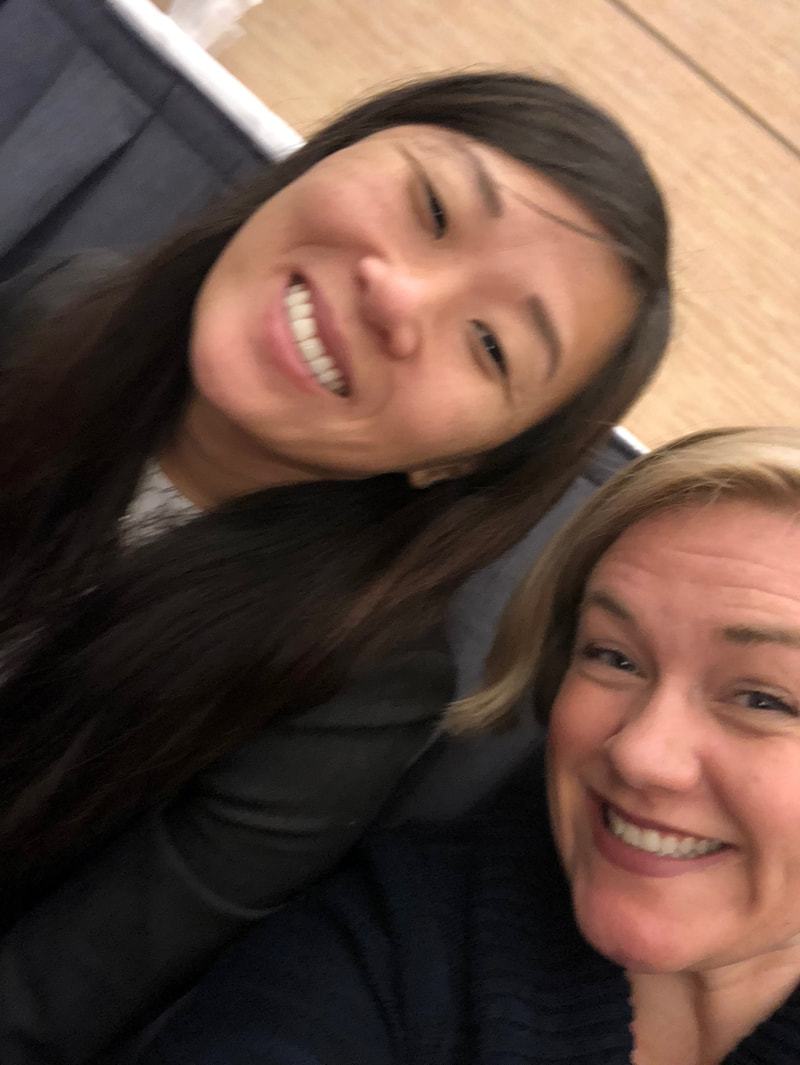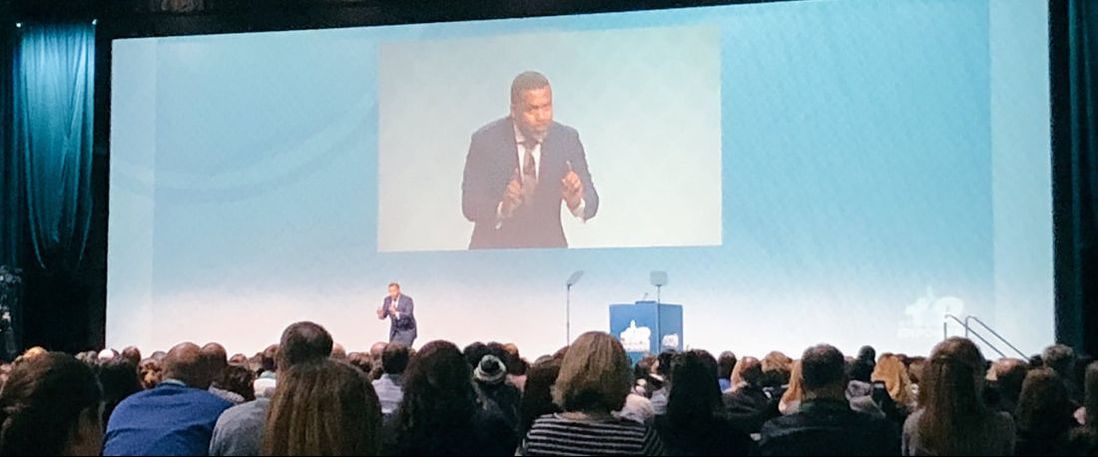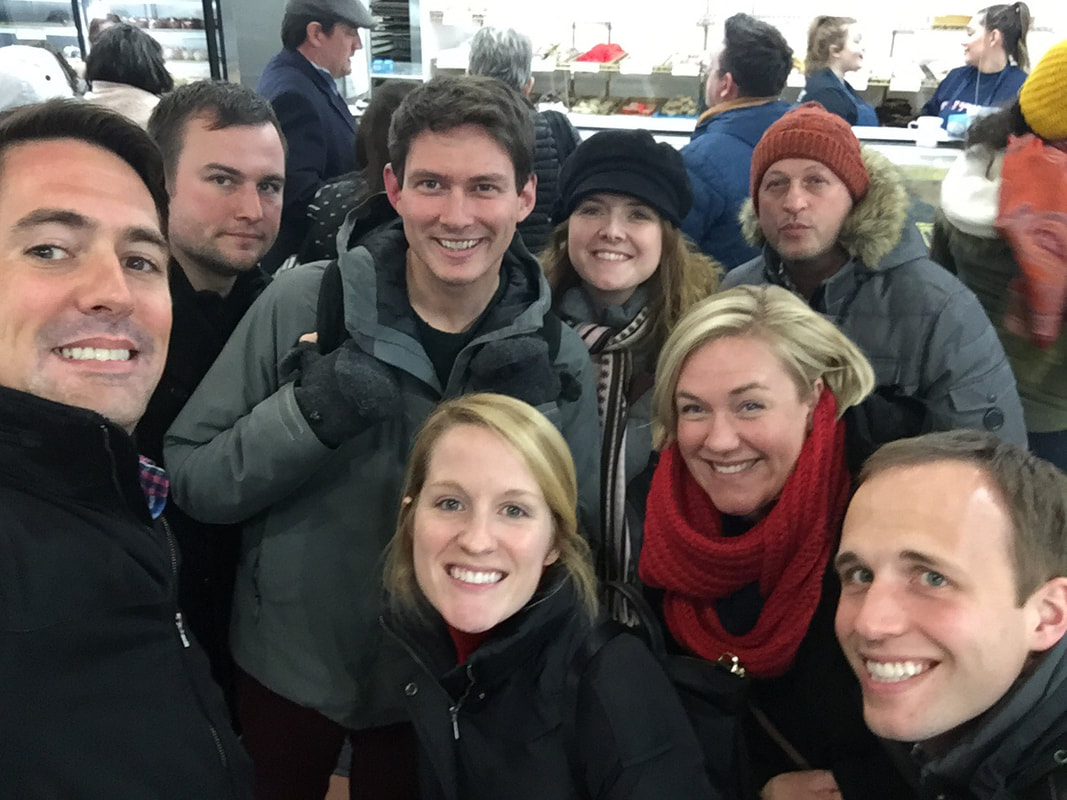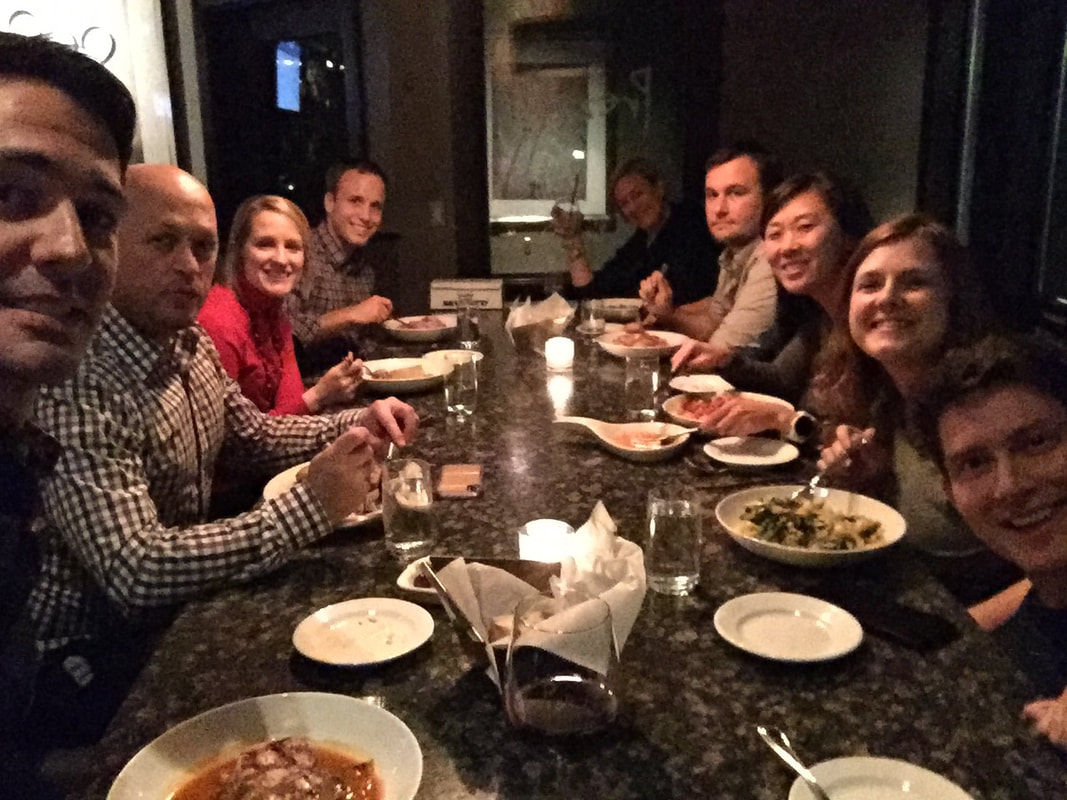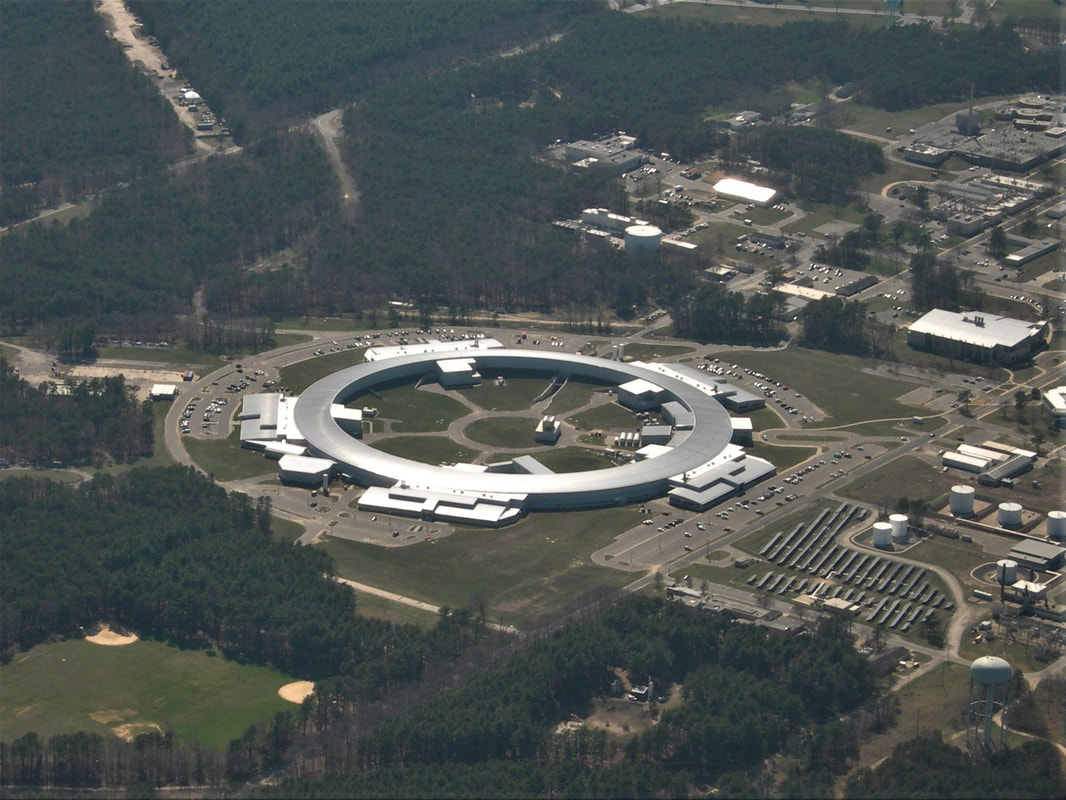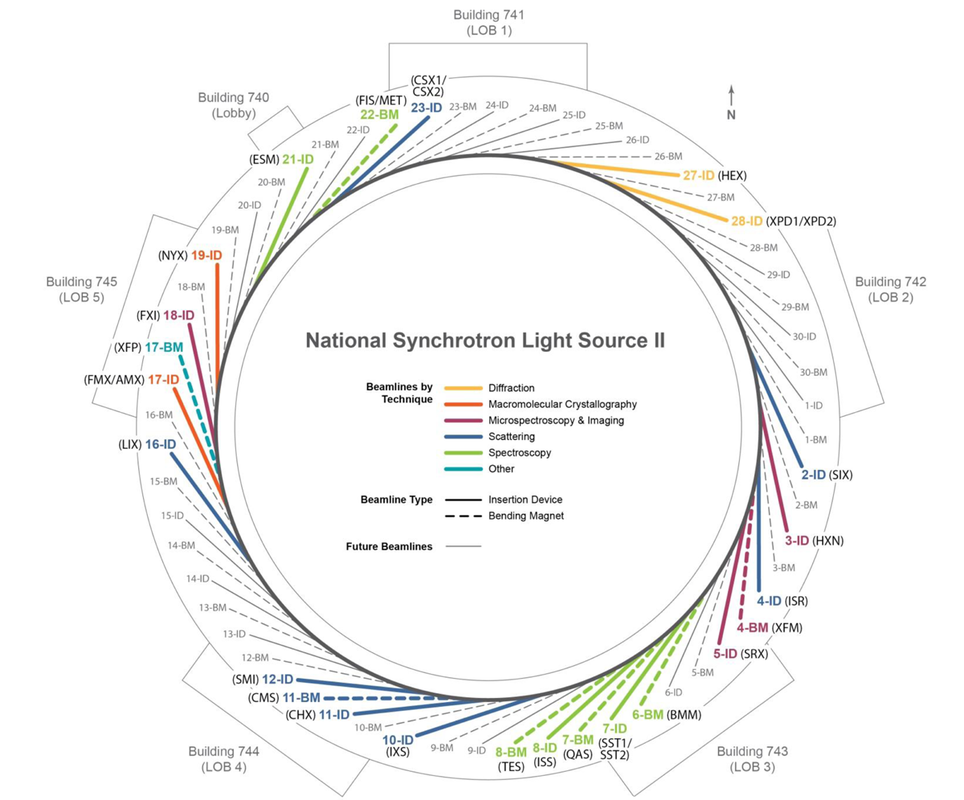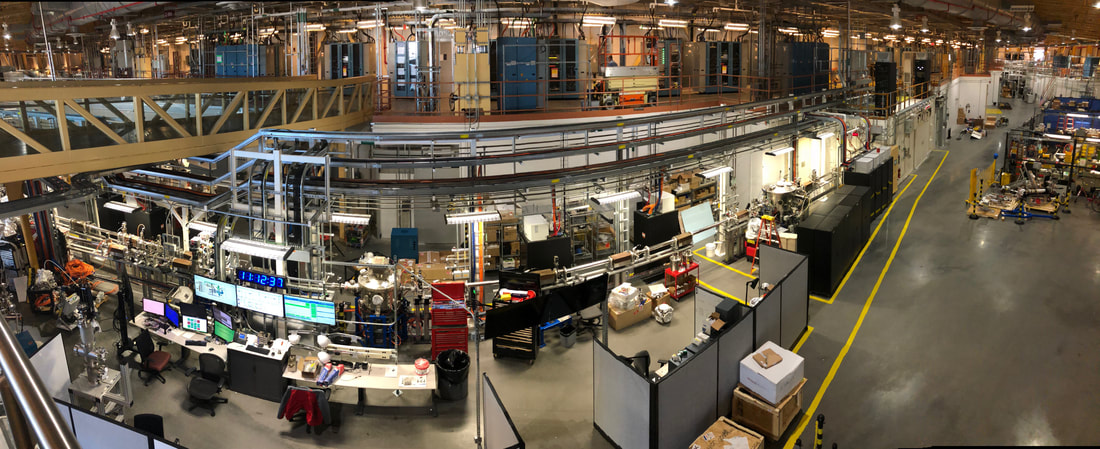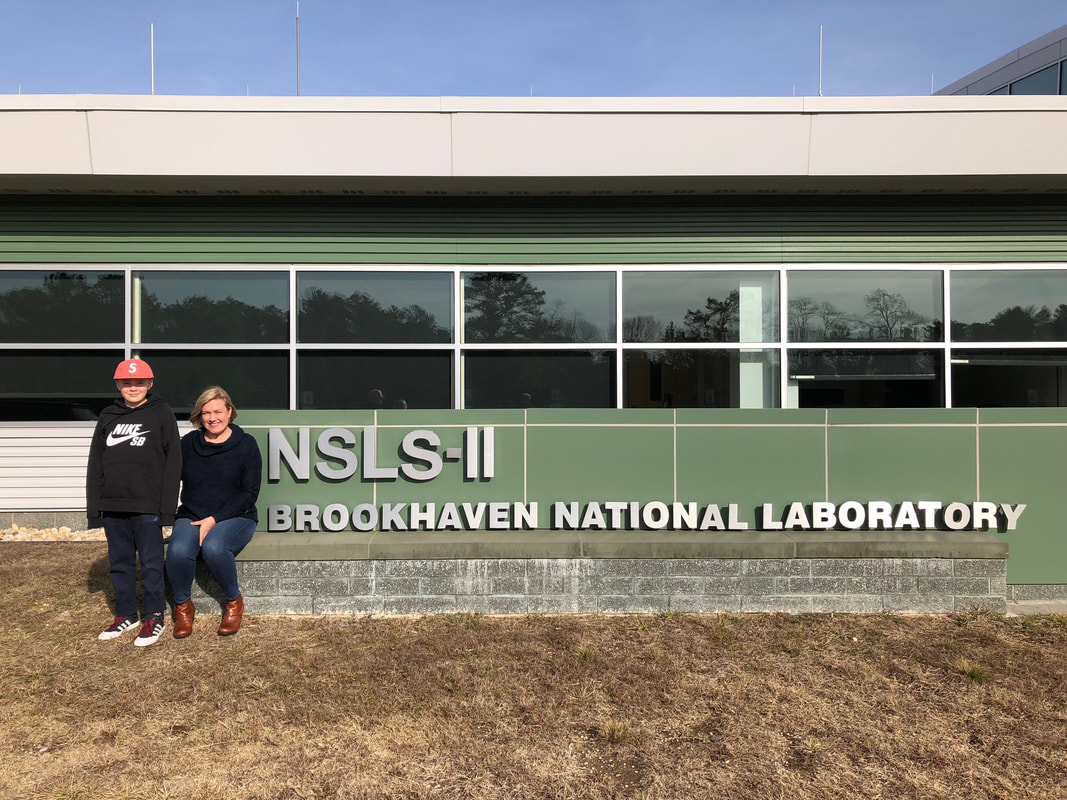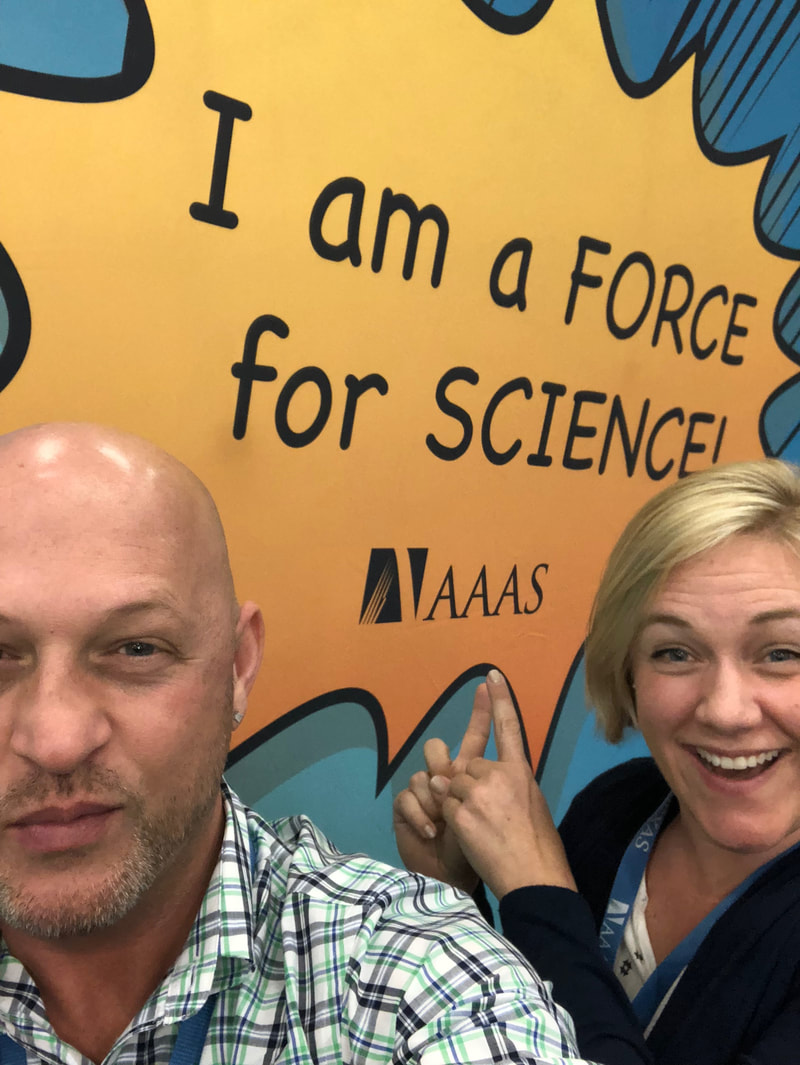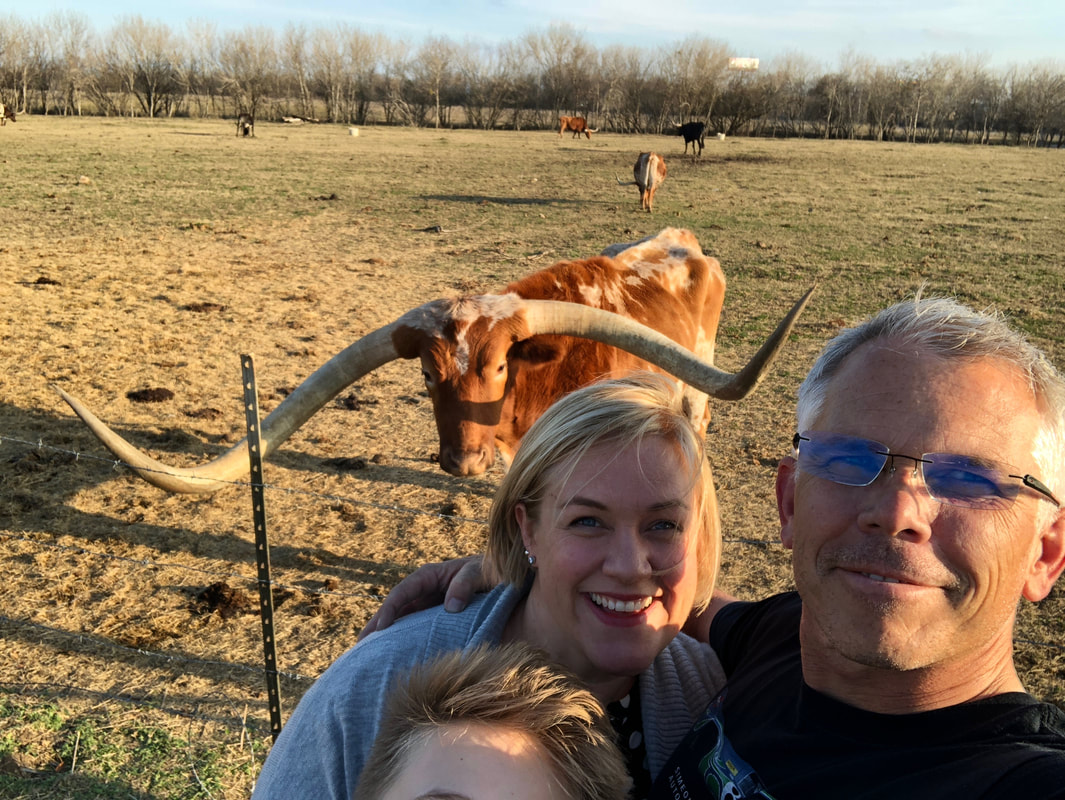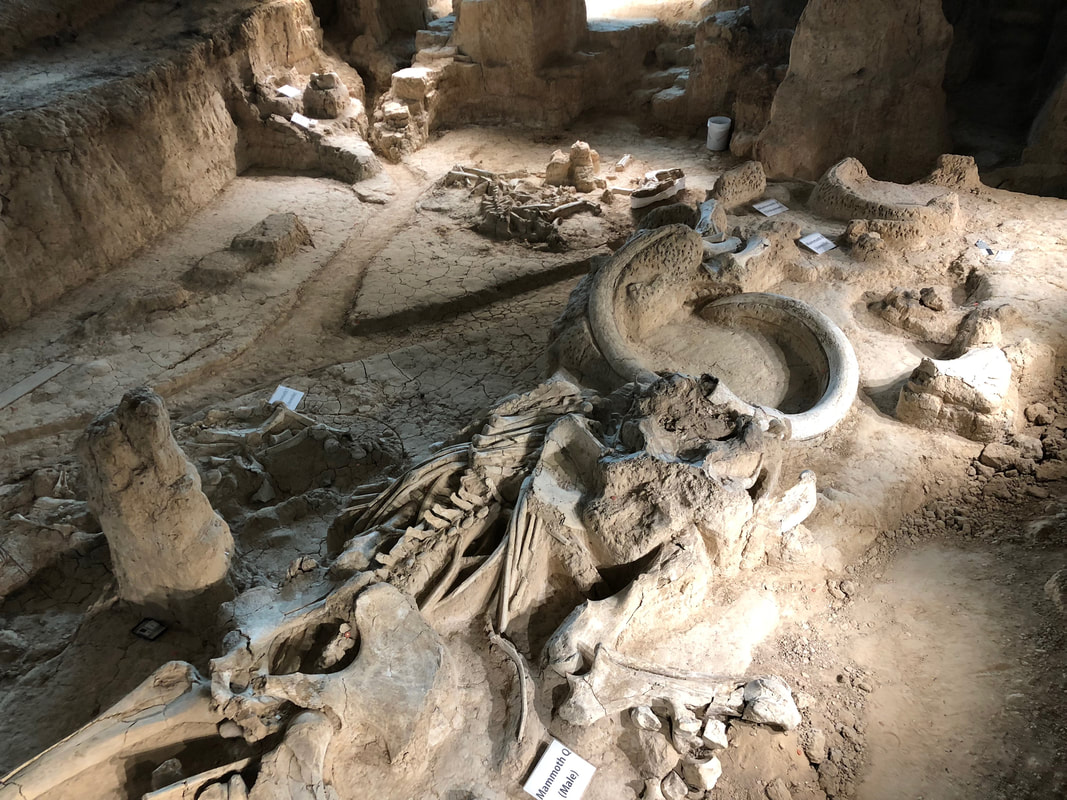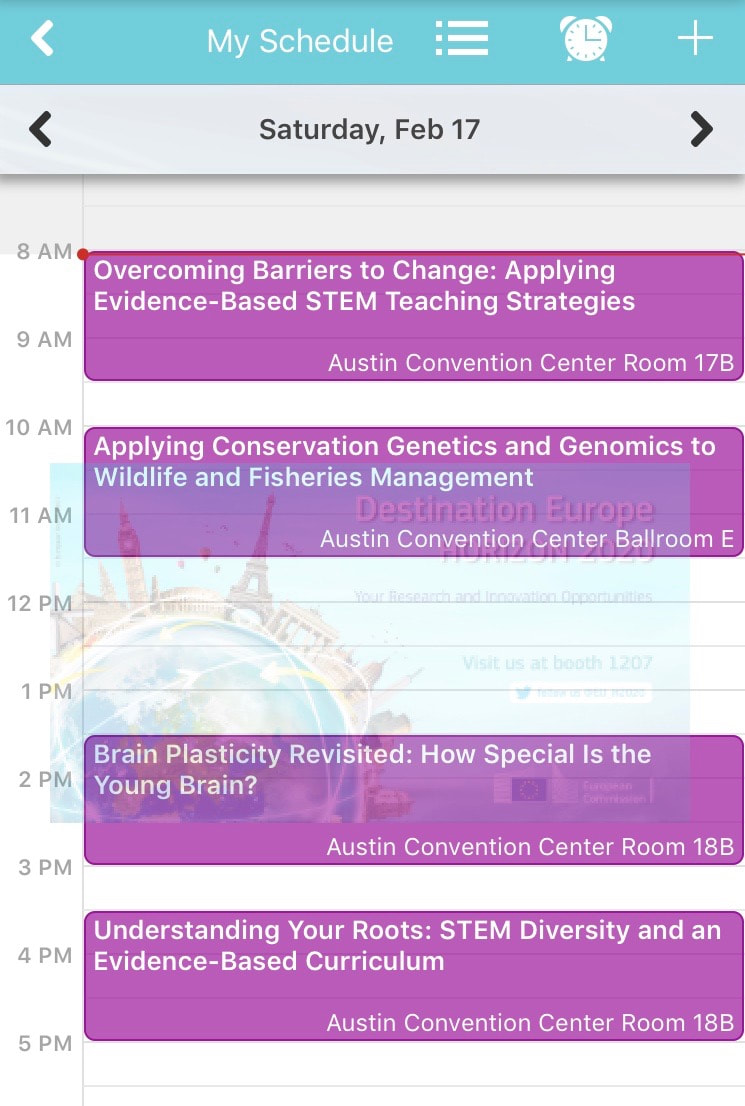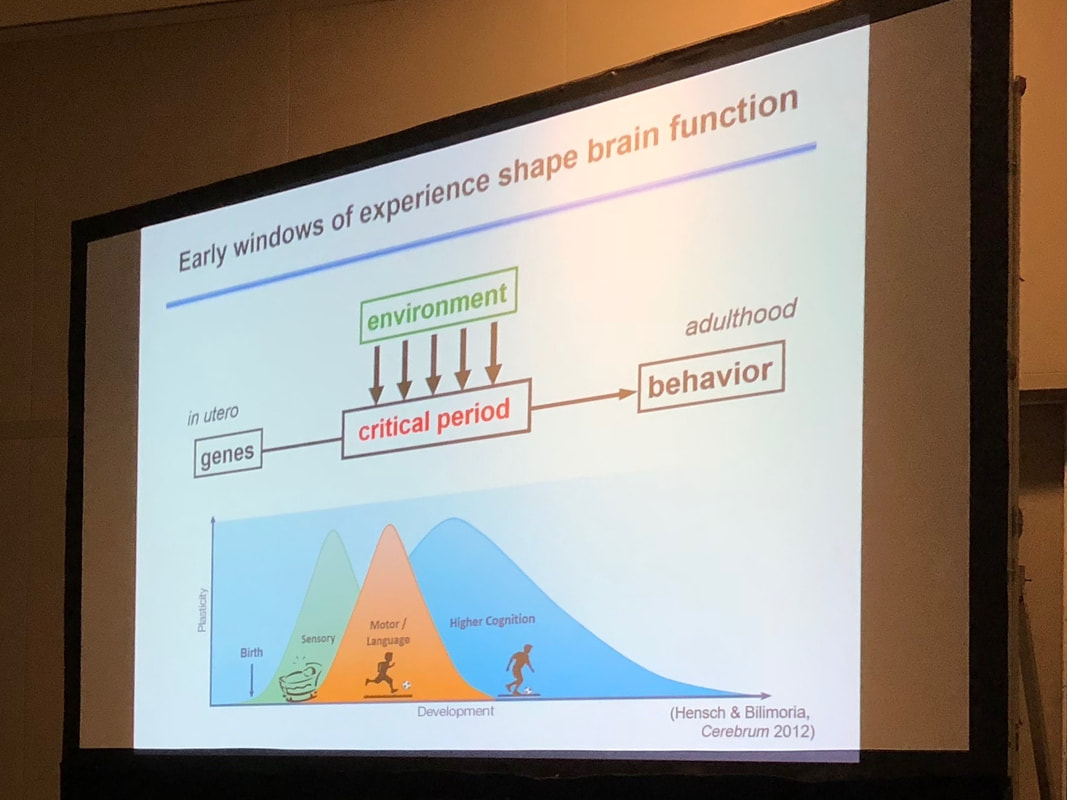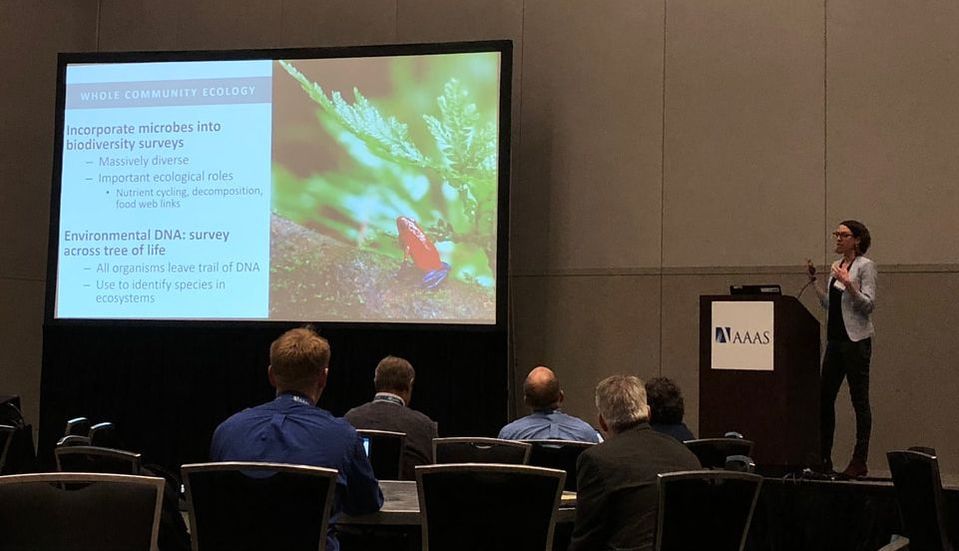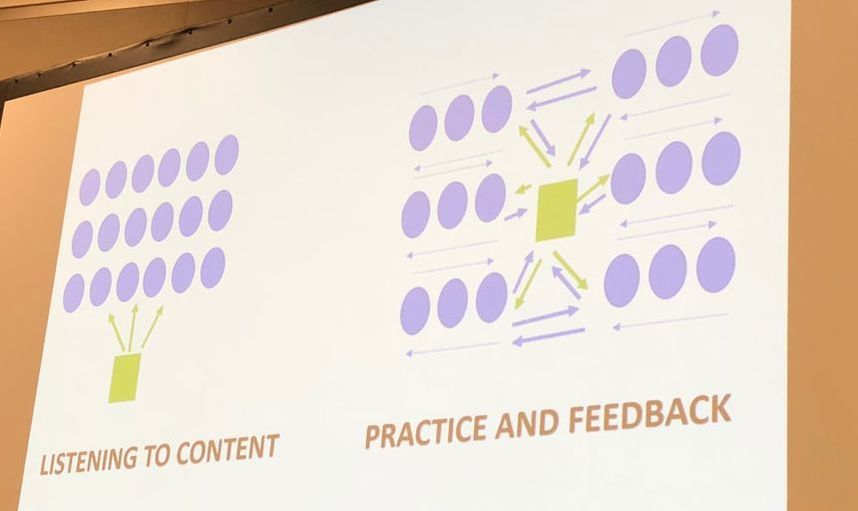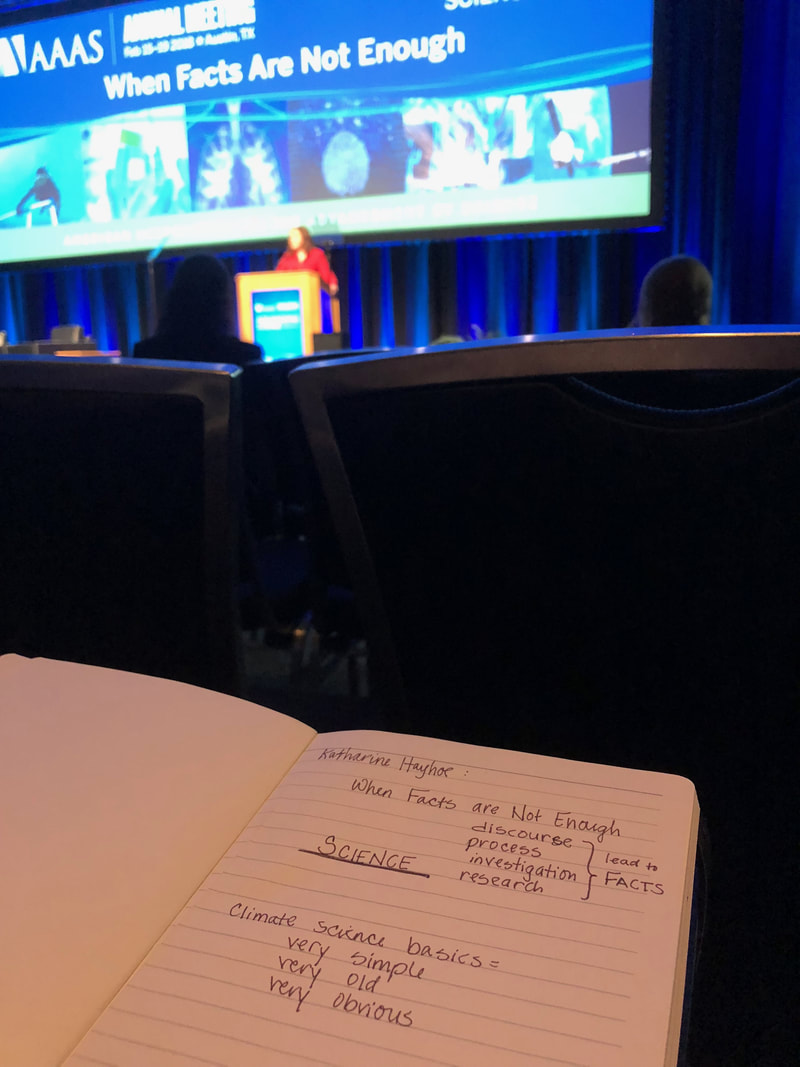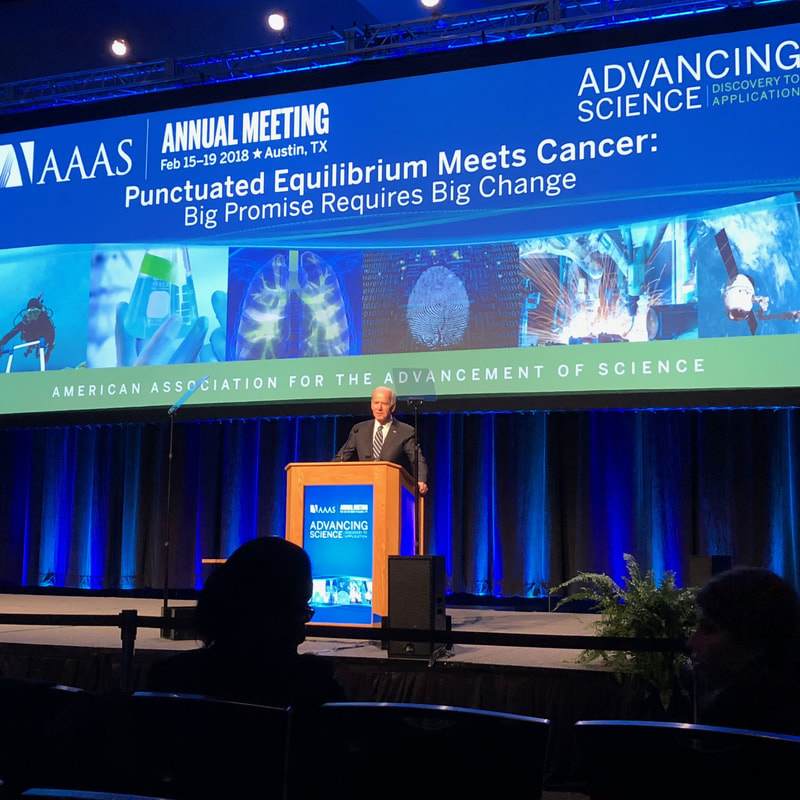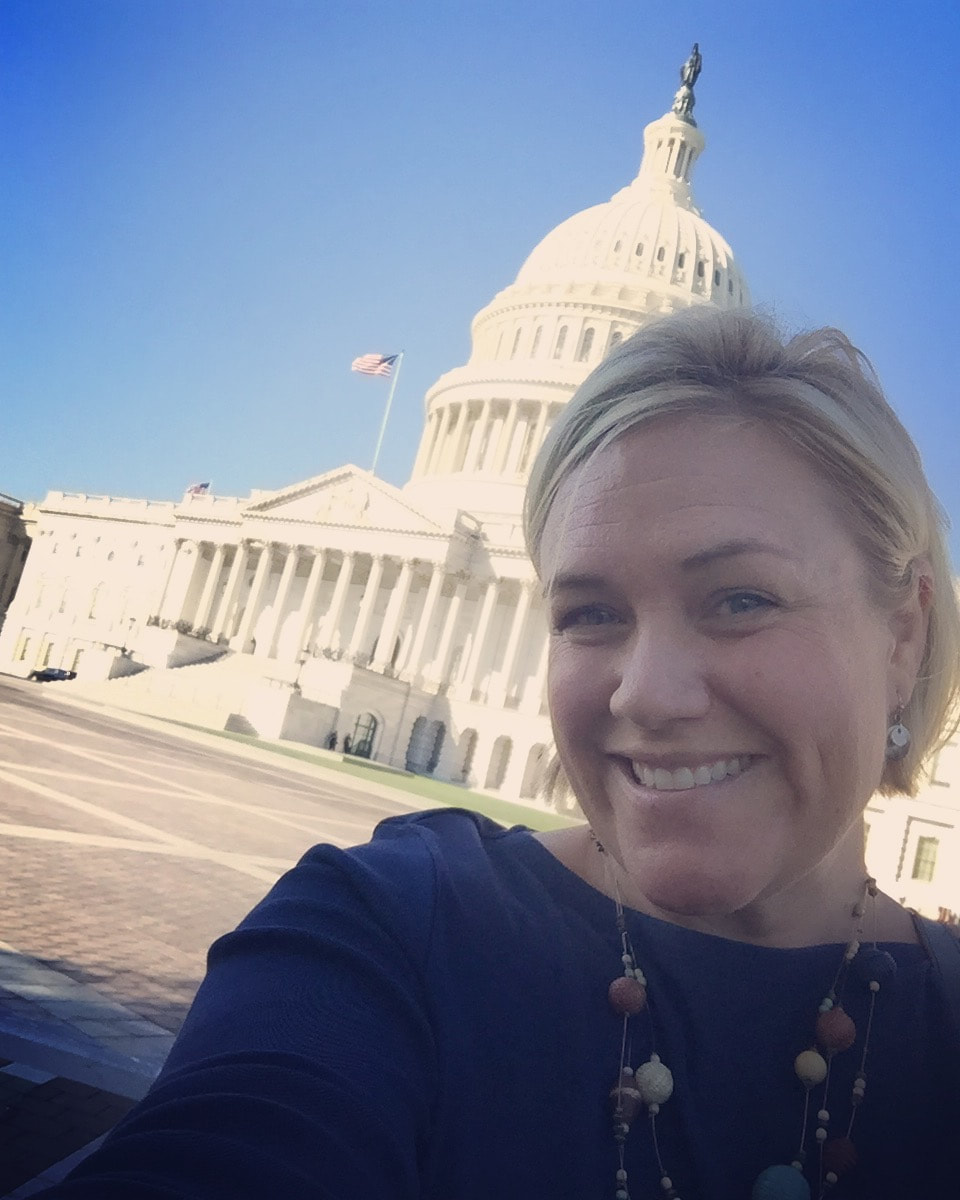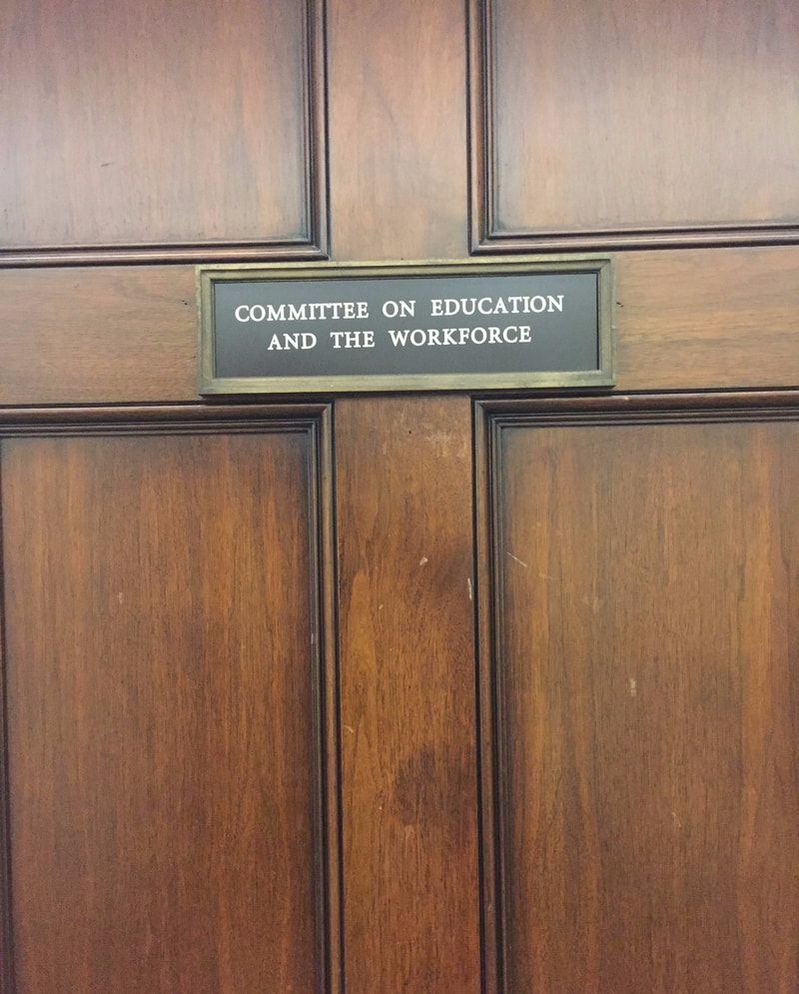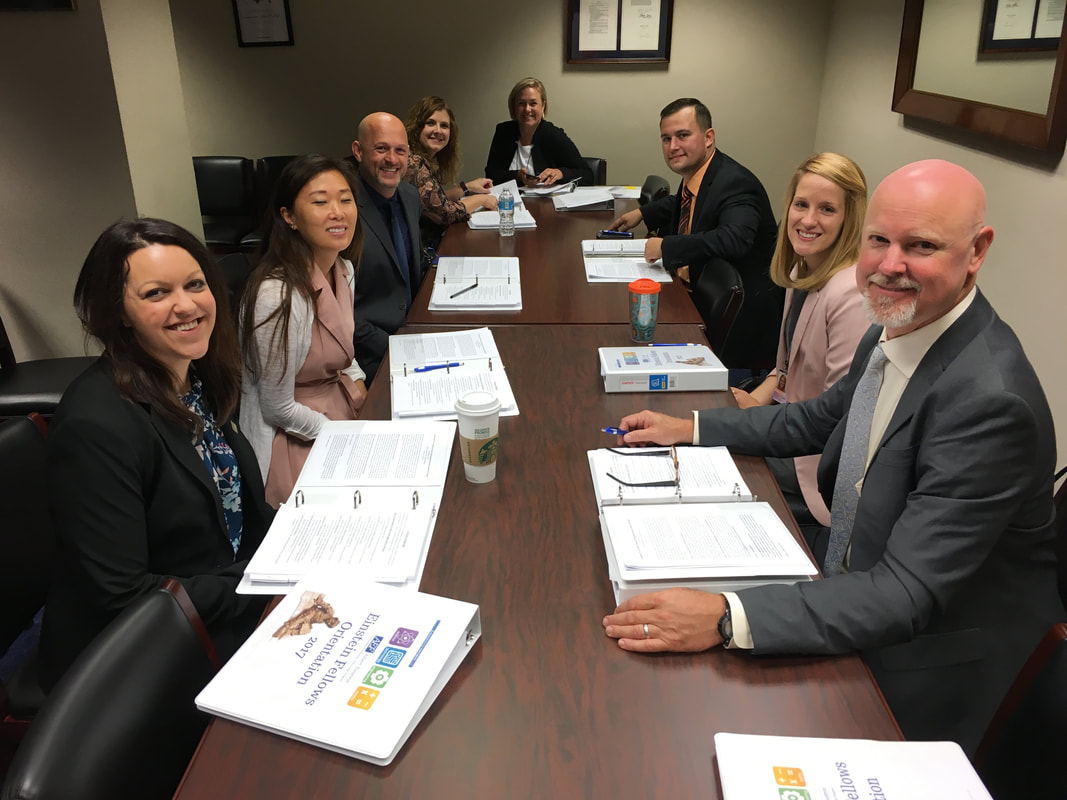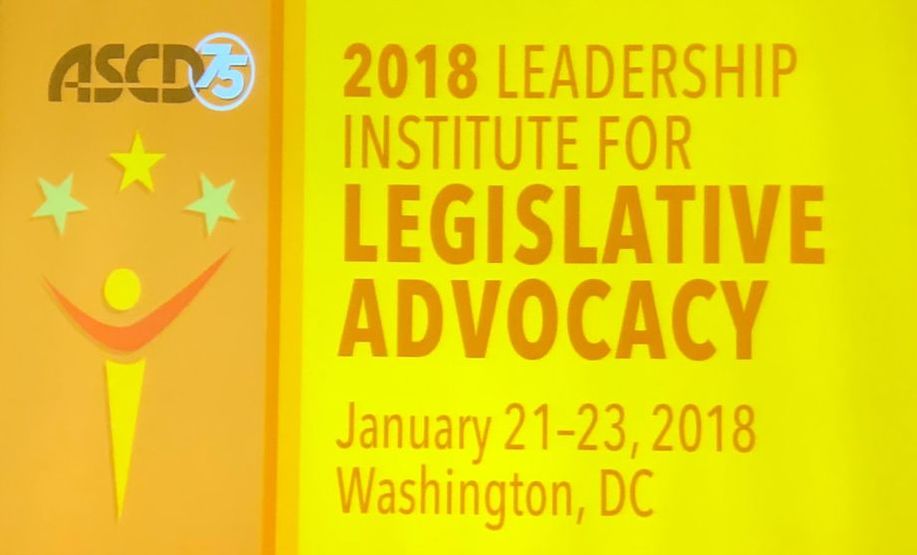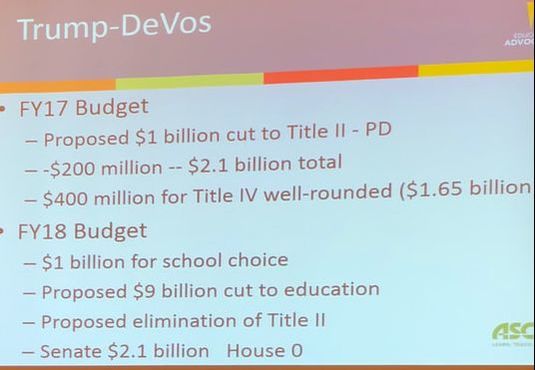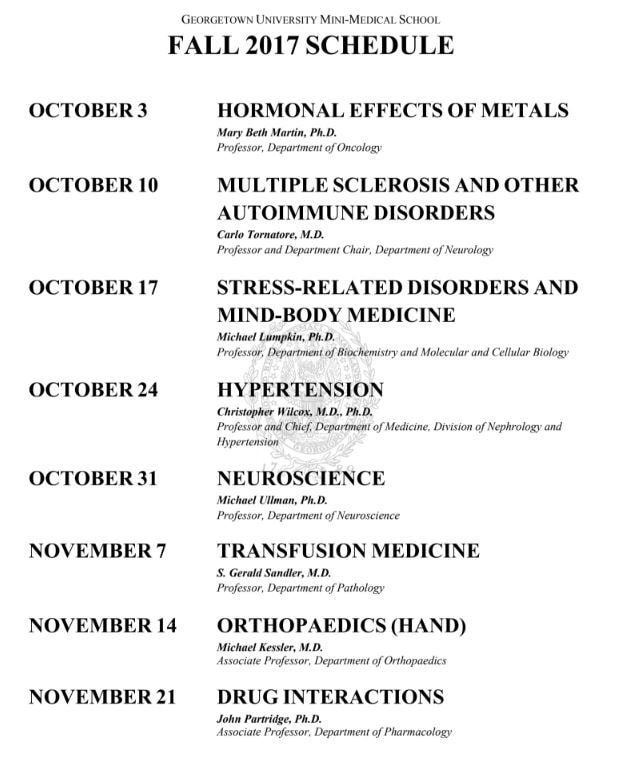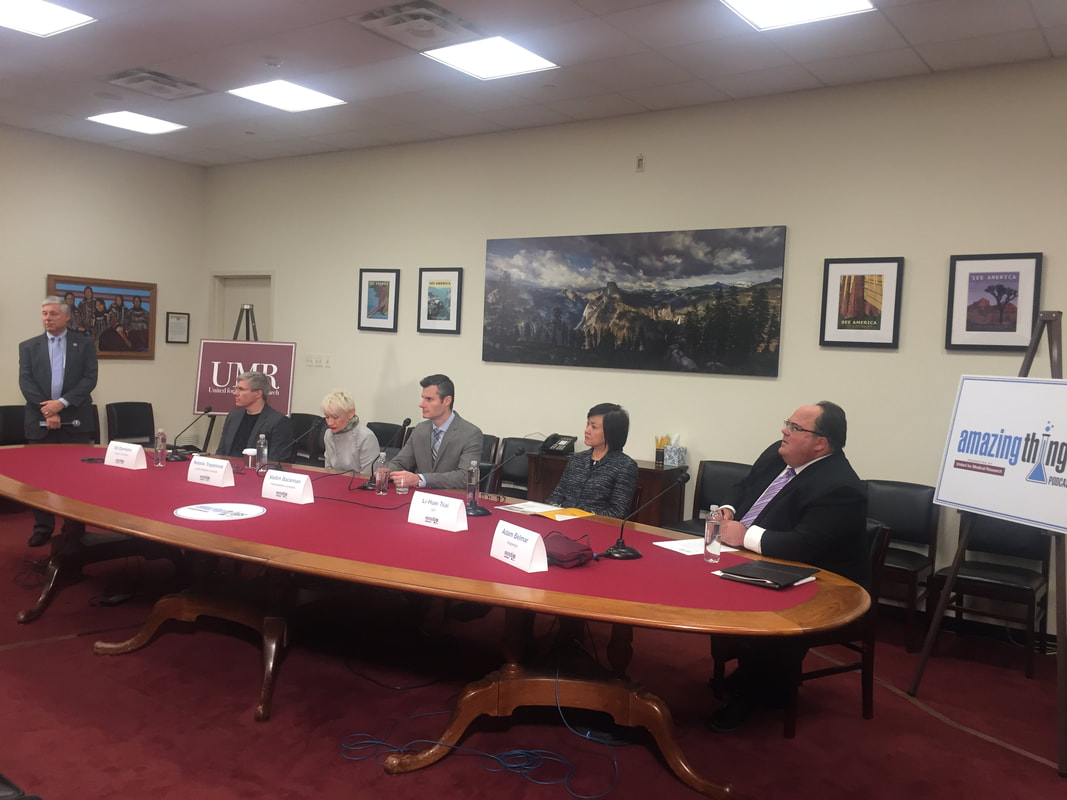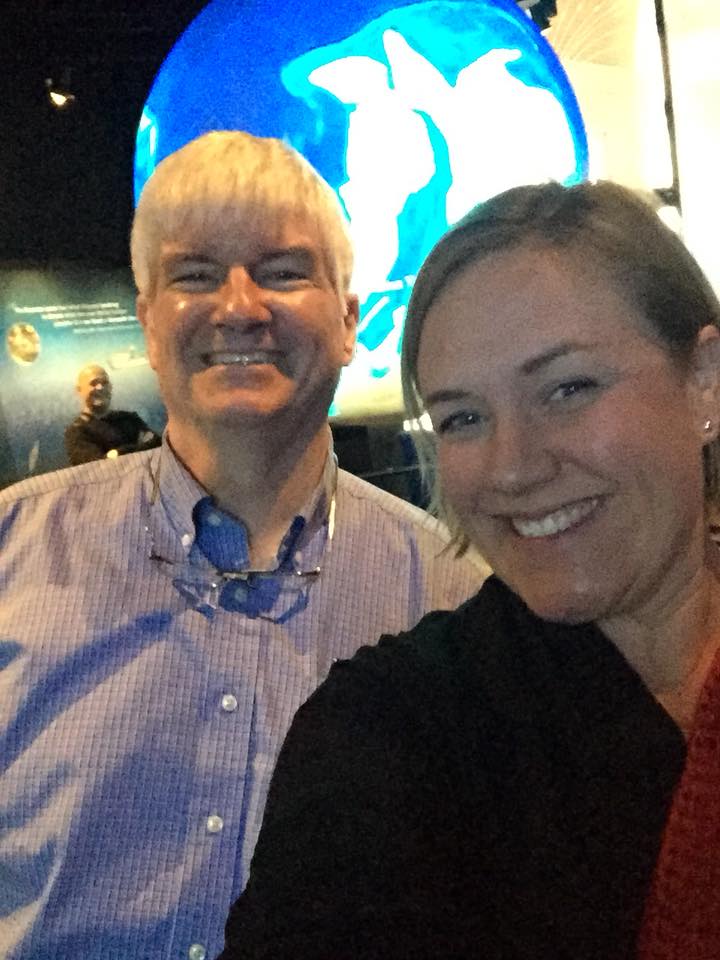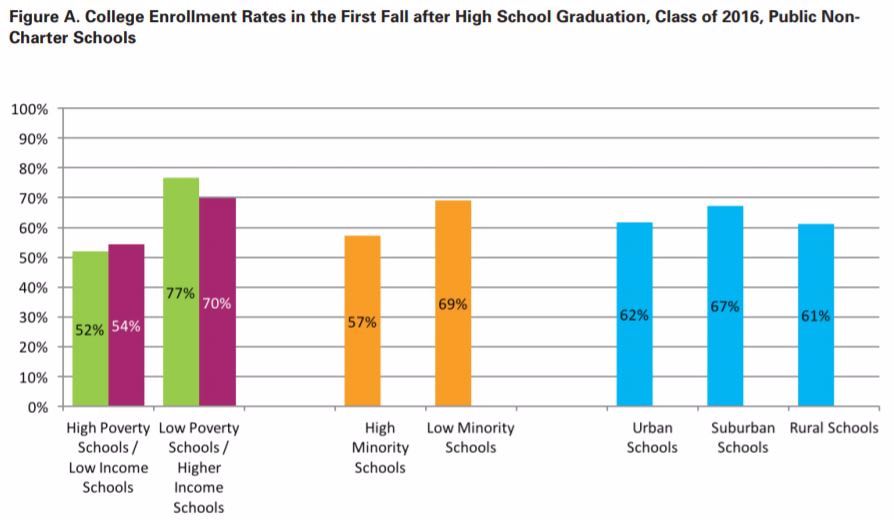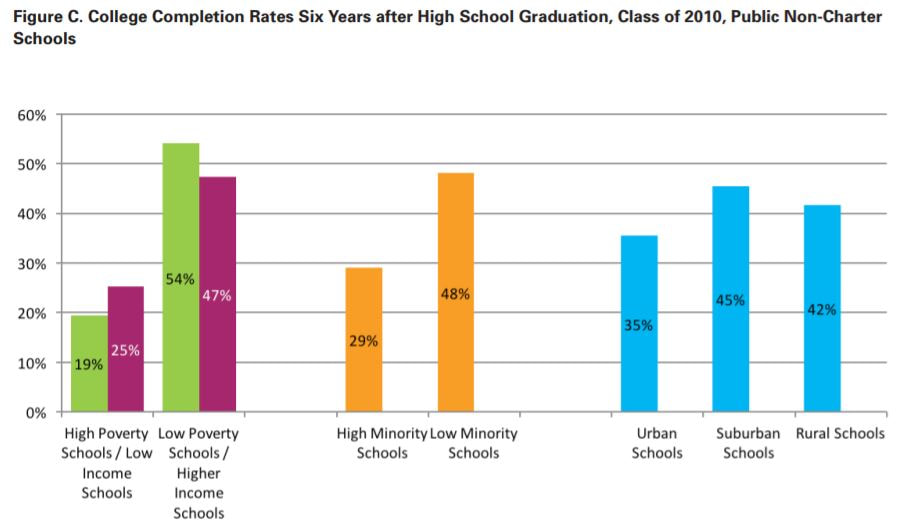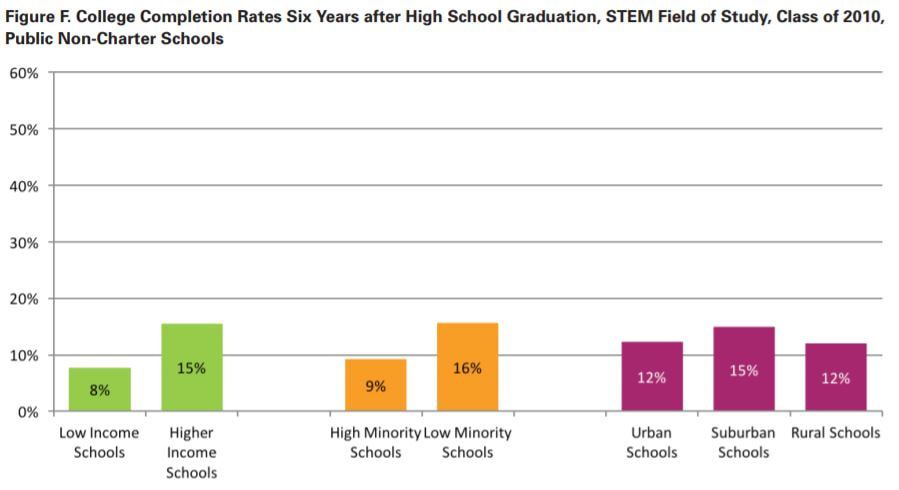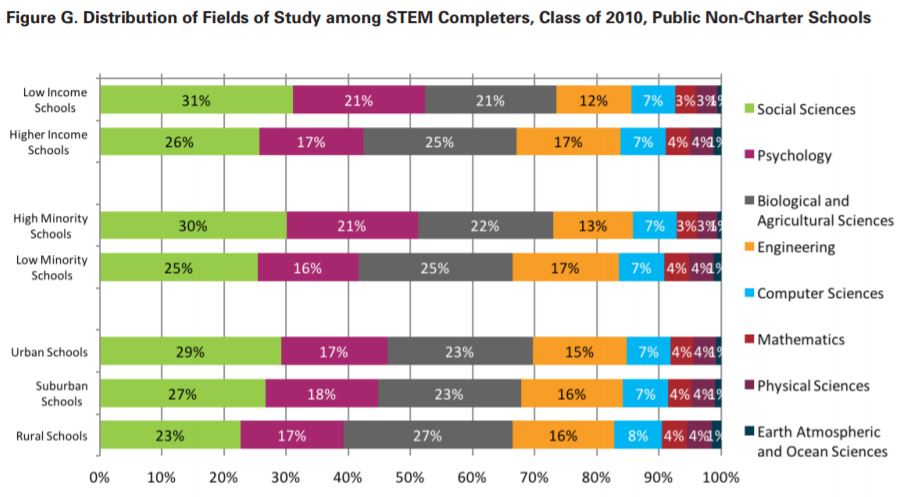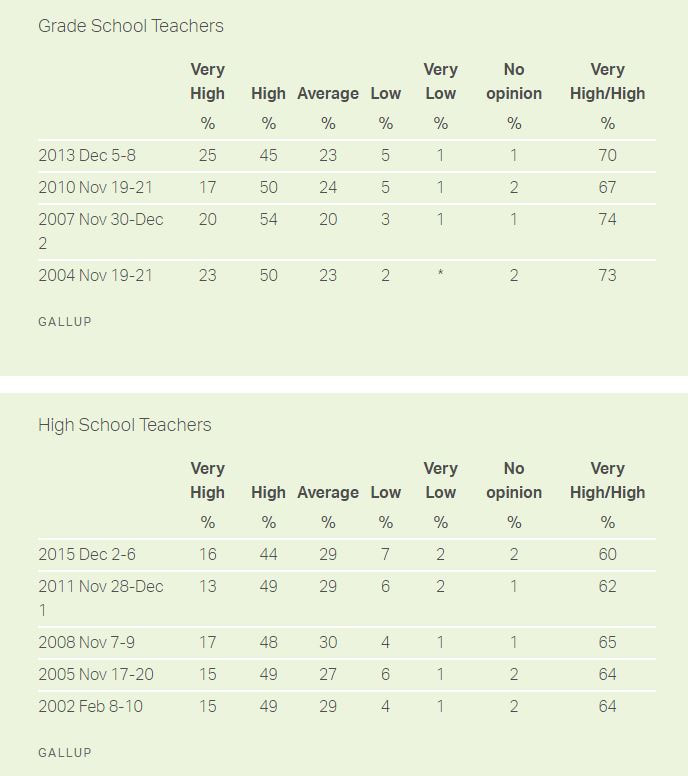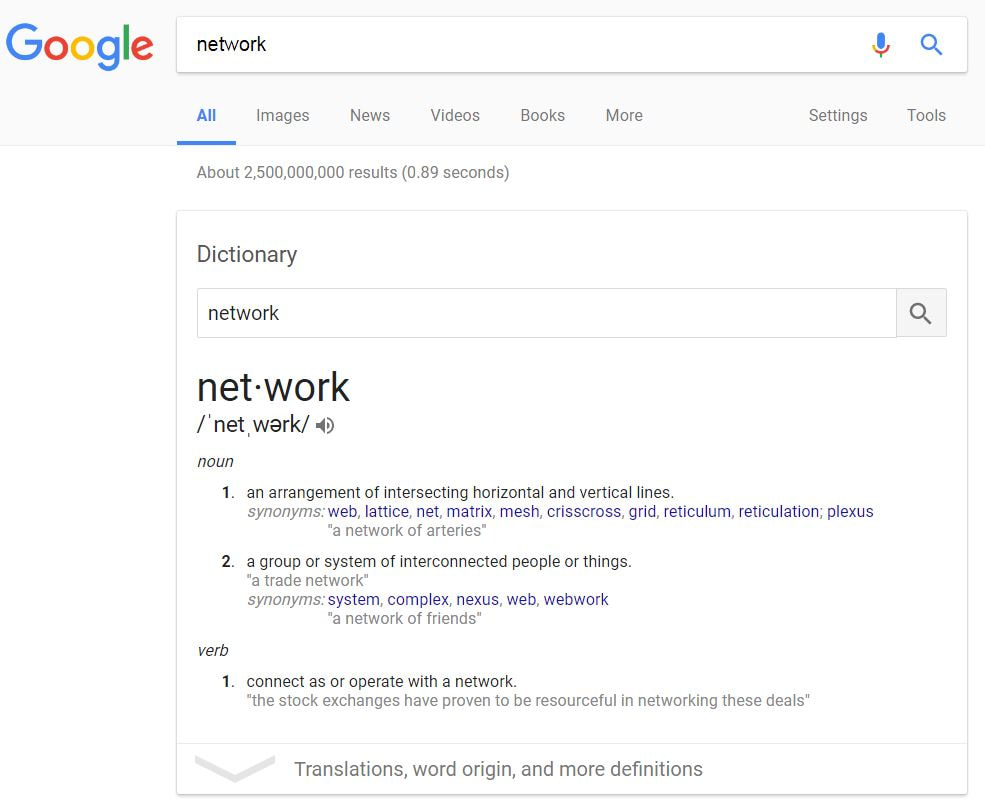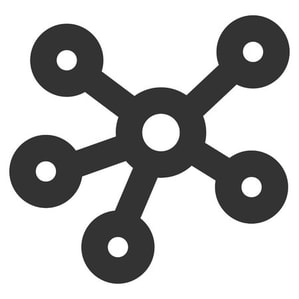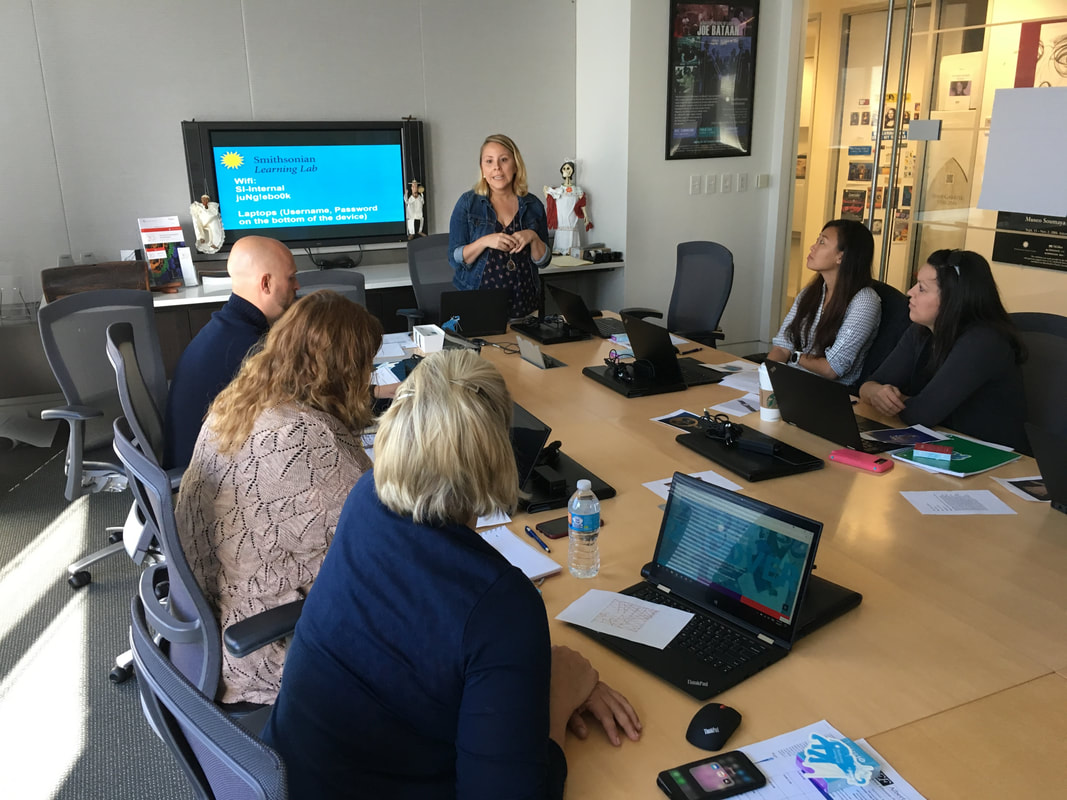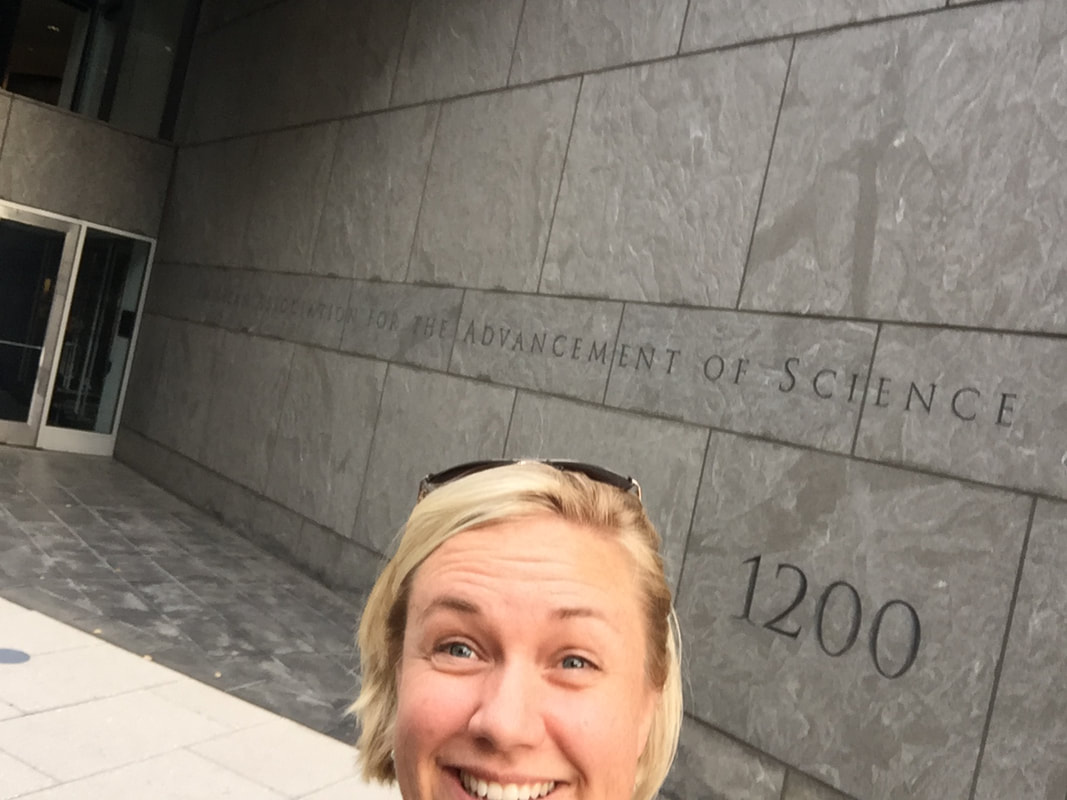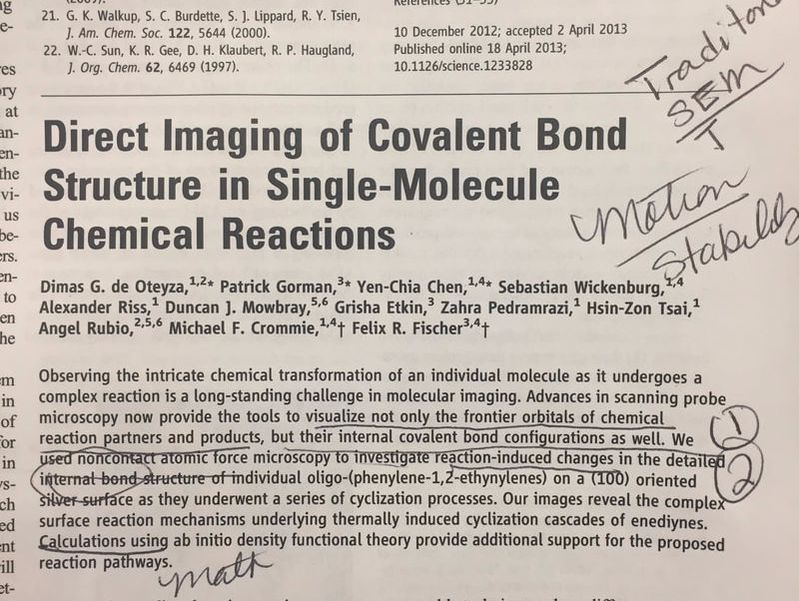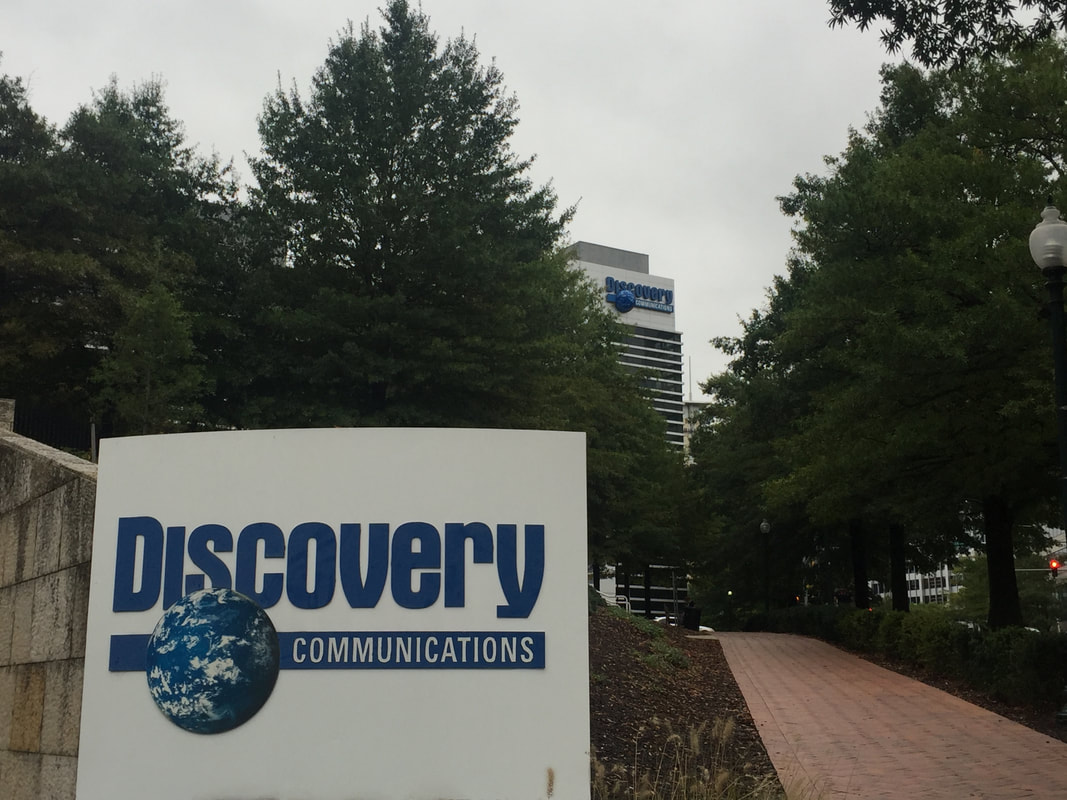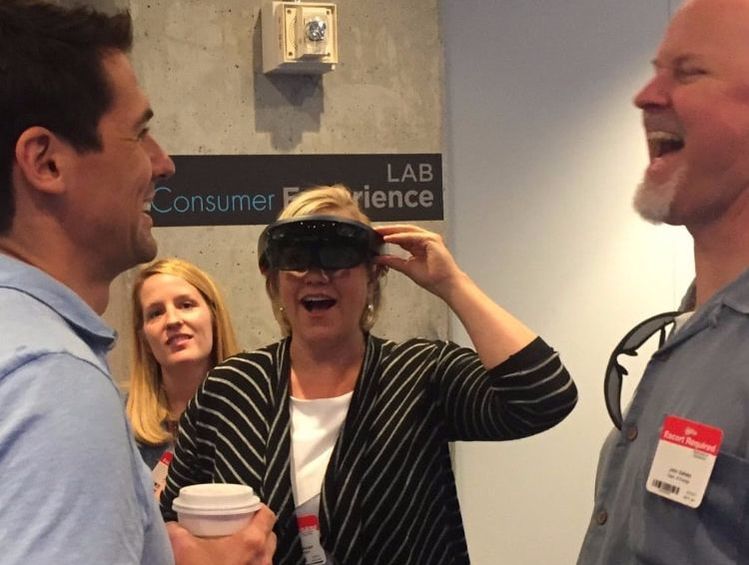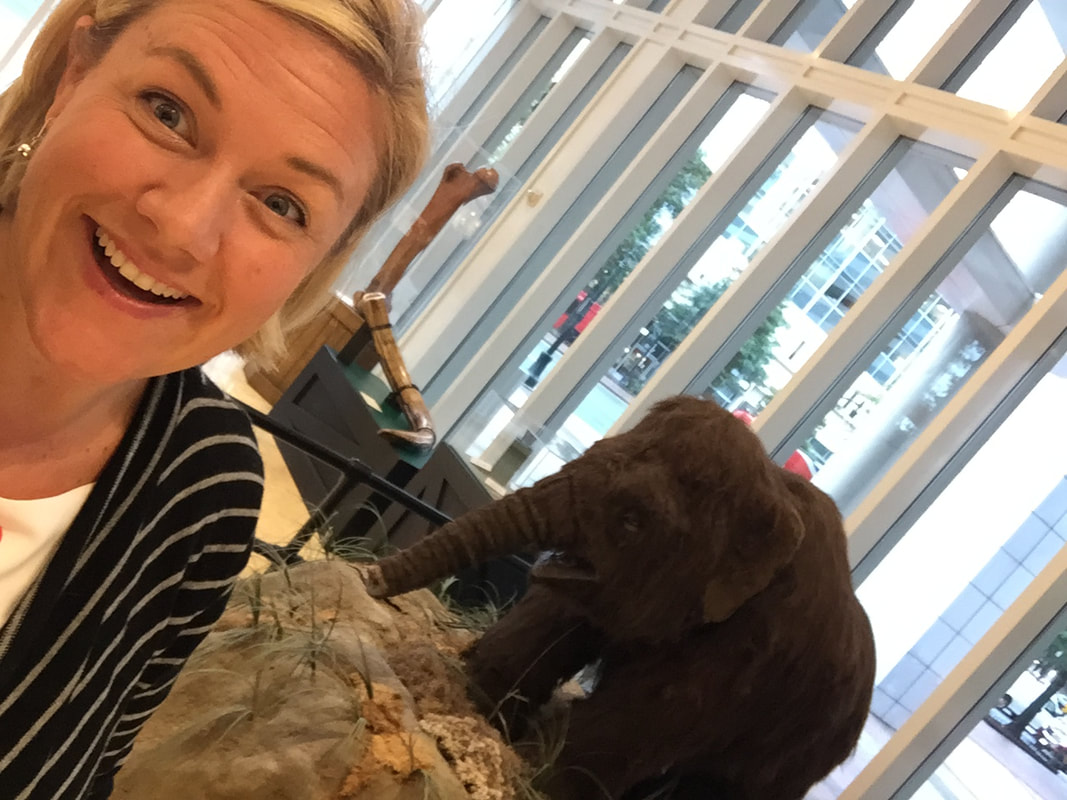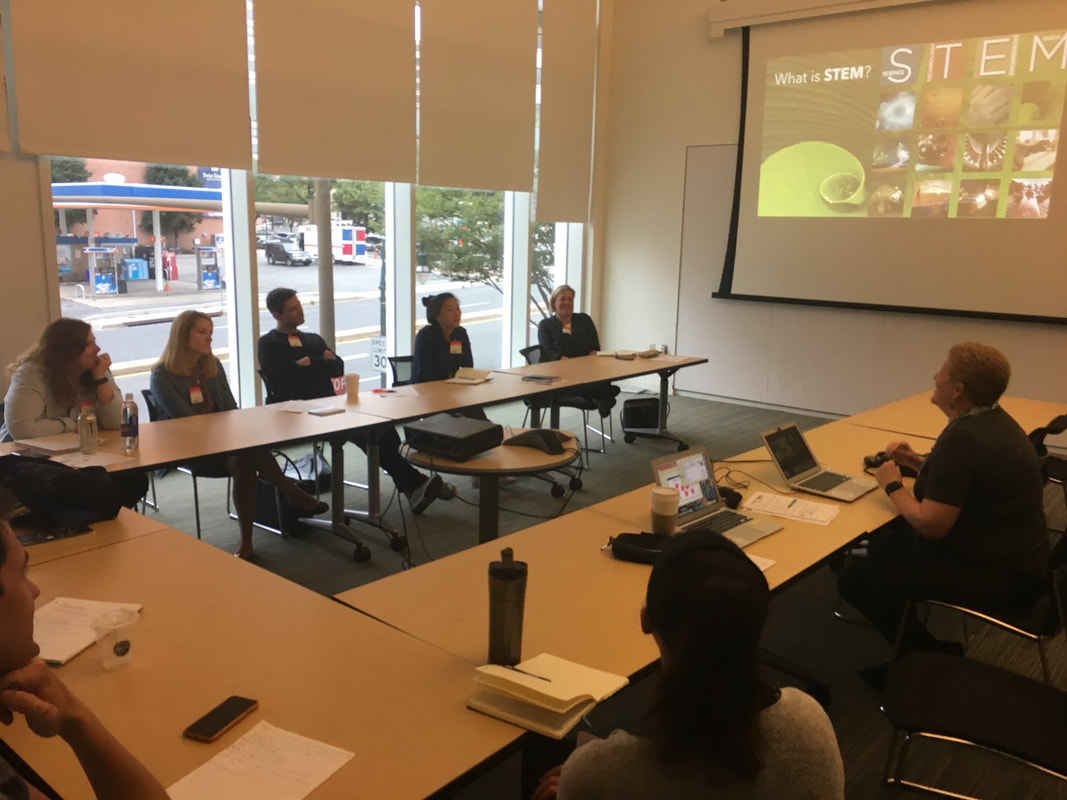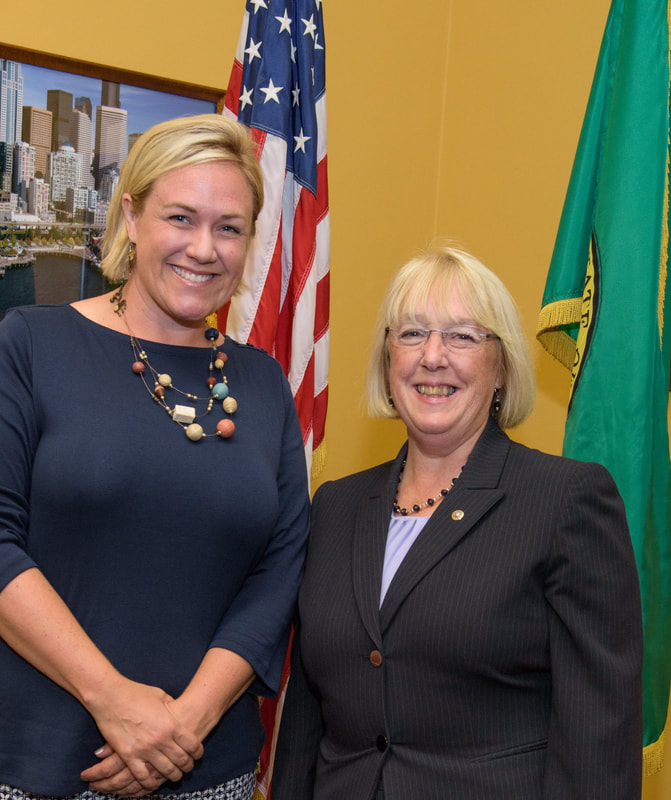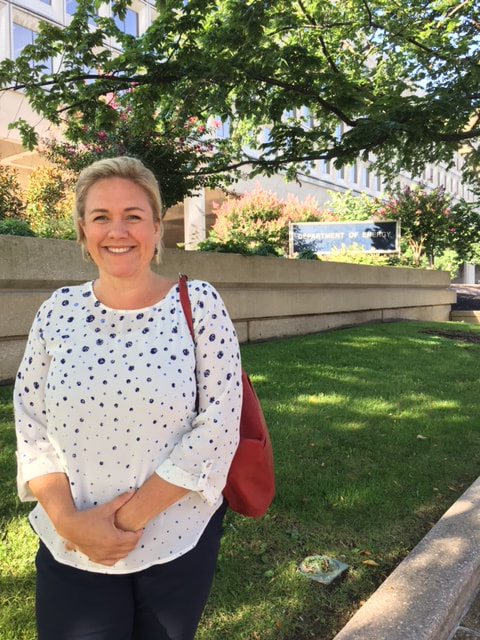|
Since my birthday is on New Year's Eve, January 1 resets both the calendar year and my age. I am a big-time resolution writer (emphasis on writer, because I am not necessarily a big time resolution keeper!). Each January I invest in a new , high quality journal and write about my goals for the year ahead. For 2018 my mantra was to “Flourish with Gratitude.” I chose this because it combines two of my favorite words: On my daily round trip Metro commute to and from the DOE from our temporary home in Arlington, I listen to podcasts and I play Two Dots on my phone, but mostly I just sit and think. I love the ability to have the "choice of what to think about" as author David Foster Wallace spoke about in his "This is Water" commencement address (2005). Ever since I heard that speech, subtitled "some thoughts...about living a compassionate life," I've made an attempt to be more aware (mindful, to use the lingo of the day) of the minutia of thoughts that fill the void. So, anyway, while on the metro I often just sit and think, reflecting on my experiences as an Einstein Fellow and internally question if I have been able to use my short time in DC to Flourish with Gratitude. I think my answer is YES - and here’s why: REASON 1: I've was in a "particularly favorable" (see definition of flourish) fellowship placement. While DC is not currently a “particularly favorable environment” for me politically, my specific fellowship placement was “particularly favorable” for me personality. Within the DOE I had the time and opportunity to both feel like I was making a meaningful impact towards a successful National Science Bowl while also being able to explore my own learning and professional growth. It’s the opportunity for learning that was “particularly favorable” for my attempt to flourish while in DC. According to the Gallup Character Strengths analysis we completed at the beginning of the fellowship, my #1 character strength is LEARNER, meaning that I have, “a great desire to learn and want to continuously improve. The process of learning, rather than the outcome, excites [me].” Facts. In hindsight, I can also say that the DOE placement also matched well with my other top strengths: harmony, discipline, input and achiever. Thank you Jan, and others in the DOE Office of Workforce Development of Teachers and Scientists, for your part in making my fellowship year a success. REASON 2: I have a "particularly favorable" family. Everyone who knows me knows that I married to the most supportive, wonderful person. Over our 24 years together, Curtis has always been the first to say "do it" when I mention a new challenge or opportunity. He doesn't balk at my chances or immediately think of the hassle to him personally. The Einstein Fellowship was no different; he supported me and our little family throughout this crazy time; moving across the country, learning a new town and moments of feeling isolated or lonely. It's been a super busy work year for Curtis, but even when he's not home we take time each night to talk about the best parts of our days. Thank you, Curtis. Maybe there is something genetic, but our son Carrick has been equally as supportive. Even though he's "only" 13, Carrick has (at moments) been wise beyond his years. I know I was asking a lot of a kid to leave the comfort of school, friends, team and routine to move across the country and be plopped into a new habitat. There have certainly been moments of frustration for him, but overall he's displayed a real sense of adventure and openness to new experiences. There is no doubt in my mind that one of the best parts of this year has been the chance for Carrick and I to spend so much time together without the distraction (for lack of a better word) of school commitments and/or social lives. The time has been a gift and I've loved spending it with our kid. Thank you, Carrick. As Curtis and I raise an only child, I can't help but think of my parents and what it was like for them to parent me, also an only child. I am so very appreciative for all of the "gifts" (not tangible) my parents have given me throughout my life. Their support of me throughout the fellowship has been no exception. From editing my application essays to filling their garage with our moving boxes, my parents are both emotionally and practically supportive of this adventure. Thank you, Mom and Dad. REASON 3: I am part of a "particularly favorable" fellowship cohort. One commute morning this past spring, I was listening to a TED Radio Hour podcast and the host, Guy Raz, was interviewing John Koenig, author of a dictionary of made up words, called "The Dictionary of Obscure Sorrows." His dictionary aims to fill the gaps in the English language with terms to describe emotions. I was caught off guard when Guy asked John to define the word "Monachopsis" because this "fake" word perfectly defined moments of my Fellowship. Being in a relatively isolate fellowship position, without the hustle, bustle and vibrancy of a classroom, without the chitter-chatter of the science department lunch table, without the pressure of planning daily lessons and balancing too much grading with not enough time - I was feeling out of place, out of my "intended habitat". There were moments of this fellowship in which I felt "out of place", but as the definition of monachopsis states, I was able to "huddle in the company of other misfits"... my fellow fellows. We are a group of twelve math and science teachers, brought together to experience a year out of our norm, collectively working toward improving STEM education for the kids in our classes and in our nation. We were able to learn together, laugh together, challenge each other and grow together, professionally and personally. It's been a pleasure to get to know each of them and I look forward to the social media tracking and "real life" reunions we are sure to have in the future. Thank you, Kim. Thank you, Ruth Ann. Thank you, John. Thank you, Lisa. Thank you, Chris. Thank you, Jennifer. Thank you, Becky. Thank you, Kelly. Thank you, Michael. Thank you, Evan. And especially, thank you, David. REASON 4: I have "particularly favorable" school colleagues As I return to teaching, I am so glad that I will be returning back to a system, school and department that have been so supportive of me leaving for a year. During the application process I met with our assistant superintendent of human resources and school principal to make sure that I would be welcome back after a one year leave of absence. I wasn't willing to leave a school and job I love if I wasn't going to be able to return. Thank you, Lisa and for supporting teacher professional development and encouraging me from afar. There is also no doubt I would have felt comfortable leaving my classroom if I didn't trust my science department teacher colleagues to carry the IB Biology load while I was away. I've poured my heart and soul into the IB Biology class I teach (this website is a testament of that) and my colleagues have more than risen to the occasion of teaching the class in my absence. Thank you, Chris. Thank you, Allie. And most importantly, thank you, Steve. I'm looking forward to being back and co-teaching with you again. I kind of feel like the Einstein Fellowship can be perfectly summarized by this Calvin and Hobbes comic: "Is our quick experience here pointless?
Does anything we say or do in here really matter? Have we done anything important? Have we been happy? Have we made the most of these precious fes [months]??" My answers: No. Yes. Yes. Yes. Yes. And with that, 2017-2018 Albert Einstein Distinguished Educator Fellowship ... over and out. With gratitude, GvB When Kouzes and Posner (2010) asked different people to identify their most important leader role models, teachers were second only to parents. I’m winding up my fellowship year and have already begun to kick into high gear my planning for the school year. In addition to my work as a classroom teacher, I have various teacher leadership roles within my school, district and state. For example, I am a facilitator/coach for a Critical Friends Group, I lead full staff professional development, I am on a teacher advisory board for the University of Washington College of Education and I prepare and present modules for teachers new to the profession. For me, my work beyond the classroom is not about career advancement and opportunity, it’s about service. A focus of my professional development this year was learning about the many facets of teacher leadership. I’ve read books, attended discussions and learned more about my own leadership style. Teacher leadership can come in many forms (instructional leaders, organizational leaders, professional leaders), however in general, teacher leadership can be defined as, “the process by which teachers influence their colleagues, principals and school communities to improve teaching and learning practices with the aim of increased student learning and achievement,” (York-Barr and Duke, 2004). Schools and districts are organizational systems made up of many interacting, interrelated and interdependent components. Taking a systems-thinking approach to education means understanding that change is complex and affected by many things simultaneously. It also means that we all, including teachers, must have input to avoid what can be chaotic and frustrating shifts in school priorities and climate. My time as an Einstein Fellow has reminded me that teachers MUST have important leadership roles throughout the education system. Every teacher, at all stages of the professional continuum, has both the opportunity and obligation to be a leader. School boards, principals and teacher colleagues need to encourage, empower and create space for teacher leadership within the school system and beyond. One way teachers should have leadership opportunity is through the making (or revising) of educational policy. Repeatedly this year, I’ve attended policy discussions for which teachers are the intended implementers of some education reform initiatives, but for which there has typically been little teacher input on the content or scope of the reforms. Earlier in the year, I attended an event on Capitol Hill that highlighted the results of a recent convocation at the National Academies of Science, Engineering and Medicine that explored teachers’ roles in advancing K12 engineering education. The National Academies report illustrated the lack of teacher voice in policy making: “As is often the case with K-12 education reform, many of the policies and practices have not been fully or, in some cases, even marginally, informed by the knowledge of practicing teachers.” As a result, there was a call for increasing the roles and significance of teachers in policymaking for K-12 [engineering] education.
Teachers are typically not policymakers, but we do possess the knowledge and experience that can contribute to the development of effective policies. I know many, many teachers who have the cognizance, confidence and aspiration to have input and be heard. The limitation to including teacher voice in policy making is not teacher ability, want or desire. Rather, the limitations are opportunity, time and money. Opportunity: teachers need to be invited to “the table” and when present, teacher input must be valued and respected. Time: teachers need to be given the time away from the classroom, guilt-free, to participate in the discussion. Money: teachers need to be compensated for our expertise. Hmmm…. A recipe for teacher leadership success = Opportunity + Time + Money. Seems like a perfect summary of my time in the Albert Einstein Distinguished Educator Fellowship.
Throughout the year, I’ve been keeping a running list of “things to blog about.” The list is too long and time time too short for me to write extensive posts for everything on my list. With just a week left as an Albert Einstein Distinguished Educator Fellow, I am going to use this entry to write about experiences about which I have not yet written so that I have a record of all I have had the opportunity to do and see. This post is mostly me word vomiting a brief description (some heavily pulled from formal agendas) of all I’ve done so that I’m less likely to forget as I return to the reality of teaching back home!
In January, we explored topics faced by teacher leaders and practiced using the logic model developed by the Association for Supervision and Curriculum Development (ASCD). We problem solved common issues found in school systems and used a ‘critical friends’ type protocol to refine the goals, activities, and measurements for impact to address the dilemma. As a critical friend coach in my home district, I especially enjoyed the deep thinking and collaborative problem solving in which we engaged.
Some of the work we completed using the ASCD protocol for Teach-to-Lead
Between January and March a small group of Einstein fellows worked in a collaborative group to complete a Stanford course on using and developing performance assessments related to the Next Generation Science Standards framework. The course involved learning about the three-dimensions of the NGSS and how to use performance assessments in the classroom. We developed a student focused, embedded performance assessment that had students using authentic epidemiological data about cancer rates around the United States to make and support claims about the effects of smoking on cancer development.
Between January and March I was also participating in a series of three online evolution course offered through the Howard Hughes Medical Institute. The courses, which required about 10 hours to complete, focused on the mechanisms of evolution, sources of evidence supporting evolutionary theory and patterns of evolution, including phylogenies and macroevolution. Not to sound arrogant, but honestly I can’t say I learned anything I didn’t already know. However I did make notes about how the information was being presented (scope, sequence) which will certainly inform my future evolution unit plans.
Carrick and I had a great February night at the National Museum of American History learning from Kareem Abdul-Jabbar about how invention, innovation and STEM education can be a powerful tool to fight social and racial inequalities and injustice. This was actually our second time seeing him; he was in Seattle a few years ago and we heard him talk about sticking out (literally) while he was in middle school and how his middle school experience really framed his perspective in life. He is humble, confident, smart and inspirational.
The cyclical nature of the Einstein Fellowship was evident when in March our current cohort of Fellows participated in the interview weekend for the 2018-2019 batch of teachers. I was reminded of the excitement and uncertainty of being a candidate and the true honor it is to have been selected as a Fellow. The applicants were incredible, accomplished educators and it was wonderful to be able to spend two days chatting about teaching and comparing teaching scenarios. I assisted with two days of interviews and can attest that the quality of educator who applies for this Fellowship is stellar. I’ve already made contacts with a few in the incoming cohort and I hope their experience is as rewarding as mine has been.
Also in March, fellow Fellows Kelly and Jennifer lead our group through a discussion and reflection on internalizing the growth (vs. fixed) mindset as educational leaders. We examined research, participated in activities steeped in educational psychology and examined high profile cases of the “Power of Yet” to deepen our knowledge of a familiar and longstanding concept in education.
In April the Fellows had the opportunity to collaborate with the teams at the National Governors Association and the National Conference of State Legislatures. We discussed educational equity and equitable access for all students, how to communicate with local and state policy decision makers and how to effectively communicate to drive change in education. A theme was the shared governance of education, from local districts to federal programs and how the various levels of government work together and drive education reform.
In May we visited the National Inventors Hall of Fame Museum and learned about intellectual property and trademarks at the United States Patent and Trade Office. We modeled the creation of an invention and learned the differences between patent, trademark and copyright. I especially liked learning about plant patents and the guidelines that must be followed for being credited with “inventing” a new plant. For example, the plant can not naturally occur in nature, must be asexually formed (ie through grafting) and can not be a tuber (no potato patents)! I am a big fan of the Hass avocado ,which originated from a single grafted tree produced by Rudolph Hass in 1926!! The tree was patented in 1935 (the first patent on a tree in the US). Today the Hass avocado accounts for 80% of avocados grown worldwide and is a billion dollar industry. However, Mr. Hass only made about $5,000 for his invention because cuttings from single trees have been propagated to form whole new orchards. Makes for a great story for when I am eating guacamole with all of my biology loving friends.
I’ve been trying to get out and about to take advantage of opportunities happening in DC. In May, my husband and I spent an afternoon at the National Portrait Gallery. I challenged myself to find all the portraits of scientists within the museum. According to their website, there are 31 scientists who have portraits on display in the museum. I couldn’t find them all, but I certainly enjoyed an afternoon taking on the challenge!
I was also about to go to a book signing and talk by two of my favorite science writers. Ed Yong is a science journalist who reports for The Atlantic and Carl Zimmer is an award-winner New York Times columnist and the author of 13 books about science. I couldn’t miss the chance to see him them in June when Carl was in town to promote his newest book, “She Has Her Mother's Laugh.” The room was packed, but I was able to see and hear Ed and Carl banter about genetics, science and science communication in the Trump era. It was an opportunity I wouldn’t have had if I wasn’t living in DC for the year.
Another highlight was the Safe Zone training provided by Fellow David in July. Safe Zone trainings are opportunities to learn about LGBTQ+ identities, gender and sexuality and to examine prejudice, assumptions, and privilege associated with different identities. I always appreciate open and honest conversations and the Safe Zone training was a good reminder that our impact as educators is reliant on us understanding our own identities (sense of who we are, where we come from, and what we believe) and having empathy for our students and their unique identities. Empathy is foundational for building bridges between individuals, understanding each others' complex emotions, gaining a diverse perspective, and leveraging relationships for learning and progress.
Throughout the Fellowship we’ve been hosting monthly “Twitter Chats.” A Twitter chat is a public Twitter conversation around one unique hashtag; we’ve been using #EinsteinFellows17. This hashtag allows anyone to follow or participate in the discussion. We’ve virtually chatted about the AEF program and application, the STEM educator pipeline, professional development opportunities for STEM teachers, STEM education and the media, the teacher leadership career ladder, STEM learning in informal settings, the achievement gap in STEM education, measuring teacher quality, makerspaces and social/emotional learning in the STEM classroom.
The Einstein Fellows met for the last time as a group last week at our “end of year roundtable” (which was not actually at a round table, which I found disappointing :-)). Our group reflected on our year and our development as leaders and educators. It was incredible to hear the many stories, experiences and opportunities that the the Einstein Fellowship has provided. The Einstein Fellowship is the like the pebble that triggers a ripple effect. It’s an an opportunity that causes change in teachers that will ripple across the “water” of the STEM education ocean.
Last week Carrick (my son) was at a week long day day camp in which he built and programmed a drone. As a 13 year old, he is on the front-line of the education initiatives focused on creating a workforce ready to design and build our engineered future. He had a great time at camp learning about electronics, computer programming, engineering design and of course, how to fly a drone! Observing his experience triggered my reflection about my own learning this year outside of my life-science comfort zone about computer science and engineering design principles. Carrick’s attendance at a drone camp was inspired by two events. First, there was an interactive drone demonstration at the Techstravaganza we attended at Thomas Jefferson High School of Science and Technology. Secondly, our family had the chance to visit the Smithsonian Conservation Biology Institute and learn about the technology and biology being used to conserve some of the planet’s most endangered animals. We were able to visit the lab in which the tools used to remotely monitor animal populations are designed and built. The SCBI is committed to finding ways to track animals without disruption, including the use of radio collars and drones. Carrick mentioned that he thought it would be a cool to have a job designing and flying drones for wildlife management. BINGO! Authentic and relevant motivation for learning about engineering, designing, building and coding. Kids need to learn about science, engineering, and technology because not only do they permeate nearly every facet of modern life but they also hold the key to solving many of humanity's most pressing current and future challenges. Carrick is lucky in that he has parents that have the time and financial resources to supplement his education with enrichment activities like a drone summer camp. While lots of kids have the interest, curiosity and motivation, not all kids have the opportunity for summer education enrichment. Luckily, engineering principles are a growing part of K-12 education. The National Academies of Science Engineering and Medicine (NASEM) states that, “Teachers at all grade levels increasingly are using the principles and practices of engineering to capture the attention of students, improve their learning of STEM and spark their interest in engineering careers.” Reforms stimulated by the Next Generation Science Standards are reinforcing this trend, as the NGSS standards codify the opportunity for integration between science and engineering practices. As of now, nineteen states plus the District of Columbia have adopted the NGSS and another 12-14 have adopted standards that are based on NGSS (in some cases, the state standards are identical to the NGSS but for political reasons they are repackaged by the state). Throughout the fellowship I have seen how many different careers rely on knowledge of engineering principles. For example, in February the Fellows went "behind the scenes" at the Smithsonian Museum of American History. We were able to see the exhibit design workshop, the photography studio and the paper preservation lab. Each stop on our tour provided an example of how people are applying STEM knowledge to creative careers and how the engineering design-test model is relevant to so many different applications. In addition to engineering, this year I have also learned more about computer programming. A highlight was learning about computational thinking and computer science with the Raspberry Pi during one of the Einstein Fellowship professional development meetings. The Raspberry Pi is a credit-card sized computer which can be connected to a monitor, keyboard and mouse. The Pi can be used to understand how computers work and are programmed. During our PD, the fellows explored circuitry and physical computing by using GPIO pins on the Raspberry Pi interface with electronic components such as a breadboard, jumper wires, and LEDs to code a flashing light! I was super proud when mine light started flashing! I plan on taking some of my newfound knowledge about engineering and computing back to my classroom. I am motivated to try a lesson I found in which students code an LED light attached to a Raspberry Pi to flash in accordance with their heartbeat! Given his new coding and engineering skills, I might have Carrick help me with the project!
Back in February, the Albert Einstein Fellows had the opportunity to explore how the National Geographic Society connect STEM and geographic literacy. We spent an afternoon at the Society learning about their education initiatives and visiting the engineering imaging laboratory. We met with the lead engineer with National Geographic Remote Imaging team, the group that facilitates the building of unique imaging tools and equipment for the National Geographic Society. Some of the equipment includes the dropcam, a camera that can film in some of the deepest regions of the world’s oceans, and the Crittercam, a camera attached to wild animals that can record video and audio as well as collect other data. The day of our visit they team had just finished testing of a camera case designed to withstand the immense heat of a raging wildfire. It was SO COOL to see the science and engineering that is used to create the iconic images and videos that the National Geographic Society is known for producing. We also learned about the National Geographic Society education resources and opportunities for professional development. The National Geographic Society played a huge role in my trajectory as a teacher. I received a grant from the National Geographic Society for my first ever Earthwatch expedition in 2004. On that expedition, I wrote a reflection that has served as my “touchstone” during my education career. In a way, I have the National Geographic Society to thank for my 100% confidence that the statement that “those who can’t … teach” is a fallacy. I can “do” science but I chose to teach. Since that initial experience, I have taken students on an additional ten expeditions. While no long directly associated with Nat Geo, the Earthwatch expeditions my students and I participate in definitely mesh with the National Geographic Society’s missions of exploring and protecting our plant while inspiring new generations through education initiatives and resources. Given impact and mission of the National Geographic Society, when the Einstein Fellows visited I was excited to learn of the educator certification program. “The Educator Certification program equips educators with the resources and training needed to teach students about the world in innovative, interdisciplinary ways. Benefits of certification include professional recognition; connection to a community of like-minded educators; and access to resources, mentorship, and leadership opportunities with National Geographic. Through this program, educators will learn about the National Geographic mission, how to teach interdisciplinarily through various scales and perspectives, and the National Geographic Learning Framework—all while applying these ideas to their own work and collaborating with educators worldwide.” I immediately began work on my certification process. First was participation in a virtual workshop where I learned about the National Geographic Learning Framework and the thousands of educational resources and opportunities available to educators. Emphasis during “Phase 1” of the certification process was on the attitudes, skills and knowledge of the explorer mindset. Phase 2 consisted of teaching two lessons that related to the Nat Geo Learning Framework and a teaching resource or lesson available through the Society. How was I going to teach two lessons while I don’t have any students? No problem! In April I traveled with a group of kids from my school to Costa Rica for an Earthwatch expedition during which we assisted on a study of frugivory and seed dispersal. The week with students enabled me to complete my Phase 2 lessons with no problem. The final component, Phase 3, involved creating a capstone video to showcase one of the lessons from phase 2. I was tasked with creating a video that tells the story of the lesson, the impact it had on the students and demonstrates my professional growth. In all the other teaching videos I have created (i.e. National Board Certification and Presidential Award for Excellence) the videos were uncut and unedited. For the capstone project however the video needed to attempt to capture an audience and tell a story (attributes that Nat Geo is quite known for). So, I spent quite a bit of time trying to edit together video clips and photographs for the final project. Shout out to my husband Curtis for capturing some video of me, even if it’s obvious I’m looking above the camera! Oops! I’ll find out if I met certification standards within 4-6 weeks. In the meantime, I have really really enjoyed the process of learning more about the National Geographic Society education philosophy and capturing the story of our work in Costa Rica!
My fellowship year is winding down and I am finally making time to write about some of the things I’ve done earlier in the year that have been on my “to blog” list but I haven’t gotten around to yet. Mostly I just want to document my experiences because I know that in hindsight this year as an Einstein fellow will feel like a blur. The recent 4th of July firework spectacular reminded me of another display of holiday lights, Christmas! Way back in December I joined with the two NASA fellows to attend a lecture by Dr. Miguel Roman, a research physical scientist and remote sensing specialist in the Terrestrial Information Systems Laboratory at NASA Goddard Space Flight Center. Dr. Roman’s session was about how NASA scientists are able to use satellite data to remotely sensor the Earth. Satellites provide a unique vantage point of space from planet Earth and enable us to track changes in and interrelatedness between the land, ocean, atmosphere and ice of our planet. Dr. Roman is a Earth scientist who is on the team that created the famous “Black Marble” images of our planet at night. From 500 miles out in space, the NOAA/NASA Suomi National Polar Orbiting Partnership satellite uses a visible infrared imaging radiometer to observe the planet. Human societies run on energy and each night as we switch on the lights to help us function in the dark, patterns of light spread across the surface of Earth creating a spectacular visualization of our energy-use decisions. In fact, during major holidays, such as Christmas in the United States and the holy month of Ramadan in the Middle East, these lighting patterns change and can be seen from space!. A component of NASA’s mission is to provide data and tools for others to use for societal development. The Earth at night images provides information relevant to “human centered earth-systems science research.” Energy use is dictated by the routines of the communities in which we live and the NASA satellites technologies allow us to observe shifts in energy use in time and space. For example, the images can be used for tracking migrations and demographic changes, monitoring disaster response, and verifying claims made by energy providers. The images are not easy to create! Each pixel of the image is about 3 X 3 city blocks and there are challenges in removing “light noise” captured by the satellites so that only human generated light is displayed. For example, light from the moon, reflections off snow, fires, lightening and aurora must be subtracted from the data prior to display. Additionally, there is the problem of vegetation blocking and scattering light. The final map of Earth at night that we see is actually a composite image collected from 5247 orbits of the satellite collecting 42 terabytes worth of raw data! Dr. Roman's session was really "lit" and I learned a lot that will "light up" my future instruction of Earth systems and human impact! 🔥 🔥 🔥
It’s summer, and in any typical year that would mean I am enjoying a break away from school. This year however, I actually find myself missing school a little bit. I’ve missed the energy, vibrancy, borderline chaos and joy of spending my days in a school. So, as my fellowship year progressed, I took advantage of the opportunity to visit schools to learn about their STEM education programs. In January, I visited T.C. Williams High School in Alexandria to serve as a judge of their annual science fair. The science fair is a district wide event for middle and high school students. The event was a pretty typical science fair, with students presenting the results of their independent investigations. It was interesting to hear from students about their projects; as is typical some of the kids were totally into their projects while others were pretty apathetic! From a logistics standpoint, I was super impressed by the effort to recruit and train volunteer judges from around the community. I hope to take a bit of what I experienced back to my home school for our Group 4 Project community symposium. In April I was able to visit two schools during my visit to the Pacific Northwest National Lab. Delta High School is a small, public high school for students living in the Kennewick, Richland, and Pasco School Districts. At Delta, students are brought together from a variety of backgrounds to create one collaborative community. The faculty is dedicated to creating a highly-personalized, open, and trusting learning environment for all students and their families. STEM is woven into every subject at Delta High School with students engaging in inquiry, problem-solving, and project-based learning. I was inspired by the vision of the school. Next on my school visit list was Chiawana High School, a large comprehensive high school in Pasco. The students and teachers in the school are able to take advantage of their proximity to the Pacific Northwest National Lab by participating in STEM workshops and academies hosted by the lab. I was able to visit a ninth grade physical science class while they were working on a design engineering challenge. It was great to see kids so engaged in their learning. In May I was able to visit the Calverton School, a private school in Maryland with just 300 students K-12. The school is so very different than the large comprehensive public high school in which I teach, yet there are many similarities between the schools, especially around the commitment toward the social-emotional well being of our students. I really enjoyed spending time in the classroom of Dr. Mathers, the IB Biology teacher at the school. She and I had previously met virtually through social media, so it was nice to finally put a face with a name. We chatted about the internal assessments, the extended essay and course sequencing. That might not sound to exciting to the average person, but for me it was GREAT! I was also able to spend time at Thomas Jefferson High School for Science and Technology. “TJ” is a public STEM focused school with a selective admission process. The school consistently ranks as one of "America's Top High Schools." The students at the school annually host a Techstravaganza, a hands-on STEM activity fair that attracts thousands of visitors from the DC area each year. My son and I spent a few hours exploring the school and the 50 different labs and demonstrations the students were presenting. I was actually able to take away some great lesson ideas! The Einstein Fellowship has provided the opportunity for me to visit a diversity of schools with a diversity of students. One thing in common has been the great work that is happening to educate our next generation of STEM thinkers, leaders and citizens.
Last December, the Albert Einstein Fellows had the opportunity to learn about primary source materials,rare book conservation and preservation science at the Library of Congress (LOC). We spent a full day learning about the history of the Library, touring the incredible Jefferson building and exploring behind the scenes of the library. The Library was established in 1800 by Congress, however just 14 years later the capital was burned and the library collection was lost. Thomas Jefferson offered his personal library collection as a replacement. Since 1870 and the advent of the copyright laws, the library has received at least two copies of all copyrighted materials from the United States and around the globe. About fifteen-thousands of new items (books, maps, music, photos, prints, sounds, movies, manuscripts) are added to the collection each day, and there are now over 150 million items! The Library of Congress is the largest, safest library in the world.
I was mesmerized and knew immediately that I wanted to spend a week at the Library of Congress Summer Teacher Institute learning why and how to incorporate primary sources into classroom instruction. I attended the Institute this past week and my already high expectations were surpassed! Spending a week learning about the use of primary sources with teachers of all grades from around our nation was invigorating, academically stimulating and quite fun!
We were able to participate in lessons as if we were students and then had time to reflect and discuss how we would use and/or adapt the instructional activities in our classrooms. I loved that teachers of students of all grades were able to collaborate and share ideas for modifying lessons. I was the only science teacher of the bunch, which actually was a benefit as I was able to expand my understanding of pedagogical methods traditionally only used in humanities courses.
Throughout the week, emphasis was placed on primary source analysis skills. Learning how to teach students how to examine primary sources (for example photographs, diary entries and newspapers) using a “see, think, wonder” approach. We learned and practiced strategies for considering different perspectives and modeled how historians examine sources. There was emphasis on how primary sources can be used to have students construct their own knowledge, deepen understanding of textbook material and support learning of reading and writing skills.
The Library of Congress has a rich collection of digital resources available for public access. Not only did we learn strategies for searching primary sources on loc.gov, but we had the opportunity to attend an “open house” during which time subject matter experts from the various library divisions were accessible for sharing their resources and collections highlights with the teachers.
Teachers in the Institute were asked to develop a primary source activity plan; a lesson that we will use with students that incorporates the use of primary sources and analysis tools we learned about during the week. There was time each day dedicated towards finding primary resources relevant towards our student and content speciacialties, culminating in a “Gallery Walk and Talk” during which time we shared our lesson ideas. I focused on using primary sources related to our understanding of the relationship between smoking and cancer. In the lesson, students examine a variety of primary and secondary sources related to the science, marketing and public policy of cigarette smoking. Students will use the LOC Primary Source Analysis tool to examine an artifact and then classify the artifacts as either “pro,” “con,” or “neutral” of smoking. Then, students will place the artifact on a graph depicting the per capita number of cigarettes smoked per year. Observation, trends and the role of science in public policy will be discussed.
The Institute ended with a discussion about the opportunities and strategies for sharing Library of Congress resources with colleagues. I hope I have the opportunity to share these resources with other teachers in my school, district and state once I am back in the "other Washington" this fall!
The United States Botanic Garden has become one of my favorite places to visit while living and “fellowing” in Washington, DC. I find the warm humid air in the and the immediate burst of chlorophyll in the “jungle” to be calming and focusing. To me, the diversity of plant life within the facility serves as a reminder of the importance of protecting and preserving our Earth’s wild places, all within the hustle and bustle of our nation’s capital. George Washington, Thomas Jefferson and James Madison shared the dream of a national botanic garden and were instrumental in establishing the first one on the National Mall in 1820. At that time, 97% of Americans grew their own food. Today, with less than 3% of Americans growing their food, the botanic garden has even more important role of educating the public about the importance of plants to our environment, health and economy. As is commonly claimed, “we need people to fall in love with the environment before we ask them to save it.” The USBG has a wonderful offering of guided walks and public events. I’ve been lucky enough to be able to take advantage of a couple of these including a hour long tour on the Marvelous Morphology of Fruits and a two day teacher workshop called Hands on Plant Science (HOPS). The Marvelous Morphology tour was led by the the Dr. Susan Pell, Deputy Director of the USBG. Dr. Pell has experience as an informal science educator and a clear commitment to botanical education of children and the general public. Since my own academic focus was in the zoological side of biology, I know I have still have a lot to learn about plants. I mean, I can hold my own with plant structure and function, but the fact that bananas are berries and a raspberry isn’t a berry (it’s a drupe) still causes my eyes to cross with botanical vocabulary confusion! On the tour, Dr. Pell was very patient with my questioning, requests for clarification and quest for plant exemplars of the biological processes I teach. I left with motivation to design a lesson in which students are given a cladograms and example fruits from many plant families and then have to figure out of the fruit structures are analogous or homologous. I was also intrigued by Dr. Pell’s career path that lead her to become a director of the USBG. I like to share stories of practicing scientists with my students so they can see that not all people who love science have to become doctors or engineers (it’s not that those are poor career choices, it’s that they aren’t the only career choices). After the official tour had ended, Dr. Pell spent some time with me to share her academic and professional journey. Like everyone I have talked to about this, her path was meandering and opportunistic. Dr. Pell went to a small school as a undergraduate, thinking she would major in chemistry. However, her advisor was a plant taxonomist and she soon switched to a biology major. Being at a smaller school, she was able to do research as an undergraduate, which lead her on a path towards a PhD. For her doctoral work, Dr. Pell studied the evolutionary relationships between plants in the cashew family. She joined the USBG after a 15-year career as a scientist at the New York Botanical Garden and Brooklyn Botanic Garden and a 2-year stint as an AAAS Science and Technology Policy Fellow at the National Science Foundation. Throughout it all, she has maintained a focus on educating people about the importance of plants to the well-being of humankind. My favorite quote from my chat with Dr. Pell was, “Your job is what you spend your life doing, you should like it!” Fact. At Dr. Pell’s suggestion, I attended the two day Hands on Plant Science (HOPS) workshop at the USBG. Each summer, HOPS teaches and trains hundreds of students and teachers, focusing on underserved wards in the surrounding community. The HOPS teacher workshop is designed primarily for elementary school teachers, however I found many of the activities and lesson ideas inspiring and adaptable to high school students. It was great to be around a group of teachers who embraced elementary science education and were excited to learn ways to bring botany into elementary classrooms. The workshop was jam packed with activities, as a completed four lesson modules in two days. The workshop facilitator, Lee Coykendall is the Children's Education Specialist at the U.S. Botanic Garden. Over the past 17 years, Lee has built and expanded the children's education program, making the Garden a rich resource for students and teachers alike. The workshop was split into four modules, each with a different theme. The first module was focused on water and the scientific way of asking questions and wondering about the world. We focused on observation, using our senses for qualitative data and thermometers for quantitative data. We then measured the dissolved oxygen and pH of the water and discussed how these two qualities influence the wellbeing of aquatic organisms. We examined stream water under the microscope (always a hit) and modeled connections between urban water runoff and effects on regional watersheds (interesting factoid: Washington DC is 50% impermeable to water, meaning the buildings, roads and infrastructure can not absorb water from rain, which can lead to urban flooding events). It was fun to witness the other teachers as they explored scientific tools and discovered the joys of hands on science. The focus of the second module were the plant processes of photosynthesis, transpiration and reproduction. We viewed stomata under a microscope and discussed why plants will open and close their stomata. Again, no new scientific learning for me, but it was sure fun to see adults “oooh” and “ahhh” about something they had never seen before! One thing I did learn was about Brix refractometers - so cool! These tools measure the bending of light given the amount of sugar in a solution. We squeezed leafs on the tool and were able to actually get a quantitative measurement of the sugar that had been produced in the leaf by photosynthesis. The options for student inquiry are really wide open with the simple tool. We ended the first day of the workshop with a flower dissection and drawing. I have my students dissect and draw flowers every year, however as soon as I was given a frame for my work it felt much more important! I loved the simple idea of valuing the work of the students by framing the drawings. I was thinking also that it would be fun and educational for students to create anatomically correct flowers using modeling clay. The art theme followed through to day two of HOPS workshop. We went into the National Garden and used water-colors to paint the same subject at a macro and micro level. It was amazing! Everyone went off to their own region of the garden and found a subject for their observations. The macro-micro requirement really encouraged deep observation at multiple perspectives. Again, the art we produced felt valued as we were able to select a frame to display the paintings. We also created mosaic sundials and butterfly pollinators, every engaging activities for teaching kids about ecosystems. The final module was a plant Crime Scene Investigation. Participants were intrigued by a plant being stolen from the observatory and two prime suspects being investigated. Using the tools and knowledge we’d gained during the workshop, it was our job to explore seeds, soil, pollen and nectar to determine which of the two suspects had committed the crime. Luckily, scenario was fiction and the plant had just been misplaced. The workshop was a great way to spend two hot days in Washington, DC. A special thank you to the non-profit National Fund for the United States Botanic Garden for funding the workshop and for a clear commitment to student, and teacher, botanical education. The teacher participants learned a lot and left the workshop inspired and excited to include plant science within their curricular scope and sequence. The gift bag of materials given at the end of the workshop will enable teachers to put these lessons into action, a huge THANK YOU to the National Fund for making that possible. Once again my belief that teachers are incredible people who do great things for kids was affirmed. However, it's the kids in Washington who are the true beneficiaries of the lessons their teachers learned at the Hands on Plant Science workshop.
I can tell I miss classroom teaching, because I’ve already begun thinking about my lessons for the beginning of the school year! In any typical year, June would bring desperation for a break; but this year I am actually feeling a bit of excitement about returning to the classroom in the fall. The beginning of the school year is such a period of optimism; grand plans for what will be taught, who the students will become and a year full of engaging and effective lessons. It’s a vision that rarely is met by reality, but is motivating nonetheless. At the beginning of the school year I dedicate a significant amount of class time to establishing class norms and creating a community culture of learning and respect. I invest this time because I believe that the social and emotional learning of my students is as important as their learning of biological content. I want my students to develop skills and habits of mind that will lead them towards a life of impact, well-being and decency in treatment of others. As I state in my teaching philosophy, I know that as a classroom teacher, I have a vital role in providing a safe, healthy and welcoming learning environment so that my students can maximize their academic and social potential. Social and Emotional learning is riding an education wave in the United States, with schools, districts, states and the federal government all creating and/or implementing strategies that focus on a “whole child” approach to education. The Collaborative for Academic, Social, and Emotional Learning (CASEL) is the world’s leading organization advancing this approach to education. While attending the ASCD legislative advocacy workshop (which I previously wrote about here), I was lucky enough to attend a keynote session featuring Tim Shriver, who is on the Board of Directors of CASEL, is the chairman of the Special Olympics and happens to be the nephew of a former US president. Most importantly, Tim Shriver is a former classroom teacher with a PhD in education. During his presentation, Dr. Shriver stated that, “These times are volatile, uncertain, complex and ambiguous.” I was reminded that it is difficult for children to learn, growth and development within a doom and gloom culture. Teachers must utilize the power of hope and resiliency within our classrooms and one way to do that is to empathize and connect with kids and what they are experiencing. Using lyrics from the Hamilton musical as a metaphor, Dr. Shriver encouraged the teachers and principals in the audience to not “throw away our shots” at making a difference and connecting with kids because “history has its eyes on you!” I know that we can win I’m young, scrappy and hungry Historically, there has been a “leave your problems behind, enter this classroom to learn…” kind of mentality around social and emotional learning. That somehow the teacher in a classroom had the power to flip a switch in the student’s brains to force learning. Um...NO. That’s not how the brain works. It is impossible to compartmentalize the social and emotional development of children apart from their intellectual development. Social, emotional and academic domains are deeply intertwined in the brain and during the learning process. Social connection and emotion drive attention and attention drives learning. So what can be done? There are a plethora of boxed curriculums and instructional techniques to facilitate social and emotional learning. For me however, the most important thing a teacher can do is make an effort to connect with with individual kids. Research by Linda Darling-Hammond, emeritus professor at Stanford and principal of the Learning Policy Institute, shows that teachers who hoan their own social and emotional competencies have more positive relationships with students and peers and are better able to create academically supportive classroom environments that engage students more deeply in learning. Makes sense, because think about it… Nothing matters more than the relationships in your life. Not money. Not your job. Not your health. Relationships. 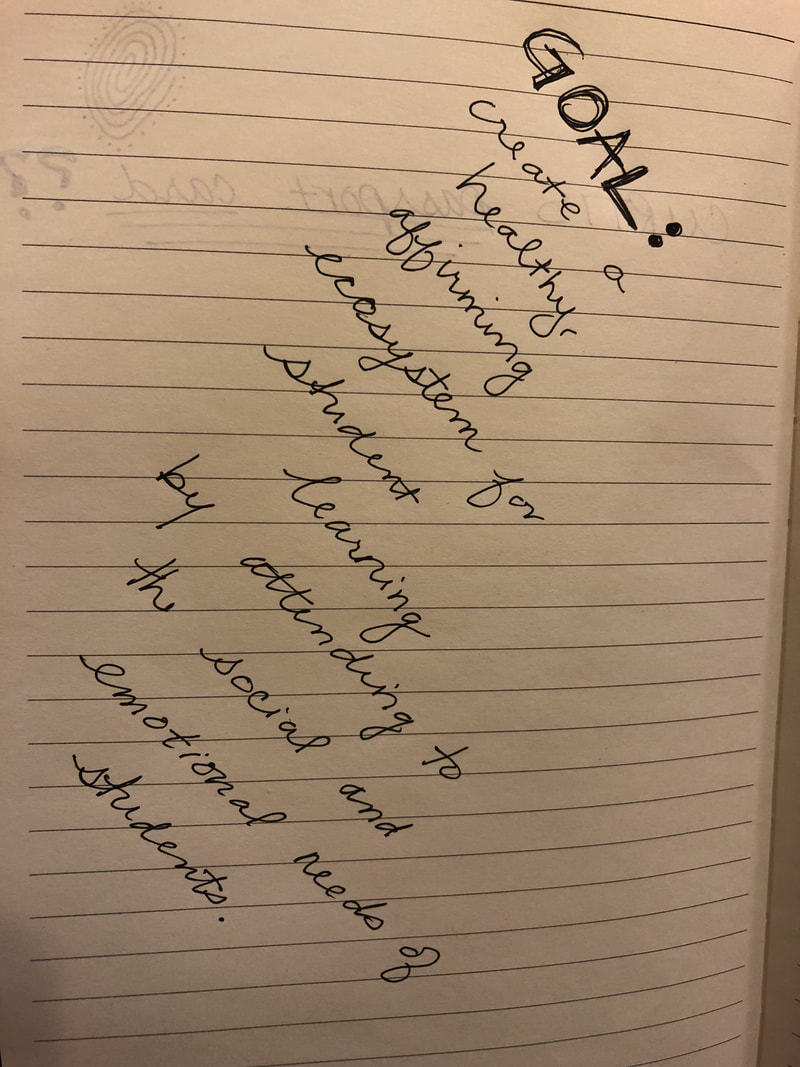 A page of my notes from Dr. Shrivers talk. A page of my notes from Dr. Shrivers talk. In addition, schools that have a SEL focus have significantly increased academic performance, decreased risk of failure and increased attendance rates. A focus on SEL does not need to come at the expense of content curriculum. It’s not either-or. Rather it is a choice for providing a high quality education or to have indifference to the facts. For those who feel that social and emotional learning doesn’t belong in a classroom, HOLD UP! Don’t we want to produce graduates that are employable? Isn’t workforce development a priority of schools? Well, guess what! Social and emotional learning increases employability! In fact, the Futures of Jobs report by the World Economic Forum includes top skills that are social and emotional competencies. SEL includes the ability to think critically and solve problems, communicate effectively, collaborate and resolve conflict and be a lifelong learner, all skills that will be vital for the future workforce.
Last week was “Capitol Hill Ocean Week” (CHOW)and the National Marine Sanctuary Foundation hosted a series of events to raise awareness around ocean systems, pollution and protection. I was able to attend three events that I found both educational and inspirational.
The first event was a pop-up exhibit on the National Mall called the Ocean Plastics Lab. The exhibit was sponsored by NOAA to showcase the global problem of ocean plastic pollution. Four shipping containers were modified for the exhibit so that the public could learn about the problem of plastic in our ocean. There was a lot of sample waste from ocean plastic and marine debris, interactive displays about the effects of plastic on marine life.
Fellow fellow Kelly was volunteering at the LUCid display, an interactive experience that is traveling with the Ocean Plastics Lab. Wearing a biosensor headband, volunteers control the video display. Apparently, in a more meditative state of mind the imagery shifts from swimming through plastic in ocean waters to seeing whales in clear water. I was pretty good at getting into a zen state!
The other two events I attended for CHOW were scientific talks about the status of ocean ecosystems. I went to sessions that related both to my personal interests and content that is part of the IB Biology curriculum I teach. The first session was titled, “Recovering Coral Reefs.” I’ve had an interest in coral health ever since I traveled to the Bahamas in 2009 to assist with a coral reef survey. Covering less than 1 percent of the ocean, coral reefs support 25 percent of marine life globally to provide an estimated $1 trillion in value to the world economy, including $300 to $400 million annual in value for food and livelihoods from tourism, fisheries, and medicine. Reefs are integral to the livelihoods and well-being of billions of people. But, we risk losing these valuable ecosystems. Nearly 75 percent of the world’s coral reefs are threatened by overfishing, habitat destruction, water pollution, climate change, and ocean acidification. Efforts to conserve and restore coral reefs are lagging far behind their rate of destruction. To preserve this amazing biodiversity, we must protect these valuable ecosystems and develop new conservation solutions and restoration techniques to protect these invaluable ecosystems.
There was a discussion by a panel of three scientists who monitor coral reefs. Greg Asner from the Carnegie Institution for Science studies global ecology and earth systems using remote sensing via satellite or airplane. He observes and maps coral reef fragmentation in effort to determine where restoration efforts should be focused. Erinn Muller is a coral health and disease scientist with the Mote Marine Laboratory in Florida. Documenting coral decline was understandably depressing for her, so she now focuses on recovery of reefs, by “outplanting” genetically variable and disease resistant coral starters. Early results suggest the outplanting effort is working, and her goal is for another 50,000 outplants next year however the program’s success will depend on the government response and dedication of funds for research and restoration of reefs. Luiz Rocha is an ichthyologist with the California Academy of Sciences. He studies mesophilic coral reef ecosystems; these are deeper reefs (200-500 ft). With each dive he discovers new species because these deep reefs are unknown and unexplored. However, the reefs are still at human induced risk. Recently he found plastic on the reef, brought to the depths when a hurricane passed through the region.
The three scientists all communicated a vision of hope and a desire to scale up the restoration projects occurring at a local level to a more global scale. The effort will required international collaboration between nations, increased funding, public-private partnerships and a continued reliance on solid science. Members of the public who support these efforts should amplify the message via social media, influence others, decrease use of plastic, and encourage governments to address climate change. #oceanoptimism
In this session, I learned how states are coping with local effects of ocean acidification as state and federal policymakers draft legislation to mitigate and adapt to ocean acidification. My home state of Washington has been particularly affected by acidification, and I was able to make some personal connections to the impacts of acidification. In fact, the University of Washington now hosts the Washington Ocean Acidification Center within the College of the Environment.
The panel include experts from a diverse set of perspectives. Jan Newton is an oceanographer in the Applied Physics Laboratory at the University of Washington School of Oceanography and School of Marine and Environmental Affairs. Karina Nielsen is a biologist and the director of the Estuary and Ocean Science Center at San Francisco State University. Nichole Price is a research scientist and director of the Center for Venture Research on Seafood Security at the Bigelow Laboratory for Ocean Sciences. Joseph Salisbury is a research professor of Oceanography at the University of New Hampshire and Brett Veerhusen is the head of Ocean Strategies and is an Alaskan commercial fisherman.
As with all my experiences as an Einstein Fellow, I am so thankful for my opportunity to be here, learning and engaging with issues of concern that resonate with me. I will take my learning back to the classroom for my students benefit.
I was able to visit “the other Washington,” my actual home state of Washington during the first week of April. Coinciding with my grandmother's 90th birthday celebration, I planned a trip to check in with my home school district and visit the Pacific Northwest National Lab (PNNL). The PNNL is located in Richmond, which is east of the Cascade mountains, about a three hour drive from where I live in a suburb of Seattle. I had never visited the lab, so I was excited to have the opportunity via the Einstein Fellowship. The PNNL has a staff of 4500 people, who work together with a multidisciplinary approach to solve “big problems.” The lab prides itself on maintaining solid partnerships with academic, industrial and government stakeholders while focusing on four scientific missions:
My visit of the lab focused on the biological and computational sciences. I was amazed by by visualization and interaction studio. According to the documentation I was provided, the studio features the work of a team of, “visual analytics researchers who love making big, complex data useful through great visual design, compelling interaction, support for sound analytic methods, and solid engineering. We invent new visual metaphors, create analysis algorithms, and deliver software products that put useful analytic capabilities into our users’ hands.” I was able to interact with some of the data visualization tools, such as the Visual Patent Search, data mining challenges, active data canvases and virtual reality interfaces. My favorite experience was being able to use virtual reality to zoom and manipulate biological molecules. I honestly felt my life was complete after I had “walked” through a DNA strand. As with the other Department of Energy national labs, the PNNL hosts interns from various educational experiences and backgrounds. I had the pleasure of meeting two high school students who are interning at the facility; one in a soil bacteria lab and the other in a 3D microscopy imaging lab. The students shared their interests and work with me, and I was once again reminded of the incredible impact that “real life” experiences and learning have on high school students. In my experience, the students are clamoring for opportunity to engage in scientific research. Unfortunately the limiting reagent seems to be the number of scientists and/or research facilities who are willing to engage with high school student internships. I am looking forward to sharing what I learned at the PNNL with my students when I return to the classroom next fall.
It probably doesn’t come to a surprise to anyone that I love the Smithsonian National Museum of Natural History (NMNH). Each time I visit I am able to learn more about the natural world and the role of museum collections in the preservation and study of biological samples from around the world. So, for my “First Friday” (a monthly gathering of the Einstein Fellows, planned by a different person each month), there was no doubt that I was going to try to get our group behind-the-scenes of my favorite D.C. museum. Luckily, I was able to make a connection to a NMNH scientists via a different scientist with which my students and I had volunteered in the past. In 2017 my students and I volunteered on a project in Costa Rica during which time we learned about the complex relationships between caterpillars, the plants they eat, the parasitoids that eat them, and the changes in climate that are reshaping the rainforest. The community of caterpillar scientists is rather small, and the principal investigator on that project was able to e-introduce me to Dr. John Brown, entomologist extraordinare with the NMNH. I reached out to Dr. Brown early in the fellowship about the possibility of being given a behind the scenes tour of the entomology department at the museum. I am so thankful that Dr. Brown was willing and eager to host our group. The tour was SO COOL! We focused on the Lepidoptera collection, the butterflies and moths. The Lepidoptera Collection has over 4 million specimens, occupying over 30,000 drawers in metal cabinets that stretch as far as the eye can see! The museum has the most complete representation of both larvae (123,000 specimens) and adults in the Western Hemisphere plus samples from the nearctic, palearctic, neotropics and far east. Dr. Brown is a USDA research entomologist, so his research primarily focuses on insects that are of economic importance to American agriculture. Dr. Brown did a great job explaining why an understanding of insect taxonomy, natural selection and basic biology are important in protecting and understanding national and ecological interests. After our tour, I lead a session with the Fellows about using creativity and visual arts as a way to increase student engagement and to teach observation skills. We had fun creating visual displays of the favorite insects we had seen on the tour. I also attended a public session at the NMNH about assassin flies, hosted by Dr. Torsten Dikow. I was the only one there (!) so Dr. Dikow and I had a great chat about his career path and his work as the Curator of Diptera (flies) at the museum. Dr. Dikow focuses his work on the phylogeny and revisionary taxonomy of asiloid flies. These are incredible flies (7500 different species) that catch and eat other insects IN FLIGHT! They have mouthpieces adapted to stab the pray, release venom and suck in the nutrients! Some of them even mimic bumble bees in appearance, thought to be an adaptation for avoiding being eaten by birds. It’s really been a gift to have had the opportunity to meet these scientists and I am very appreciative of their patience with a curious biology teacher who keeps asking a lot of questions!
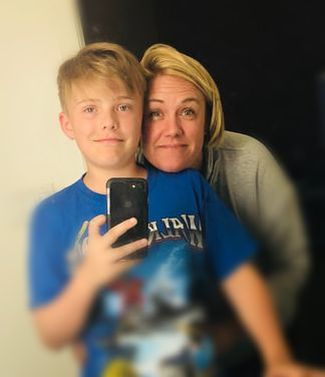 The kid and I. The kid and I. When I first applied to be an Einstein Fellow, I was open to the prospect of a Capital Hill placement. However during the interview weekend (February 2017) I learned more about the requirements of being in a congressional office and realized that the time commitment wouldn’t work with my family situation. Since my husband travels 100% for his job and we have a early-adolescent son, I knew I needed the flexibility to arrive to work early and leave early enough in the evening to get home, make dinner, help with homework and drive to sports practices. It wouldn’t be fair to my son and it would be hard on me to to be in Washington D.C. without a support network to lean on when I needed to manage our busy (sometimes competing) schedules. A congressional office placement couldn’t provide the flexibility I knew I would need. Luckily, at the interview weekend I was asked if I would be interested in a placement within the Office of Science in the Workforce Development for Teachers and Scientists (WDTS). Obviously I said yes, and was awarded the fellowship! I am so grateful for being placed in this office as it has allowed me the opportunity to develop my knowledge in both the scientific and policy realms while having the flexibility to focus on my #1 priority of being a good mom to my kid. 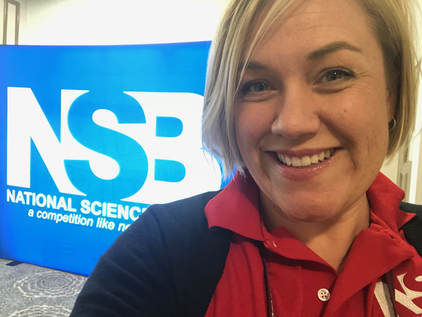 Within the WDTS team, a focus of my duties has been assisting with the National Science Bowl. I didn’t know much about the National Science Bowl when I accepted the fellowship and as such it was a quick and steep learning curve for me. The program is run by an incredibly dedicated and organized federal employee who has help from a loyal team of regional coordinators, alumni and volunteers. My role as a fellow was to help as needed and not get in the way! In the fall, I was tasked with looking for ideas to enhance the National and Regional Science Bowl programs and websites by researching other academic competitions. I explored the websites of twenty academic competitions and compiled a report on the features of the other academic competitions that I found to be especially engaging, helpful or interesting. They were not true suggestions or recommendations, as I am not privy to all of the restrictions placed upon a federally funded program or limitations on website development and hosting. However, perhaps the features I suggested can serve as inspiration in future website development or program design changes. I also reviewed questions for the regional competitions and the national finals. A team of subject-matter-expert question writers submits questions, which are then reviewed and reviewed and reviewed and reviewed again to ensure content accuracy and format conventions. I focused on the middle school life and physical science questions and the high school biology and chemistry questions. It was tedious but also an incredible learning opportunity. I often found myself exploring academic tangents, getting deeper and deeper into a web of facts, structures, functions, reactions and equations. It was awesome! At no other time in my life have I had the opportunity to just sit and learn more about the classification of aseptate fungi or the standard-state free energy of formation calculations! I had other tasks for Science Bowl, including the development of a Snap Chat filter, updating the National Science Bowl Facebook page with review questions and relevant news articles, proofreading team biographies and assisting with the packing and organizing of materials. I also updated some of the Powerpoint presentations and assisted with volunteer recruitment for the national finals. Shout out to my fellow fellows (!) David, Michael, Evan and Jennifer for making time in your schedules to volunteer! Leading up to the National Science Bowl finals, there were over one-hundred regional science bowl competitions around the country. I was able to attend three of the regional events: The Maryland/DC high school regional, the Maryland/DC middle school regional and the Brookhaven National Laboratory Regional High School Science Bowl. The student participants were really fun to spend the day with; often crazy-smart kids who have found like-minded friends through academic competitions. The game-play, strategy, pace and intensity of the competition was fun to observe. The National Science Bowl finals were at the end of April. The winning middle and high school teams from each of the regional competitions flew to DC to spend Thursday through Monday touring, learning, laughing and of course, competing! On Thursday I had the pleasure of spending a full, long day greeting teams at the Reagan airport; it was fun to meet kids and teachers from all over the United States and territories. Teams from as close as Maryland and as far as Alaska were arriving at the airport. On Friday, while the middle school teams were exploring the National Mall, the high school students were participating in the “High School Science Day” which was a series of speakers and breakout sessions with a focus on cyber security. Secretary Perry spoke with the students and encouraged their continued education and eventual career path in STEM fields. He created an analogy between the competition of the National Science Bowl and the competition the United States is in with other countries. OK. On Friday afternoon I assisted with the high school Division Team Challenge activities. Teams of high school students complete hands-on competitive tasks. The scores earned in the challenges will serve as tie-breakers at the end of the round robin rounds, if necessary. I had worked with Jeff Dilks, former Einstein Fellow, to prepare the tasks and it was fun to see them in action. This year the tasks involved determining the efficiency of a bouncy ball rocket, estimating thread counts using wavelengths and optics, determining the coefficient of restitution between dropped balls and different floor types and estimating the pressure developed in a potato gun before it is shot. It was clear that some teams were overwhelmed with the challenges and didn’t know where to start, whereas other teams knew immediately how to begin addressing the problem. Saturday, while the high school teams had their time at the National Mall, the middle school students were having their academic competition. I served as a “timer” during the round robin rounds, ensuring that the toss-up questions were answered within the five second limit and that the bonus questions were answered within the twenty second limit. I was responsible for planning and leading sessions for the middle school students on Saturday afternoon. After being eliminated from the competition, the student teams participated in a "Middle School Enhancement Activity." Knowing that the kids would be physically and intellectually exhausted, I created an engineering challenge for the student in which they had to design a "Wacky Monster Transporter." It was chaotic and fun for the students and I! On Sunday I was responsible for planning and leading sessions for the middle school coaches while the students were participating in a Cyber Challenge. It was great to be working with "my people" (other teachers) and to again be facilitating a professional development session. The coaches were receptive to engaging in an engineering design challenge - designing a catapult to fling a marshmallow. As is typical with design challenges, the teachers had grand plans for how far the marshmallows would move, and the reactions when we measured distances in centimeters rather than meters led to a great laugh. Here's a link to a Padelet with team photos and marshmallow flinging distances. Middle School Coaches at building marshmallow launching catapults! The final round competitions were the culmination of a lot of hard work by a lot of people. The pomp and circumstance of the event is justified, as the student competitors certainly do represent some of the brightest, quickest intellects in our nation. It was a pleasure to have played my little part in the Science Bowl this year and I hope to remain part of the science bowl family for years to come.
This past week the Einstein Fellows went to the Eisenhower Executive Office Building next to the White House to meet with Dr. Jeff Weld. Dr. Weld is serving as Senior Policy Advisor in STEM Education for the White House Office of Science and Technology Policy. He is tasked with writing an assessment of the STEM education 5-year strategic plan that was authored by the the Committee on Science, Technology, Engineering and Math Education (CoSTEM). CoSTEM was established by the Obama administration in 2011 with, as outlined in the Charter of the Committee, the purpose of coordinating Federal programs and activities in support of STEM education. The five year plan created in 2013 and focused on the following STEM education priorities:
In addition to evaluating the Obama administration 5-year STEM education plan, Dr. Weld will facilitate the authoring of the next STEM education 5-year plan (2018-2013). That's where the Einstein Fellows came in; we were asked, "What new emergent stem priorities should be in the plan?" I certainly recognize that we are just a piece of the "input pie," however a group of highly informed, educated and respected STEM educators might be just the people to ask this question and actually listen to and incorporate our responses. Honestly, I am not sure if that happened... but time will tell. At least we had a seat at the table ("If you're not at the table, you're on the menu..."). Our discussion focused on the “High Frequency Aspirations for STEM Education Aligned to Administration Goals.” This was a DRAFT list of the ten STEM education priorities that are bubbling to the surface as being goals of the Trump administration STEM Ed 5-year plan. I'm just going to say it here: these priorities do not fully align with what I view as most important in STEM education. That doesn't mean they aren't good, worthwhile goals - it's just not what I would prioritize if I was the boss. But, I digress... (priorities tend to shift based on political affiliation). The group of Einstein Fellows immediately noted that there is no mention of STEM teacher recruitment or retention in the DRAFT plan, which is interesting since that was the #1 priority from the previous plan. There is mention of ensuring access to high quality educators through digital platforms (like watching teachers remotely on a screen, Khan Academy type videos were mentioned in the discussion) ...but really?! A digital teacher shouldn't be the ASPIRATION. The aspiration should be an excellent, high quality STEM educator providing context relevant instruction while building meaningful, impactful relationships with students. Given that the Aspirations for STEM education needed to be aligned with administration goals, I was curious as to exactly what those goals actually are. From what is presented on the the White House Office of Science and Technology Policy website, the Trump administration prioritizes "American Military Superiority”, “American Security,” “American Prosperity,” “American Energy Dominance,” and “American Health." There is also a theme of increased reliance on the private sector to fund research, development and commercialization of technologies in the prioritized fields. These priorities are intended to receive special focus in agency budget requests and as WH initiatives. The Trump administration states that it will continue the federal government's commitment to STEM education and apprenticeship programs. In fact, the R&D priorities memo (August 2017) states, “Emerging technologies will present tremendous opportunities for new job creation, but will also require a technically skilled and capable workforce to meet demand. In order to maintain American competitiveness and help ensure that the domestic workforce is available and qualified for the jobs of the future, agencies should incorporate STEM education, including computer science education, and workforce training opportunities into their programs. Agencies should give priority to policies and actions that place an emphasis on expanding the STEM workforce to include all Americans, for both urban and rural, and including women and other underrepresented groups in STEM fields. In order to track improvements in these areas, agencies should develop quantitative methods or metrics and collect data to analyze the effectiveness of the STEM programs.” Of interesting note is the focus on learning STEM for workforce development purposes only. The "High Frequency Aspirations" document made no mention of learning for curiosity, knowledge of societal issues or for the importance of an informed electorate. Again, perhaps a party line division here, but I strongly believe that public education does not have the sole function of workforce development. Yes, workforce development is important and is a consequence of high quality STEM education, however I personally think the primary focus of education should be sustainment of a democracy with informed, educated citizens. I definitely learned a lot at our two hour meeting at OSTP and I hope that the cynicism I felt as I left the meeting is proven to be misplaced and undeserved. I am thankful for the Einstein Fellowship and the opportunity to add depth to my understanding of the complexities of federal STEM education initiatives and priorities.
So few teachers who specialize in a discipline ever have the opportunity for professional development that focuses on the content of the discipline. For example, I teach biology and I love biology, but until this fellowship year I haven't had the time, money or opportunity to focus on learning more BIOLOGY. I've been to plenty of conferences and district sessions about how to teach biology, but not had the opportunity to actually focus on advancing my own biological content knowledge. Now don't get me wrong, I am not suggesting that my biological knowledge hasn't advanced since I graduated with my biology degree nearlytwenty years ago; far from it. I make a concerted effort to remain up to date in the field. For example, I am a biology news geek, I am sure to take time daily to read the newest articles about advances and discoveries (which I share on Twitter #ibbio and post to my website topic pages). For me, probably the best part of being an Albert Einstein Distinguished Educator Fellow is the opportunities I've had to advance my own biological content knowledge and to witness firsthand the scientific process in action. I've previously written about a couple of these opportunities. This week I was able to attend the Synthetic and Artificial Cells workshop, a gathering of about 25 cell biologists from the USA and Europe who are interested in building an artificial cell or models of cellular processes in order to understand the nature of how cells work and to develop applications such as pharmaceutical drug delivery systems. As the National Science Foundation deputy director for Biological Science said in the introduction to the workshop, "we've spent decades taking cells apart; now we need to determine how to put it all together." Some big idea questions can be answered by trying to make synthetic cells (or cell processes ex vivo):
Throughout the conference I took lots of notes. I was especially intrigued the some of the conversations that mimic those held in my classroom. Questions such as:
There are two main approaches to creating synthetic cells, the "top down" approach and the "bottom up" approach. Some of the researchers (i.e. Dr. Hutchinson) were focused on one approach while others were focused on the structures and functions of sub-cellular components. A highlight of the workshop was hearing from Clyde Hutchison, a well known and respected biologist from the J. Craig Venter Institute. Dr. Hutchison discussed his teams progress on creating a minimal bacterial cell which contains only the core machinery for life. Following a "design --> build --> test" model, the team is systematically removing genes from Mycoplasma bacteria and observing the phenotypic effects on the cells ability to sustain life. They started with a bacteria that contained 901 genes (1079 bp) and by "Syn 3.0" have created a living cell that now has 473 genes (531 bp). Fascinatingly, the minimal viable cells contains 65 genes that are essential for life but who's function is unknown! Additionally, the implications of OMNIGENIC was discussed. The idea of omnigenics is that in reality, no single gene has a single function - there is complexity in the interactions of the genes and gene products. Proof that we still have a lot to learn in biology. Dr. Hutchison was sure to use language to suggest his team had created "A" minimal cell, not "THE" minimal cell. The genome required of a minimal cell will depend on the medium on which the bacteria is growing. In other words, a minimal cell genome size for a bacteria grown in one media will be different than the minimal cell genome size for a bacteria grown in another media. That said, the minimal cell as described by Dr. Hutchison was a big breakthough and will continue to influence the future of the field. The J. Craig Venter Institute is using a "Top Down" approach to building a minimal cell. All of the other presenters at the workshop were focused on a "Bottom Up" approach in which they were focused on creating synthetic or artificial structures and/or processes of cells. There were scientists who focused on the INFORMATION aspect of a cell (cell-free transcription and translation) and others focused on the SELF-ORGANIZATION (creating artificial cell membranes). One thing I learned was about cellular compartmentalization. I had learned, and the IB Biology curriculum suggests, that prokaryote cells aren’t compartmentalized. However, I heard multiple times over the course of this conference about prokaryote compartments (not necessarily membrane bound). For example, one person said “In prokaryotes, the nucleiod is considered a phase separated compartment.” I was curious about phase-separation, so I looked it up and found this great summary. Throughout the workshop there was a vigorous dialogue between the scientists about the nomenclature around the terms minimum, synthetic and artificial in relation to biology and bio-engineering. It was clear that I was witnessing the birth of a new scientific discipline. I summarized a full page of my take aways from the sessions:
Thanks to the Einstein Fellowship, many of the current Fellows were able to attend the ASCD Empower18! conference in Boston. Having never been either to Boston or to an ASCD conference, I loved the opportunity to learn and see new things! The ASCD conference is unique because it pulls from a wide variety of education stakeholders. There were district superintendents of major USA urban districts sitting next to kindergarten teachers from rural Canada. Everyone was there to share ideas and learn about how to best serve children, from individualized instruction with kids to whole school and district approaches benefiting the "whole child." The Einstein Fellowship had a booth in the exhibition hall and presented an "Ignite" style presentation at a showcase event. I happily volunteered my time as a "booth babe," however most of the conference was self directed professional development. Some highlights for me included: Opening Remarks by Jill Biden Dr. Jill Biden has dedicated her work to highlighting the importance of education, sacrifices made by military families, and issues surrounding women's health. As second-lady of the United States, she managed all this while continuing to teach as an English professor! Multiple Intelligences in the Classroom About 35 years ago, Howard Gardner shook up the education and psychology worlds with his book Frames of Mind, where the multiple intelligences (MI) were described in detail. MI has been criticized and marginalized by traditional psychologists and the education establishment. Despite efforts to discredit it, MI remains one of the most influential educational theories around the world. This session focused on the legacy of MI that has inspired so many to teach for "human potential" and of the benefits of diversifying instruction as a good pedagogy technique. As the session presenter, Thomas Armstrong said, "MI is a hypothesis about how the mind works, not a classroom strategy, however, using MI often results in high quality instruction because students enjoy learning." Discussing to Learn; Learning to Discuss This session focused on classroom discussion is both a means and an end to student learning. When students speak, listen, and pose questions, they are able to make connections and clarify understandings—both of which contribute to long-term retention and deepening of knowledge. As they learn these skills, they enhance their ability to engage with others in a respectful and productive manner. The presenters modeled good instructional techniques by having the members of the audience engage in dialogue and active, hands-on learning as we explored strategies for use in scaffolding active and respectful listening, thoughtful speaking, and purposeful questioning; honoring norms that contribute to a culture supporting open and respectful dialogue; and approaches for partnering with students to create new roles and responsibilities. What We Say (and How We Say it) Influences Student Learning Teacher words and tone matter. Have you ever said to a student, "I love the way you're working so hard!"? How about, "Here are the three things I'll be looking for in this next piece of work."? Or perhaps you've said, "If you all work really hard for the next 30 minutes, we'll finish class with something fun!" You probably have—we all have. Even though these statements (among many others) are used with the best of intentions, they might actually lead students to disengage and learn less! In this session, I learned about several common language habits and patterns that many educators find themselves in and had a chance to explore better alternatives. More information can be found here. The Power of the Adolescent Brain Of all the sessions I attended, this was probably my favorite because it occurred at a time when adolescents were taking to the street to "March for Our Lives," and serving as the primary drivers of a social movement. To me, such behaviors proves that the adolescent brain is crazy; it's a powerful brain that can be used for a lot of good. I think I most love working with teenagers because they are passionate, committed to causes and idealistic. Also, as a mom of a young adolescent, I appreciated the reminder of the biology occurring within the brain of a person I love like no other. “This is the time when they need the most love, but are often the hardest to love.” The session started with an inventory for participants to review their own adolescence experience and then share it with a partner. Then, the presenter and author Thomas Armstrong shared eight key neuroscience findings about the adolescent brain which all secondary school educators need to be familiar with and eight "adolescent brain friendly" classroom interventions based on those findings. These interventions included giving teens choices in their learning; providing them with self-awareness activities for their burgeoning identities; creating peer-learning connections; integrating affective learning, expressive arts, and kinesthetic approaches into the curriculum; using metacognitive strategies; and providing real-world experiences to help prepare adolescents to live independently as future adults. Dr. Armstrong also discussed 10 ''adolescent brain hostile'' strategies currently in use by many secondary schools that subvert teenagers' developmental needs. In fact, adolescence might be the time when the brain is most vulnerable to the stress response. As Dr. Armstrong pointed out, "stress does serious damage to their pyche and brain.” How to REACH Youth Today Relationships are the foundation upon which all great learning takes place. Manny Scott, original Freedom Writer and founder of Ink International Inc., presented a keynote address exploring how to cultivate healthy relationships with students and all youth so that they can excel in school and come out prepared for work and life. By sharing life-changing lessons he has learned from teachers and loving adults who helped him and from the work he has been doing with kids for the past 18 years, Scott expressed how, together, we can transform our schools into safe, positive environments where all adults are equipped to reach kids and all kids are empowered to reach their destinies. This session was a reminder of the incredible power every adult has to help young people flourish. For me, two take away quotes were: “If I can help others, than my living is not in vain.” "Even on your worst day you can still be someone’s best hope.” It was great to be in Boston with many of the other Einstein Fellows. We got to spend some time together in the city and at the conference. One of the best aspects of this fellowship has been meeting other educators from around the country. I am thankful for them and for the network we have built.
I am serving my year as an Einstein Fellow with in the Office of Science in the Department of Energy. As quoted from the SC website, the Office manages “Advanced Scientific Computing Research, Basic Energy Sciences, Biological and Environmental Research, Fusion Energy Sciences, High Energy Physics, and Nuclear Physics." In addition, the Office of Science manages and supports additional programs and activities, including: the Workforce Development for Teachers and Scientists program (the group in which I am placed), the DOE Small Business Innovation Research Small Business Technology Transfer programs, and the Office of Project Assessment. The Office of Science is the largest funder of physical science research in the United States. As a biologist who has a comfort level that spans from the atomic to ecosystem levels of organization, the discoveries of the Fusion Energy Sciences, High Energy Physics and Nuclear Physics offices actually kind of blow my mind! I've learned a lot, and readily admit that I needed to Google search to help me comprehend some of the terms I've been learning and how they connect to the parts of matter that I recognize! I am definitely thinking of my IB physics teacher friend/colleague and how she would love to know what I am doing right now! The Office of Science is also the steward of 10 of the 17 DOE laboratories; these 10 laboratories provide essential support to the missions of the Office of Science programs. One of the benefits of being an Einstein Fellow placed in the Office of Science is the ability to visit some of the national laboratories. I have been to Brookhaven National Lab (on Long Island, NY) and will soon be visiting Pacific Northwest National Lab (in Richland, WA). I would like to get to two more labs before my fellowship is complete.
As a high school teacher, I was curious about what skills and attributes they most desire in undergraduate and graduate students applying for internship positions at the lab. The list of descriptors included:
A highlight of my visit to Brookhaven was a visit to their National Synchrotron Light Source-II. The light source generates a intense X-ray, infrared and ultraviolet beams that are able to resolve images down to the nanometer scale. There are currently 19 running beam linesI had a wonderful discussion with one of their staff scientists about how the light source functions and its uses in the materials and biological sciences. As a result of my visit, I have a deepened understanding of the Nature of Science and the magnitude of effort required to learn about things at orders of magnitude beyond the visible. A synchrotron is a ring of electrons moving very, very fast (near the speed of light). Because of physics that I do not really understand, the circulating electrons emit photons which can be "peeled off" the ring, traveling at a wavelength of interest, into a beam line. Beam lines are the spokes that run tangent to the accelerator ring and contain a slew of impressive instrumentation that can focus the photon onto a sample for imaging. The NSLS-II currently has 19 functioning beam lines, each of which takes 5-6 years to get running. Because they are such massive investments of time and money there are just four synchrotrons in the USA. The one I visited has the brightest beam in the middle energy range and is primarily used to the study of materials science, such as the live functioning of batteries, semi- and superconductors.
One of the many benefits of being an Einstein Fellow is the opportunity (meaning time and money) to focus on my own learning. In my professional development plan for the year I have included a goal that, “I will strengthen my own scientific content knowledge so that students benefit from an added depth, breadth and interdisciplinary connections.” In alignment with the goal, I attended the annual conference of the American Association for the Advancement of Science (AAAS) in Austin, Texas (14-19 February, 2018). AAAS is the world’s largest multidisciplinary scientific society, and publisher of the renowned journal “Science.” I had never been to Texas and was excited to explore a new place. The timing of conference aligned with a break in Curtis’s work schedule, so we had the added benefit of being able to spend some time together as a family. While I “conferenced” during the day, Curtis and Carrick were able to explore the region around Austin, including going to the Longhorn Cavern State Park (for some cave exploration) and to visit friends and Ferrari’s at the Circuit of the America’s racetrack. Together we were able visit the Waco Mammoth National Monument to learn about the nation’s only recorded discovery of a nursery herd of Columbian mammoths, view fossils of the mammoths and other ice age era animals. The AAAS conference was interesting because the session topics were so varied and interdisciplinary. My schedule was packed full of sessions related to my specific interests in the life sciences, scientific communication and education research. One of the most interesting sessions I attended related to LIFE SCIENCE was called “Modifying the Microbiome for Life Long Health.” This was a composite session, with multiple scientists presenting on the same theme, the human microbiome. On a cellular level, we are only 43% human. An adult human is estimated to be made of 30 trillion human cells and 39 trillion microbial cells! The federally funded Human Microbiome Project is currently working to get a snapshot of the microbes found in 250 healthy people at three time points, by sequencing the microbial DNA found at five sample locations: mouth, skin, vaginal, gut and fecal. While the results are still preliminary, a few preliminary conclusions have been found:
Also on the LIFE SCIENCE thread was a session I attended about brain plasticity and critical periods of learning. It was incredible to hear of the cutting edge research being done to study critical periods of learning and how to either extend these periods or reopen the window for learning. I learned that the closing of critical period is due to formation of a synaptic net, an extracellular network around dendrites which stabilizes neuronal connections. Plasticity can be restored if the synaptic net is removed, but with the risk of destabilizing neurons. Interestingly, a weaker synaptic net is correlated with symptoms of schizophrenia. Another session I attended was about, “Applying Conservation Genetics and Genomics to Wildlife and Fisheries Management.” It was super interesting to learn how genomics is being used to save species in zoos and in the wild by providing information about:
As a teacher, I was also interested in attending sessions related to LEARNING RESEARCH and PEDAGOGY. One of the most interesting sessions was about the shift in undergraduate biology courses towards a more active, engaging methodology of instruction. This is a major shift to the inertia of traditional undergraduate teaching, away from “sit and get” type of lectures to more dynamic and effective methods of instruction that utilize group work, case studies, discussion and student accountability. Interestingly, but honestly not surprisingly, is the measurable resistance by students to the new teaching methods. Students want the “lazy” way of doing school, even though they will admit (and data support) that they learn less via the traditional methods. A crosscutting theme of the conference was the importance and effectiveness of SCIENTIFIC COMMUNICATION. I attended a session called, “Alternative Facts and Fake News: How to advocate for science when data aren’t enough” with the focus on the need for scientists to communicate more than facts in an era of fake news. I was intrigued that the philosophy of rhetoric, persuasion and communication as originally presented by Aristotle seem to still have relevance today:
After waiting in line for two hours, I was able to get front row seats for the two conference plenary lectures. The first was by Katharine Hayhoe, a professor of political science and director of the Climate Science Center at Texas Tech University. She is an atmospheric scientist whose research focuses on developing and applying high-resolution climate projections to understand what climate change means for people and the natural environment. In addition, Katharine was the lead author for the Second and Third U.S. National Climate Assessments, with over 120 peer-reviewed publications that evaluate global climate model performance, develop and compare downscaling approaches, and quantify the impacts of climate change on cities, states, ecosystems, and sectors over the coming century. Ms. Hayhoe’s talk, called “When Facts are Not Enough,” provided an overview of the very simple, very old and very obvious climate science basics. Her lecture focused on the reasoning why some people who have no ideological problems with the idea of gravity, cells, or photosynthesis appear to have an ideological disregard for the equally supported science of climate change. Her thesis was that climate deniers actually most have a problem with the perceived solutions to mitigating climate change, not wanting the government to tell them what to do. Fear of solutions > Fear of impact Ms. Hayhoe’s explained that the primary predictors of climate change denialism are age and political conservationism. However, she went on to argue that it is a false dichotomy that you have to be a democrat to care about the planet. NO. In fact, all major religions have a care for the planet theme. “We care about climate change note because we are democrat or republican, we care because we are HUMAN.” So, what can scientists and science educators do? Ms. Hayhoe pointed out that arguing facts makes people more entrenched, that more information does not change minds. She argued that presenting only fear and doom and gloom will not sustain long term change, rather that we need HOPE to sustain us towards the future. She encouraged conference attendees to share stories, connect with people where you live, share impact AND solutions and most importantly to share their heart and passion to change the world. “It’s the passion that makes other people care about things.” The second plenary lecture of the evening was by former US Vice President Joe Biden. Biden led the White House Cancer Moonshot, which resulted in more than 80 new actions and collaborations from the public and private sectors to speed progress in cancer prevention, diagnosis, treatment, and care, and worked with Congress to authorize an additional $1.8 billion for investment in cancer research.
Mr. Biden’s presentation was called “Punctuated Equilibrium Meets Cancer: Big Promise Requires Big Change.” Punctuated equilibrium is the idea in biology that (in speciation and evolution) there are long periods of stasis followed by rapid burst of change. He argued that social change follows the same pattern; years of status quo can be interrupted abruptly to create a renewed society. Biden was specifically speaking about cancer research, prevention, treatment and cure, but I couldn’t help but follow the punctuated equilibrium analogy through to other areas of societal and political concern. The last government/civics class I took was 25 years ago, when I was a senior in high school. I did well in that class and have since tried to be an informed voter (especially around my core issues of concern). However, it's been a long time since I really took any deep dive into federal processes and policy. A benefit of the Einstein Fellowship has been my exposure and learning about the authoring of bills and appropriating of funds by our government representatives. I feel like during this fellowship I've earned a political science degree at a rate analogous to drinking water from a fire hose. During the September orientation, the Einstein Fellows were indoctrinated to federal education policy through written briefs and presentations (by Washington Partners, LLC) that provided a broad overview of the major pieces of enacted federal education legislation.
Given the renewal dates on these laws and lack of educational policy change looming in the field of view, a major take away for me is that education is not a priority of the federal government. Education was not a major topic of discussion during the 2016 presidential campaign and it continues to be on the back burner of federal policy concerns. Depending on your political leanings, this is either a "good or bad" reality. The majority of my fellowship experience has NOT been focused on educational policy. However, between January 21 and 23, I was able to attend the ASCD Leadership Institute for Legislative Advocacy. The goal of the three day institute was to expand the influence and voice of educators in federal legislative process. Honestly, I had to fight an internal fear of coming across as a "creepy lobbyist" because let's face it, in Washington, D.C. advocacy = lobbying. Luckily, the reputation of teachers as good people work care deeply for students and learning is strong. Very, very few people would say, "oh, there's a teacher.... She must be a horrible person." So, that's good! The stated goals of the sessions were for teachers to:
For me, an issue of interest is the status of Title II funding for teacher professional development. Title II is part of the Every Student Succeeds Act (ESSA) that funds professional development to teachers of every subject as well as all other school staff, such as librarians, counselors, and paraprofessionals. It also recognizes that educators learn best when they can collaborate and immediately apply what they learn by explicitly requiring ongoing job-embedded activities that improve instruction. Title II funding is also used for programs that recruit, train, and retain effective school leaders. Edweek wrote an article summarizing how states are using Title II funds to strengthen the teaching profession. As I write, the future funding for Title II programs is uncertain. Under normal order, the annual budgeting and funding process for the federal government begins with the president sending his budget request for the next fiscal year to Congress. Next, Congress crafts its own budget resolution and begins the appropriations process to determine funding levels for federal programs. However, our government is currently not operating under normal order! At the time of this conference, the federal government is being funded through a series of short term continuing resolutions. Even though it is already 2018, the 2018 federal budget has not been approved and the president, and the house and senate have very different proposed allotments for appropriating funds. So, Title II's future remains in doubt. The 2018 proposals are a maintenance of $2.1 billion dollars in the senate budget, and $0 dollars (NONE AT ALL, full elimination) in the congress and presidential budgets. I personally would like to see Title II funded. UPDATE: When the 2018 funding omnibus was signed into law in March (funding the government through September), the education community was pleased to see the majority of the programs at least level funded. Title II was not eliminated. The following lists the recent appropriates for Title II of ESEA (billions):
For me, one of the most rewarding aspects of being an Einstein Fellow has been the opportunity to deepen my own understanding of scientific principles and practices. I have tried to take advantage of any and all opportunities aligned with one of my professional development goals: "As an Einstein Fellow, I will strengthen my own scientific content knowledge so that students benefit from an added depth, breadth and interdisciplinary connections." Here's a sampling of some of the science learning opportunities I have had the chance to participate in as a Fellow: National Institutes of Health Systems Biology SymposiumIn October I attended the 2017 National Heart Lung and Blood Institute Systems Biology Symposium at the National Institutes of Health. The two-day conference focused on the latest research from five key areas of systems biology: single-cell systems biology, imaging-based systems biology, quantitative proteomics, systems biology of metabolism, and large-scale data integration. It was really incredible to be a fly-on-the-wall in a room full of research biologists as they presented results, questioned each other's methods, established research partnerships and engaged in academic discourse. I was able to learn some new things that I will be able to incorporate directly into my classroom next fall. I took pages and pages of notes! Georgetown University Mini-Med SchoolGeorgetown University offers a series of courses as "mini-med school." The weekly lectures follow the traditional disciplines that medical students encounter and that span a variety of topics related to biomedical sciences and health. The sessions I went to were: Amazing Things PanelAmazing Things is a podcast sponsored by United for Medical Research (UMR), a group of biomedical research advocates including patients, scientists, families, venture capitalists and members of the public. The goal of UMR is to increase dedicated federal funding dollars to the National Institutes of Health (NIH), the world leader in biomedical research. During a live recording of the Amazing Things podcast, NIH funded scientists shared their research innovations and discoveries. I was able to learn cutting edge applications of the biology I teach to high school students and gain further insight into the nature of the scientific process.
Science on the Sphere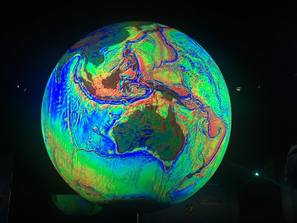 Our cohort of Einstein Fellows had the opportunity to visit the National Ocean and Atmospheric Administration (NOAA) "Science on the Sphere." The sphere is illuminated by projectors and is used to visualize 500+ NOAA data sets on a Earth-wide scale. NOAA data is collected from multiple sources, including low Earth orbit satellites, geostationary satellites, and ocean buoy networks. Together, the data allows us to develop understanding and models of Earth's weather, climate and and ocean behavior (including temperature, wave height, turbidity and salinity). Collectively, NOAA collects over 20 terabytes of data everyday, a figure that is incomprehensibly large. A highlight of the day was hearing from Dr. Walter Smith, a geophysicist with the Laboratory for Satellite Altimetry within the NOAA Center for Weather and Climate Prediction. Dr. Smith shared his educational history and how an man without a high school diploma can forge a path culminating in a model that allows prediction of ocean depth using gravitational distortion measurements collected using satellites. I was mesmerized by Dr. Smith's passion for ocean science, mathematics, modeling and science communication.
The National Student Clearinghouse (NSC) is a non-governmental organization that is able to pair high school graduate information with college registrar information to track student transition post-secondary and through college completion. They have access to data from 97% of the nation’s post secondary institutions and about 40% of the nation's high school graduates. Such a large data set enables comparison of college progression rates across state lines and dis-aggregation by high school characteristics (i.e. income, minority, locale). The NSC creates an annual Benchmark Report which includes data for:
Last week I attended a session at the US Capitol for a discussion of the Benchmark Report during which the following findings were shared: Students who graduate from schools that serve low income or high minority populations are less likely to start college in the first fall after high school graduation. Graduates from low income schools had the lowest "first fall" college enrollment rates. High school graduates in the class of 2010 that attended high poverty/low income schools had the lowest college completion rates. Although slightly more than 50% of kids from high poverty schools begin college immediately after high school graduation, less then 20% of the high school graduates will complete a college degree within six years post graduation. (This is the percent of students who earned a college degree out of ALL students who graduated high school, not just those who graduated and enrolled in college.) Given the nation's emphasis on STEM education initiatives, the National Student Clearinghouse (NSC) tracks college degree completion by STEM major. Across demographics, no more than 16% of high school graduates complete college with a major in a STEM field. Furthermore, students from low income schools who do graduate from college are less likely to earn a degree in a STEM major than other students. A further breakdown of STEM majors was shared, showing the distribution of fields of study among high school graduates from the class of 2010 who did earn a college degree in a STEM field. Interestingly, I learned that the social sciences (such as political science and sociology) are considered STEM fields. I personally wouldn't have thought so, but the National Science Foundation provides a list of approved STEM fields of study which includes the social sciences and psychology. As can be seen in the distribution of STEM degrees, the majority are in social sciences and psychology followed by biological and agricultural sciences. The least STEM degrees are awarded in Earth, Atmospheric and Ocean Sciences. I can't help but wonder if the structure of our K-12 school systems is a major contributing factors in these results.
"Good teaching cannot be reduced to technique; good teaching comes from the identity and integrity of the teacher." It's October, which back at my home school we consider the toughest month of the year. The novelty of the new school year has worn off and the day to day "grind" of teaching is in full effect. There are stacks of student work to assess, engaging lessons to plan, concerned parents to contact, letters of recommendation to write, staff meetings to attend and rooms full of students to teach. The Einstein Fellowship has afforded me the opportunity to actually breathe during the month of October and gifted me with the time to reflect on the joys and challenges of teaching. I've previously written that the public tends to value and support public schools and school teachers are often regarded as some of the most honest and ethical professionals. I am proud of being a school teacher and hold the work of teachers in very high regard. I agree with Dr. Richard DuFour in the book "In Praise of American Educators" who said, "Teachers need to be frequently recognized, genuinely appreciated, and respected for doing a difficult and complex job well."
I went to Google and searched up "network" and was most drawn to the definition of a network as "a group or system of interconnected people or things." I've written about the theme of "building a network" in a previous post and yesterday the Einstein Fellows met again as a group to add to our growing networks.
I am happy to have had the opportunity to add three additional organizations to my network. As an Einstein Fellow, I've had the opportunity to explore Smithsonian Learning Lab, AAAS Science in the Classroom and Discovery Education. The Smithsonian Learning Lab is a powerful platform for teachers to access more than a million digital resources from the Smithsonian collections. During our Fellowship orientation, we had the opportunity to explore the resources and curate our own collections. I built a collection to represent the Nature of Science learning statements in Topic 1 of the IB Biology curriculum. I found the platform to be user friendly and engaging and look forward to a deeper delve into the resources. AAAS Science in the Classroom curates primary research Science papers and makes them available for students. The articles can be viewed through different "Learning Lens" which facilitate the learning of the Nature of Science. Articles can be searched by keyword or found in thematic collections. It was a pleasure to spend a day learning about the resources, their alignment to the Next Generation Science Standards and chatting with other educators about classroom implementation of the resources. I will definitely be utilizing the SitC resources when I return to classroom teaching next year. Yesterday the Einstein Fellows had the opportunity to visit the Discovery Communications headquarters to learn about the STEM philosophy held by Discovery Education. Beyond Science, Technology, Engineering and Math, Discovery views STEM as a cultural attitude of "Student and Teachers Energizing Minds." As part of the #1 nonfiction media company in the world, Discovery Education is able to harness their vast collection of resources and connections to subject matter experts to offer streaming media, "techbooks", professional development, virtual field trips and so much more. I was motivated by the presenters (@stemboss and @STEMigo), especially their message of using stories to connect to students and teach content. I have always been a conscious story teller in my classes (even if sometimes students think we're going on a tangent...) as a way to build relevancy and interest about what I'm teaching. I'm intrigued with the idea of harnessing my own story as a way to grow my voice and expand influence within my networks.
Being an Einstein Fellow has afforded me the opportunity to engage in federal education policy much more deeply than I ever did as a classroom teacher. While I was familiar with laws that affected my students and myself, I was relatively disconnected from the policy realm. Being in Washington, DC has given me the opportunity to attend and learn from discussions and presentation about federal educational policy that directly influence classroom teachers in my home district and state. The first major federal K-12 public education law, the Elementary and Secondary Education Act (ESEA) was passed by President Johnson in 1965. Since that time, the law has been periodically reauthorized and has seen numerous changes, both in name and in mandates. Beginning in 1988, in order to receive federal block grant funding, states were required to include annual accountability measures (student test scores) and improvement plans. In 1994 (Improving America's Schools Act), schools began to be singled out for not making "adequate yearly progress" and in 2002 (No Child Left Behind Act) the testing requirements were significantly expanded and all teachers were required to be "highly qualified." In 2015, the ESEA was reauthorized as the Every Student Succeeds Act (ESSA). The Act passed congress with bipartisan support and actually narrows the federal government's role in public education relative to its predecessor (NCLB). While annual standardized testing is still required, the ESSA give states significantly more discretion over accountability measures, teacher quality, professional development, after-school programs and 21st Century Learning Centers. “The Every Student Succeeds Act will put an end to the one-size-fits-all mandates of No Child Left Behind. And it will end the era of state waivers. That will give teachers and parents in Washington state and across the country some much-needed certainty. Our bipartisan bill will also reduce reliance on high-stakes testing, so teachers and students can spend less time on test prep and more time on learning. I know that’s going to be a major relief for teachers and principals…” The ESSA Law is fulling going into effect during the 2017-2018 school year. States were required to submit ESSA plans to the US Department of Education by this fall. If you are curious, the state plans are all publicly available. Recently I attended a public meeting hosted by the STEM Education Coalition called "STEM in the States: Impacts of the Every Student Succeeds Act." At this event, a three group panel presented information related to how the changes in ESSA might impact STEM education.
EducationFirst aided multiple states in writing their ESSA plans. The following trends were noted:
The Afterschool Alliance described the high demand for STEM in after-school enrichment programs. Roughly 7 million kids benefit from after school and/or summer STEM programs, which excite interest, teach STEM skills and allow students to identify and value STEM in their lives. Battelle shared a case study of the impact of STEM focus in a school and their work to share effect STEM education work via states in their STEMx program. A question-answer session followed the panel presentations, with the following take-aways:
While the questions remain, there is no doubt that the education stakeholders will be advocating for what they believe to be best for kids, teachers and our nation's future. |
Archives
July 2018
|
I give many of my IB Biology resources away, for the benefit of students and teachers around the world.
If you've found the materials helpful, please consider making a contribution of any amount
to this Earthwatch Expedition Fund.
Did I forget something? Know of a mistake? Have a suggestion? Let me know by emailing me here.
Before using any of the files available on this site,
please familiarize yourself with the Creative Commons Attribution License.
It prohibits the use of any material on this site for commercial purposes of any kind.
If you've found the materials helpful, please consider making a contribution of any amount
to this Earthwatch Expedition Fund.
Did I forget something? Know of a mistake? Have a suggestion? Let me know by emailing me here.
Before using any of the files available on this site,
please familiarize yourself with the Creative Commons Attribution License.
It prohibits the use of any material on this site for commercial purposes of any kind.


